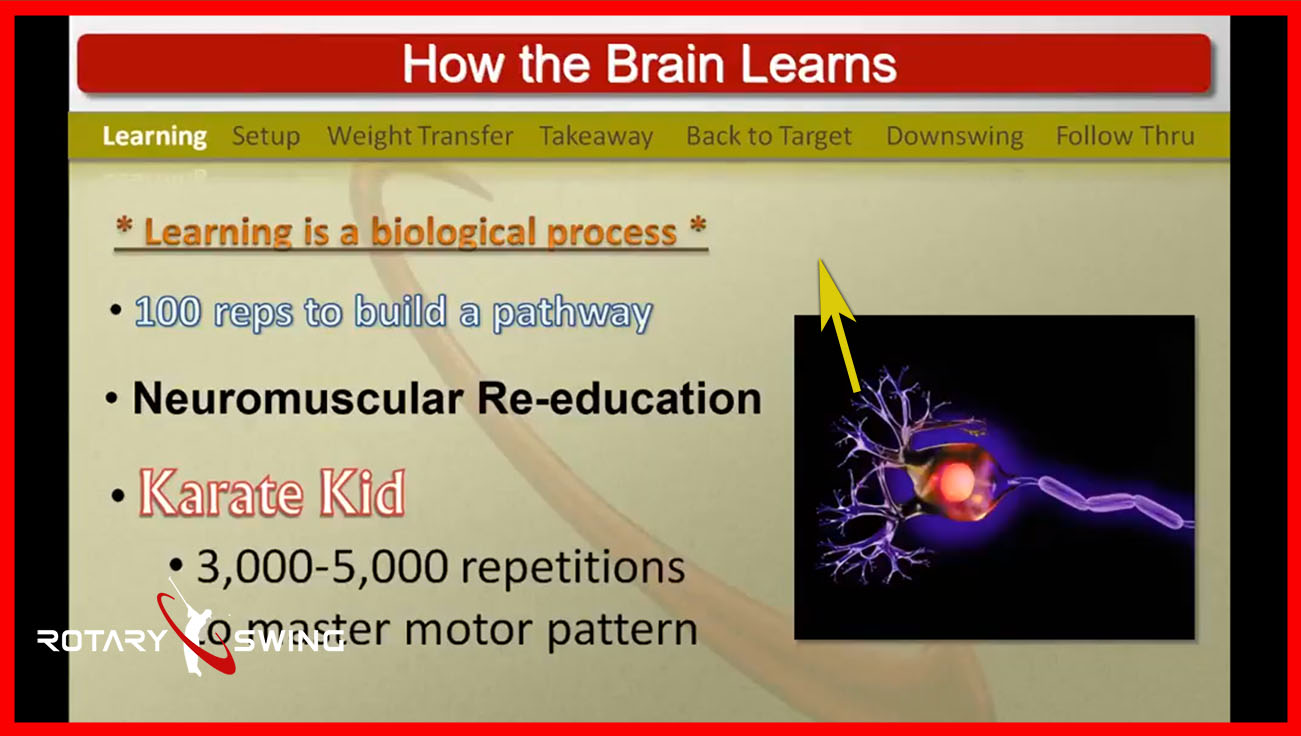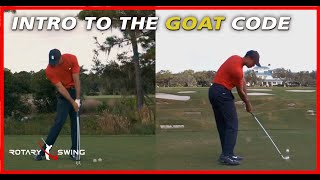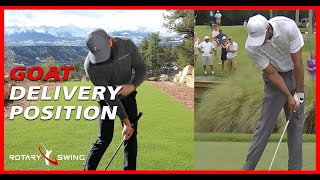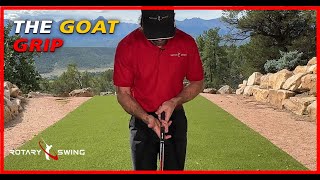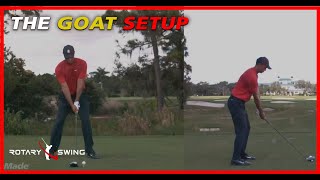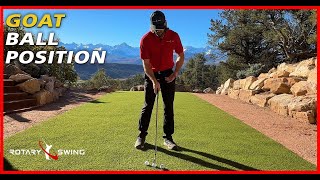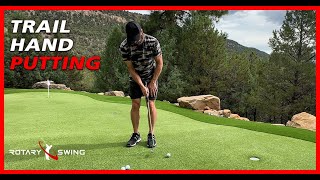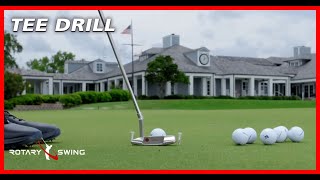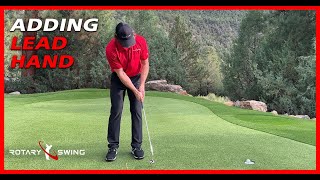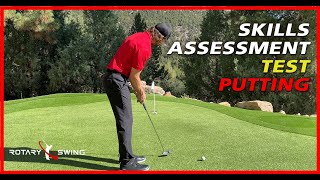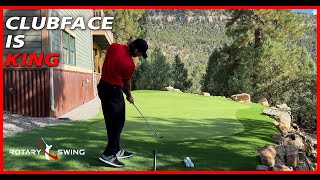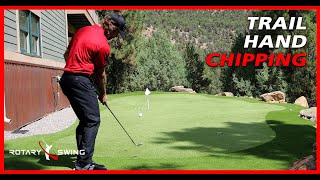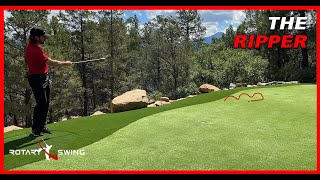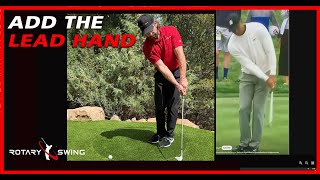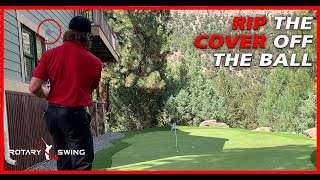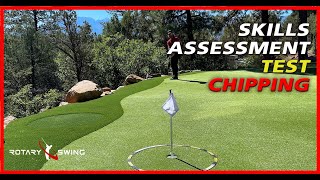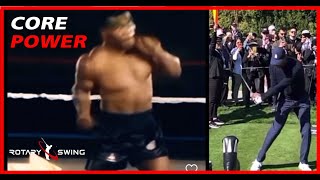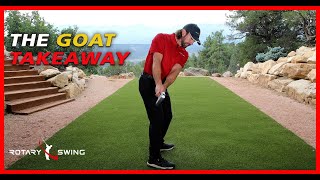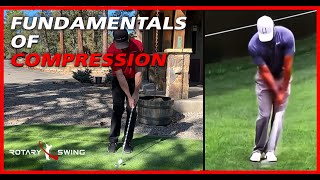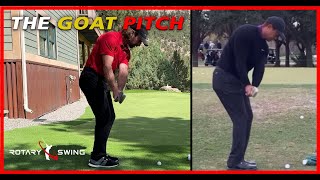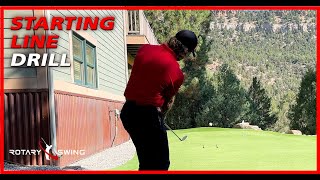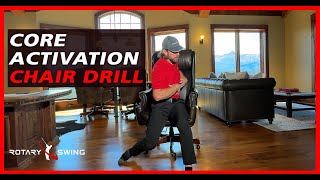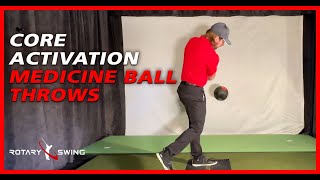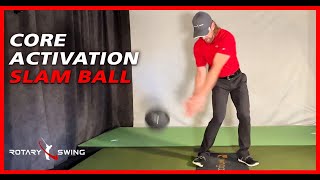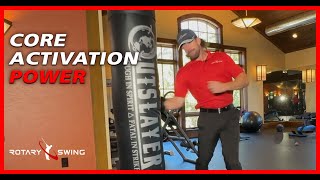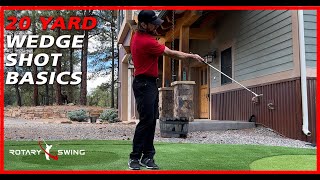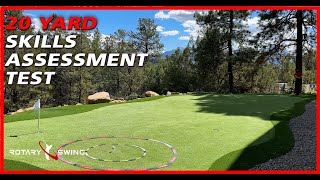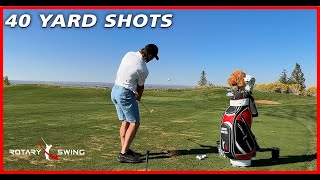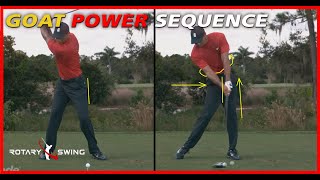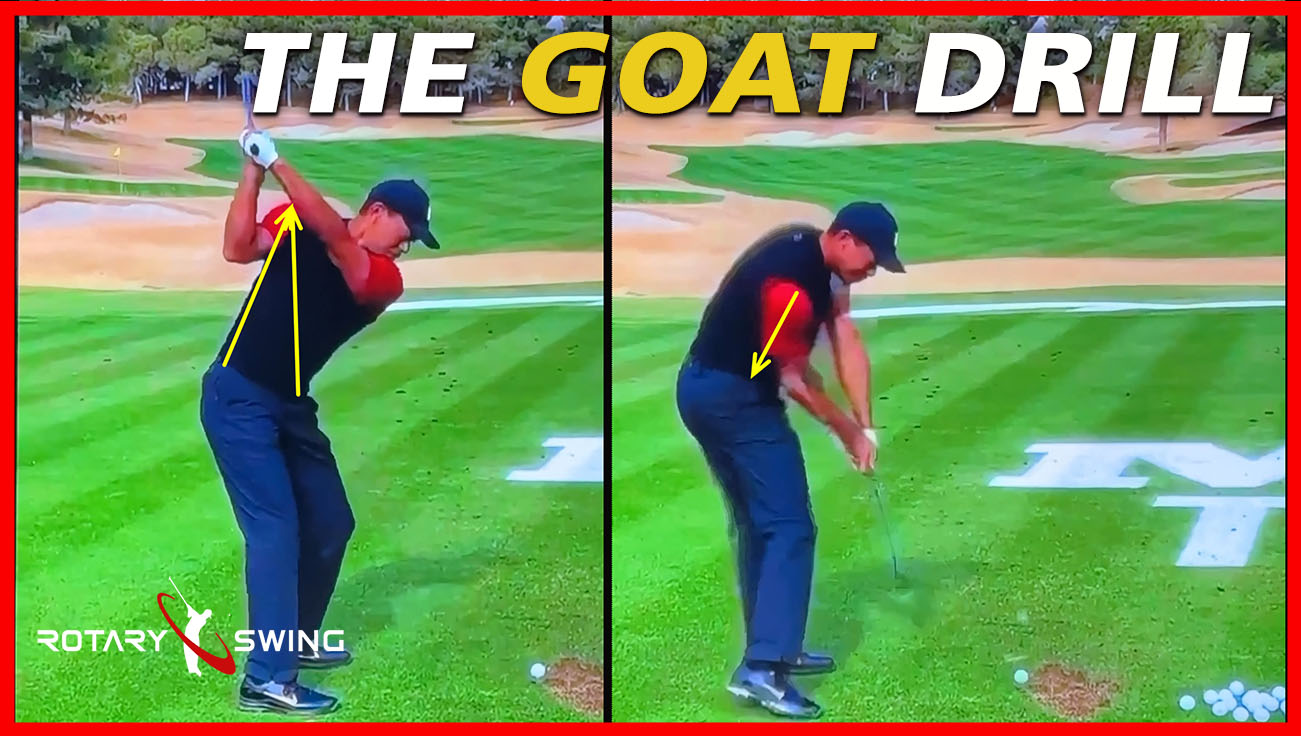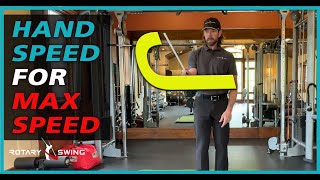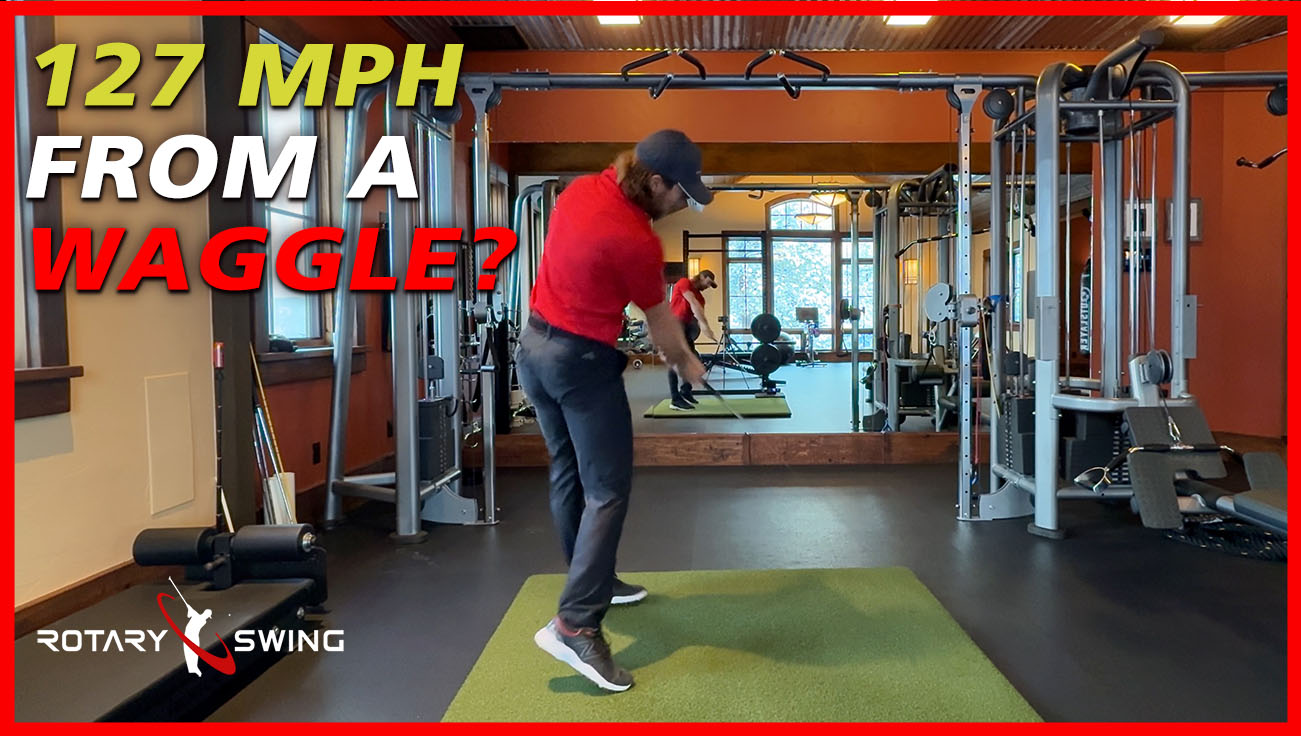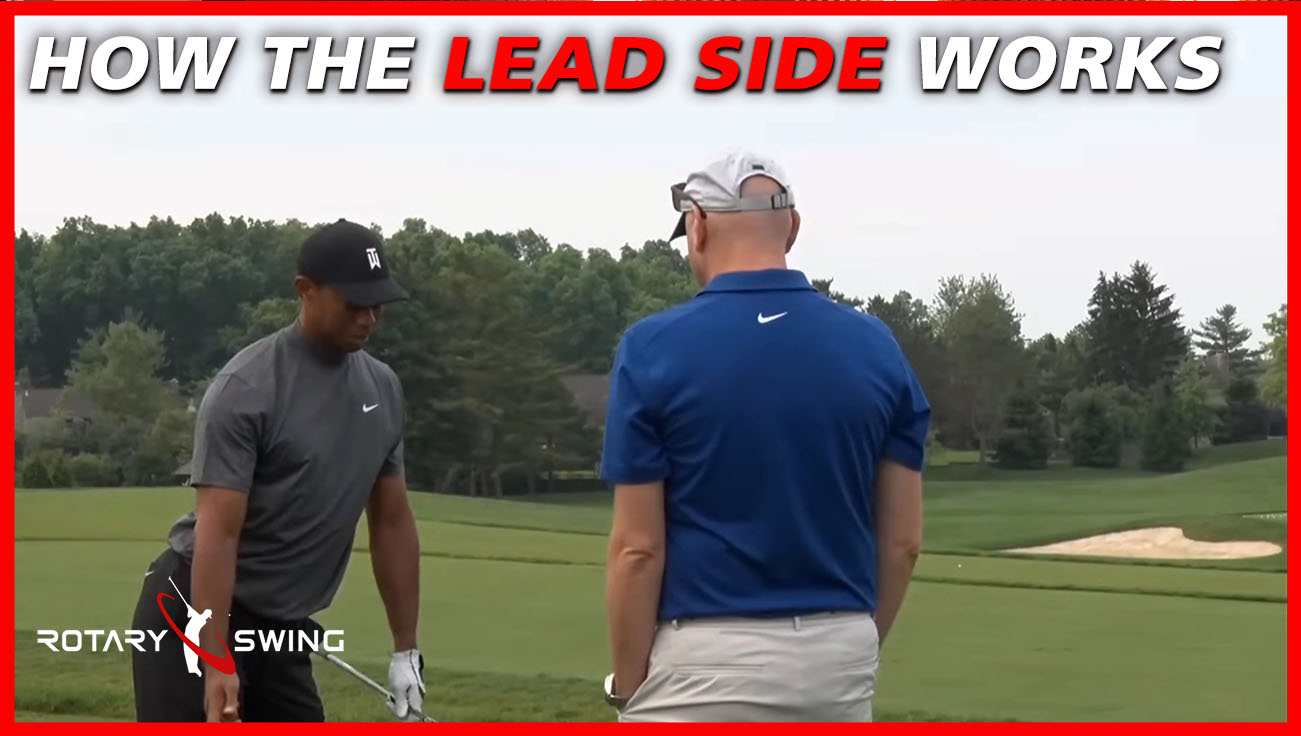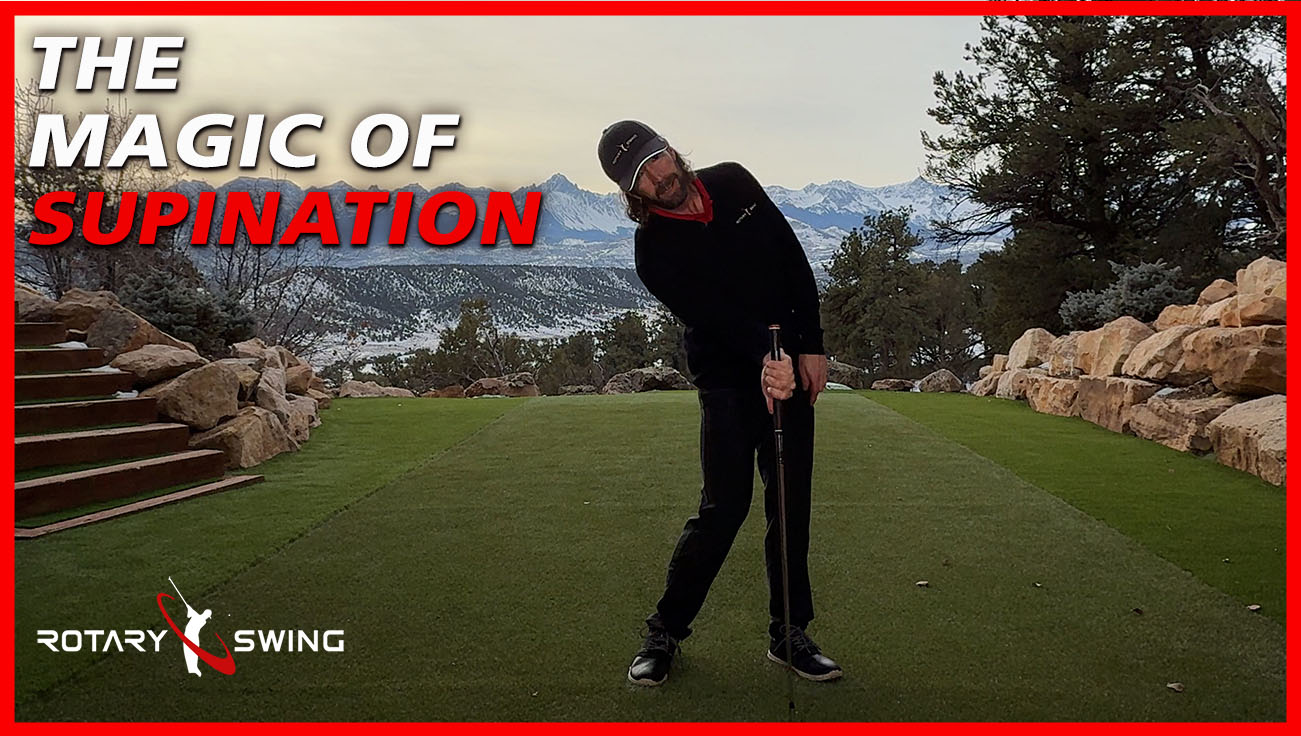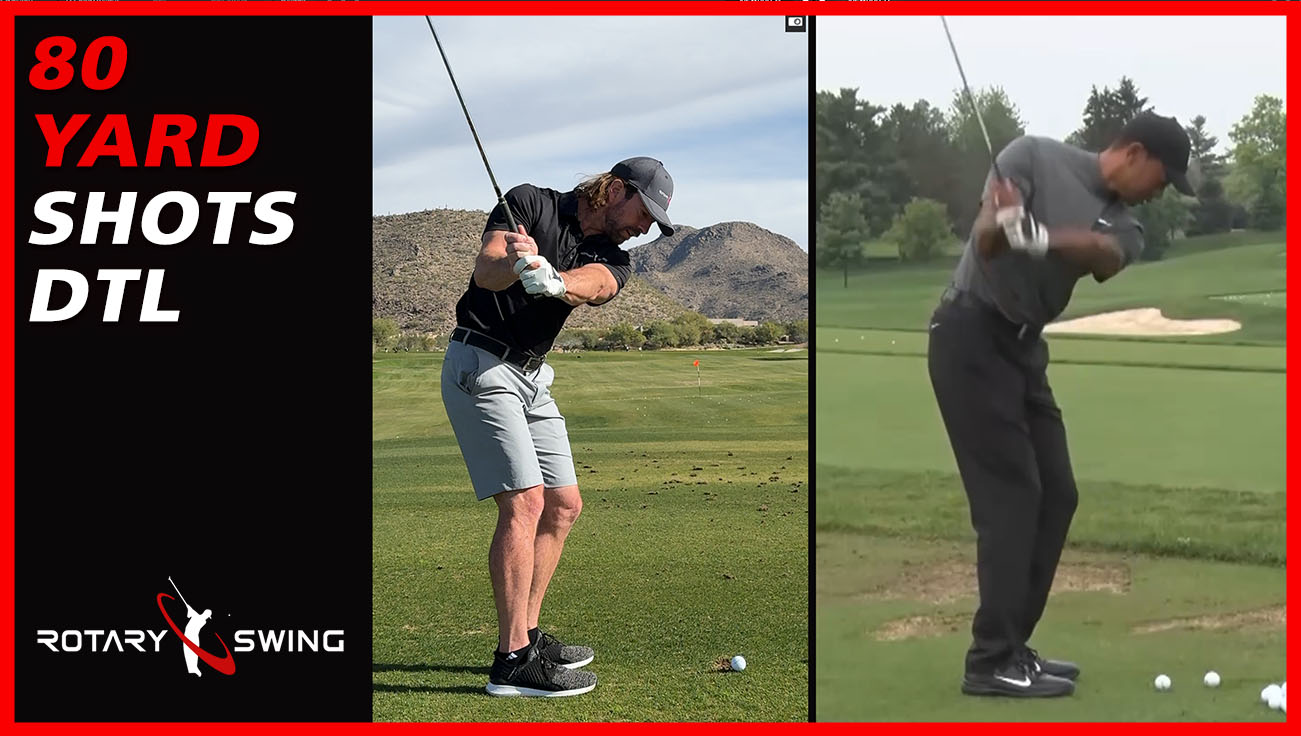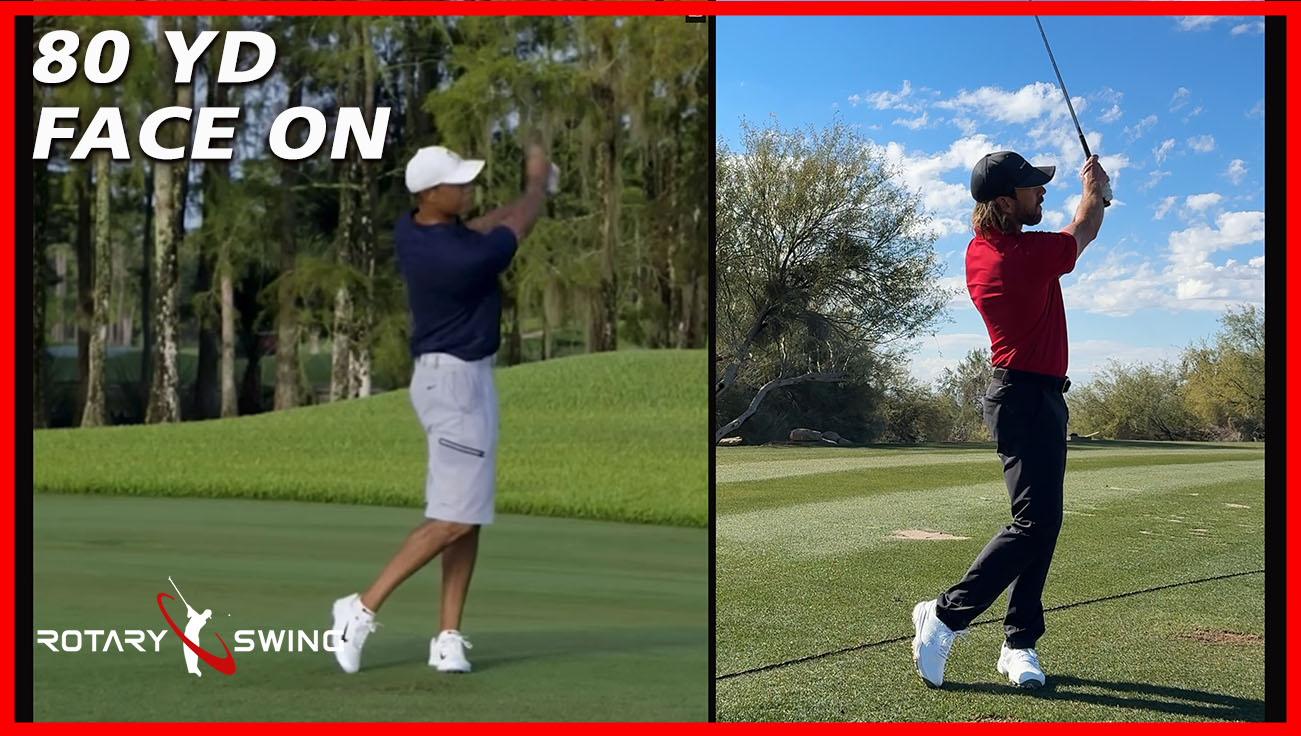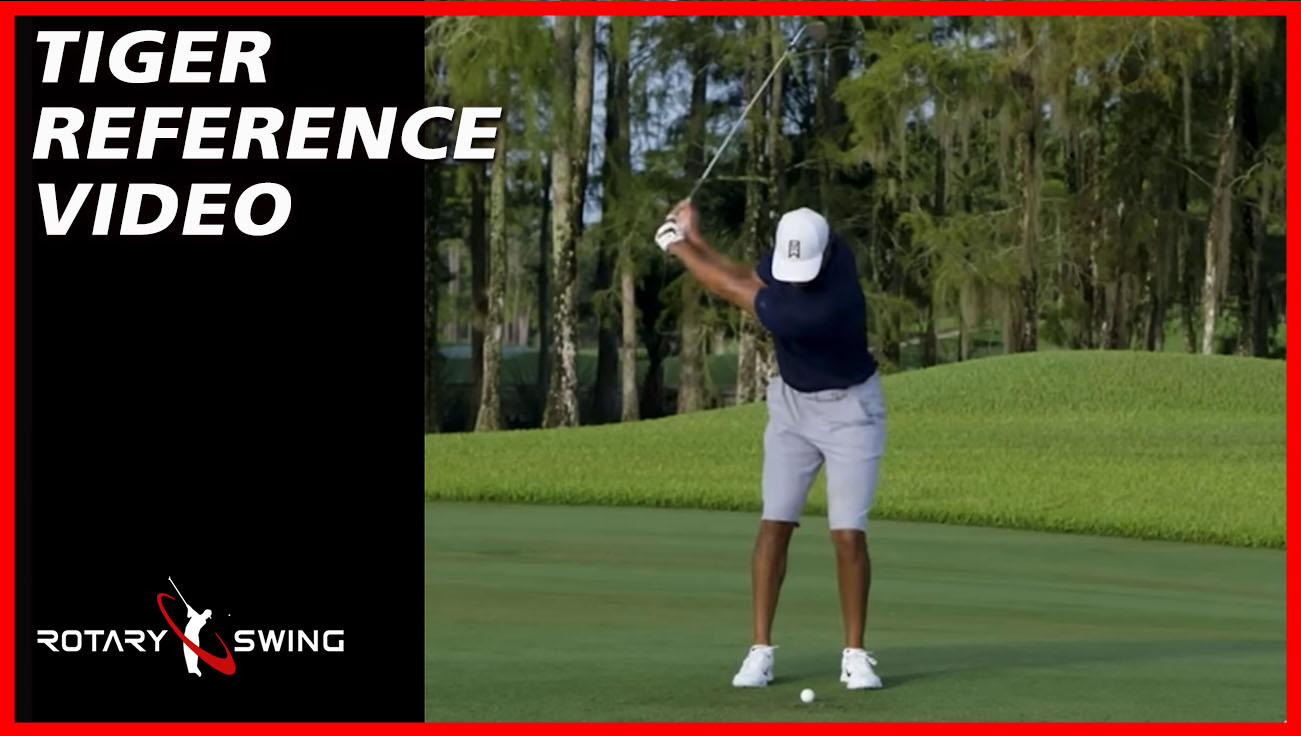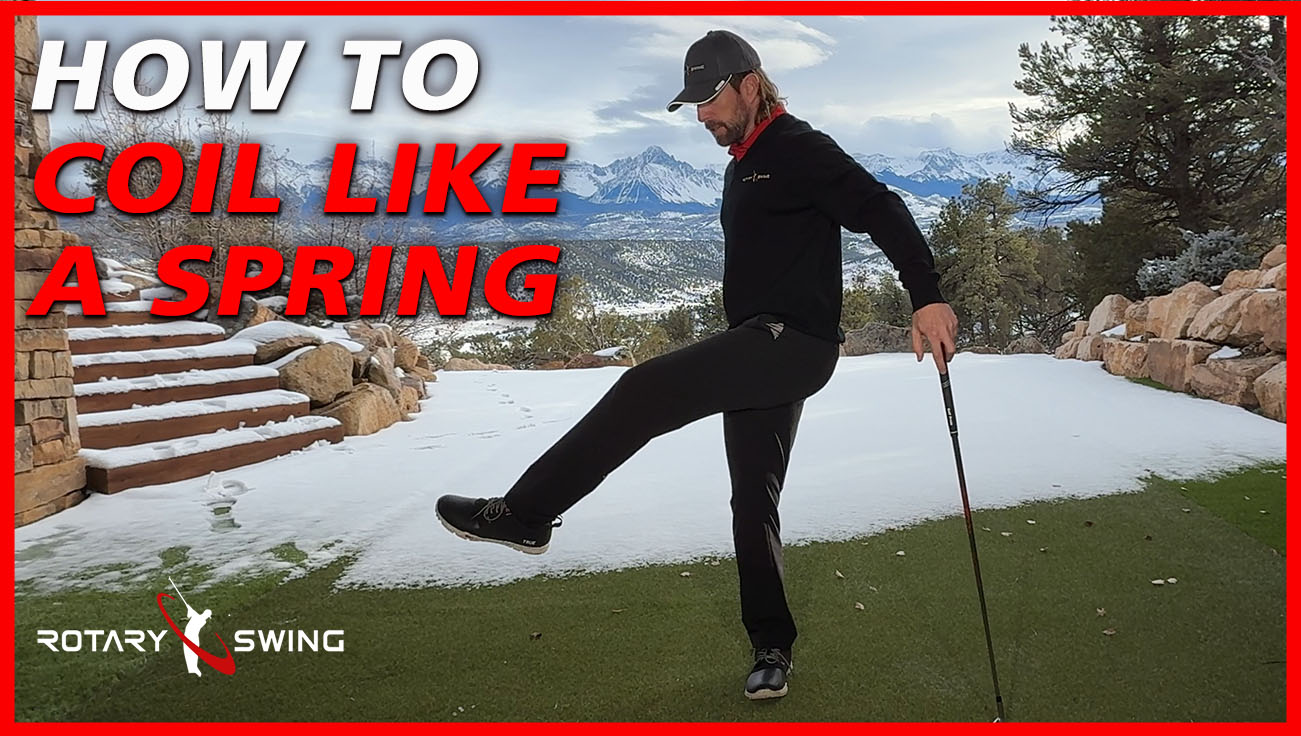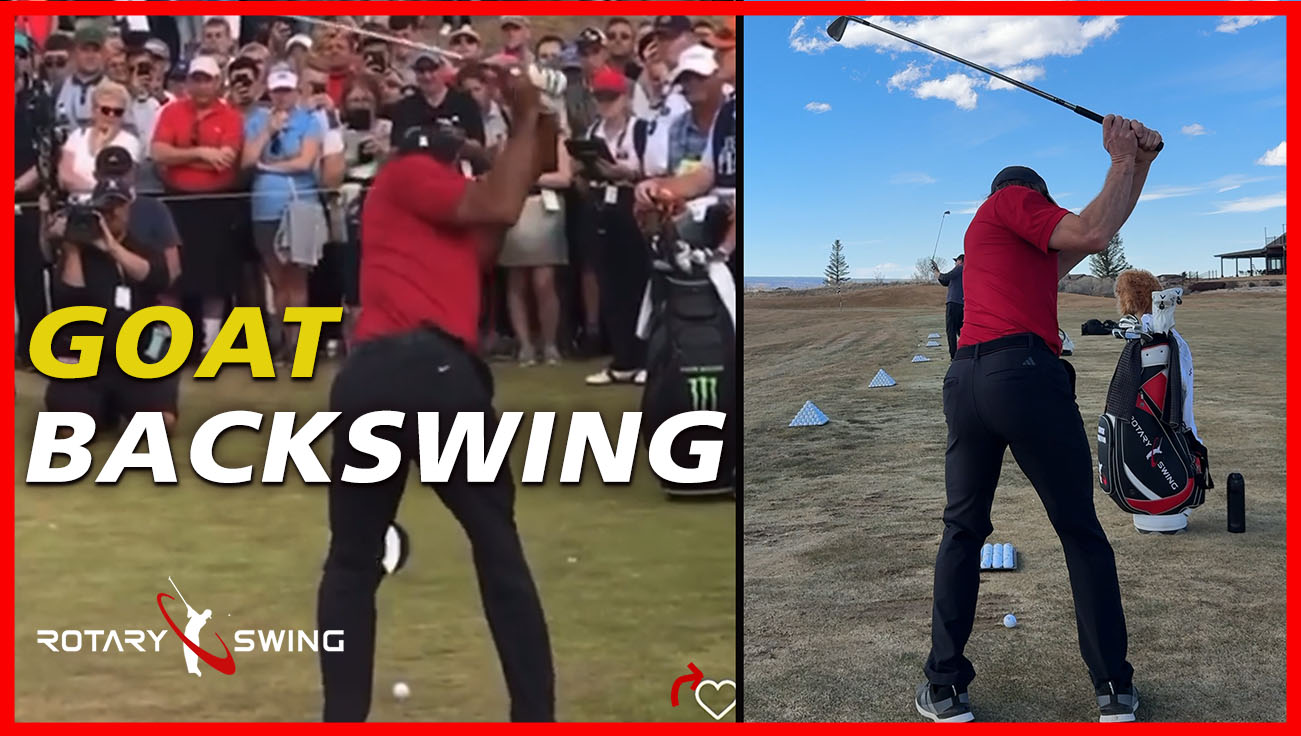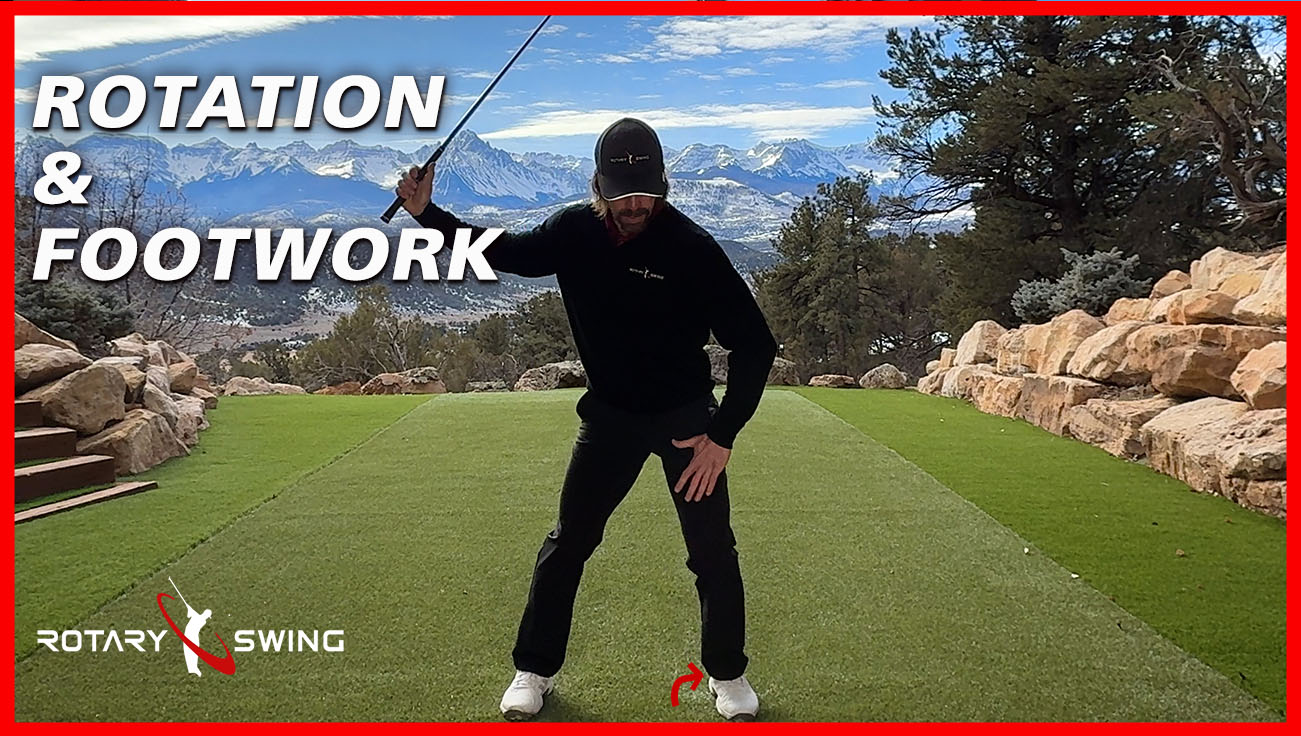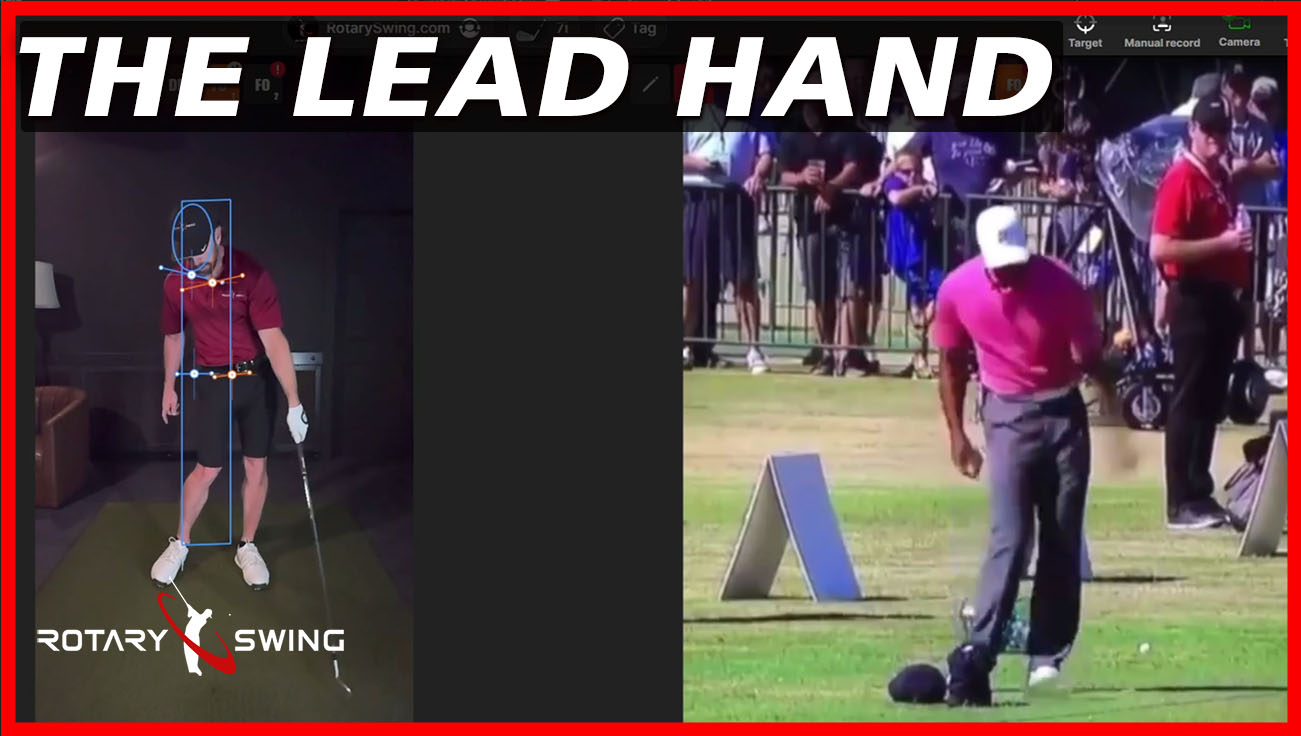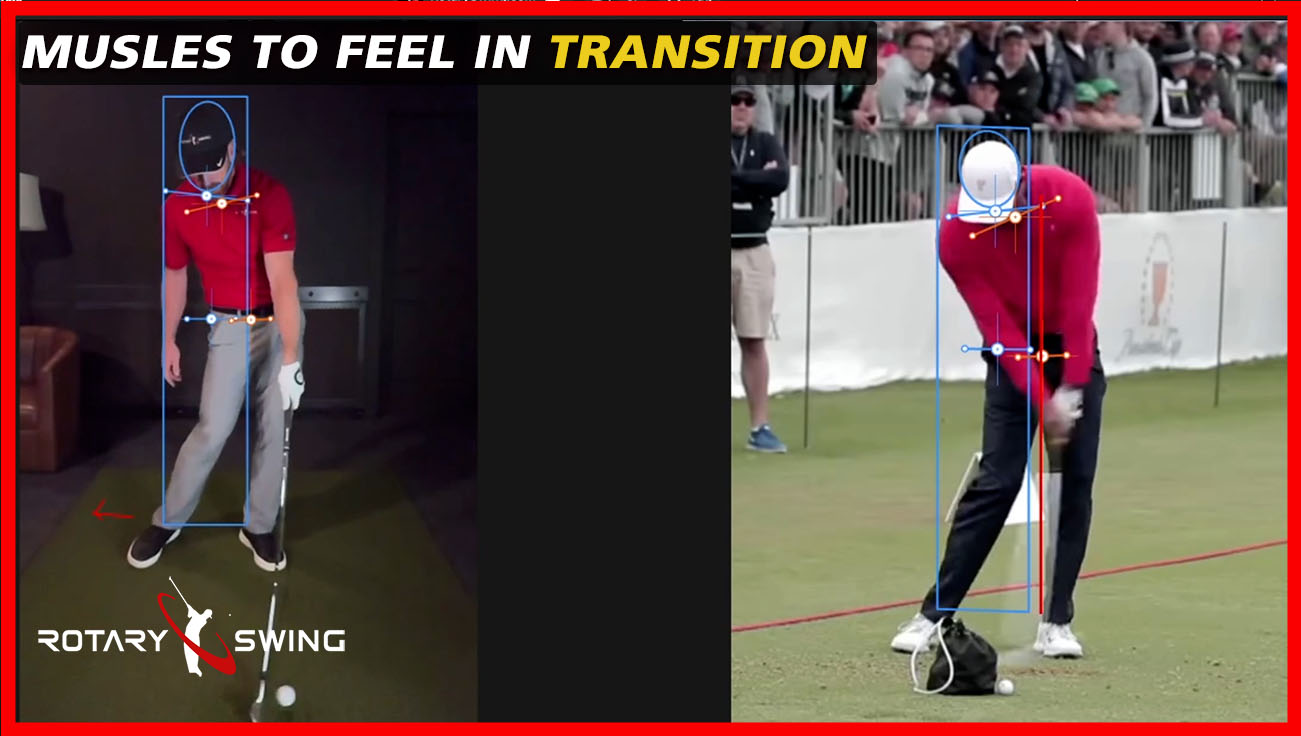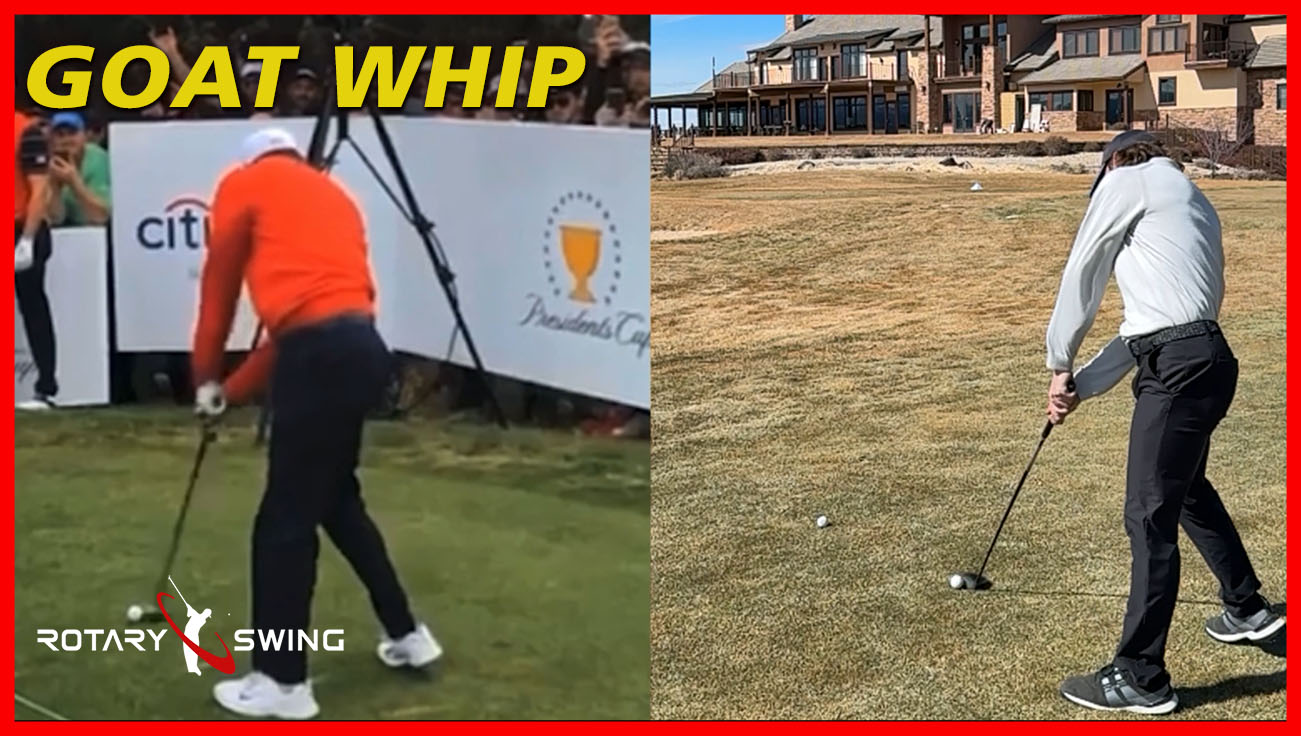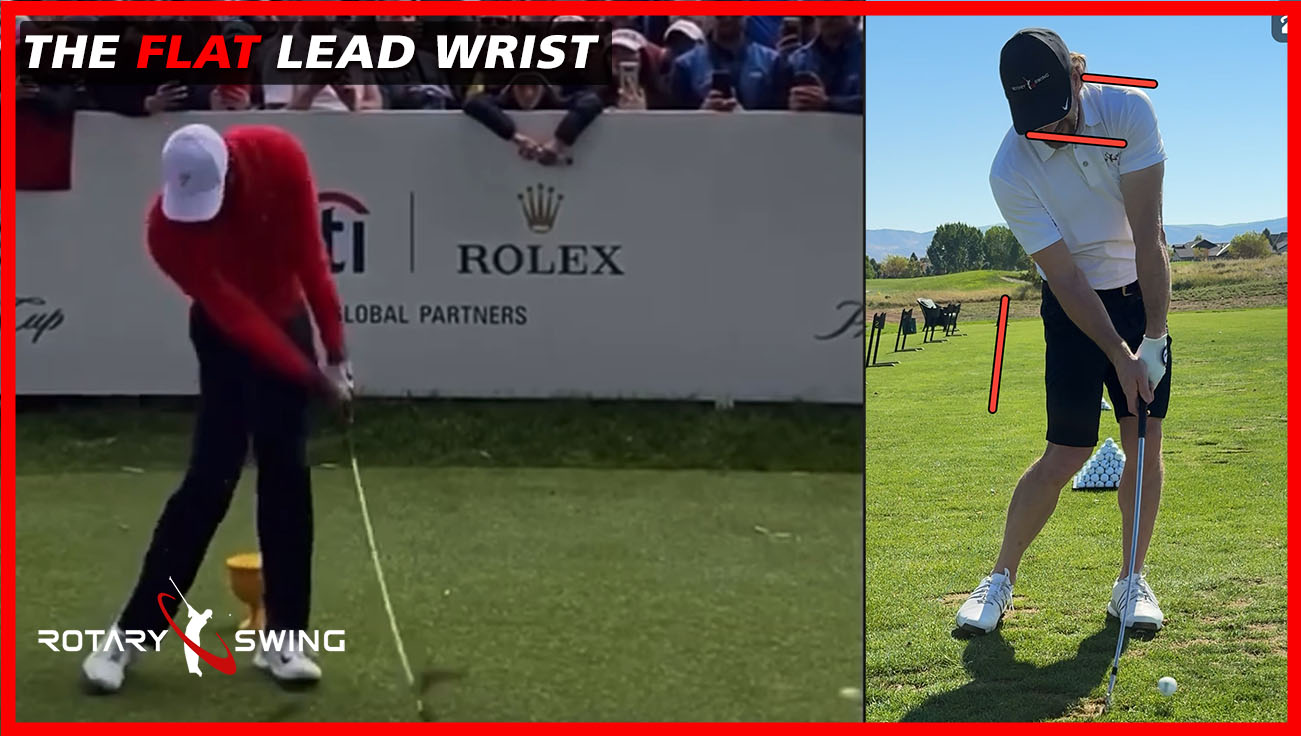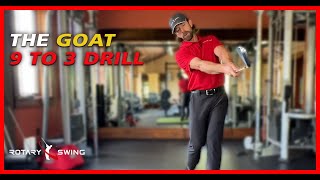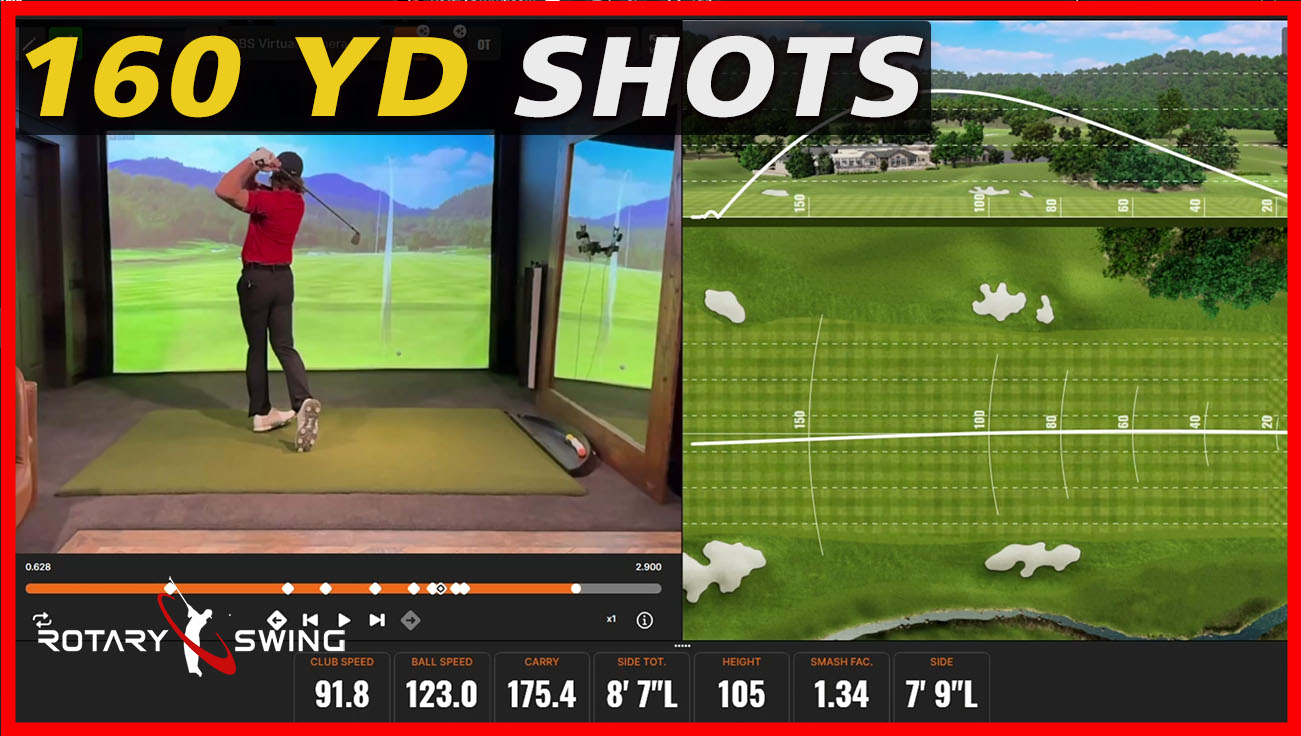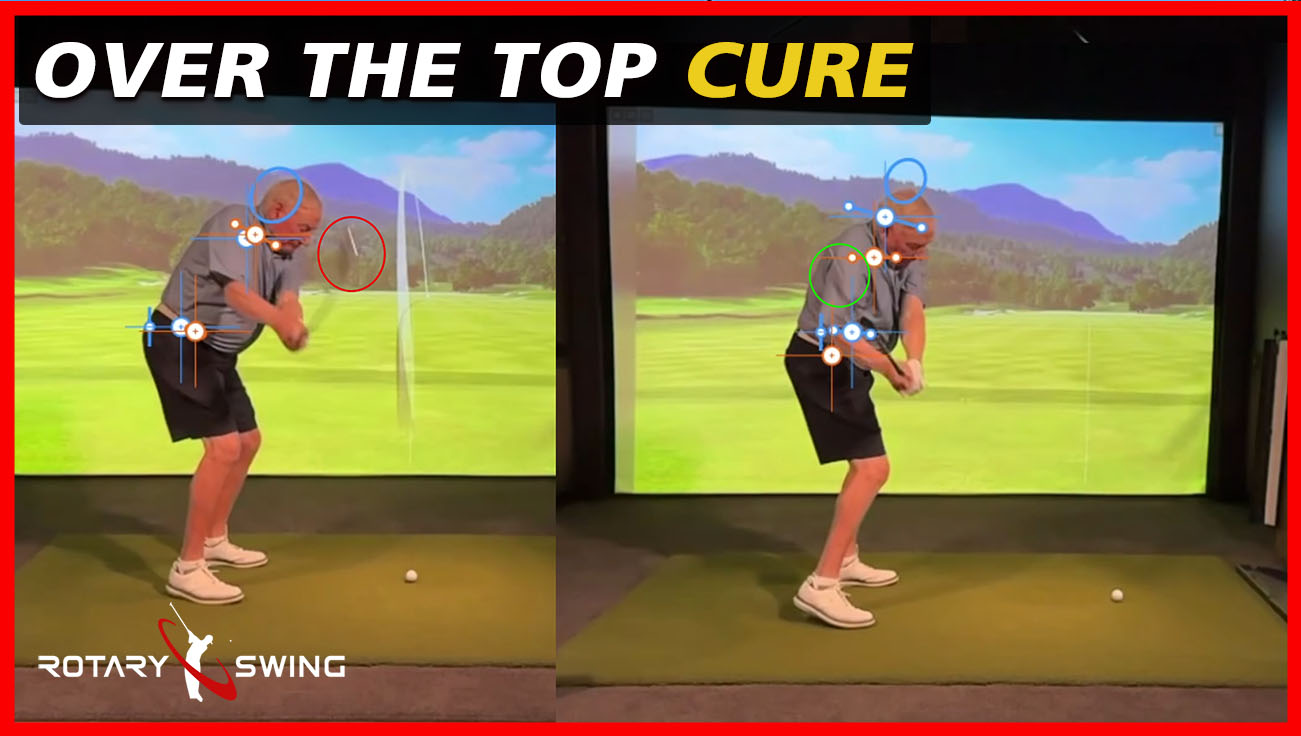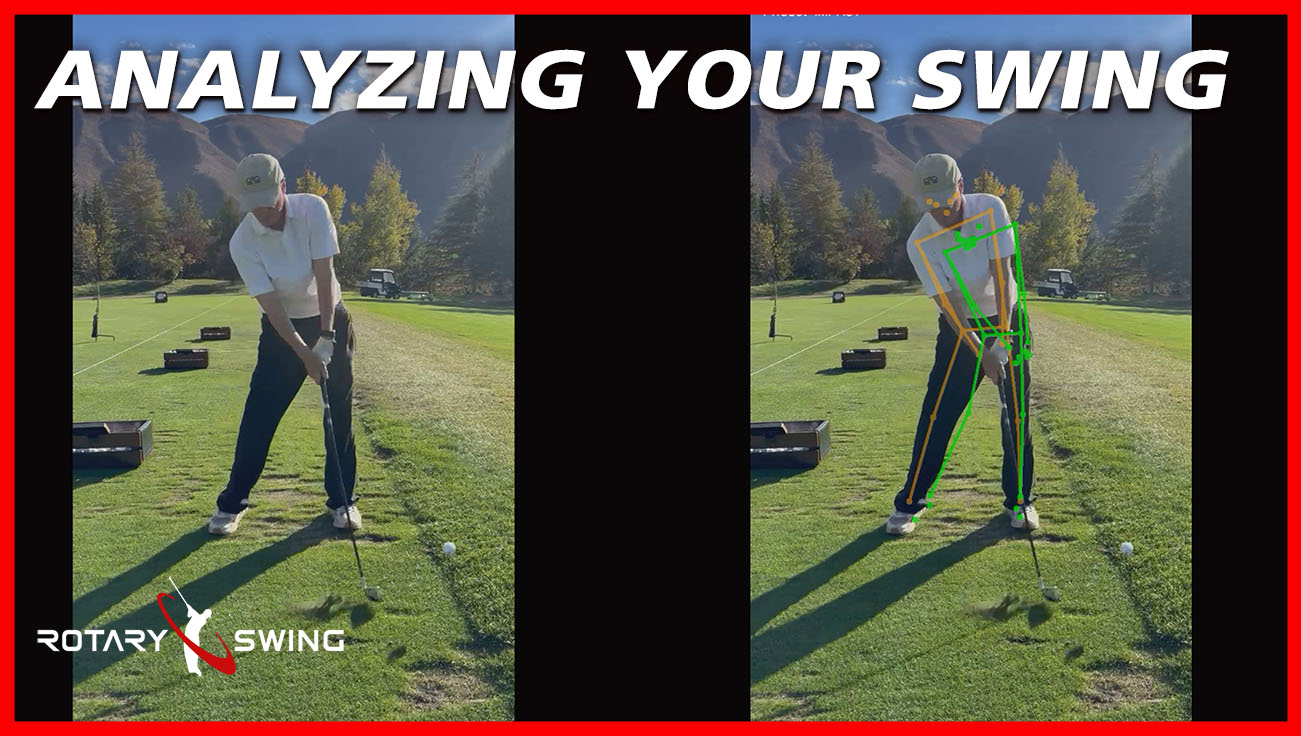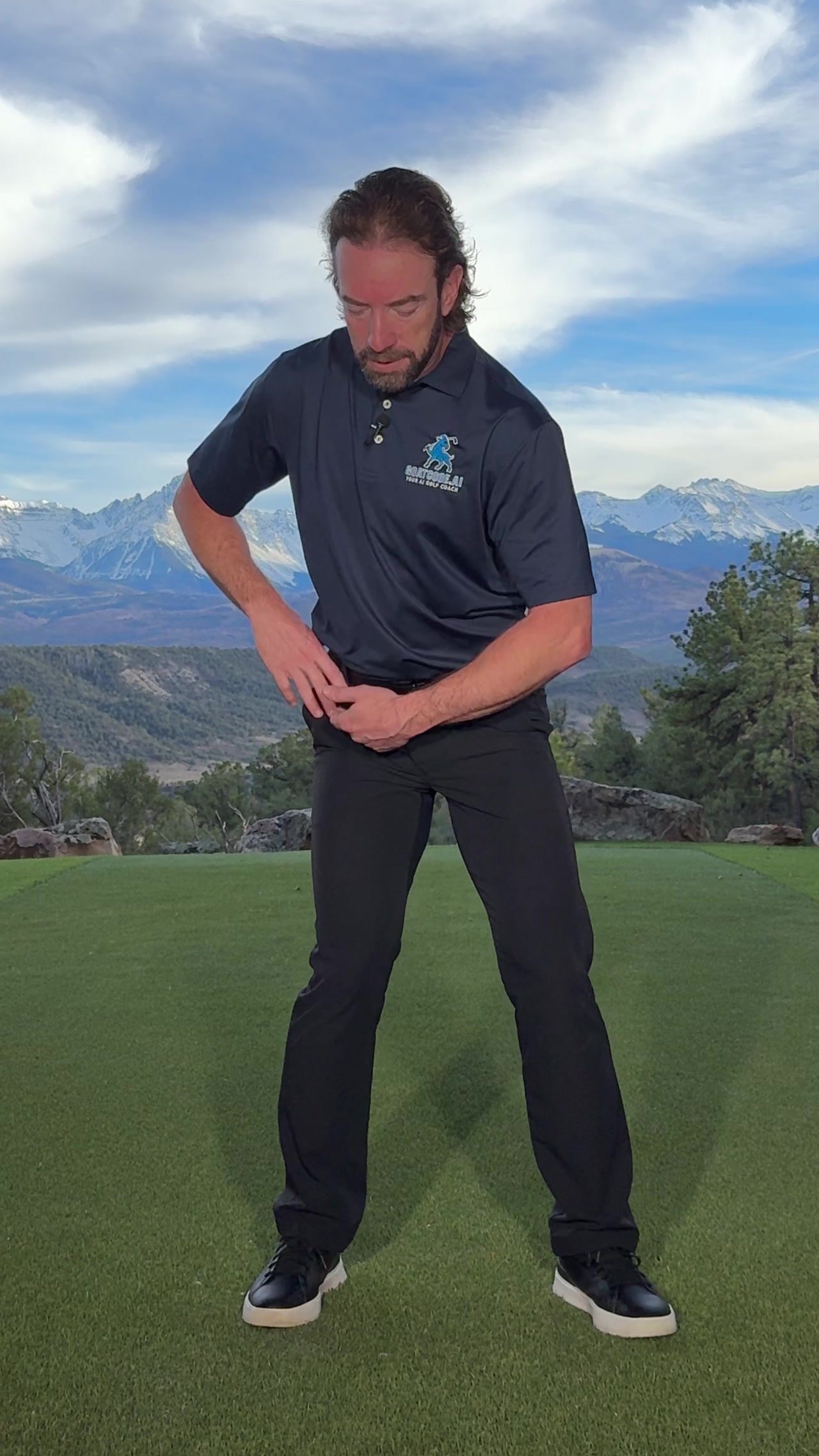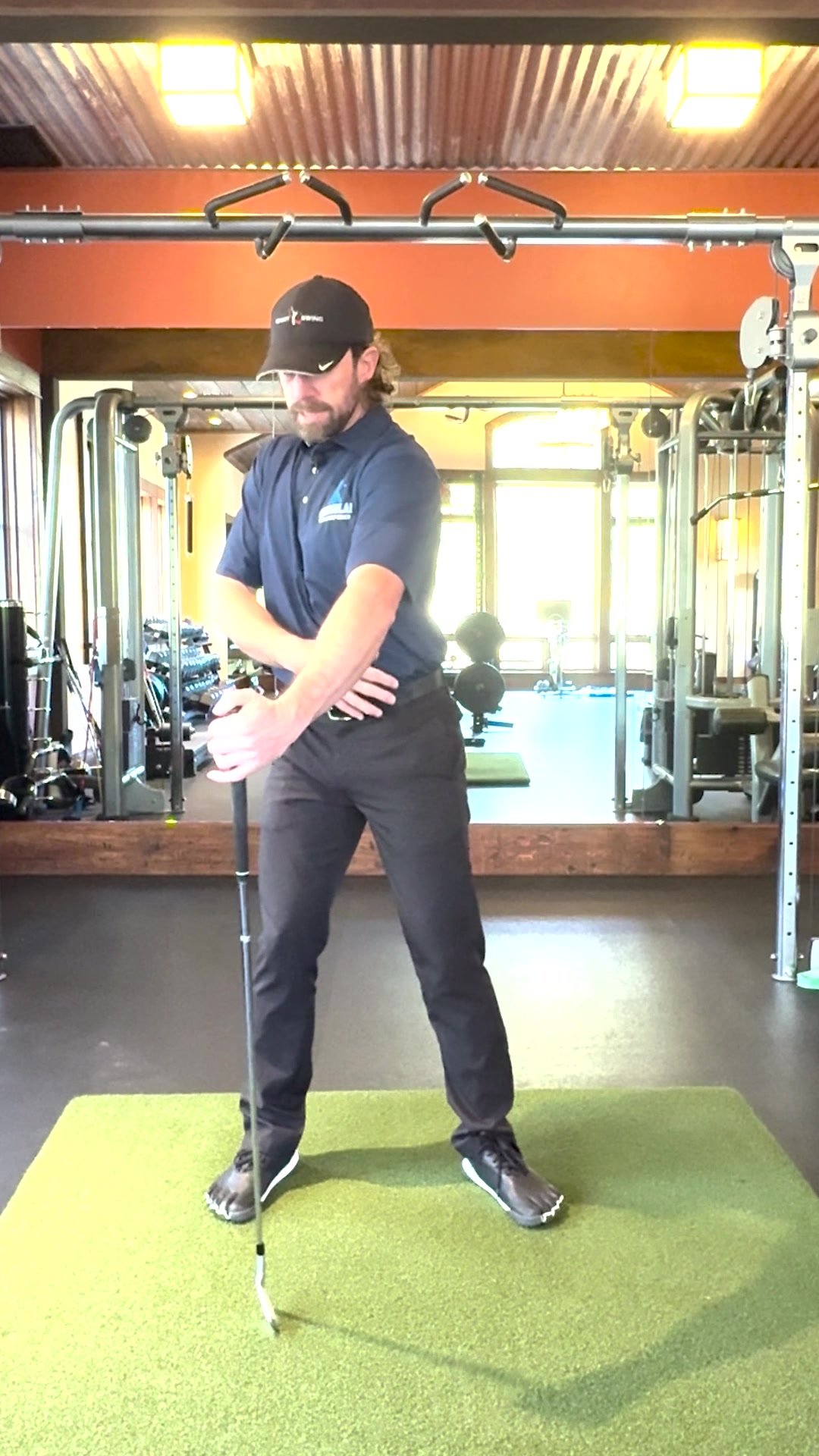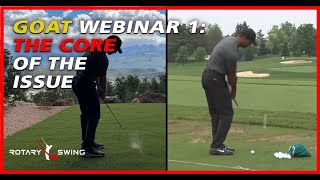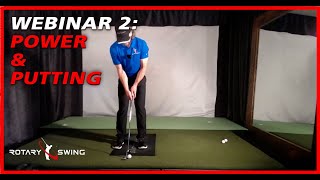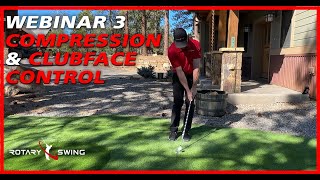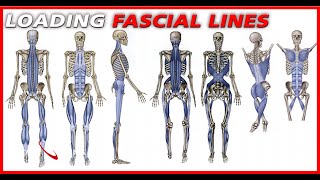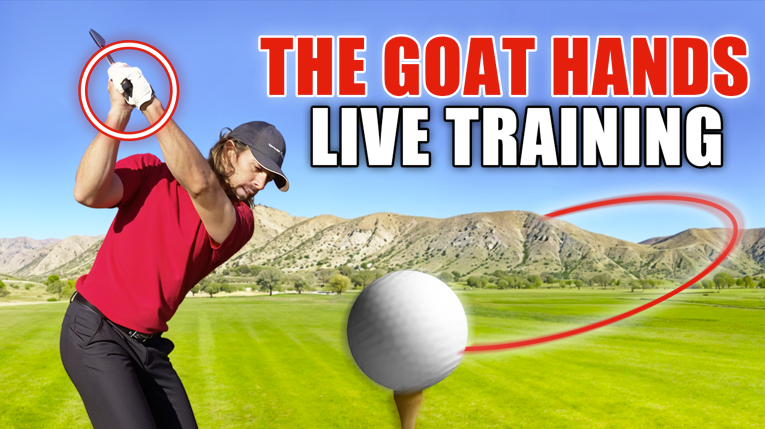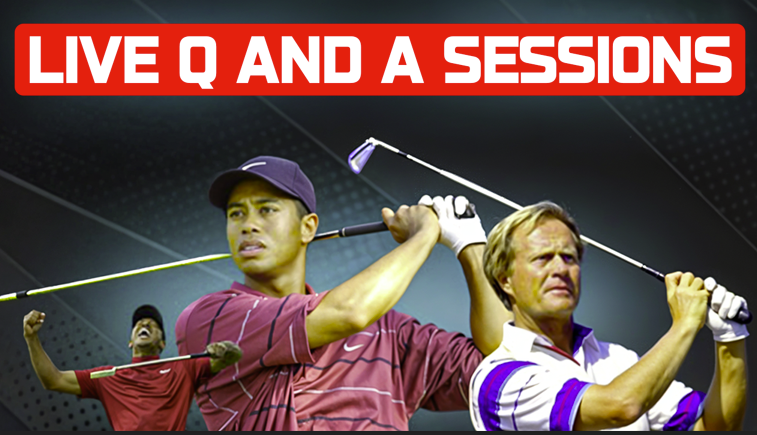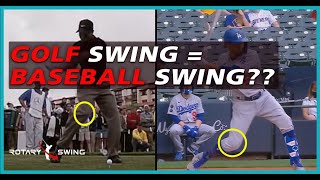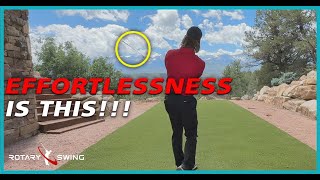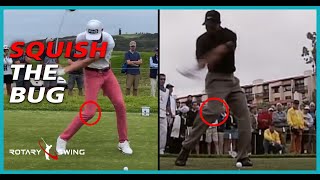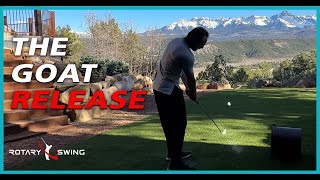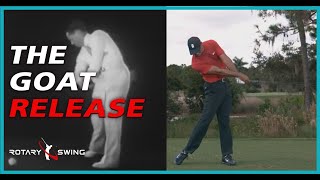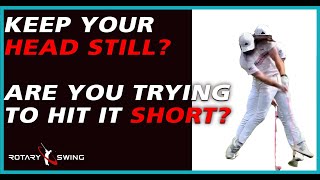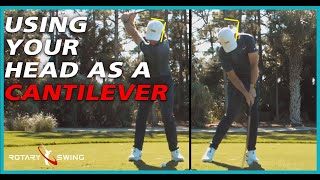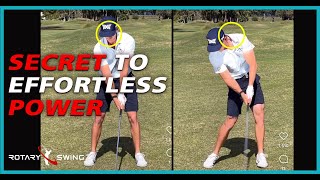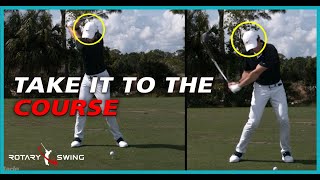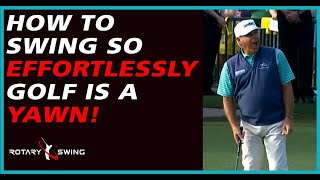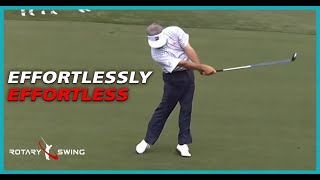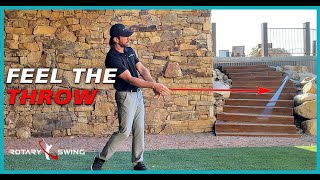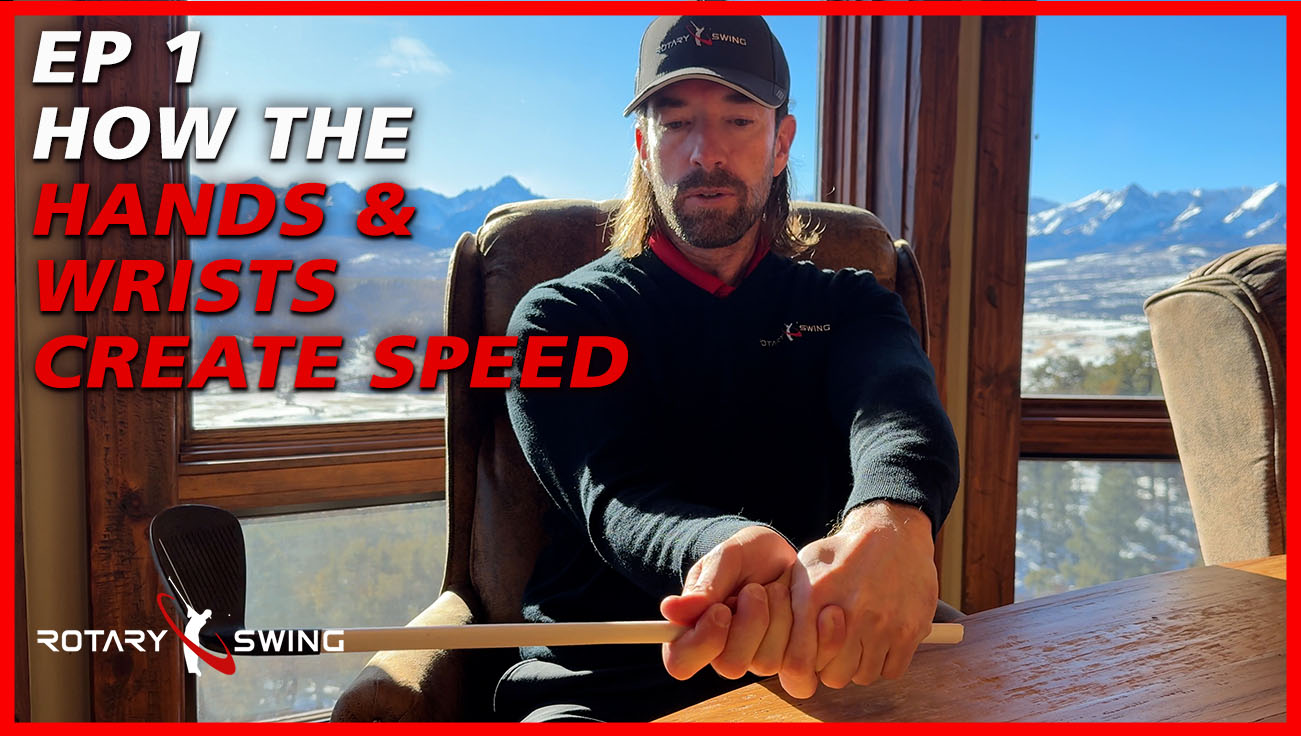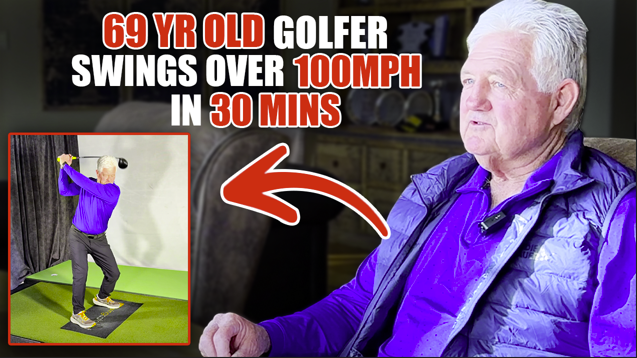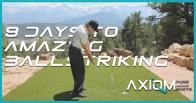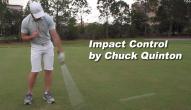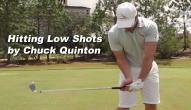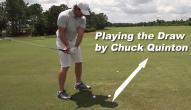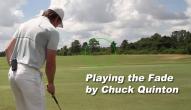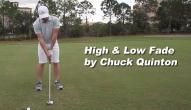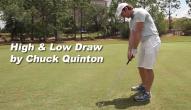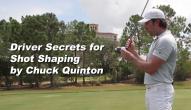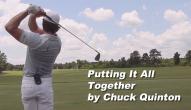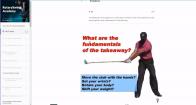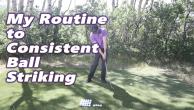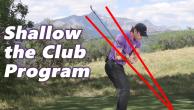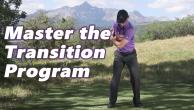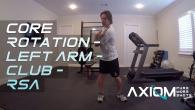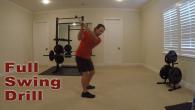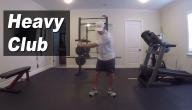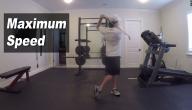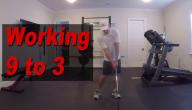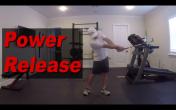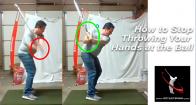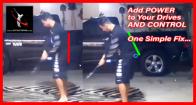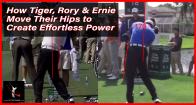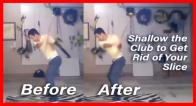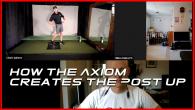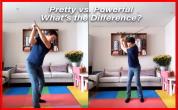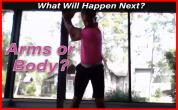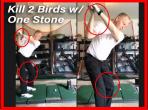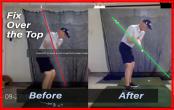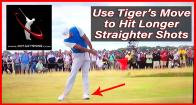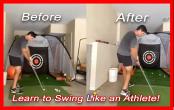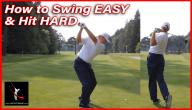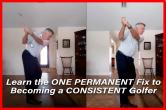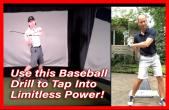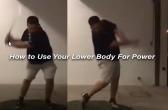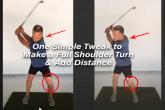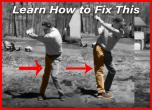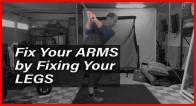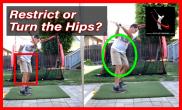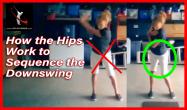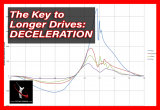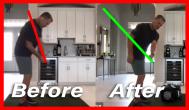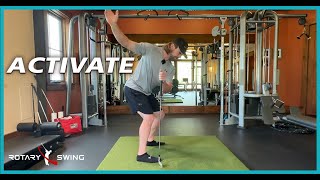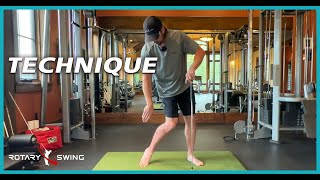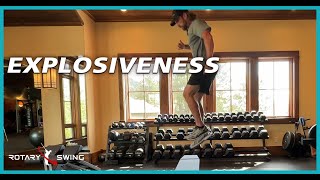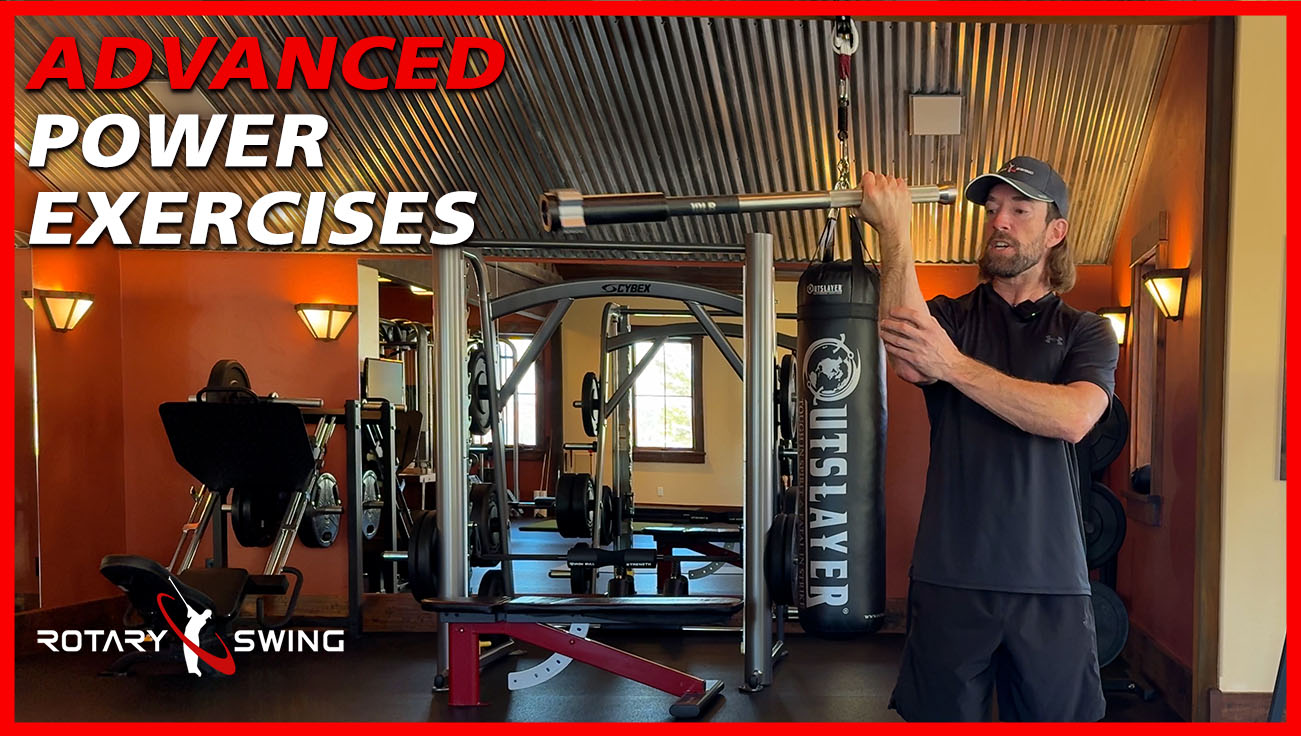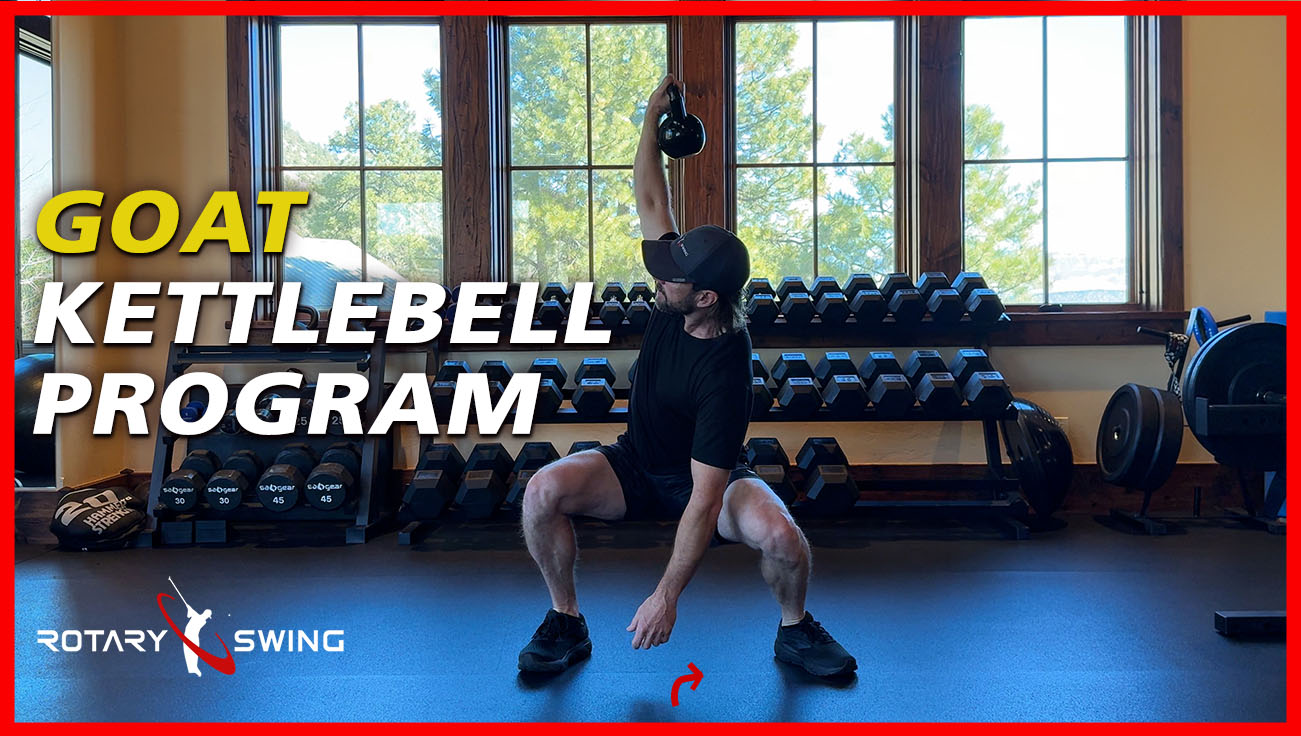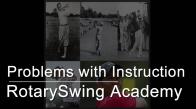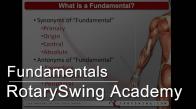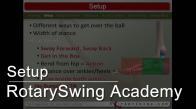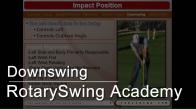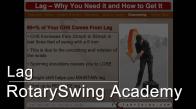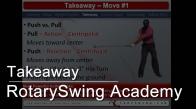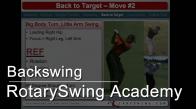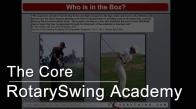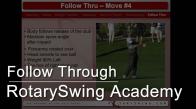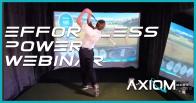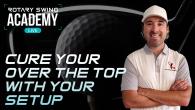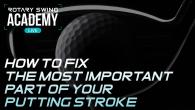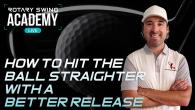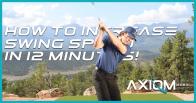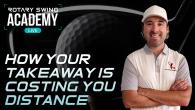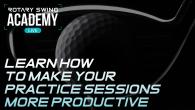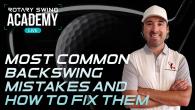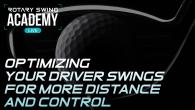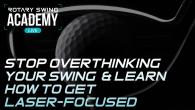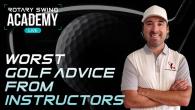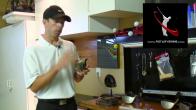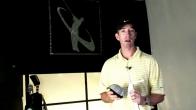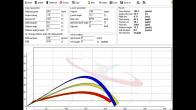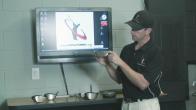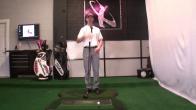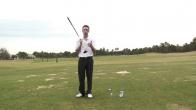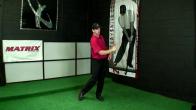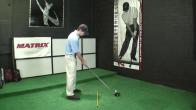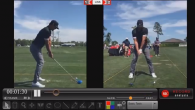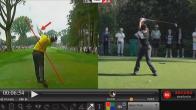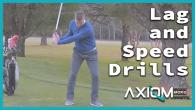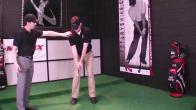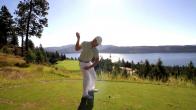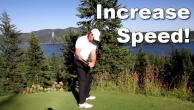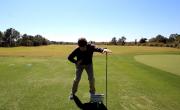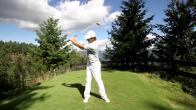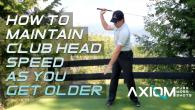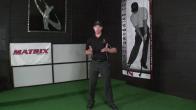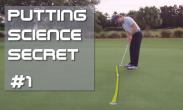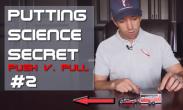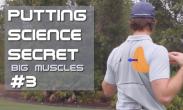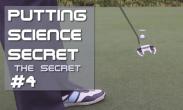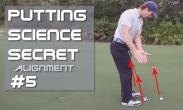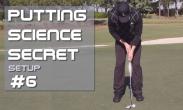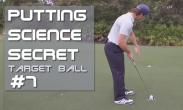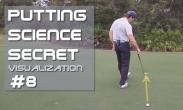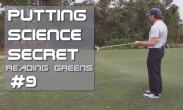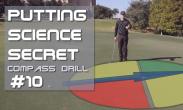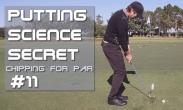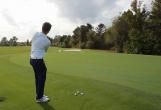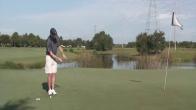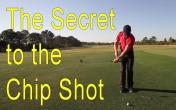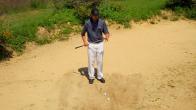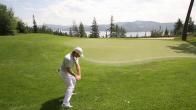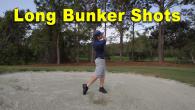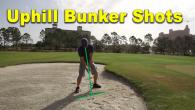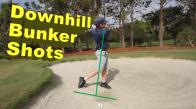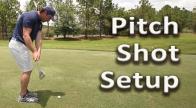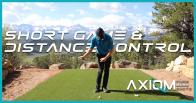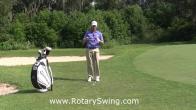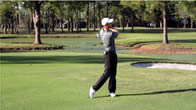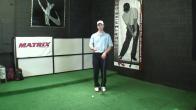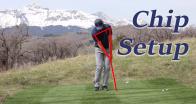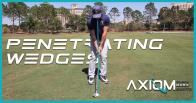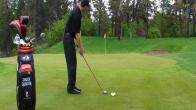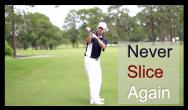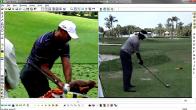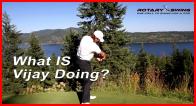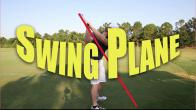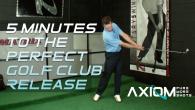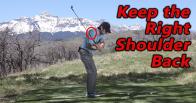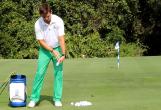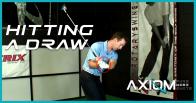Q-n-A Webinar 12: Oct 1
Q-n-A with Craig Morrow, twelfth webinar, October 1st 2025
Are we here?
Are we live?
Mark, you are always very prompt.
I appreciate that.
I'm assuming that means you can hear me as well.
Five by five.
My height and my width.
How are we doing tonight?
How are we doing tonight?
Let's see.
I got to get this saved because somebody just signed up for a live lesson and I don't want to forget to do it.
All right.
Good evening.
I can hear you.
Thank you, Dennis.
I appreciate that.
All right.
So let me get this chair out of the way.
We are still.
Where can I put this?
Let me put it that way with it.
Try to keep it out of y'all's view.
I don't know if that's going to work.
So let's go this way.
I'm still in the hyper-zoomed view.
My apologies.
I could get on a rant, as I have with a couple students today, about construction work, but I'm not going to do that to you all and bore you.
So anyway, in the meantime.
For those of you that are new tonight, I'm RST Instructor Craig.
I will be your humble swing guide tonight.
As usual for protocol, I will let everybody get in the room.
I can see the counter increasing right now.
I give everybody that little bit of window and then we will get started with the questions.
And at the end, I will open it up to the group.
Now for newbies and returnees.
If you want any questions answered, you got to post them up in the community.
All right.
Get over there.
Get your questions in.
All right.
If you ask the question, I will answer it.
It doesn't even have to be about golf.
It can be about anything.
I'll get up here and answer it.
We can talk about all sorts of things.
So I hope everybody's doing well.
I hope everybody's goat drills.
Goat performance and swing is coming along.
Hopefully these sessions are helping kind of clean up the last little what-nots you need.
And if you're just out starting out, maybe something will be enlightening tonight.
So with that being said, I'm just going to give everybody just a couple minutes and we will get started.
If you want to talk about anything in the meantime, I got nothing to do but sit here and talk golf or we can talk college football or we can talk construction and we can talk.
We can talk all sorts of stuff.
So, all right.
Tom, hey, how you doing, bud?
My question is what body movement creates the shallowing at the beginning of the downswing?
What body movement?
So you can't put it so much into a vacuum.
It's the lateral motion and it's the scap drop.
So it's this trail arm moves into external rotation as the scap starts to drop.
And the lower body moves laterally.
So if you think about it, it's moving this way as the scap drops and the arm externally rotates.
Because this lateral motion increases your spine angle.
And let's not get too crazy because I know where you are in your swing right now.
So let's, this doesn't exactly pertain to you.
I'm just speaking about swing plane and shallowing in general.
Think about it.
I've never seen a player come over the top that's in this position.
Have you ever seen anybody come over the top like this?
It's going to be really darn hard.
So as I move laterally, it increases my secondary tilt, which shallows up the club because your spine angle is going to be kind of directly linked to your swing plane.
If you think of how the goats train their lead wrist or the footwork video, Chuck talks about the swing centers.
So think about it.
The more this kind of chest center gets behind this, the more you're going to go this way.
The more it goes this way, the more you get on top of But for your case, Tom, for your case, It's going to be that lateral motion and it's going to be feeling a little bit of external and a little bit of scap drop as you're sitting there doing that pitching motion.
All right.
Do golf socks make you achieve better scores?
It depends on the sock.
I mean, if it's a really good moisture wicking sock, yes.
A good moisture wicking sock will help out the golf swing all day long.
All right.
Don't go out there barefoot or in sandals.
All right.
I've been struggling with the role of the arms in the swing.
They do nothing.
Understand that they effectively do nothing.
You answer your own question.
I long for the ride, but whenever I try to make the swing with that in mind, I kind of get floppy noodles.
How do golfers have structure with their arms and remain tension-free?
Well, Will, it's kind of the same thing like, you know, I've showed this in a couple other webinars.
And I agree with you, Glenn.
Good socks, too.
If I'm moving from my body and I have structure in my arms, all right, so if my right arm is staying straight and my left arm is staying straight and I'm moving from my core and I'm moving my weight, Where's my tension right now?
It's not in my arms.
It's in my body.
Like my core is tight right now.
My arms are pretty chill, to be honest with you, because they're moving with my body.
You don't want to get floppy.
Like you don't want this kind of that.
That's not maintaining structure.
That's actually using the arms.
OK, so an answer to your question, how do golfers have structure with their arms are remaining tension free?
Because this is what's working.
As I'm loading and rotating, my arms can stay chilled out.
But think about it.
I'll give you two examples and then we'll get started on tonight's agenda because this may help somebody else.
And Joe, I will get to your question.
Just remind me at the end.
So, well, let's think about it this way.
If I were to just swing my arms like this, that creates a lot of tension.
But I feel a lot of tension.
In this shoulder, I feel a lot of tension in this shoulder.
In my arms, I don't, this isn't healthy tension.
My arms are really tense right now.
Well, if I go like this, I'm exaggerating.
I don't have any tension in my arms.
All my tension right now is actually in my spine because that's not how you want to turn.
But all my tension is now in my body because my body has moved my arms.
Not my arms have moved my arms.
That's creating tension in the wrong place at the wrong time.
So to maintain structure, it's about moving that tension somewhere else.
There's something that, for anybody that's ever done a swinger view with me, especially in lead side pattern, something I've always said, and I will say it forever.
If you don't use your lower half, you're going to use your upper half.
If you don't use your upper half, you're going to use your lower half.
You're going to use something to get that golf club to the golf ball, all right?
You're going to use something.
So the tension in the arms, if I don't swing the arms and I create the tension here, I'm shifting the tension from my arms to my body.
So they remain tension free.
If I'm swinging with my arms, my arms have the tension.
My body doesn't as much as you.
So tension kind of shifts.
And what you're trying to do is you're trying to shift the tension inward to keep it out of these.
And more, more, more, more, more, more, more, more, more, more.
Often than not, the reason people's arms are tense.
Is because they're using their arms, they're not using their body.
If I get here and I load and rotate, my arms are chilled and I can keep them straight with relative ease.
But if I don't move my body and I try to get my arms up there, that's a lot of work, all right, that's a lot of work.
Um, and and Joe I, I will get back to you, all right, just just remind me, just remind me, Will, are you saying you actively try to keep the arms straight?
No arms doesn't mean limp.
No arms doesn't mean limp arms.
Correct.
All right.
No arms doesn't mean lift arms.
Now, some players are going to have to keep a certain amount of tension in their arms to keep them straight.
That doesn't mean no arms doesn't mean dead arms.
It doesn't mean you're just sitting here like, you know, like a dead fish.
All right.
You still have to maintain some structure with them.
All right.
But you can maintain the structure by moving your body so that their tension level is here versus here.
Make sense?
Somewhat, maybe, don't know.
Have you had a Mountain Dew today?
That will help you.
For returnees, you'll get that joke.
So without further ado, let's get to the questions.
All right.
I can't even read this printout.
Describe and explain the out-to-under move.
What is it, when, and why is it used, and what purpose it has?
The out-to-under move was basically the concept and axiom, which is still the same concept with supination or anything like that.
So this is how I'm interpreting it.
If it's not how you're wanting this question, then this is how I'm interpreting it.
The out to under move is basically that as you go back in the backswing, that the club stays outside and then works under on the downswing.
So basically an outside club playing, an inside club playing.
The reason why that's so important, I could get on a whole laundry list of things, but it's so the physics of the golf club works correctly.
All right.
So this club.
is swung on an incline plane with a toe that's designed to rotate around the heel.
All right.
And so when I start making a move or a physics move where this club starts to supinate and goes out and under, it puts the club in a position where it wants to do its rotation itself.
So I'm starting to balance out the club where it wants to rotate itself.
As soon as I start going under and out, I've now taken away how this club is designed.
It doesn't want to rotate, all right, it doesn't want to rotate now.
It's already done everything that it wants to do, all the energy and everything's already been expended this way.
And so what happens is you get forced having to speed it up.
So let's take the prototypical over the topper, all right, the prototypical over the topper.
Hits what kind of ball shot perfectly straight?
Or do they hit big slices?
they hit big slices?
Because what happens is they start going under in the takeaway and then out this way.
They have to manually square up this club because the club's not balanced on plane to be able to square itself.
So as they start coming down, they start screaming with their hands to try to get the toe to catch up, but you can't do it.
Once.
This pitch of the shaft is already on this side of your hands, all right, or this side of the earth, however, you want to look at it once it's on this side.
You have to scream your hands as hard as possible, and once you start having to scream your hands as hard as possible.
Now you start getting to where, you know, you start hitting toe slaps this way, getting the gear effect, you're getting all sorts of things.
But as soon as the club starts moving out, you are in control of this golf club.
You're going to be required to do everything for it.
When this club is working from under, the club is balanced to where this toe wants to rotate around the heel.
So to square up the club and hit nice little baby draws all day and have speed.
I don't have to do anything.
But as soon as I start changing it to, I mean, if you want to really understand the concept, you can literally just do what I'm doing right here.
All right.
If I'm like this and I'm just spinning it with supination, that's coming under, releasing out, coming under, releasing out.
And you can feel how the club wants to release itself.
Now do it opposite.
Go this way.
Try to make this circle going this way.
I can't get it to go back.
I'm really having to, but as soon as I go like this, I can do this all day long.
As soon as I go like this, now I'm having to speed that up.
This is speeding up on its own.
This is me having to speed it up.
So it goes into where over the toppers, I had this discussion with, I actually had this discussion with Tom earlier.
One of my biggest pet peeves when players are making full swings and they've struggled with over the top their entire life, is you got to get ugly for a second.
It's okay.
We got time to tighten it up.
Get a little out, get a little under, get used to getting the feeling of the club being balanced and shallowing out and coming through.
Do I want your swing to be like this?
No, I don't want your swing to be like that.
But if you're so used to going like this, I want you to live that way for a little bit, and then let's tighten the screws.
You've got to get used to what it's like to hit some big right-to-left shots.
There are so many things I wish I could give my students.
I wish I could give them just for a second my feel or just step in their body and be like, hey, this is what it feels like, so that they could own it immediately.
Like, oh, that's what Craig's trying to tell me to do when he's saying, hey, keep my elbow pit this way or do this or do that.
That's the only way to get new feels.
You have to live a little bit how the other half lives for a second.
Because if you've been like this your entire life, and then all of a sudden you start going like this, it's going to feel really awkward.
But as soon as you start doing it, you're going to be like, oh, wait a minute.
I'm starting to kind of get a feel for the club head and how the club head kind of wants to start to.
Move and rotate on its own.
I'm not having to force it so much like when I was going this way.
So the out to under move is to start to give you the feel of how to swing the proper balance of the club and to get the club to actually work for you.
Golf's hard enough, right?
So why make it harder?
Why not just follow the physics of this?
And it does the vast majority of the work for you.
This one I was reading, this looks like a loaded question.
I saw it as I was reading the first one.
How much mobility in the right shoulder should we allow us?
Should we restrict how much sideways mobility we can permit ourselves in the right shoulder?
Should we avoid flying the right shoulder a la Nicholas?
Or should we just let the right shoulder go back as far as it wants as it feels natural?
What are the consequences of this right shoulder motion, restricted or free -flowing?
What do the goats or tiger do?
Okay, so there's a lot of questions in this.
How much mobility in the right shoulder should we allow for?
Should we restrict the sideways mobility we can permit ourselves to have in the right shoulder?
And should we avoid the flying right shoulder?
So let's start with that.
So how much mobility should the right shoulder should we allow?
Well, you don't want to start shrugging your shoulder up to the sky like this.
You don't want to start being able to scratch your ear.
There's going to be a little bit of a play here.
It's got to be able to move this way.
It's got to be able to move this way.
I'm taking this from a right-handed perspective.
From a left-handed perspective, it's going to be going the other way.
But it's got to be able to have some mobility back and forth and to the side.
This shoulder socket, this shoulder joint, all this whole stuff is very, very important.
Okay.
Very, very important.
So it has to have some mobility, but you don't want it to be where you can literally scratch your ear like this.
You want it to just be able to have some play in it.
Just like if I'm just sitting here, just like a little baby shrug and moving it back.
It's got to be mobile.
It's got to be allowed to move so that you can swing.
You can allow for a little bit of sideways.
You can allow for a little bit of up.
Should you avoid flying the shoulder like Jack Nicklaus?
Well, Nicklaus had a big flying right elbow.
Can you do that technically?
Yes.
But this gets into kind of the law of diminishing returns.
If I get up here, the more I let my arm and elbow kind of fly, what do I have to do?
At some point in time, I've got to get it back.
All right.
The shoulder is going to have to come down to be able to connect to my body.
And at some point, my arm's got to get back out in front.
So can you allow for a little bit of a fly to get a little bit more turn?
Absolutely.
All right.
I forgot.
It might be goat backswing or one of the videos.
But Chuck talks about this.
In a lead side pattern, You really focus hard on keeping this kind of down and in because you're using a little bit more of your left hip.
And slinging the lag or slinging the leverage for power.
But in a goat swing, you want to allow for a little bit of mobility of the shoulder because as you start to move back, that scap drop into your spine makes that supination move much, much easier.
And it's like if I'm here throwing a ball and I'm dropping it down this way versus if I got the ball here, I don't really have a drop.
So this allows you to use a little bit more of the elevation and leverage versus just solely saying, I'm already right here.
My scap's already pressed.
All I've got is rotation left.
So having a little bit of mobility is okay.
Having a little bit, a little bit of fly is okay.
But the more I allow this to fly, the deeper it gets.
At some point in time, I've got to get this back out in front.
Or let's take a daily or Fred Couples.
If I let this thing go like this, well, most of us out there, me included, aren't patient enough.
So wait, wait, wait, wait, wait, wait, wait, wait, wait for that scap to get all the way back connected and then start to go through the shot.
So having a little bit of mobility, having a little bit of fly is perfectly normal, but you don't want to do that to an extreme.
It's not really going to do anything for you.
You still want to keep it in front because you don't want to be chasing, trying to get your arm back in front coming down.
Should we let the right shoulder go back as far as it wants, as long as it feels natural?
I want you to turn as much as you physically can.
I don't want you to get to the point where you're hurting yourself or you're pinching a nerve, but the better you can coil, take the rubber band.
The more I can torque that rubber band back, the more potential I have coming back down.
But you don't want it to be as a consequence of everything else.
It's kind of like a lot of players will get caught up on certain points of the swing like, oh, I've got to get this part of my takeaway or I've got to get this part of my downswing.
And they spend so much time trying to do that, that it's at the consequence of everything else.
It's kind of a whole picture you have to have in the golf swing.
There's a lot of things going on right here.
So like, say for me, right?
I'm a perfect example because I've broken everything in my body and I've got anchors all up and down here in my trail shoulder.
So when I get up to here and I get up here towards the top, that's about as far as I can go, all right?
Because I can feel it in my shoulder right now.
Now, back in the day, I'm going to do it.
It's not going to feel good.
Back in the day, I can really kind of get that back shoulder look right here.
But that's a strain for me now.
Could I allow for a little bit more hip turn to get a little bit more of that turn?
Absolutely.
But for me, when I start to do that, My arms start to go a little bit behind me.
I don't like my arms behind me.
I want my arms in front of me.
The one thing that I didn't want to have to do in my golf swing was ever get stuck.
If I'm not stuck in my downswing, I can hit whatever shot that I want.
And so the more my arms start to move across, that's what happens.
is that when my arms start to move across, I've got to get them back out in front.
So for me, that's about where I'm maxed out.
It's about right here.
That's all I got.
Could I get more?
Yes.
Do I need more?
Got to get a couple more yards?
Probably.
But not trying to get this extra bit right here doesn't wreck my hip turn right here.
It doesn't wreck my arms having to get back out in front.
So I'm not doing it so much to wreck the fact that.
For me, I'm like, oh, GDP.
I have zero problem getting to GDP.
My arms and hands are in front.
My shoulders are right here.
Like, literally, look at how hard it is for me to get into GDP.
I go here.
I go here.
So why would I sacrifice hitting the most important position for five extra degrees?
I wouldn't.
Some people do, though.
And then they're like, I can never get to GDP.
Like, well, it's because you can't.
What are the consequences of the right shoulder motion restricted or free float?
Well, if it's free flowing, you've got to wait, wait, and wait.
If it's too restricted, then your swing becomes too rotational.
What did the goats or tiger do?
Well, the goats and tiger, I mean, Jack had a little bit more free flowing, but he had enough lateral motion to wait long enough for his arms to get down.
Tiger was more like my version of the swing where he kept his.
Trail arm a little bit more nice and tidy up here.
He allowed for just a little bit, but not much.
But he allowed for just a little bit right here, so that when he dropped down, it was very easy.
That's that's where I like to be.
I don't, I don't like to be boxed in personally, I like to have options.
Um, and so the goats, they never really were in this.
I'm already Stuck down here to press.
They were a little bit more kind of lifted, had a little bit more depth.
Roy's a really good example of that because he's got a little bit more lift, and so he's got a little bit more depth right here.
But he is ridiculously patient in the transition if you've ever watched his downswing.
I mean, his arms and hands literally just come like this.
So hopefully that answers the question.
Unlike many sports where muscles and fascia, question mark, yeah, fascia is important, are primarily used in a more direct or forceful manner, golf emphasizes a technique that involves stretching muscles before they're activated.
Other sports do it too, allowing for a more efficient and powerful swing.
Talk more about this and show us how and where in the swing it's done.
Well, it's done all over.
I mean, I think that the, let me try to get to the root of this question.
In golf, it's all about speed.
Okay.
In golf, it's all about speed.
In some other sports and other things in life, it's about power.
All right.
I'm powerlifting.
It's about power.
But if you take tennis and you take baseball, there are a lot of similarities in those motions to the golf sport.
What's one big difference in those sports versus this sport?
Well, in baseball, one ball is moving at 90 miles an hour that you're about to hit.
Same thing in tennis.
Where's this ball?
Well, hopefully it's not moving at 90 miles an hour before you hit it.
But hey, you may be into some speed golf.
But the difference is, is our ball isn't in motion right here.
So if I'm trying to hit a 90-mile-an-hour fastball, I can use some more brute force.
I've got a greater error than I can have.
I can use more brute force, But my arms are going to tend to be a little bit more against and with my chest right here.
Because I'm bracing for the fact that I'm hitting a 90-mile-an-hour fastball.
The thing is, is this club, what's the difference between this and a racket and a baseball bat?
Well, a baseball bat just spins like a cylinder.
A racket's kind of the same thing.
This is only designed one way, all right?
If I hold the club up, toe up like this, and I let it go, what does it do?
The toe goes down right here, all right?
So what we're trying to do is maximize being able to get this to snap as hard as we can.
I'm not saying a baseball bat, you don't snap.
I'm not saying tennis, you don't snap.
But the physics of this club are completely different.
So in the golf swing, If you just think about it, kind of like a big rubber band, all right.
What we're trying to do in the golf swing is we're trying to take this big rubber band basically from our left foot to our right hand and stretch all the way up as much as we can.
So that as we come down, instead of having to manually push, manually muscle it, we're trying to stretch that rubber band.
Because we know that we can get this to snap.
Like, this club has some weight and some mass to it.
I can get that to snap.
In a baseball bat, I'm going to have to manually make, it doesn't have, it's not forced to rotate over.
There's nothing in it that's making it say, hey, I want this thing to rotate over.
But the club needs to snap to have some speed because it's designed.
So when we think of, you know, I call it the push versus pull issue with this question.
We need speed.
We don't need power.
It's the same example I used to use in the clinics all the time.
If a car was stuck in the mud, would I get up and try to pull it from the front bumper out, or would I go behind it and push it?
I'd go behind it and push it.
I can get a lot more power, a lot more force into getting that out.
The problem is, is if I start pushing too much with the golf club, I'm now going to override the physics of this.
To what it doesn't, it's designed of which what it wants to do is rotate.
It wants to square.
It wants to transfer speed.
All right.
I can't push that club faster than it can move itself.
That's why we have to stretch our muscles.
That's why we have to wind them up.
That's why we have to kind of have this crescendo.
And it's also why we have to, you know, have the counter torquing.
Because I'm trying to transfer all of this speed into this.
Right here, okay, because I need speed, well in baseball, I can drive hard.
Yeah, I mean, my bats can extend and do things of that nature, but I'm not trying to make the bat rotate like this or rotate and transfer that speed.
So I don't.
I can't get to the point where my pushing and my brute force is defeating the physics and the design of the club.
So I've got to get that speed another way because I need to transfer my power.
So that's going to be why we're stretching and we're driving into speed, why we're essentially, quote unquote, because I know somebody's going to say something about this, slamming on the brakes to transfer the speed.
So hopefully that kind of answers it a little bit.
I mean, you can take the long drivers.
I mean, look at, who is it?
Borgmeyer or whatever.
He's ginormous.
Think about.
It takes 32 pounds of muscle to create 100-mile-an-hour speed.
If I got more muscle, I can create more speed.
But how many times have you seen the 5'6 guy that weighs 120 pounds?
I mean, I grew up playing with Charles Howell III.
I mean, that guy literally is as big as his golf club.
He hits it an absolute mile, and he hits it further than my college roommate who was 6'4", 220, with relative ease.
That guy's swing was awesome.
So it's just the difference in speed versus power.
You need speed in golf, not power.
All right.
Why should we release after impact?
I think I answered this one in the last one.
That seems a bit strange, but probably has a good explanation because you can't transmit force.
I feel like I answered this one, but I'll go ahead and do it again.
Just do it briefly.
You release after impact because you need to be able to transmit force to the golf ball.
The fastest the club is going to be moving is going to be just after the strike.
But as I'm coming down into here, what are the couple parameters I need coming down into impact?
Well, one, I need my scapula down into position against my spine so that as my rotation goes, I can transfer core rotational speed through my arm, through my hand to the golf club.
You know, I said that really fast, but hopefully you got it.
And then as I move into impact right here, my trail wrist is still going to be an extension because I want my lead wrist inflection.
So I'm de -lofting the club, but also want to be able to have some snap down here.
If I were to come into impact.
And I already released it like this.
Well, now I'm adding Loft to the club, that's first, I'm adding Law B.
I've already deployed that speed so that potential speed and connection has already been fired.
You're trying to get You're trying to get almost to the point to where when you make impact, it's the last possible moment of delivering that speed to where it maxes out and then decels.
Because you have to be able to transmit force.
It's kind of like if you're throwing a ball.
I'm here, I'm here, I'm here, I'm here, I'm throwing.
But as soon as I make my wrist motion, after I do that, all the energy is gone.
I've got no way of transmitting any more energy.
So if I start to get down here and I start to release it.
or I try to make sure that my release is right at the moment of impact, I'm actually doing it in the slow, not slowest manner, but I'm actually slowing it down at that point in time because I need to be able to transmit this force through my trail arm from my body.
And as soon as my arm's fully extended and as soon as my wrist has already lost all its angle, there's nothing here that this can transmit.
There's no, the snap has already happened.
I can't have this.
I'm adding loft.
The club's already now two square, probably.
But there's no, I can't transmit force anymore because that connection is now gone.
That's why right after impact, it's just the safety acceleration.
Think about it.
Right after you release it, there's nothing in here.
It's because all the amount of energy has already been transferred through that.
That's why in the olden days in the clinics, we did it for more than just this purpose.
We did it for players to start getting face control and understanding de-lofting and things of that nature.
One of the big things that we used to do in the clinics all the time, or you saw me do in the C4, is we used to practice all the time where it'd say, okay, we want you to get here, set up a little bit of an impact position, get here, and then maintain impact to start to get a feel for de -lofting the club, for being able to transmit.
Through the shot this way.
And then once you get that, Start allowing for it to release a little bit, which will get a little bit more speed.
Because one of the biggest problems I see on a daily basis, Players get here and they release it early.
So they're scooping, flipping and they're like, I don't understand why I don't have any power.
While you're adding loft, You're adding too much spin, and you're releasing all your energy at the wrong time.
You have to be able to be in this extended position to be able to transfer power.
As soon as you lose this, it's gone.
Ben, loving the live Q&As.
Awesome.
Thank you for whoever this is.
When playing, I have a million thoughts going through my head.
Me too, but I never play golf, so I don't have to worry about it.
What do you focus on when playing?
That's tough.
I think it all depends.
As I said in another seminar, it all depends on what your purpose is.
Are you going out there to work on your swing?
Are you playing tournament golf?
Are you shooting for score or are you working on your swing?
That's two different animals.
If you're working on your swing, you still can't go out there with a laundry list of thoughts.
Pick one, maybe two.
And just put it in your brain, whether it's weight shift, whether it's shallow about the club, whether it's counter torque, whatever it is, just commit to yourself, come hell or high water, wherever this ball goes.
If I shoot 90 on the front nine, I'm going to counter torque on every single swing or I'm going to shift my weight on every single swing.
That would be playing with a purpose to make the swing change in real time.
So that you don't have to think about it because you're forcing yourself to kind of do it under the gun.
Now, tournament golf, there's lots of different theories on this.
Even Chuck and I are different when it comes to this.
And I've worked with some of the best psychologists out there, or golf psychologists, and even every single one of them have a different theory on it.
So when it comes to playing golf, You got a million of thoughts through your head and you're trying to play tournament golf.
One of the first things that you have to realize is there's literally only so much you can control.
You can't control the weather.
You can't control what your opponent's doing.
You can't control.
You can only do swings only two seconds.
So you can only do so much.
You can only think so much in one time.
But the first thing I think is, is you got to give up control.
And it's more than just like giving up control to release and all that or up to the golf gods.
It's more, there's only so much I can handle.
I can't do anything about the past shot.
I can't do anything about the future shot.
The only thing I can take care of was what's white in front of me.
All right.
Can't control the wind.
Can't control this.
Can't control that my competitor I'm playing against just made three birdies in a row and I'm coming off three bogeys in a row.
All I can control is what's in front of me.
So the first thing is, it really is about being in that present moment.
All right.
What can I do right now to execute this shot to the fullest capability?
Because I have literally no control over anything else.
Now your mind's going to pick up and sense everything else that's going around, but you have to really get to the moment of being like, I've got this shot in front of me.
Just use this as an example.
All right, 150 yards out and I've got the wind, I've got rain, or I've got a slope to deal with, or anything like that.
So let's say that's a nine iron for you, I got my nine iron.
What now?
Well, you know, Dr.
Mo, which I think he was the best at kind of describing this in my opinion.
And nothing against Rotella, nothing against any of these other guys.
I know all of them.
But he always talked about, you know, doing all your planning right here.
And as soon as you get what your plan is, you set it in your mind.
And then it's just about execution.
And so I've got this 150 yard nine iron.
Okay, wind's coming a little bit right to left.
So I need to favor a little bit of the right side of the green.
I'm a little bit on a right to left side slope.
So I know it's going to turn a little bit more.
So I'm going to adjust my aim.
All right, this is the feel of the swing that I want right here.
All right, that's the swing that I'm looking for.
And once I kind of get all the data and once I kind of get, okay, that's the, I'm always looking for the feel.
Like I'm never really kind of searching for the mechanic.
You know, you've seen like Justin Rose get up there.
He's like this and here.
And, you know, he's rehearsing kind of what he wants to feel in the swing.
He's not thinking like, oh, I need to shallow out the club.
It's like, this is what I'm trying to feel.
So I pick out my shot, and I'm like, okay, what am I trying to feel?
Okay, is that it?
I don't know if that's it right there.
All right, yeah, that's the feel that I want.
All right, so I get my feel.
I got my shot in my head.
Now when I step up to the golf ball, all it is is I've got a picture in my head of what I'm trying to do and feel.
To me, it's all about feel at the end of the day.
I can't.
Go and think of all these mechanics.
You can't do it.
I do that work on my swing when I'm playing nine holes and I'm trying to implement weight shift and all that.
I'm trying to get here and get the feel for the shot.
Because at the end of the day, that's the only thing I've got that I can really kind of go with is my feel.
So what do I do?
I do it by feel.
Figure out what the shot's going.
I can only control what's in the.
I can't control that my tee shot put me on this side hill slope.
I can't control that, you know, the pin's on the right side and I've got a very small window to try to hit it into.
This is the best shot I can do from here.
These are my data points.
I usually take one, maybe two swings.
That's the feel I'm looking for in the swing.
All right.
Got in my head exactly what I want to do.
And that's why.
Like slow golfers, I don't want to say drive me nuts, but drive me nuts.
Because as soon as I get that in my head, hopefully I don't hit one of these pictures.
But as soon as I get that in my head, where I'm like, okay, I'm here.
Oh, I got the field.
All right, I got it now.
I'm ready to go.
And then I get through.
And you can see I made a shorter swing and held off on it because I didn't want to kill Jack there.
So for me, it's all about controlling the only things you can control.
I like to do it by feel, all right?
I don't like to think.
There's so many.
I play the game.
I think that's what people have really lost in golf.
I think that's why there was kind of like a resurgence in golf, in my opinion.
Everybody went way too instructional and mechanical.
But it's like, how come all these homegrown swings are beating everybody with the pretty swings?
Because they learned how to play golf.
And they're not thinking about it.
They're hitting shots.
These people are thinking swings.
If you think swing and try to play golf, you're dead.
You have to play golf.
You have to play the game.
And playing the game means.
only playing the hand that you're dealt.
You can't take care of the next hand.
You can't take care of the hand beforehand that you just lost half your chips on.
So please discuss how to sit into your right side.
All right?
Right there.
And the feeling you have with your right hip as you increase pressure on the right side.
Well, I mean, for me, weight shift, 50-50, my weight's in my right leg, my weight's in my left leg.
All right.
So I don't try to make this like, oh, I've got to get way over here.
I'm like, all right, well, I'm 50-50 right now.
Now I'm 80%.
I didn't really have to do a whole bunch.
So the feeling I have as I start to increase pressure is all I'm really feeling is my right hip going back.
Like I'm really just feeling my hip going back this way.
Okay.
And so I can start to feel my glute a little bit right here.
I can feel my quad engaging a little bit.
And so I think.
Players take this loading concept way too literally.
They're like, oh, I've got to get loaded in my glute in the back swing.
I want the muscles to be alive.
I want them to be able to engage and work.
I'm not trying to do a one-legged squat press in my back swing.
Think about it more as you're loading.
You're just trying to recruit and engage.
You're not trying to.
Do a 200-pound one-legged squat press.
As you move your club back on the takeaway, is the motion pulled by your trail side obliques pushed by your lead shoulder or something else?
It's definitely not pushed by my lead shoulder, all right?
So for me, in the takeaway, my weight is starting to move this way.
My hip is starting to move behind me.
In my obliques, Or moving my arms and hands.
Now, as I do that, the lead shoulder needs to work down.
But that's not because I'm pushing with my lead shoulder.
That's just because my shoulders are rotating around my spine because I'm hinged forward.
All right.
But I'm trying to just take my right hip behind me, which is allowing my lead shoulder to work down.
And I'm taking it back with my obliques.
Definitely not pushing with the lead shoulder.
And so that's why there was an old video.
Uh, of Chucks, where he was talking about the takeaway.
And he's like, Look, and I know this is lead side, but it's the same kind of principles with it.
He's like, Look, if I just shift my weight and I rotate, I haven't moved my arms and hands yet.
I mean, I'm kind of at a takeaway right here.
I could.
I just said, a little wrist right there.
I haven't, I haven't swung my arms and hands, I haven't done anything.
A little bit of weight and a little bit of rotation, I'm already done.
My arms and hands have done literally nothing.
So that's why all I'm feeling is my right hip increasing a little bit in pressure.
Nothing crazy, but I feel an increase right here because I've moved a little bit of weight.
But I really feel my obliques doing all the work right there because I don't want to use my arms and hands.
When you finish the takeaway, your lead wrist is still cupped, correct?
And when you get to the top of the backswing, your lead wrist is flat.
Technically, there's a couple degrees of extension still in the lead wrist at the top.
It's not perfectly flat.
What is the movement of the wrist that accomplishes this?
So as you start to get towards the top, my arms are doing nothing, nothing, nothing, nothing, nothing, nothing, nothing.
The trail arm is going to fold at some point.
So as my trail arm starts to add flexion, okay, my trail arm starts to add flexion.
You can see my club's getting a little bit more on this side.
So as my trail arm starts to add flexion, it starts to bring my hands across center line.
And the weight of the club starts to increase the extension in my trail wrist, which is causing my lead wrist to lose the extension.
All right.
So as my trail arm folds, the weight of the club is starting to fall back into my trail hand, which is increasing that extension, which is forcing this to start to get a little bit more flat looking.
Now, you don't want it perfectly flat at the top.
There's actually still a little bit of extension, but it happens as the trail arm does its motion.
From this here.
Nothing, nothing, nothing, nothing, nothing.
As my trail arm starts to fold, the weight of the club starts to get back on my trail wrist.
That's when it changes.
Nothing, nothing, nothing, nothing, nothing, nothing, nothing, nothing.
And then as soon as that starts to fold, that's what kind of Chuckie used to even talk about it.
You know, that coin kind of flipping over the shoulder.
So the weight of the club starts to get there and starts to set back on the trail wrist right there.
That's what changes your wrist angles because they work counter to each other.
Would you say that goat coat is actually a pull from the left weight transfer while also throwing from the right, just trying to get my sequence right?
It's both.
Same thing I said earlier about the moving components in the swing.
You can't put everything into a vacuum so much.
The trail side is driving.
That doesn't mean that these muscles on this side aren't doing anything.
They're having to react.
They're having to do something.
So as I'm moving down and go and I'm driving with my trail, my trail hip, trail sides, making all this motion happen, My abductor is still engaging to help pull a little bit of my weight over here and help me start moving into this correct post-up position.
As I kind of get into that pirouette spot.
Now, in a lead side swing, I'm not doing crap from this side in my transition.
I'm doing all of that.
with my lead leg pull.
But as I do that, that doesn't mean that my trail adductor isn't firing to keep me from pushing from this side too much.
I think one of the big things is you have to let your lead side react to this.
So as I'm getting here and I'm getting pressure, and just as a side note, Chuck's got this three-part series that's coming out on this soon.
All right, all on this left side stuff with the right side to kind of clear up this confusion.
Um, so as I'm starting to get into this position, that as I start to drive my trail, my lead, I can feel it right here, my lead is reacting to that motion.
All right, doesn't mean this side isn't doing anything, doesn't mean you may not need to train.
Feeling your adductors right here, but the whole goal is to kind of get it to where your trail side is controlling here, your trail side is controlling here.
But my legs already very well trained from lead side, but I can still feel how my adductors are firing right there.
And if I was lead side, I ain't doing crap with this.
I mean, this thing as soon as I get here is literally dropping.
Anchor should see.
I knew this was going to happen is from the question I said earlier.
Should by body.
Slow down through the hitting area to allow my hands to catch up and then release, then continue on the follow through and finish.
I can't remember where I saw it, Instagram, but I know Chuck posted that you continue to rotate through, but if I don't slow down, I'm hitting block shots to the right.
That's because you're still pushing through the shot.
That's not what Chuck said, all right?
I'm not yelling at you.
He didn't say continue to push through the shot.
What he said on the Instagram video and what he said in the 160-yard speed sequence swing is that the core continues to go through.
If my core continues to go through and driving this way, well, how come Chuck's foot and Tiger's foot and Royer's foot and my foot, they're still dragging like this?
Because I'm creating counter torque this way.
What he's saying is that as you're going this way, not that you continually push, push with this side through.
It's that if we're maintaining this position right here, my core is continuing to go through.
Okay.
My core is continuing to rotate through.
Not that I'm pushing and driving and still trying to get more power.
I'm trying to keep my core whipping around as I'm slamming on the brakes into the snap.
So more than likely, because I've seen this.
I want to make sure.
Yeah.
I'm hitting block shots to the right.
You're turning into Justin Thomas.
Still don't know why the hell he's on the Ryder Cup.
because you're pushing.
Okay.
And what I mean by that is you're getting here and you're like, okay, Chuck says trail side drive, keep going.
And so you're getting down here, you're starting to drive, but then you're still driving.
And so if you keep driving everything through the shot, the club face not only stays under, but it stays wide open, has no chance to get there.
All right.
So as I'm going this way, I'm here.
My core is still going to be pivoting through, but I'm not still driving through.
Like I'm not trying to, oh, let's get my foot even more up off the ground as I do this.
It's just my core going through this way.
I'm still slamming on the brakes, dropping anchor, whatever you want to call it, so I can get the club to snap.
So you're probably still pushing through too much.
It's just the core has to keep clearing to keep this elbow down the target line before it's time for this club to snap.
Damn you, club.
Trying to steal my thunder by falling in the back room.
Is the anti-over-the-top drill, anti-over -the-top drill, DEP, okay, drop, extend, pivot, in many ways similar to throwing the club from the top?
That's the exact.
Can those two things be combined in a meaningful way?
It's the same thing.
If you watch the Instagram video or you watch the driver video that Chuck was talking about, he was saying like, hey, when he gets up here towards the top, he's throwing it this way.
The drop, extend, and pivot, that is how you would throw it.
It's the same thing.
It's just players tend to get up here and spin as they throw versus throw it.
And now their core goes.
Now, you can see right here.
I look at, I'm literally like, right now, I'm throwing it at the camera, all right, so I'm getting up here towards the top and I'm throwing it at the camera.
As I pivot, what position am I in?
I'm going to throw it at this mirror.
I'm up here at the top, I'm throwing it at this mirror and now I'm going to pivot hard.
Where am I?
So, it's the same thing, but for players that are so used to spinning from the top, pronating too soon, getting into internal rotation, coming over the top.
Letting your arms kind of relax and getting the feeling of them dropping, extending, and then pivoting is a really good way to get them to start to feel the proper kind of throwing motion.
Because that's what the arm does, and when you throw a ball, your arm just doesn't stay here like this.
And then at the end, you're like, Your arm goes through this whole motions, where it starts to extend and go like that.
And golfers tend to have the feeling that they got to be like this the whole time.
All right.
No.
If my arm's here at setup, at some point in time, it's got to get back to this.
Unless when I get to the golf ball, I'm going to hit it like this.
All right.
So I'm going to be like this.
So this throwing motion.
It's the same thing.
It's just really sped up.
It's just speeding it up.
Let's see.
I can answer this in a minute.
Where will the ball usually go when hit with the toe and the heel of the club face and why?
Well, I don't want to get crazy into gear effect and all that, so I'll just keep this pretty simple.
If you hit the ball off the heel because of gear effect, the off-center strike, it's going to put side spin on it.
The heel strike is going to tend to a right -hand golfer create a fade.
When you tend to hit the off-center strike of hitting the heel, it's going to tend to create the side spin to create a little bit more of a fade.
The toe is going to tend to create a little bit more of a draw.
You've probably heard of somebody saying a toe draw.
Because of the off-center hit on the toe, the club Kind of technically still stays open.
But as the toe comes into here with the toe trying to rotate around the heel, that's why you can kind of hit those toe slappers.
So the heel tends to be more of a fade.
The toe tends to be more of a draw.
That's why, especially when drivers started getting bigger, players were really screwed up because a lot of players for a lot of time just try to hit it out on the toe.
All right.
And then it's like, oh, let me get a couple extra yards by trying to hit a little bit of toe draw out there.
But then when the driver head started to get bigger, the power spot essentially might not have been out a little bit more towards the toe.
You didn't have to worry about that anymore.
Like the Callaway thing is like the FT5.
Like the FT5, the actual power spot on that club, this is an old exotic CB4.
But the actual power spot on that was like right here.
It was like halfway between the center and the heel, like right in the middle, just up right here.
All right.
But that was the ideal point for you to, you know, hit that shot.
So heels tend to fade, toes tend to draw.
All right.
Simple as that.
We can get into all the science of it if you want.
Repose the question and say, Craig, I don't want all the science behind it.
We'll talk about the science.
Two things, all right?
Number one, we've got five minutes left, so I'm going to open it up to the forum, and I appreciate everybody for stopping by tonight.
Hopefully you learned something.
I don't know.
I learn something every time I do this.
I want to say to Nick, subscriber in the UK, Customer service sent this over the questions.
Sorry, I didn't get to it.
You will be first up next time, all right?
So I got an email, like, right before this started, that somebody sent the questions in the customer service.
Instead of putting on the community, Nick, you know better than that if you put them on the community.
I'd have had them tonight, but I will put you on the list first next time, so I hope you enjoy the replay.
I did not forget about you, you will just be in the next one.
But with that being said, thank you everybody for joining.
Yeah, I might, you know, the next couple ones as we're getting in the winter and I want people to start getting their swings in the off season, might open up a little bit more spots in my unlimited stuff of that nature, because a lot of people like to do their swing in the off season, understandably.
So we'll have some promos and stuff coming out soon, probably in the next webinar.
And I appreciate you spending your night, spending your evening with me or spending your morning with me, wherever you are.
It's evening here, eight o'clock.
So with that being said, thank you.
I appreciate it.
For those of you who don't want to stick around, ask a couple questions, I will be here.
Hopefully you learned something.
I learned something.
I learned not to try to fully rotate.
My shoulder is killing me now.
I know that I had a question back by the socks.
Joe.
I'm having a problem supinating the club at the top of the swing and getting the club squared up.
I feel like the club will be backwards and then I use my shoulders to square the club.
All right.
And now I'm going to scroll all the way.
Okay.
Okay.
So Joe, put it right there.
So if you've posted a question, if you can just copy your things and put it back on the board right now.
All right.
So I can start right here and I can just watch it in a scroll so I don't get all discombobulated.
So Joe.
So your problem, you don't want to try to square up the club with your shoulders.
Period.
Flat out.
Your problem is when you're supinating.
If you're supinating correctly, what's the trail wrist doing?
Trail wrist is going back on itself.
What is extension doing to the club face?
Look at my club face right now.
What is extension?
If I go into flexion, what is that doing?
It's opening it.
If I go into extension, it's closing it.
So if you're supinating and you're opening it, okay, you're not doing it right because supination doesn't open the club face.
So if I'm getting up here and I'm supinating properly, getting back into the extension right here is actually keeping my club face square.
That's why I don't have to make this rotate.
So what I would do is the same thing I showed earlier.
Get right here and then make a supination motion, all right?
And then do the same thing.
And then see how, like, Oh, okay, well, if I let this club kind of spin in the circle.
With the supination, it goes into extension, then it starts to get an ulnar deviation, then it starts to pronate.
I don't have to do a whole lot to get that club square.
So, more than likely, as you're doing this, you're either changing your shoulder plane, changing your spine angle.
Or when you're trying to supinate, you might actually be opening up the club, you might actually be going into flexion.
I've seen this too, where players are getting cupped as they're trying to supinate, they're getting here, And they're cupping their wrist, this one.
And they're like, oh, the club face is wide open.
Well, watch what happens if I change my wrist positions.
See the difference?
So now, I mean, think about it.
The club's actually closed right now.
I don't have to do anything to square it up.
Mitchell, much appreciated.
Jack, much appreciated.
Ronald, as always.
Pleasure.
John, my question is, how do I bring my trajectory down?
With the Irons for windy days, well, there's a couple different things.
I mean, the first thing is is one you got to delete.
Spin, all right, so when you're playing in windy conditions, spin is your enemy.
The more spin you put on it, the more it's getting up in the air, fluttering around all over the place, all right.
So how are we going to take spin off of it?
That's essentially what you're looking for now.
You can change clubs, you can choke down, Choking down on the club, changing clubs, all that, that helps.
You can move it back slightly.
I'm not a big proponent unless it's like a 40-mile -an-hour gust, but I'm not that big a proponent of changing my ball angle that much.
How would I kind of extend the play on this?
So what I'm not trying to do is have this big old post up because I'm not going for power right now.
I'm kind of going for less spin.
So I don't want to get down here.
have this big old post up in this big old snap because I don't want a whole lot of spin.
So what I'm doing down here is I'm deleting, deleting a little bit of my post and I'm focusing on a little bit more of my lateral motion.
So for me, when I'm trying to take that, I start to feel a little bit more kind of like the wet shot where I'm focusing more on my lateral, my hip, my sternum, all getting out ahead of the ball because the more I move laterally through the shot like this right here, the more I'm extending the play of keeping my club de-lofted right here.
All right.
The more I start getting into my post, the more this guy wants to release and the more I want to add spin to it.
So just know that you're trying to take off spin.
You can take one club more, choke down on it.
You can move the ball slightly back.
But the big thing is, is you're trying to stay out ahead of the ball because you're trying to extend the play.
Which is keeping the club de-lofted so that you can delete the spin off the shot because you don't want this club to come in here.
This big post up, big release and snap and create a lot of spin, you're trying to take that spin off.
Chris, how high should the hands be at the top of the back soon?
However high you want them, John makes perfect sense.
thank you.
appreciate that, however how you want them, Chris.
So elevation, even in goat swing, is still a variable.
All right.
Most of the goats, you take Tiger, Chuck.
Most of the goats shoot for the elevation kind of being just above the sternum area right here.
All right.
So if we're thinking about this from kind of a 2D point right here, right around in this area where my arm's kind of parallel to the ground right here, that's where most of the goats kind of are.
They're right there with their arm parallel to the ground.
That's kind of the hand height that they are.
You can get a little bit more if you want.
You can have a little bit less if you want.
Some players can't get that much higher.
Visibility, life.
But most of them kind of shoot for the elevation just right or above the sternum right here.
But if you're here or if you're here, there's pros and cons to both.
So it doesn't matter which.
But there's pros and cons to both.
I don't care which, but most of them are about right here.
Where your arms kind of right here at the start of.
And so you can see with my flexion, these are where my hands are right now.
And then the real goats, unlike the non-goat right here, even though I probably should be in a pasture.
You know, they're like this at that same position, but that's that's a little work for, uh, the unhealthy kid, Kevin, I had the pleasure of an in-person lesson with Chuck a couple weeks ago at his tiny mountain shack in Colorado.
Yeah, he's got to do something about that.
It is definitely too small.
That's the problem with his location.
It's too small.
He had me stretching the fascia, keeping it stretched and releasing like you showed earlier in the session.
Cool.
So at least I'm staying on message.
Sometimes I go off kilter.
He also had me releasing at my right hip.
Pocket or right pocket?
So far, my ball flight is high and I feel like I'm losing some distance.
Well, maybe you are releasing it a little bit too soon.
I mean, this is, this is why there's still golf instructors.
I mean, I can't tell you how many times I've yelled at Chuck about his own golf swing.
Especially like, even when we're developing cocoa and all these things, I've constantly yelled at Chuck in clinics.
I'm like, when we're back with lead side, I'd be like, Chuck, you're pushing off your right foot like, you're better than that.
You literally just got done yelling at people, charging them $100 for lifting their right foot, and you're doing the same problem.
That's why we still have jobs.
I don't know if I still have a job for these sessions, but you may have gone a little bit to the other end of the spectrum.
So thinking about what we were talking about earlier, Kevin, with getting the fascia stretch, And then as you get your, you know, Chuck talks about it, as in like this.
So if we get up here, get our faster stretch and we have that feeling where this is coming down into here.
What you may be doing is exactly what I was talking about earlier.
You may need to be getting this core driving through a little bit more because you may be stopping early, thinking it's powerful right here and releasing this early, which is creating a little bit higher ball flight.
You may need to focus on not quitting that core as you're releasing it at that right pocket, because that's what it sounds like to me.
If it's high and you're losing distance, you're probably releasing it early.
So you're probably getting that big stretch and you're getting here and you're firing it too soon, you're not finishing the race.
There was a Instagram video and I use it on like my Swing reviews, too, where Chuck's doing, you know, hitting one -handed, supinated shots.
And he gets here and he starts to move into it.
And you can see how he really gets all the way like this into it, hitting, you know, trail arm only shots.
But what you might be doing is you're getting the stretch and getting here, and then you're quitting it because you're trying to get that speed, but you're doing it too soon.
Instead of finishing the race with your core, and you're not getting the snap out of it.
If you're going to get the snap, you can't quit early, right?
That's why the core has to keep coming through if you're going to get it snapped.
You know where to find me.
You know where to find Chuck now, but he's at elevation, all right?
He's got high ground.
That's what I always say.
He's got high ground, so just be careful.
Community, swing reviews, forum.
If you've got a question, if you're struggling with it, just send me a video.
Say, hey, Kevin.
Yeah, you keep it going.
Chris, helpful?
No problem, Charles.
Thank you.
Thank you.
Let's see.
Mark, favorite Mountain Dew.
diet.
Original diet.
All right.
Yeah, but I don't have to get crazy and all that stuff.
Just OG diet formula.
All right.
Even regular Mountain Dew has got too much sugar in it for me.
It always has been.
It's regular diet Mountain Dew.
All right.
I don't get into the Baja Blast and the high voltage and all that.
Just give me the OG.
Now, it's kind of tough being where I live in Atlanta because I feel like I'm a traitor to my city because, you know, it's not a Coke product.
But Mellow Yellow didn't come out with anything for a long time.
They didn't come out with good diet Mellow Yellow.
I would have gone that route.
So I think that's Coke's fault.
And most people in Atlanta look at this and they see Georgia and then they see Patriots and they're like, Craig, you can't be.
I know.
I get it.
Roy, I'm a lefty and make no excuses for it.
Occasionally, my trail shoulder moves forward in my downswing, causing an in to out.
My trail shoulder.
OK, now I'm really confused.
All right.
So we're going lefty.
All right.
My trail shoulder moves forward in my downswing, causing an in-to-outswing, but that should be out-to-in.
What causes my trail shoulder to move forward?
Okay, I should have just read one more line.
So what causes that?
Well, one, you're trying to power it from your shoulder.
So you're trying to get the power by driving this shoulder.
So there's kind of two things that I would look at.
First, make sure that you are moving your hips.
This is really weird seeing myself on camera lefty.
First, you've got to make sure that you're moving laterally enough this way.
Because just as I was saying earlier, it's going to be really hard to come over the top if your spine's back this way.
So you're losing your spine more than likely because this isn't moving this way.
So I would check to make sure that you're moving laterally enough with your lower half towards the target and transition.
And then I would practice that kind of scap drop.
Feel like your scap drops down into your spine.
If you move laterally and your scap drops, there's no way I could come over the top from here.
And I might switch to left-handed.
Actually, pretty good.
It's better than my right-handed swing.
All right.
Kevin will check it out.
Cool.
Mark, great job.
Thank you.
I appreciate that.
And stop by.
I hadn't seen you in a while.
All right?
You got to have something to yell at me about.
How often do you get loft adjustments on your club since you're hitting indoors or on mats?
I never play golf, Joe.
I'm not the person to ask that.
But I can say when I was playing golf, especially if I did a lot of mat work, I mean, I obviously didn't really have to do a whole bunch to get my lofts checked.
But every couple months, because if you're doing a lot off of mats and turfs, you've got concrete underneath it, right?
Unless you're picking the ball every single time.
I mean, even going to your PGA Tour Superstore, they're not going to charge you an arm, and I'd like to check some lies and lofts.
Or you can just buy a lying loft machine.
But every couple months, I mean.
Or like seasons, like after your winter, fall, check them.
After your spring, summer, check them.
But I wouldn't go, this is me, I wouldn't go at least one cycle, one year, without checking them if I do a lot of indoor hitting.
Very helpful, Tom.
It's very helpful to watch you move through the Swing ETC.
It gives me a better framework.
Cool.
And your move's looking great too, bud.
You were right there on the precipice of having that, okay?
Eric Landry, steep swing or shallow?
Me or elaborate a little bit?
Anthony, switch your hands if you go left.
No, no, I'm going cross-handed.
Heck no.
100% going cross-handed.
More powerful, man.
I got to do less work.
Stanley, thanks, Craig.
That lefty question reminded me to check my scap drop.
Cool.
You just need to get your tush line, and I'll stop yelling at you.
Joe, appreciate it.
Roy, how much is too much lateral shift?
So taking specialty shots out of the equation, all right?
So the goal is you want your hip stacked over your ankle right here.
You don't want your hip to start breaking this.
So as you start to move down into the downswing, I'm still going with the lefty.
All right.
So as you start to move down into this position, you're going to shift a good six to eight inches.
All right.
You've got a good six to eight inches right here, but you don't want your hip to start getting out this way because then you're going to blow out your hip.
And then you're going to bring Craig that you have to get a new hip.
I'm going to say, no, I told you, don't push your hip outside your knee right here.
You're going to blow it out.
Which is preferable, shallow or steep?
Ooh, kind of depends.
I mean, everybody really wants a shallow strike.
I mean, I prefer a shallow strike.
Chuck is more on top of playing, so he almost looks like he's coming over the top, even though he's not.
I personally, I prefer a fade, so I don't like being super shallow.
I don't like it because I hit the ball pretty much straight.
I prefer going a little bit to the right.
So I, for me, I like kind of being on top of the plane, kind of a little bit more zeroed out.
But they're, they're pros and cons to everything.
I mean, if I'm going to air and you air a couple degrees under plane right here, it's going to be easy to hit little baby draws all day long.
So I think it's a personal preference.
I mean, I prefer being zeroed out and, you know, moving it this way.
You know, talk to a fade yellow the hook type thing, Steve, what can be causing most of my misses from driver to wedges to the left?
What could be causing most of my misses from drivers to wedges to the left?
Well, if the ball is going left, the club face is closed.
So what's causing you to be closed?
You're either A, releasing it too soon, B, quitting your turn, which is forcing you to release it too soon, or C, all of the above.
You start to rotate too soon.
getting yourself steep, and you're manufacturing the release, which is now going to be the pull left.
So you're releasing early.
So the big thing is you have to figure out what component is it.
Is it my weight?
Is it my hip?
Is it my shoulder?
Is it my hands?
What's causing this club face to close too soon?
So you kind of have to go through that.
And you know I'll help you with that if you need it.
John, best way to work on lag.
Why do you need lag?
Are you lead side or trail side?
Because you don't want a whole bunch of lag in the trail side.
So the best way to work on lag is supination.
Remember, if I supinate correctly, it's going to help me maintain the proper owner deviation.
So when you're starting to come down, remember lag is a byproduct of what?
What is lag a byproduct of?
I'm going this way and now I start going this way.
So lag Is because I'm going this way and I start going this way.
So the change of direction is what creates lag.
So if you don't have good lag, you need to start looking at your change of direction You may not be shifting to this side soon enough.
We're getting to that side, but it's the It's the change of direction.
That's more than likely what's killing your lag Mark, why do we keep losing Ryder Cups?
Very simple.
Wrong players.
Very simple.
I mean, I'm not going, you know, Anthony says because they got paid, no pride for the country.
I think some of them have pride for the country.
I know a few of them.
But for me, it's pretty simple.
What do you see?
chemistry-wise on both sides.
Everybody in the USA is an individual.
Europe plays as a team.
Team USA needs more drinkers.
I mean, if you want me to give you the real thing, it's because they need more drinkers.
All right?
My bar buddies and all that?
My bar buddies and all that?
We would die for each other from back in the day.
They need.
These guys don't go out and have a beer together.
These guys don't call each other up and say, hey, how's the weather?
You want to go play a quick night?
The European guys are like, hey, let's go have a couple pints of Guinness.
It's okay if I put on a pound or two.
I'm not going to lose 10 yards of distance.
But in my opinion, that's the problem.
They don't have any drinkers.
It's not a team.
That's the problem.
And I think, like, coaching-wise, Keegan's way too close with the players.
Like, you need an old, nasty Riley vet that's going to be like, look, not me, but I've won a lot of majors, or I've done this, or I've done, like, you don't have to tell me what.
Like, obviously, everybody keeps saying Tiger right now.
I don't think Tiger's the answer.
But if Tiger walks in a room, and says like, hey, do this to a Ryder Cup person that's never won a major.
Dude, I've won 15 majors.
I kind of know what I'm doing.
But they need a Nick Saban.
They need somebody in the room that says, you ain't as good as you think you are.
You might be as good individually, which is why we do okay in singles, but you ain't a team.
You don't know how to play together.
There's no meshing.
I've won a lot of two-mans before.
Four-mans and actually five-mans.
But everybody that I played with, it wasn't because they were the best golfer or anything like that.
We were a unit, all right?
But we're not a team.
That's the problem.
And to get ourselves to be a team, we need Herb Brooks, Nick Saban.
Tiger's not the answer.
They need somebody to come up.
You need a father figure.
You need somebody to come up there and be like, you guys suck.
And I'm going to whoop you on the behind.
Like there is none of that.
So what?
But the Europeans think about it.
Think about every time they win.
Think about it.
They all are.
They're one.
We haven't been one for a long time.
Even just look in this country right now.
Even people that aren't golfers.
We're more invited than ever.
So that's the problem.
All right.
That'll fix it.
I promise you.
I'm not saying I should be the next captain, but it'll fix it.
Let's see.
I'll do two more, and then I'm going to have a beverage myself.
Gerald, wait.
You said we don't want a lot of lag of trail sighted.
Well, you don't need a big, massive downcock.
Pushing quote unquote.
For a lot of power lag, a big down cock and a lot of lag is preferable.
So you have a lot of leverage to swing when you use your hips in a trail side swing, you still have lag.
But you don't need to get up here and bounce the club off your shoulder with angle, because you can add more rotational force for your power, so you need lag.
But you don't need to be creating these, you know, 90 degree ain't?
Sergio angles on the downswing.
Because you're going to have a hell of a time trying to get rid of it.
Do you want to get that little bit of lag and you want to start getting rid of it?
It's kind of like Kevin talking about earlier.
Stretching the fast and feeling like he was releasing at his right pocket.
It's because you're trying to throw that.
If you're throwing it correctly, you can't throw away your lag too soon.
But you don't need this big, nasty, gnarly downcock like you do with lead side.
One more.
Mark, love those answers.
I know we've got to come down to where you live.
We've got to get them.
We don't have no boozers.
We don't have any fighters.
We just don't have it.
I mean, these guys, they have a bad round, and it's like, okay, well, I'm going to go to the gym for 45 minutes, and I'm going to talk to my sports psychologist, and then I'm going to do this, and then I'm going to do that.
When's the last time they've had a bad round and said, like, hey, you know what?
Or you're playing with your playing competitor.
Hey, let's go to the 19th hole and have a beer and let's talk about it.
Because you're swinging great, dude.
You're just getting in your own way.
Or, hey, let's go talk about your putting.
I noticed something in your putting today that I think can kind of get you over that hump.
There's no team.
It's all I.
It's all I.
On a scale of 1 to 10, how lightly do you hold the golf club?
In a trail side pattern, I'd say I'm an eight, but I'm a lead side swinger, so I hold it at about a three relative to my feel.
Plenty of booze in the keys.
I know.
That's why I was saying that.
My wife's going to kill me if I don't get off this thing.
When asked why I was so emotional after winning singles mass, Bryce immediately, because I love my country 100%.
I'm not doubting they don't love their country.
It's a different style of golf.
Why do you think we always dominate in singles?
Think about it.
Think of Brookline.
Why are we always dominating singles?
Because it's not like our players are bad, but that's how they're trained every single day.
Play for me, play for me, play for me.
But team, foursomes, alternate shot, all of that is a completely different animal.
It's like.
I mean, this is behind the scenes.
It's like arguments behind the scenes about certain balls to be played.
Just give me the damn golf ball.
I'll play whatever you're playing.
I don't care.
There's not that much difference.
There is no team.
There is no we.
I don't know.
I think it's a tough, simple fix, but they need an actual coach in there.
Somebody that's actually coached a team, I think that would be a really big thing.
They have to.
It's never going to get any better.
We've got to hang on until singles.
All of my golf life, family, you name it, it's got to be something greater than me.
Has to be.
Has to be something greater than me.
And all these guys put me first.
So I got to do it.
It's not how it works.
Phil Jackson.
I don't know if the triangle offense is what we need.
But it's the same premise.
It's the same premise.
Pat Riley.
See, maybe Pat.
Maybe Pat.
Maybe Pat.
Not James Franklin.
Big time thing.
I know there's probably Penn Staters out there.
I'm not picking on y'all.
One of my college roommates from just outside, he was down here on this weekend, this past weekend for a wedding.
He's just like, oh, God, here we go again.
Another one.
I would do it.
I'd whip him into shape.
I'll tell you that.
So anyways, I don't want to get a divorce because my wife is going to be like, you've been working 14 hours a day.
So thank you again.
I hope I answered everything.
If you have questions, go to the community page.
Put in the question.
I will answer it.
But if there's no questions, there's no need for Craig.
So it's kind of double fold.
It gives me a reason to exist.
You guys.
You all have a good evening.
Have one for Maybe send in something to the Ryder Cup people.
I got nothing to do in two years.
Sommes-nous ici ?
Sommes-nous en direct ?
Mark, tu es toujours très ponctuel.
J'apprécie ça.
Je suppose que cela signifie que vous pouvez également m'entendre.
Cinq par cinq.
Ma taille et ma largeur.
Comment ça va ce soir ?
Comment ça va ce soir ?
Voyons.
Je dois enregistrer cela parce que quelqu'un vient de s'inscrire à une leçon en direct et je ne veux pas oublier de le faire.
D'accord.
Bonne soirée.
Je peux t'entendre.
Merci, Dennis.
J'apprécie ça.
D'accord.
Alors laissez-moi vous débarrasser de cette chaise.
Nous sommes toujours là.
Où puis-je mettre ça ?
Laissez-moi le dire de cette façon.
Essayez de le garder hors de votre vue.
Je ne sais pas si ça va marcher.
Alors allons-y par là.
Je suis toujours en vue hyper-zoomée.
Mes excuses.
Je pourrais me lancer dans une diatribe, comme je l'ai fait avec quelques étudiants aujourd'hui, à propos des travaux de construction, mais je ne vais pas vous faire ça à tous et vous ennuyer.
Alors, en attendant,
Pour ceux d'entre vous qui sont nouveaux ce soir, je suis l'instructeur RST Craig.
Je serai votre humble guide de swing ce soir.
Comme d'habitude pour le protocole, je vais laisser tout le monde entrer dans la salle.
Je vois le compteur augmenter en ce moment.
Je donne à chacun un petit moment de réflexion, puis nous commencerons les questions.
Et à la fin, je l'ouvrirai au groupe.
Maintenant pour les débutants et les revenants.
Si vous souhaitez obtenir des réponses à vos questions, vous devez les publier dans la communauté.
D'accord.
Va là-bas.
Posez vos questions.
D'accord.
Si vous posez la question, j'y répondrai.
Il n’est même pas nécessaire que ce soit à propos du golf.
Cela peut concerner n’importe quoi.
Je vais monter ici et y répondre.
Nous pouvons parler de toutes sortes de choses.
J'espère donc que tout le monde va bien.
J'espère que tout le monde s'entraîne.
Les performances et le swing de la chèvre s'améliorent.
J'espère que ces séances vous aideront à faire le ménage dans les derniers petits détails dont vous avez besoin.
Et si vous débutez, peut-être que quelque chose vous éclairera ce soir.
Ceci étant dit, je vais juste donner à tout le monde quelques minutes et nous allons commencer.
Si vous voulez parler de quoi que ce soit en attendant, je n'ai rien d'autre à faire que de m'asseoir ici et de parler de golf ou nous pouvons parler de football universitaire ou nous pouvons parler de construction et nous pouvons discuter.
Nous pouvons parler de toutes sortes de choses.
Alors, très bien.
Tom, hé, comment vas-tu, mon pote ?
Ma question est : quel mouvement du corps crée le creux au début du downswing ?
Quel mouvement corporel ?
On ne peut donc pas le mettre autant dans le vide.
C'est le mouvement latéral et c'est la chute de l'omoplate.
C'est donc ce bras traînant qui se déplace en rotation externe lorsque l'omoplate commence à tomber.
Et le bas du corps bouge latéralement.
Donc si vous y réfléchissez, cela se déplace de cette façon lorsque la scapula tombe et que le bras tourne vers l'extérieur.
Parce que ce mouvement latéral augmente l’angle de votre colonne vertébrale.
Et ne soyons pas trop fous, car je sais où tu en es dans ton swing en ce moment.
Alors, disons que cela ne vous concerne pas vraiment.
Je parle simplement du plan de swing et du shallowing en général.
Pensez-y.
Je n'ai jamais vu un joueur prendre le dessus dans cette position.
Avez-vous déjà vu quelqu’un arriver au sommet comme ça ?
Ça va être vraiment très dur.
Ainsi, lorsque je me déplace latéralement, cela augmente mon inclinaison secondaire, ce qui affine le club car l'angle de votre colonne vertébrale va être en quelque sorte directement lié à votre plan de swing.
Si vous pensez à la façon dont les chèvres entraînent leur poignet principal ou à la vidéo du jeu de jambes, Chuck parle des centres de swing.
Alors réfléchissez-y.
Plus ce genre de centre de poitrine se trouve derrière cela, plus vous allez aller dans cette direction.
Plus ça se passe dans ce sens, plus vous prenez le dessus. Mais dans votre cas, Tom, dans votre cas, ce sera ce mouvement latéral et vous ressentirez un peu d'extérieur et un peu de chute d'omoplate pendant que vous êtes assis là à faire ce mouvement de tangage.
D'accord.
Les chaussettes de golf vous permettent-elles d’obtenir de meilleurs scores ?
Cela dépend de la chaussette.
Je veux dire, si c'est une très bonne chaussette qui évacue l'humidité, oui.
Une bonne chaussette évacuant l’humidité vous aidera à effectuer votre swing de golf tout au long de la journée.
D'accord.
Ne sortez pas pieds nus ou en sandales.
D'accord.
J'ai eu du mal avec le rôle des bras dans le swing.
Ils ne font rien.
Comprenez qu’ils ne font effectivement rien.
Vous répondez à votre propre question.
J'ai hâte de faire ce voyage, mais à chaque fois que j'essaie de faire le swing avec ça en tête, j'ai l'impression d'avoir des nouilles molles.
Comment les golfeurs parviennent-ils à structurer leurs bras tout en restant sans tension ?
Eh bien, Will, c'est un peu la même chose, tu sais, j'ai montré cela dans quelques autres webinaires.
Et je suis d'accord avec toi, Glenn.
De bonnes chaussettes aussi.
Si je bouge mon corps et que j'ai une structure dans mes bras, d'accord, donc si mon bras droit reste droit et mon bras gauche reste droit et que je bouge depuis mon tronc et que je déplace mon poids, où est ma tension en ce moment ?
Ce n'est pas dans mes bras.
C'est dans mon corps.
Comme si mon tronc était serré en ce moment.
Mes bras sont plutôt calmes, pour être honnête avec vous, parce qu'ils bougent avec mon corps.
Vous ne voulez pas devenir mou.
Comme si tu ne voulais pas de ce genre de chose.
Cela ne maintient pas la structure.
En fait, c'est en utilisant les bras.
OK, donc une réponse à votre question, comment les golfeurs parviennent-ils à structurer leurs bras tout en restant sans tension ?
Parce que c'est ce qui fonctionne.
Pendant que je charge et tourne, mes bras peuvent rester détendus.
Mais réfléchissez-y.
Je vais vous donner deux exemples et nous commencerons ensuite l'ordre du jour de ce soir, car cela pourrait aider quelqu'un d'autre.
Et Joe, je vais répondre à ta question.
Rappelle-le-moi juste à la fin.
Alors, eh bien, réfléchissons-y de cette façon.
Si je devais simplement balancer mes bras comme ça, cela créerait beaucoup de tension.
Mais je ressens beaucoup de tension.
Dans cette épaule, je sens beaucoup de tension dans cette épaule.
Dans mes bras, je ne le fais pas, ce n'est pas une tension saine.
Mes bras sont vraiment tendus en ce moment.
Bon, si je fais comme ça, j'exagère.
Je n'ai aucune tension dans mes bras.
En ce moment, toute ma tension se situe dans ma colonne vertébrale, car ce n'est pas dans cette direction que je veux me tourner.
Mais toute ma tension est maintenant dans mon corps parce que mon corps a bougé mes bras.
Ce ne sont pas mes bras qui ont bougé.
Cela crée des tensions au mauvais endroit et au mauvais moment.
Donc, pour maintenir la structure, il faut déplacer cette tension ailleurs.
Il y a quelque chose que, pour tous ceux qui ont déjà fait une vue swing avec moi, en particulier dans le modèle côté plomb, quelque chose que j'ai toujours dit, et je le dirai toujours.
Si vous n’utilisez pas votre moitié inférieure, vous allez utiliser votre moitié supérieure.
Si vous n’utilisez pas votre moitié supérieure, vous allez utiliser votre moitié inférieure.
Vous allez utiliser quelque chose pour amener ce club de golf jusqu'à la balle de golf, d'accord ?
Tu vas utiliser quelque chose.
Donc la tension dans les bras, si je ne balance pas les bras et que je crée la tension ici, je déplace la tension de mes bras vers mon corps.
Ainsi, ils restent sans tension.
Si je balance mes bras, mes bras sont tendus.
Mon corps ne l'est pas autant que toi.
Donc la tension change en quelque sorte.
Et ce que vous essayez de faire, c'est de déplacer la tension vers l'intérieur pour la maintenir hors de ces choses.
Et encore, encore, encore, encore, encore, encore, encore, encore, plus, plus.
Souvent, la raison pour laquelle les bras des gens sont tendus.
C'est parce qu'ils utilisent leurs bras, ils n'utilisent pas leur corps.
Si j'arrive ici et que je charge et tourne, mes bras sont froids et je peux les garder droits avec une relative facilité.
Mais si je ne bouge pas mon corps et que j'essaie de lever mes bras, c'est beaucoup de travail, d'accord, c'est beaucoup de travail.
Euh, et et Joe, je te recontacterai, d'accord, rappelle-moi juste, rappelle-moi juste, Will, tu dis que tu essaies activement de garder les bras tendus ?
L'absence de bras ne signifie pas que l'on est mou.
L’absence de bras ne signifie pas des bras mous.
Correct.
D'accord.
Ne pas avoir de bras ne signifie pas lever les bras.
Désormais, certains joueurs vont devoir maintenir une certaine tension dans leurs bras pour les maintenir droits.
Cela ne veut pas dire qu'il n'y a pas d'armes et qu'il n'y a pas d'armes mortes.
Cela ne veut pas dire que vous êtes simplement assis ici comme un poisson mort.
D'accord.
Il faut quand même maintenir une certaine structure avec eux.
D'accord.
Mais vous pouvez maintenir la structure en bougeant votre corps de sorte que leur niveau de tension soit ici plutôt qu'ici.
Cela a du sens ?
Un peu, peut-être, je ne sais pas.
Avez-vous bu un Mountain Dew aujourd'hui ?
Cela vous aidera.
Pour les revenants, vous aurez droit à cette blague.
Alors sans plus tarder, passons aux questions.
D'accord.
Je ne peux même pas lire cette impression.
Décrivez et expliquez le mouvement de l'extérieur vers le dessous.
Qu'est-ce que c'est, quand, pourquoi est-il utilisé et à quoi sert-il ?
Le mouvement de l'extérieur vers le bas était fondamentalement le concept et l'axiome, qui est toujours le même concept avec la supination ou quelque chose comme ça.
Voilà donc comment je l'interprète.
Si ce n'est pas comme ça que vous voulez que cette question soit posée, alors voici comment je l'interprète.
Le mouvement de l'extérieur vers le bas consiste essentiellement à ce que lorsque vous revenez en arrière dans le backswing, le club reste à l'extérieur puis travaille en dessous lors du downswing.
Donc, en gros, un club extérieur joue, un club intérieur joue.
La raison pour laquelle c'est si important, je pourrais en citer une longue liste, mais c'est pour que la physique du club de golf fonctionne correctement.
D'accord.
Alors ce club.
est balancé sur un plan incliné avec un orteil conçu pour tourner autour du talon.
D'accord.
Et donc, lorsque je commence à faire un mouvement ou un mouvement physique où ce club commence à supiner et sort et passe en dessous, cela met le club dans une position où il veut faire sa rotation lui-même.
Je commence donc à équilibrer le club là où il veut se tourner.
Dès que je commence à descendre et à sortir, j'ai compris comment ce club est conçu.
Il ne veut pas tourner, d'accord, il ne veut pas tourner maintenant.
Il a déjà fait tout ce qu'il voulait faire, toute l'énergie et tout a déjà été dépensé de cette façon.
Et donc ce qui se passe, c'est que vous êtes obligé d'accélérer les choses.
Alors prenons le prototype par-dessus le top, d'accord, le prototype par-dessus le top.
Quel type de balle frappe-t-il parfaitement droit ?
Ou alors ils frappent de grosses tranches ?
ils frappent de grosses tranches ?
Parce que ce qui se passe, c'est qu'ils commencent à couler dans le plat à emporter et ensuite à sortir par ici.
Ils doivent aligner manuellement ce club car le club n'est pas équilibré sur le plan pour pouvoir s'aligner.
Alors qu'ils commencent à descendre, ils commencent à crier avec leurs mains pour essayer de rattraper l'orteil, mais vous n'y parvenez pas.
Une fois.
Ce pas de l'arbre est déjà de ce côté de vos mains, d'accord, ou de ce côté de la terre, cependant, vous voulez le regarder une fois qu'il est de ce côté.
Vous devez crier avec vos mains aussi fort que possible, et une fois que vous commencez à devoir crier avec vos mains aussi fort que possible.
Maintenant, vous commencez à arriver là où, vous savez, vous commencez à frapper des orteils de cette façon, en obtenant l'effet d'engrenage, vous obtenez toutes sortes de choses.
Mais dès que le club commence à bouger, vous avez le contrôle de ce club de golf.
Vous allez devoir tout faire pour cela.
Lorsque ce club travaille par en dessous, le club est équilibré là où cet orteil veut tourner autour du talon.
Donc, pour mettre le club en équilibre et frapper de jolis petits tirages de bébé toute la journée et avoir de la vitesse.
Je n'ai rien à faire.
Mais dès que je commence à le changer, je veux dire, si vous voulez vraiment comprendre le concept, vous pouvez littéralement faire ce que je fais ici.
D'accord.
Si je suis comme ça et que je le fais tourner en supination, c'est-à-dire que je descends, je relâche, je descends, je relâche.
Et on sent comment le club veut se libérer.
Maintenant, faites-le à l'opposé.
Va par ici.
Essayez de faire ce cercle dans ce sens.
Je n'arrive pas à le faire revenir en arrière.
Je dois vraiment le faire, mais dès que je fais ça, je peux faire ça toute la journée.
Dès que je fais ça, je dois accélérer.
Cela s’accélère tout seul.
C'est moi qui dois accélérer.
Donc, cela se passe là où les extravagants, j'ai eu cette discussion avec, j'ai en fait eu cette discussion avec Tom plus tôt.
L'une de mes plus grandes bêtes noires lorsque les joueurs font des swings complets et qu'ils ont lutté contre le dépassement toute leur vie, c'est qu'il faut devenir moche pendant une seconde.
C'est bon.
Nous avons le temps de le resserrer.
Sortez un peu, descendez un peu, habituez-vous à avoir la sensation que le club est équilibré, qu'il s'élargit et qu'il passe à travers.
Est-ce que je veux que ton swing soit comme ça ?
Non, je ne veux pas que ton swing soit comme ça.
Mais si vous êtes tellement habitués à vivre comme ça, je veux que vous viviez de cette façon pendant un petit moment, et ensuite nous resserrerons les vis.
Il faut s'habituer à ce que c'est que de frapper de gros coups de droite à gauche.
Il y a tellement de choses que j’aimerais pouvoir offrir à mes élèves.
J'aimerais pouvoir leur donner juste pendant une seconde ma sensation ou simplement entrer dans leur corps et leur dire, hé, c'est ce que ça fait, pour qu'ils puissent se l'approprier immédiatement.
Oh, c'est ce que Craig essaie de me dire de faire quand il me dit : "Hé, garde mon coude comme ça ou fais ceci ou fais cela".
C'est la seule façon d'obtenir de nouvelles sensations.
Il faut vivre un peu comme vit l'autre moitié pendant une seconde.
Parce que si vous avez été comme ça toute votre vie, et que tout d'un coup vous commencez à agir comme ça, cela va vous sembler vraiment gênant.
Mais dès que vous commencerez à le faire, vous vous direz : « Oh, attendez une minute. »
Je commence à avoir une idée de la tête du club et de la façon dont elle veut commencer.
Déplacez-vous et tournez tout seul.
Je n'ai pas besoin de forcer autant que lorsque j'allais dans cette direction.
Donc, le mouvement de l'extérieur vers le bas consiste à commencer à vous donner la sensation de la façon de balancer le bon équilibre du club et de faire en sorte que le club travaille réellement pour vous.
Le golf est déjà assez difficile, n'est-ce pas ?
Alors pourquoi rendre les choses plus difficiles ?
Pourquoi ne pas simplement suivre la physique de cela ?
Et il fait la grande majorité du travail pour vous.
Celle-ci, je la lisais, cela ressemble à une question piège.
Je l'ai vu en lisant le premier.
Quelle mobilité de l’épaule droite devrions-nous autoriser ?
Devrions-nous restreindre la mobilité latérale que nous pouvons nous permettre au niveau de l’épaule droite ?
Faut-il éviter de survoler l'épaule droite à la manière de Nicolas ?
Ou devrions-nous simplement laisser l'épaule droite reculer aussi loin qu'elle le souhaite, car cela semble naturel ?
Quelles sont les conséquences de ce mouvement de l'épaule droite, restreint ou fluide ?
Que font les chèvres ou le tigre ?
Ok, donc il y a beaucoup de questions là-dedans.
Quelle mobilité de l’épaule droite faut-il autoriser ?
Devrions-nous restreindre la mobilité latérale que nous pouvons nous permettre d’avoir au niveau de l’épaule droite ?
Et faut-il éviter l'épaule droite volante ?
Alors commençons par ça.
Alors, quelle mobilité devrions-nous permettre à l’épaule droite ?
Eh bien, vous ne voulez pas commencer à hausser les épaules vers le ciel comme ça.
Vous ne voulez pas commencer à pouvoir vous gratter l’oreille.
Il va y avoir un peu de jeu ici.
Il faut qu'il puisse se déplacer de cette façon.
Il faut qu'il puisse se déplacer de cette façon.
Je prends cela d’un point de vue droitier.
Du point de vue d’un gaucher, cela va se passer dans l’autre sens.
Mais il doit pouvoir avoir une certaine mobilité d'avant en arrière et sur le côté.
Cette cavité de l'épaule, cette articulation de l'épaule, tout cela est très, très important.
D'accord.
Très, très important.
Il doit donc avoir une certaine mobilité, mais vous ne voulez pas qu'il soit à un point où vous pouvez littéralement vous gratter l'oreille comme ça.
Vous voulez simplement pouvoir y jouer un peu.
C'est comme si j'étais juste assis ici, comme un petit haussement d'épaules de bébé et que je le reculais.
Il faut que ce soit mobile.
Il faut pouvoir bouger pour pouvoir balancer.
Vous pouvez prévoir un peu de décalage latéral.
Vous pouvez prévoir un peu de hausse.
Faut-il éviter de voler comme Jack Nicklaus ?
Eh bien, Nicklaus avait un gros coude droit volant.
Peux-tu faire cela techniquement ?
Oui.
Mais cela entre en quelque sorte dans la loi des rendements décroissants.
Si je monte ici, plus je laisse mon bras et mon coude voler, que dois-je faire ?
À un moment donné, je devrai le récupérer.
D'accord.
L'épaule va devoir descendre pour pouvoir se connecter à mon corps.
Et à un moment donné, mon bras doit revenir devant.
Alors, pouvez-vous autoriser un peu de mouche pour obtenir un peu plus de rotation ?
Absolument.
D'accord.
J'ai oublié.
Il s'agit peut-être d'un backswing de chèvre ou d'une des vidéos.
Mais Chuck parle de ça.
Dans un modèle côté lead, vous vous concentrez vraiment sur le fait de garder ce type de position basse et intérieure parce que vous utilisez un peu plus votre hanche gauche.
Et utiliser le décalage ou l'effet de levier pour obtenir le pouvoir.
Mais dans un swing de chèvre, vous voulez permettre un peu de mobilité de l'épaule car lorsque vous commencez à reculer, cette chute de l'omoplate dans votre colonne vertébrale rend ce mouvement de supination beaucoup, beaucoup plus facile.
Et c'est comme si je lançais une balle ici et que je la laissais tomber de cette façon, alors que si j'avais la balle ici, je n'aurais pas vraiment de chute.
Cela vous permet donc d'utiliser un peu plus d'élévation et de levier plutôt que de simplement dire : je suis déjà là.
Mon scapulaire est déjà pressé.
Il ne me reste plus qu'une rotation.
Donc avoir un peu de mobilité, c'est bien.
Avoir un tout petit peu de style, c'est bien.
Mais plus je laisse cela voler, plus cela devient profond.
À un moment donné, je dois remettre ça en avant.
Ou prenons un couple quotidien ou Fred.
Si je laisse les choses se passer comme ça, eh bien, la plupart d’entre nous, moi y compris, ne sommes pas assez patients.
Alors attendez, attendez, attendez, attendez, attendez, attendez, attendez, attendez que ce scap soit complètement connecté et que vous commenciez à passer à travers le plan.
Donc, avoir un peu de mobilité, un peu de braguette est parfaitement normal, mais vous ne voulez pas le faire à l'extrême.
Cela ne vous apportera pas grand-chose.
Vous voulez toujours le garder devant parce que vous ne voulez pas le poursuivre, en essayant de remettre votre bras devant en descendant.
Devons-nous laisser l’épaule droite reculer aussi loin qu’elle le souhaite, tant que cela semble naturel ?
Je veux que tu tournes autant que tu le peux physiquement.
Je ne veux pas que tu arrives au point où tu te blesses ou que tu pinces un nerf, mais mieux tu pourras t'enrouler, prends l'élastique.
Plus je peux serrer cet élastique vers l'arrière, plus j'ai de chances de redescendre.
Mais vous ne voulez pas que cela soit la conséquence de tout le reste.
C'est un peu comme si beaucoup de joueurs se laissaient prendre à certains moments du swing, comme, oh, je dois obtenir cette partie de mon takeaway ou je dois obtenir cette partie de mon downswing.
Et ils passent tellement de temps à essayer de faire ça, que c'est la conséquence de tout le reste.
C'est une sorte d'image globale que vous devez avoir dans le swing de golf.
Il se passe beaucoup de choses ici.
Alors, dis-le pour moi, d'accord ?
Je suis un parfait exemple car j'ai tout cassé dans mon corps et j'ai des ancres partout ici, sur mon épaulement de sentier.
Donc, quand j'arrive ici et que j'arrive ici vers le sommet, c'est à peu près aussi loin que je peux aller, d'accord ?
Parce que je peux le sentir dans mon épaule en ce moment.
Maintenant, à l'époque, je vais le faire.
Ça ne va pas être agréable.
À l'époque, je pouvais vraiment obtenir ce look d'épaule arrière ici.
Mais c'est une contrainte pour moi maintenant.
Puis-je autoriser un peu plus de rotation des hanches pour obtenir un peu plus de cette rotation ?
Absolument.
Mais pour moi, quand je commence à faire ça, mes bras commencent à aller un peu derrière moi.
Je n'aime pas mes bras derrière moi.
Je veux mes bras devant moi.
La seule chose que je ne voulais pas faire dans mon swing de golf était de rester coincé.
Si je ne suis pas bloqué dans mon downswing, je peux frapper le coup que je veux.
Et donc plus mes bras commencent à bouger, c'est ce qui se passe.
c'est que lorsque mes bras commencent à bouger, je dois les remettre devant.
Donc pour moi, c'est à peu près là que je suis au maximum.
C'est à peu près ici.
C'est tout ce que j'ai.
Puis-je en avoir plus ?
Oui.
Ai-je besoin de plus ?
Il faut que je gagne quelques mètres de plus ?
Probablement.
Mais ne pas essayer d'obtenir ce petit plus ici ne détruit pas mon tour de hanche ici.
Ça ne me fait pas mal aux bras de devoir retourner devant.
Donc je ne le fais pas tant pour gâcher le fait que.
Pour moi, je me dis : « Oh, le PIB ».
Je n’ai aucun problème à accéder au PIB.
Mes bras et mes mains sont devant.
Mes épaules sont juste là.
Littéralement, regardez à quel point il est difficile pour moi d’entrer dans le PIB.
Je vais ici.
Je vais ici.
Alors pourquoi devrais-je sacrifier la position la plus importante pour cinq degrés supplémentaires ?
Je ne le ferais pas.
Certaines personnes le font cependant.
Et puis ils disent : « Je n’arriverai jamais à atteindre le PIB. »
Eh bien, c'est parce que tu ne peux pas.
Quelles sont les conséquences d'une mobilité restreinte ou d'un flottement libre de l'épaule droite ?
Eh bien, si c'est fluide, il faut attendre, attendre et encore attendre.
Si c'est trop restreint, alors votre swing devient trop rotationnel.
Qu'ont fait les chèvres ou le tigre ?
Eh bien, les chèvres et le tigre, je veux dire, Jack avait un peu plus de liberté de mouvement, mais il avait suffisamment de mouvement latéral pour attendre assez longtemps pour que ses bras descendent.
Tiger ressemblait davantage à ma version de la balançoire où il gardait la sienne.
Le bras de suspension est un peu plus joli et bien rangé ici.
Il en a permis juste un peu, mais pas beaucoup.
Mais il en a laissé un petit peu ici, de sorte que lorsqu'il est redescendu, c'était très facile.
C'est là que j'aime être.
Je n'aime pas être enfermé personnellement, j'aime avoir des options.
Euh, et donc les chèvres, elles n’ont jamais vraiment été là-dedans.
Je suis déjà coincé ici pour appuyer.
Ils étaient un peu plus surélevés, avaient un peu plus de profondeur.
Roy est un très bon exemple de cela parce qu'il a un peu plus de portance, et donc il a un peu plus de profondeur ici.
Mais il est ridiculement patient dans la transition si vous avez déjà observé son downswing.
Je veux dire, ses bras et ses mains viennent littéralement comme ça.
J’espère donc que cela répond à la question.
Contrairement à de nombreux sports où les muscles et les fascias, point d'interrogation, oui, le fascia est important, sont principalement utilisés de manière plus directe ou plus énergique, le golf met l'accent sur une technique qui consiste à étirer les muscles avant qu'ils ne soient activés.
D’autres sports le font également, permettant un swing plus efficace et plus puissant.
Parlez-nous davantage de cela et montrez-nous comment et où dans le swing cela se fait.
Eh bien, c'est déjà fait partout.
Je veux dire, je pense que, laissez-moi essayer d’aller à la racine de cette question.
Au golf, tout est une question de vitesse.
D'accord.
Au golf, tout est une question de vitesse.
Dans certains autres sports et dans d’autres domaines de la vie, c’est une question de puissance.
D'accord.
Je fais du powerlifting.
C'est une question de pouvoir.
Mais si vous prenez le tennis et le baseball, il y a beaucoup de similitudes dans ces mouvements avec le golf.
Quelle est la grande différence entre ces sports et celui-ci ?
Eh bien, au baseball, une balle se déplace à 90 miles par heure et vous êtes sur le point de la frapper.
Même chose au tennis.
Où est cette balle ?
Eh bien, j'espère qu'il ne se déplace pas à 90 miles par heure avant que vous ne le percutiez.
Mais bon, vous aimez peut-être le golf rapide.
Mais la différence est que notre balle n'est pas en mouvement ici.
Donc, si j'essaie de frapper une balle rapide à 90 miles par heure, je peux utiliser un peu plus de force brute.
J'ai commis une erreur plus grave que je ne peux en avoir.
Je peux utiliser plus de force brute, mais mes bras auront tendance à être un peu plus contre et avec ma poitrine ici.
Parce que je me prépare au fait que je vais frapper une balle rapide à 90 miles par heure.
Le truc c'est, ce club, quelle est la différence entre ça, une raquette et une batte de baseball ?
Eh bien, une batte de baseball tourne comme un cylindre.
Une raquette, c'est un peu la même chose.
Ceci n'est conçu que dans un sens, d'accord ?
Si je tiens le club vers le haut, la pointe vers le haut comme ça, et que je le lâche, que fait-il ?
L'orteil descend ici, d'accord ?
Donc ce que nous essayons de faire, c'est de maximiser la possibilité de faire en sorte que cela se brise aussi fort que possible.
Je ne dis pas qu'avec une batte de baseball, tu ne claqueras pas.
Je ne dis pas que c'est du tennis, on ne craque pas.
Mais la physique de ce club est complètement différente.
Donc, dans le swing de golf, si vous y pensez, c'est un peu comme un gros élastique, d'accord.
Ce que nous essayons de faire dans le swing de golf, c'est de prendre ce gros élastique de notre pied gauche à notre main droite et de l'étirer autant que possible.
Ainsi, lorsque nous descendons, au lieu de devoir pousser ou muscler manuellement, nous essayons d'étirer cet élastique.
Parce que nous savons que nous pouvons faire en sorte que cela se produise.
Ce club a du poids et de la masse.
Je peux faire en sorte que ça se casse.
Dans une batte de baseball, je vais devoir le faire manuellement, il n'y en a pas, il n'est pas obligé de tourner.
Il n'y a rien là-dedans qui fasse dire : hé, je veux que cette chose tourne.
Mais le club doit être rapide pour avoir une certaine vitesse car il est conçu pour cela.
Donc, quand on y pense, vous savez, j’appelle ça le problème du push versus pull avec cette question.
Nous avons besoin de vitesse.
Nous n’avons pas besoin d’électricité.
C'est le même exemple que j'utilisais tout le temps dans les cliniques.
Si une voiture était coincée dans la boue, devrais-je me lever et essayer de la sortir par le pare-chocs avant, ou devrais-je aller derrière elle et la pousser ?
J'irais derrière et je le pousserais.
Je peux obtenir beaucoup plus de puissance, beaucoup plus de force pour sortir cela.
Le problème est que si je commence à trop pousser avec le club de golf, je vais maintenant outrepasser la physique de cela.
Ce qu'il ne fait pas, c'est qu'il est conçu pour que ce qu'il veut faire, c'est tourner.
Il veut être carré.
Il veut transférer de la vitesse.
D'accord.
Je ne peux pas pousser ce club plus vite qu'il ne peut se déplacer lui-même.
C'est pourquoi nous devons étirer nos muscles.
C'est pourquoi nous devons les liquider.
C’est pourquoi nous devons en quelque sorte avoir ce crescendo.
Et c'est aussi pourquoi nous devons, vous savez, avoir le contre-couple.
Parce que j'essaie de transférer toute cette vitesse là-dedans.
Ici, d'accord, parce que j'ai besoin de vitesse, eh bien, au baseball, je peux frapper fort.
Ouais, je veux dire, mes battes peuvent s'étendre et faire des choses de cette nature, mais je n'essaie pas de faire tourner la batte comme ça ou de la faire tourner et de transférer cette vitesse.
Donc je ne le fais pas.
Je n'arrive pas à atteindre le point où ma poussée et ma force brute viennent à bout de la physique et de la conception du club.
Je dois donc obtenir cette vitesse d’une autre manière car j’ai besoin de transférer ma puissance.
C'est donc pour cela que nous allons nous étirer et que nous allons accélérer, c'est pour cela que nous allons essentiellement, entre guillemets, parce que je sais que quelqu'un va dire quelque chose à ce sujet, freiner brusquement pour transférer la vitesse.
J'espère donc que cela répond un peu à cette question.
Je veux dire, vous pouvez prendre les longs trajets.
Je veux dire, regardez, qui est-ce ?
Borgmeyer ou autre.
Il est gigantesque.
Penser à.
Il faut 32 livres de muscle pour atteindre une vitesse de 100 miles par heure.
Si j'avais plus de muscles, je pourrais créer plus de vitesse.
Mais combien de fois avez-vous vu un gars de 1,68 m qui pèse 54 kg ?
Je veux dire, j'ai grandi en jouant avec Charles Howell III.
Je veux dire, ce type est littéralement aussi gros que son club de golf.
Il frappe à un kilomètre et demi, et il frappe plus loin que mon colocataire d'université qui mesurait 1,93 m et pesait 97 kg, avec une relative facilité.
Le swing de ce type était génial.
C'est donc simplement la différence entre vitesse et puissance.
Au golf, c'est la vitesse qui est nécessaire, pas la puissance.
D'accord.
Pourquoi devrions-nous relâcher après un impact ?
Je crois que j'ai répondu à cette question dans la dernière.
Cela semble un peu étrange, mais cela a probablement une bonne explication car vous ne pouvez pas transmettre de force.
J'ai l'impression d'avoir répondu à cette question, mais je vais continuer et le refaire.
Faites-le brièvement.
Vous relâchez après l'impact car vous devez pouvoir transmettre la force à la balle de golf.
Le club va se déplacer le plus rapidement possible juste après la grève.
Mais alors que j'arrive ici, quels sont les quelques paramètres dont j'ai besoin pour avoir un impact ?
Eh bien, premièrement, j'ai besoin que mon omoplate soit en position contre ma colonne vertébrale afin que, pendant ma rotation, je puisse transférer la vitesse de rotation du tronc à travers mon bras, à travers ma main jusqu'au club de golf.
Tu sais, je l'ai dit très vite, mais j'espère que tu l'as compris.
Et puis, lorsque je me dirige vers l'impact ici, mon poignet arrière sera toujours une extension parce que je veux que mon poignet principal soit inflexible.
Je suis donc en train de démonter le club, mais je veux aussi pouvoir avoir un peu de snap ici.
Si je devais entrer en collision.
Et je l'ai déjà publié comme ça.
Eh bien, maintenant j'ajoute Loft au club, c'est la première fois que j'ajoute Law B.
J'ai déjà déployé cette vitesse afin que la vitesse et la connexion potentielles soient déjà activées.
Vous essayez d'arriver presque au point où, lorsque vous avez un impact, c'est le dernier moment possible pour délivrer cette vitesse à son maximum, puis décélère.
Parce qu'il faut pouvoir transmettre la force.
C'est un peu comme si vous lanciez une balle.
Je suis là, je suis là, je suis là, je suis là, je lance.
Mais dès que je fais un mouvement du poignet, après avoir fait cela, toute l’énergie disparaît.
Je n'ai aucun moyen de transmettre plus d'énergie.
Donc si je commence à descendre ici et que je commence à le relâcher.
ou j'essaie de m'assurer que ma libération se fait juste au moment de l'impact, je le fais en fait de manière lente, pas la plus lente possible, mais je le ralentis en fait à ce moment-là parce que j'ai besoin de pouvoir transmettre cette force à travers mon bras arrière depuis mon corps.
Et dès que mon bras est complètement étendu et dès que mon poignet a déjà perdu tout son angle, il n'y a rien ici que cela puisse transmettre.
Il n'y en a pas, le snap a déjà eu lieu.
Je ne peux pas accepter ça.
J'ajoute du loft.
Le club est déjà carré, probablement.
Mais il n'y a plus de force, je ne peux plus transmettre de force parce que cette connexion a maintenant disparu.
C'est pourquoi juste après l'impact, c'est juste l'accélération de sécurité.
Pensez-y.
Juste après l'avoir relâché, il n'y a plus rien ici.
C'est parce que toute la quantité d'énergie a déjà été transférée à travers cela.
C'est pourquoi autrefois, dans les cliniques, nous le faisions pour bien plus que cela.
Nous l'avons fait pour que les joueurs commencent à avoir le contrôle du visage et à comprendre le de-lofting et des choses de cette nature.
L'une des choses importantes que nous faisions tout le temps dans les cliniques, ou que vous m'avez vu faire dans le C4, c'est que nous nous entraînions tout le temps en disant, ok, nous voulons que vous arriviez ici, que vous mettiez en place une petite position d'impact, que vous arriviez ici, puis que vous mainteniez l'impact pour commencer à avoir une idée du de-lofting du club, pour pouvoir transmettre.
À travers le tir de cette façon.
Et puis, une fois que vous avez compris cela, commencez à le laisser se relâcher un peu, ce qui augmentera un peu la vitesse.
Parce que l’un des plus gros problèmes que je vois au quotidien, c’est que les joueurs arrivent ici et le publient plus tôt que prévu.
Alors ils ramassent, retournent et ils disent : « Je ne comprends pas pourquoi je n'ai aucun pouvoir. »
Pendant que vous ajoutez du loft, vous ajoutez trop d'effet et vous libérez toute votre énergie au mauvais moment.
Vous devez pouvoir être dans cette position étendue pour pouvoir transférer la puissance.
Dès que vous le perdez, c'est parti.
Ben, j'adore les questions-réponses en direct.
Génial.
Merci à qui que ce soit.
Quand je joue, j’ai un million de pensées qui me traversent la tête.
Moi aussi, mais je ne joue jamais au golf, donc je n'ai pas à m'en soucier.
Sur quoi vous concentrez-vous lorsque vous jouez ?
C'est dur.
Je pense que tout dépend.
Comme je l’ai dit dans un autre séminaire, tout dépend de votre objectif.
Vous allez là-bas pour travailler votre swing ?
Jouez-vous au golf en tournoi ?
Cherchez-vous à marquer des points ou travaillez-vous votre swing ?
Ce sont deux animaux différents.
Même si vous travaillez sur votre swing, vous ne pouvez pas toujours sortir avec une longue liste de pensées.
Choisissez-en un, peut-être deux.
Et mettez-le simplement dans votre cerveau, que ce soit un transfert de poids, que ce soit une faible profondeur du club, que ce soit un contre-couple, quoi que ce soit, engagez-vous simplement envers vous-même, quoi qu'il arrive, où que cette balle aille.
Si je tire 90 sur les neuf premiers trous, je vais contrer le couple à chaque swing ou je vais déplacer mon poids à chaque swing.
Ce serait jouer avec l'objectif de faire changer le swing en temps réel.
Pour que vous n'ayez pas à y penser parce que vous vous forcez à le faire sous pression.
Maintenant, en ce qui concerne le golf de tournoi, il existe de nombreuses théories différentes à ce sujet.
Même Chuck et moi sommes différents à ce sujet.
Et j'ai travaillé avec certains des meilleurs psychologues du monde, ou psychologues du golf, et chacun d'entre eux a une théorie différente à ce sujet.
Alors, quand il s'agit de jouer au golf, vous avez un million de pensées qui vous traversent la tête et vous essayez de jouer au golf en tournoi.
L’une des premières choses que vous devez comprendre est qu’il y a littéralement une limite à ce que vous pouvez contrôler.
Vous ne pouvez pas contrôler la météo.
Vous ne pouvez pas contrôler ce que fait votre adversaire.
Tu ne peux pas contrôler.
Vous ne pouvez faire des swings que pendant deux secondes.
Vous ne pouvez donc pas faire grand chose.
On ne peut pas penser à tout à la fois.
Mais la première chose à laquelle je pense, c’est qu’il faut abandonner le contrôle.
Et c'est bien plus que simplement abandonner le contrôle pour libérer et tout ça ou laisser les dieux du golf s'en charger.
C'est plus que ça, je ne peux pas tout gérer.
Je ne peux rien faire à propos du coup passé.
Je ne peux rien faire pour le futur coup.
La seule chose dont je pouvais m'occuper était ce qui était blanc devant moi.
D'accord.
Je ne peux pas contrôler le vent.
Je ne peux pas contrôler ça.
Je ne peux pas contrôler le fait que mon concurrent contre lequel je joue vient de faire trois birdies d'affilée alors que je viens de faire trois bogeys d'affilée.
Tout ce que je peux contrôler, c'est ce qui est devant moi.
Donc, la première chose est qu’il s’agit vraiment d’être dans le moment présent.
D'accord.
Que puis-je faire maintenant pour exécuter ce tir au maximum de mes capacités ?
Parce que je n’ai littéralement aucun contrôle sur quoi que ce soit d’autre.
Maintenant, votre esprit va capter et ressentir tout ce qui se passe autour de vous, mais vous devez vraiment arriver au moment où vous vous dites : j'ai cette photo devant moi.
Utilisez simplement ceci comme exemple.
Très bien, à 150 mètres, j'ai du vent, j'ai de la pluie, ou j'ai une pente à gérer, ou quelque chose comme ça.
Alors disons que c'est un fer neuf pour toi, j'ai mon fer neuf.
Et maintenant ?
Eh bien, vous savez, Dr.
Mo, et je pense qu'il était le meilleur pour décrire cela à mon avis.
Et rien contre Rotella, rien contre aucun de ces autres gars.
Je les connais tous.
Mais il parlait toujours de faire toute votre planification ici même.
Et dès que vous savez quel est votre plan, vous le mettez dans votre esprit.
Et puis, c’est juste une question d’exécution.
Et donc j'ai ce fer neuf de 150 mètres.
Ok, le vent vient un peu de droite à gauche.
Je dois donc privilégier un peu le côté droit du vert.
Je suis un peu sur une pente de droite à gauche.
Donc je sais que ça va encore tourner un peu.
Je vais donc ajuster mon objectif.
Très bien, c'est la sensation du swing que je veux ici.
Très bien, c'est le swing que je recherche.
Et une fois que j'ai en quelque sorte obtenu toutes les données et une fois que j'ai en quelque sorte obtenu, ok, c'est le, je suis toujours à la recherche de la sensation.
Comme si je ne cherchais jamais vraiment le mécanicien.
Vous savez, vous avez vu Justin Rose monter là-haut.
Il est comme ça et ici.
Et, vous savez, il répète en quelque sorte ce qu'il veut ressentir dans le swing.
Il ne pense pas, oh, je dois rendre le club superficiel.
C'est comme si c'était ce que j'essayais de ressentir.
Alors je choisis mon tir et je me dis : « Ok, qu'est-ce que j'essaie de ressentir ? »
Ok, c'est tout ?
Je ne sais pas si c'est ça.
Très bien, ouais, c'est la sensation que je veux.
Très bien, j'ai donc mon ressenti.
J'ai reçu mon coup en tête.
Maintenant, quand je m'approche de la balle de golf, tout ce que j'ai en tête, c'est une image de ce que j'essaie de faire et de ressentir.
Pour moi, c'est avant tout une question de ressenti à la fin de la journée.
Je ne peux pas.
Allez réfléchir à tous ces mécanismes.
Tu ne peux pas le faire.
Je fais ce travail sur mon swing lorsque je joue neuf trous et j'essaie de mettre en œuvre le transfert de poids et tout ça.
J'essaie de venir ici et d'avoir une idée de la prise de vue.
Parce qu'au bout du compte, c'est la seule chose que j'ai et avec laquelle je peux vraiment m'appuyer, c'est mon ressenti.
Alors, que dois-je faire ?
Je le fais au feeling.
Déterminez ce qui se passe dans le tir.
Je ne peux contrôler que ce qu'il y a dedans.
Je ne peux pas contrôler le fait que mon coup de départ m'a amené sur cette pente latérale.
Je ne peux pas contrôler ça, vous savez, la broche est sur le côté droit et j'ai une très petite fenêtre pour essayer de la frapper.
C'est la meilleure photo que je puisse prendre d'ici.
Voici mes points de données.
Je fais généralement un, voire deux swings.
C'est la sensation que je recherche dans le swing.
D'accord.
J'ai en tête exactement ce que je veux faire.
Et c'est pour ça.
Comme les golfeurs lents, je ne veux pas dire « rendez-moi fou », mais « rendez-moi fou ».
Parce que dès que j'aurai ça en tête, j'espère ne pas tomber sur une de ces images.
Mais dès que j'ai ça en tête, je me dis : « Ok, je suis là. »
Oh, j'ai le terrain.
Très bien, je l'ai maintenant.
Je suis prêt à partir.
Et puis j'y arrive.
Et vous pouvez voir que j'ai fait un swing plus court et que je l'ai retenu parce que je ne voulais pas tuer Jack là.
Donc pour moi, il s’agit de contrôler les seules choses que vous pouvez contrôler.
J'aime le faire au feeling, d'accord ?
Je n'aime pas penser.
Il y en a tellement.
Je joue au jeu.
Je pense que c’est ce que les gens ont vraiment perdu dans le golf.
Je pense que c'est pour cela qu'il y a eu une sorte de résurgence du golf, à mon avis.
Tout le monde est devenu beaucoup trop pédagogique et mécanique.
Mais c'est comme, comment se fait-il que toutes ces balançoires maison battent tout le monde avec leurs jolies balançoires ?
Parce qu’ils ont appris à jouer au golf.
Et ils n’y pensent pas.
Ils frappent des coups.
Ces gens pensent à des fluctuations.
Si vous pensez au swing et essayez de jouer au golf, vous êtes mort.
Tu dois jouer au golf.
Il faut jouer le jeu.
Et jouer au jeu signifie.
jouer uniquement la main qui vous est distribuée.
Vous ne pouvez pas vous occuper de la main suivante.
Vous ne pouvez pas vous occuper à l'avance de la main sur laquelle vous venez de perdre la moitié de vos jetons.
Alors, s'il vous plaît, discutez de la façon de vous asseoir sur votre côté droit.
D'accord?
Juste là.
Et la sensation que vous ressentez avec votre hanche droite lorsque vous augmentez la pression sur le côté droit.
Eh bien, je veux dire, pour moi, le transfert de poids, 50-50, mon poids est dans ma jambe droite, mon poids est dans ma jambe gauche.
D'accord.
Alors je n'essaie pas de faire comme si je devais aller très loin.
Je me dis, très bien, eh bien, je suis à 50-50 en ce moment.
Maintenant, j'en suis à 80 %.
Je n’ai pas vraiment eu besoin de faire beaucoup de choses.
Donc, la sensation que j'ai lorsque je commence à augmenter la pression est que tout ce que je ressens vraiment, c'est que ma hanche droite recule.
C'est comme si je sentais vraiment ma hanche revenir dans cette direction.
D'accord.
Et donc je peux commencer à sentir un peu mon fessier ici.
Je sens que mon quadriceps s'engage un peu.
Et c'est ce que je pense.
Les joueurs prennent ce concept de chargement beaucoup trop au pied de la lettre.
Ils se disent : « Oh, je dois me charger les fessiers dans le back swing. »
Je veux que les muscles soient vivants.
Je veux qu’ils puissent s’engager et travailler.
Je n'essaie pas de faire un squat press sur une jambe dans mon back swing.
Pensez-y davantage pendant que vous chargez.
Vous essayez simplement de recruter et d’engager.
Tu n'essayes pas de le faire.
Effectuez un squat sur une jambe de 200 livres.
Lorsque vous déplacez votre club vers l'arrière lors du takeaway, le mouvement est-il tiré par vos obliques côté piste poussé par votre épaule avant ou autre chose ?
Ce n'est certainement pas poussé par mon épaule principale, d'accord ?
Donc pour moi, à emporter, mon poids commence à évoluer dans ce sens.
Ma hanche commence à bouger derrière moi.
Dans mes obliques, Ou en bougeant mes bras et mes mains.
Maintenant, pendant que je fais cela, l’épaule principale doit travailler vers le bas.
Mais ce n’est pas parce que je pousse avec mon épaule avant.
C'est simplement parce que mes épaules tournent autour de ma colonne vertébrale parce que je suis articulé vers l'avant.
D'accord.
Mais j'essaie simplement de placer ma hanche droite derrière moi, ce qui permet à mon épaule avant de travailler vers le bas.
Et je le reprends avec mes obliques.
Il ne faut surtout pas pousser avec l'épaule avant.
Et c'est pour ça qu'il y avait une vieille vidéo.
Euh, de Chucks, où il parlait de plats à emporter.
Et il dit : « Écoute, je sais que c'est du côté du plomb, mais c'est le même genre de principes avec ça. »
Il dit : « Écoute, si je déplace simplement mon poids et que je tourne, je n'ai pas encore bougé mes bras et mes mains. »
Je veux dire, je suis en quelque sorte à emporter ici.
Je pourrais.
Je viens de dire, un petit poignet là.
Je n'ai pas, je n'ai pas balancé mes bras et mes mains, je n'ai rien fait.
Un peu de poids et un peu de rotation, et j'ai fini.
Mes bras et mes mains n’ont littéralement rien fait.
C'est pourquoi je ressens simplement une légère augmentation de pression sur ma hanche droite.
Rien de fou, mais je sens une augmentation ici parce que j'ai déplacé un peu de poids.
Mais je sens vraiment que mes obliques font tout le travail à cet endroit parce que je ne veux pas utiliser mes bras et mes mains.
Lorsque vous terminez le retrait, votre poignet principal est toujours en coupe, n'est-ce pas ?
Et lorsque vous arrivez au sommet du backswing, votre poignet principal est à plat.
Techniquement, il y a encore quelques degrés d'extension dans le poignet principal en haut.
Ce n'est pas parfaitement plat.
Quel est le mouvement du poignet qui permet d’accomplir cela ?
Alors que vous commencez à arriver vers le sommet, mes bras ne font rien, rien, rien, rien, rien, rien, rien.
Le bras de suspension va se replier à un moment donné.
Donc, lorsque mon bras arrière commence à ajouter de la flexion, d'accord, mon bras arrière commence à ajouter de la flexion.
Vous pouvez voir que mon club s'oriente un peu plus de ce côté-là.
Ainsi, lorsque mon bras arrière commence à ajouter de la flexion, il commence à amener mes mains sur la ligne centrale.
Et le poids du club commence à augmenter l'extension de mon poignet arrière, ce qui fait que mon poignet avant perd l'extension.
D'accord.
Ainsi, lorsque mon bras arrière se plie, le poids du club commence à retomber dans ma main arrière, ce qui augmente cette extension, ce qui force le club à commencer à devenir un peu plus plat.
Maintenant, vous ne voulez pas qu’il soit parfaitement plat en haut.
Il y a en fait encore un peu d'extension, mais cela se produit lorsque le bras de suspension effectue son mouvement.
De là.
Rien, rien, rien, rien, rien.
Au fur et à mesure que mon bras de traînée commence à se replier, le poids du club commence à revenir sur mon poignet de traînée.
C'est là que ça change.
Rien, rien, rien, rien, rien, rien, rien, rien, rien.
Et puis, dès que ça commence à se plier, c'est le genre de Chuckie qui en parlait.
Vous savez, cette pièce qui se retourne en quelque sorte par-dessus l'épaule.
Ainsi, le poids du club commence à arriver là et commence à se poser sur le poignet de la piste, juste à cet endroit.
C'est ce qui change les angles de votre poignet, car ils fonctionnent en sens inverse les uns des autres.
Diriez-vous que le manteau de chèvre est en fait une traction du transfert de poids à gauche tout en lançant également à droite, essayant simplement d'obtenir la bonne séquence ?
C'est les deux.
La même chose que j'ai dit plus tôt à propos des composants mobiles de la balançoire.
On ne peut pas tout mettre dans le vide à ce point.
Le côté du sentier est celui de la conduite.
Cela ne veut pas dire que ces muscles de ce côté ne font rien.
Ils doivent réagir.
Ils doivent faire quelque chose.
Alors que je descends et que je conduis avec mon sentier, ma hanche de sentier, les côtés du sentier, faisant en sorte que tout ce mouvement se produise, mon abducteur s'engage toujours pour aider à tirer un peu de mon poids ici et m'aider à commencer à me déplacer dans cette position post-up correcte.
Alors que j'entre en quelque sorte dans cette situation de pirouette.
Maintenant, dans un swing côté plomb, je ne fais pas de conneries de ce côté dans ma transition.
Je fais tout ça.
avec ma jambe avant.
Mais en faisant cela, cela ne veut pas dire que mon adducteur arrière ne se déclenche pas pour m'empêcher de trop pousser de ce côté.
Je pense que l’une des choses les plus importantes est de laisser votre équipe principale réagir à cela.
Alors que j'arrive ici et que je ressens de la pression, et juste en passant, Chuck a cette série en trois parties qui sortira bientôt sur ce sujet.
Très bien, tout cela sur le côté gauche avec le côté droit pour clarifier cette confusion.
Euh, donc alors que je commence à me mettre dans cette position, alors que je commence à conduire ma piste, mon plomb, je peux le sentir ici, mon plomb réagit à ce mouvement.
Très bien, cela ne veut pas dire que ce côté ne fait rien, cela ne veut pas dire que vous n'avez pas besoin de vous entraîner.
Vous sentez vos adducteurs ici, mais le but est d'amener le côté de votre piste à contrôler ici, votre côté de la piste à contrôler ici.
Mais mes jambes sont déjà très bien entraînées du côté avant, mais je peux encore sentir comment mes adducteurs tirent juste là.
Et si j'étais du côté des meneurs, je ne ferais rien de tout ça.
Je veux dire, dès que j'arrive ici, cette chose tombe littéralement en panne.
L'ancre devrait voir.
Je savais que cela allait arriver à cause de la question que j'ai posée plus tôt.
Devrait par corps.
Ralentissez dans la zone de frappe pour permettre à mes mains de rattraper leur retard, puis de relâcher, puis de continuer le suivi et de terminer.
Je ne me souviens pas où je l'ai vu, Instagram, mais je sais que Chuck a posté que tu continues à tourner, mais si je ne ralentis pas, je frappe des coups bloqués vers la droite.
C'est parce que tu continues à pousser pendant le tir.
Ce n'est pas ce que Chuck a dit, d'accord ?
Je ne te crie pas dessus.
Il n'a pas dit de continuer à pousser pendant le tir.
Ce qu'il a dit dans la vidéo Instagram et ce qu'il a dit dans la séquence de vitesse de 160 mètres, c'est que le noyau continue de passer.
Si mon noyau continue à traverser et à conduire de cette façon, eh bien, comment se fait-il que le pied de Chuck, le pied de Tiger, le pied de Royer et mon pied traînent toujours comme ça ?
Parce que je crée un contre-couple de cette façon.
Ce qu'il dit, c'est que lorsque vous allez dans cette direction, vous ne devez pas pousser continuellement, mais pousser avec ce côté à travers.
C'est que si nous maintenons cette position ici, mon noyau continue à traverser.
D'accord.
Mon noyau continue de tourner.
Ce n’est pas comme si je poussais et conduisais tout en essayant d’obtenir plus de puissance.
J'essaie de garder mon corps en mouvement pendant que je freine brusquement dans le snap.
Donc c'est plus que probable, parce que j'ai vu ça.
Je veux m'en assurer.
Ouais.
Je frappe des tirs bloqués vers la droite.
Tu te transformes en Justin Thomas.
Je ne sais toujours pas pourquoi il est sur la Ryder Cup.
parce que tu pousses.
D'accord.
Et ce que je veux dire par là, c'est que vous arrivez ici et vous vous dites, ok, Chuck dit de conduire le long du sentier, continuez.
Et donc vous descendez ici, vous commencez à conduire, mais vous continuez à conduire.
Et donc si vous continuez à tout frapper à travers le coup, la face du club non seulement reste en dessous, mais elle reste grande ouverte, n'a aucune chance d'y arriver.
D'accord.
Alors, pendant que je continue mon chemin, je suis ici.
Mon tronc va encore pivoter, mais je ne vais plus continuer à avancer.
Comme si je n'essayais pas de, oh, levons encore plus mon pied du sol pendant que je fais ça.
C'est juste mon cœur qui traverse cette période.
Je continue à freiner brusquement, à jeter l'ancre, peu importe comment vous voulez l'appeler, pour pouvoir faire casser le club.
Vous en faites donc probablement encore trop.
C'est juste que le noyau doit continuer à se dégager pour garder ce coude sur la ligne cible avant qu'il soit temps pour ce club de casser.
Bon sang, club.
J'essaie de me voler la vedette en tombant dans l'arrière-salle.
L'exercice anti-over-the-top, l'exercice anti-over-the-top, DEP, ok, drop, extend, pivot, est-il à bien des égards similaire au fait de lancer le club depuis le haut ?
C'est exactement ça.
Ces deux choses peuvent-elles être combinées de manière significative ?
C'est la même chose.
Si vous regardez la vidéo Instagram ou si vous regardez la vidéo du pilote dont Chuck parlait, il disait, hé, quand il arrive ici vers le sommet, il le lance dans cette direction.
La chute, l'extension et le pivot, c'est ainsi que vous le lanceriez.
C'est la même chose.
C'est juste que les joueurs ont tendance à se lever ici et à tourner pendant qu'ils lancent plutôt que de lancer.
Et maintenant, leur noyau s'en va.
Maintenant, vous pouvez voir ici.
Je regarde, je me dis littéralement, maintenant, je le lance vers la caméra, d'accord, donc je monte ici vers le haut et je le lance vers la caméra.
Lorsque je pivote, dans quelle position suis-je ?
Je vais le jeter sur ce miroir.
Je suis là-haut, je le lance sur ce miroir et maintenant je vais pivoter fort.
Où suis-je?
Donc, c'est la même chose, mais pour les joueurs qui sont tellement habitués à tourner depuis le haut, à pronation trop tôt, à entrer en rotation interne, à venir par-dessus.
Laisser vos bras se détendre et ressentir la sensation de les voir tomber, s'étendre, puis pivoter est un très bon moyen de les amener à ressentir le bon type de mouvement de lancer.
Parce que c'est ce que fait le bras, et quand vous lancez une balle, votre bras ne reste pas ici comme ça.
Et puis à la fin, vous vous dites : « Votre bras passe par tout ce mouvement, où il commence à s'étendre et à faire comme ça. »
Et les golfeurs ont tendance à avoir le sentiment qu’ils doivent être comme ça tout le temps.
D'accord.
Non.
Si mon bras est ici lors de l'installation, à un moment donné, il devra revenir à cet endroit.
À moins que lorsque j'arrive à la balle de golf, je la frappe comme ça.
D'accord.
Alors je vais être comme ça.
Donc ce mouvement de lancer.
C'est la même chose.
C'est vraiment accéléré.
Cela ne fait qu'accélérer les choses.
Voyons.
Je peux répondre à cela dans une minute.
Où ira généralement la balle lorsqu'elle sera frappée avec la pointe et le talon de la face du club et pourquoi ?
Eh bien, je ne veux pas entrer dans les détails de l'effet d'engrenage et tout ça, donc je vais juste garder ça assez simple.
Si vous frappez la balle avec le talon à cause de l'effet d'engrenage, la frappe décentrée, cela va lui donner un effet latéral.
La frappe du talon va avoir tendance à créer un fade chez un golfeur droitier.
Lorsque vous avez tendance à frapper de manière décentrée en frappant le talon, cela va avoir tendance à créer un effet latéral pour créer un peu plus de fondu.
L'orteil va avoir tendance à créer un peu plus d'attraction.
Vous avez probablement entendu quelqu'un dire « toe draw ».
En raison du coup décentré sur la pointe, le club reste techniquement toujours ouvert.
Mais lorsque l'orteil arrive ici et essaie de tourner autour du talon, c'est pourquoi vous pouvez en quelque sorte frapper ces claques d'orteils.
Le talon a donc tendance à être plus fade.
L'orteil a tendance à être plus attirant.
C'est pourquoi, surtout lorsque les drivers ont commencé à devenir plus gros, les joueurs ont été vraiment dérangés car beaucoup de joueurs, pendant longtemps, essayaient simplement de frapper la balle sur la pointe.
D'accord.
Et puis c'est comme, oh, laisse-moi gagner quelques mètres supplémentaires en essayant de frapper un petit tirage au sort là-bas.
Mais ensuite, lorsque la tête du conducteur a commencé à devenir plus grande, le point de puissance n'était peut-être pas un peu plus éloigné de l'orteil.
Vous n’aviez plus à vous en soucier.
Comme le truc Callaway, c'est comme le FT5.
Comme le FT5, le véritable point d'alimentation de ce club, il s'agit d'un vieux CB4 exotique.
Mais le véritable point d'attraction était juste ici.
C'était à mi-chemin entre le centre et le talon, comme en plein milieu, juste ici.
D'accord.
Mais c'était le moment idéal pour que vous puissiez, vous savez, frapper ce coup.
Les talons ont tendance à s'estomper et les orteils à se dessiner.
D'accord.
C'est aussi simple que ça.
Nous pouvons entrer dans tous les détails scientifiques si vous le souhaitez.
Reposez la question et dites : Craig, je ne veux pas de toute la science derrière.
Nous parlerons de la science.
Deux choses, d'accord ?
Premièrement, il nous reste cinq minutes, donc je vais ouvrir le forum, et j'apprécie que tout le monde soit passé ce soir.
J'espère que vous avez appris quelque chose.
Je ne sais pas.
J'apprends quelque chose à chaque fois que je fais ça.
Je tiens à dire à Nick, abonné au Royaume-Uni, que le service client a envoyé ceci via les questions.
Désolé, je n'y suis pas parvenu.
La prochaine fois, tu seras le premier, d'accord ?
J'ai donc reçu un e-mail, juste avant que cela ne commence, indiquant que quelqu'un avait envoyé les questions au service client.
Au lieu de les mettre sur le dos de la communauté, Nick, tu sais que tu ferais mieux de les mettre sur le dos de la communauté.
Je les aurais eu ce soir, mais je te mettrai sur la liste en premier la prochaine fois, alors j'espère que tu apprécieras la rediffusion.
Je ne t'ai pas oublié, tu seras juste dans le prochain.
Cela étant dit, merci à tous de vous joindre à nous.
Ouais, je pourrais, vous savez, les deux prochains, alors que nous entrons dans l'hiver et que je veux que les gens commencent à faire leur swing hors saison, cela pourrait ouvrir un peu plus de places dans mes trucs illimités de cette nature, parce que beaucoup de gens aiment faire leur swing hors saison, c'est compréhensible.
Nous aurons donc bientôt des promotions et d'autres nouveautés, probablement lors du prochain webinaire.
Et j'apprécie que tu passes ta nuit, ta soirée avec moi ou ta matinée avec moi, où que tu sois.
Il est le soir ici, il est huit heures.
Ceci étant dit, merci.
Je l'apprécie.
Pour ceux d'entre vous qui ne veulent pas rester, posez quelques questions, je serai là.
J'espère que vous avez appris quelque chose.
J'ai appris quelque chose.
J'ai appris à ne pas essayer de faire une rotation complète.
Mon épaule me fait mal maintenant.
Je sais que j'avais une question en retour concernant les chaussettes.
Joe.
J'ai du mal à supiner le club en haut du swing et à mettre le club en équerre.
J'ai l'impression que le club sera à l'envers et j'utilise alors mes épaules pour mettre le club à l'équerre.
D'accord.
Et maintenant je vais faire défiler tout le chemin.
D'accord.
D'accord.
Alors Joe, mets-le là.
Donc, si vous avez posté une question, si vous pouvez simplement copier vos éléments et les remettre sur le tableau immédiatement.
D'accord.
Je peux donc commencer ici et le regarder en défilement pour ne pas être complètement déconcerté.
Alors Joe.
Donc votre problème, c'est que vous ne voulez pas essayer d'aligner le club avec vos épaules.
Période.
À fond.
Votre problème survient lorsque vous êtes en supination.
Si vous supinez correctement, que fait le poignet arrière ?
Le poignet du sentier revient sur lui-même.
Quel est l’effet de l’extension sur la face du club ?
Regardez ma face de club en ce moment.
Qu'est-ce qu'une extension ?
Si je me mets en flexion, qu'est-ce que cela fait ?
Il l'ouvre.
Si je passe en extension, ça le ferme.
Donc si vous êtes en supination et que vous l'ouvrez, d'accord, vous ne le faites pas correctement car la supination n'ouvre pas la face du club.
Donc, si je me lève ici et que je supine correctement, revenir dans l'extension ici revient en fait à garder ma face de club carrée.
C'est pourquoi je n'ai pas besoin de faire cette rotation.
Donc ce que je ferais, c'est la même chose que j'ai montré plus tôt.
Viens ici et fais un mouvement de supination, d'accord ?
Et puis faites la même chose.
Et puis voyez comment, comme, Oh, d'accord, eh bien, si je laisse ce club tourner en rond.
Avec la supination, on passe en extension, puis on commence à avoir une déviation cubitale, puis on commence à proner.
Je n’ai pas besoin de faire grand-chose pour obtenir ce carré de club.
Donc, très probablement, lorsque vous faites cela, vous changez le plan de vos épaules ou l'angle de votre colonne vertébrale.
Ou lorsque vous essayez de supiner, vous pourriez en fait ouvrir le club, vous pourriez en fait passer en flexion.
J'ai vu ça aussi, où les joueurs se font prendre en coupe alors qu'ils essayaient de supiner, ils arrivent ici, et ils prennent leur poignet en coupe, celui-ci.
Et ils disent, oh, la face du club est grande ouverte.
Eh bien, regardez ce qui se passe si je change la position de mes poignets.
Vous voyez la différence ?
Alors maintenant, je veux dire, pensez-y.
En fait, le club est actuellement fermé.
Je n'ai rien à faire pour régler le problème.
Mitchell, merci beaucoup.
Jack, merci beaucoup.
Ronald, comme toujours.
Plaisir.
John, ma question est : comment puis-je abaisser ma trajectoire ?
Avec les Irons pour les jours venteux, eh bien, il y a quelques choses différentes.
Je veux dire, la première chose que vous devez supprimer est celle-là.
L'effet, c'est vrai, donc lorsque vous jouez dans des conditions venteuses, l'effet est votre ennemi.
Plus vous lui donnez de rotation, plus il s'élève dans les airs, flotte partout, d'accord.
Alors, comment allons-nous en tirer profit ?
C’est essentiellement ce que vous recherchez maintenant.
Tu peux changer de club, tu peux t'étouffer, T'étouffer avec le club, changer de club, tout ça, ça aide.
Vous pouvez le déplacer légèrement vers l'arrière.
Je ne suis pas un grand partisan de cette méthode, à moins qu'il ne s'agisse d'une rafale de 40 miles par heure, mais je ne suis pas non plus un grand partisan de changer autant l'angle de ma balle.
Comment pourrais-je prolonger le jeu à ce sujet ?
Donc ce que je n'essaie pas de faire, c'est d'avoir ce gros vieux post parce que je ne recherche pas le pouvoir en ce moment.
Je vais plutôt vers moins de spin.
Donc je ne veux pas descendre ici.
j'ai ce gros vieux post dans ce gros vieux snap parce que je ne veux pas trop de rotation.
Donc ce que je fais ici, c'est que je supprime, je supprime un peu de mon message et je me concentre un peu plus sur mon mouvement latéral.
Donc, pour moi, quand j'essaie de prendre ça, je commence à me sentir un peu plus comme le tir mouillé où je me concentre davantage sur mon latéral, ma hanche, mon sternum, tout en sortant devant la balle parce que plus je bouge latéralement pendant le tir comme ici, plus j'étends le jeu de garder mon club dé-lofté ici.
D'accord.
Plus je commence à m'investir dans mon post, plus ce type veut en sortir et plus je veux y ajouter du piment.
Alors sachez simplement que vous essayez de décoller.
Vous pouvez prendre un club de plus et vous étouffer avec.
Vous pouvez déplacer légèrement la balle vers l'arrière.
Mais le plus important, c'est que vous essayez de rester devant le ballon parce que vous essayez de prolonger le jeu.
Cela consiste à garder le club dé-lofté afin de pouvoir supprimer l'effet du tir, car vous ne voulez pas que ce club entre ici.
Ce gros poteau, ce gros relâchement et ce claquement créent beaucoup de rotation, vous essayez de supprimer cette rotation.
Chris, à quelle hauteur les mains devraient-elles bientôt être en haut du dos ?
Quelle que soit la hauteur à laquelle vous les souhaitez, John a parfaitement du sens.
merci.
apprécie ça, peu importe comment tu le veux, Chris.
Ainsi, l'élévation, même en mode chèvre, reste une variable.
D'accord.
La plupart des chèvres, tu prends Tiger, Chuck.
La plupart des chèvres visent une élévation juste au-dessus de la zone du sternum, ici.
D'accord.
Donc, si nous réfléchissons à cela à partir d'un point de vue 2D, juste ici, juste autour de cette zone où mon bras est parallèle au sol, juste ici, c'est là que se trouvent la plupart des chèvres.
Ils sont là, avec leur bras parallèle au sol.
C'est un peu la hauteur de la main qu'ils ont.
Vous pouvez en obtenir un peu plus si vous le souhaitez.
Vous pouvez en prendre un peu moins si vous le souhaitez.
Certains joueurs ne peuvent pas aller plus haut.
Visibilité, vie.
Mais la plupart d'entre eux visent une élévation juste au-dessus du sternum, ici.
Mais si vous êtes ici ou si vous êtes ici, il y a des avantages et des inconvénients dans les deux cas.
Donc, peu importe lequel.
Mais il y a des avantages et des inconvénients dans les deux cas.
Peu m'importe lequel, mais la plupart d'entre eux sont à peu près ici.
Là où vos bras sont en quelque sorte ici au début.
Et donc vous pouvez voir avec ma flexion, c'est là que se trouvent mes mains en ce moment.
Et puis les vraies chèvres, contrairement à la non-chèvre ici, même si je devrais probablement être dans un pâturage.
Vous savez, ils sont comme ça à la même position, mais c'est un peu de travail pour, euh, le gamin en mauvaise santé, Kevin, j'ai eu le plaisir d'une leçon en personne avec Chuck il y a quelques semaines dans sa petite cabane de montagne dans le Colorado.
Ouais, il doit faire quelque chose à ce sujet.
C'est définitivement trop petit.
C'est le problème avec son emplacement.
C'est trop petit.
Il m'a fait étirer le fascia, le maintenir étiré et le relâcher comme vous l'avez montré plus tôt dans la séance.
Cool.
Donc au moins je reste sur le message.
Parfois, je m'égare.
Il m'a également fait relâcher ma hanche droite.
Poche ou poche droite ?
Jusqu'à présent, ma trajectoire de balle est haute et j'ai l'impression de perdre de la distance.
Eh bien, peut-être que vous le publiez un peu trop tôt.
Je veux dire, c'est pour ça qu'il y a encore des instructeurs de golf.
Je veux dire, je ne peux pas vous dire combien de fois j'ai crié sur Chuck à propos de son propre swing de golf.
Surtout que, même lorsque nous développions du cacao et toutes ces choses, j'ai constamment crié sur Chuck dans les cliniques.
Je me dis, quand on revient avec l'équipe principale, je dis : Chuck, tu pousses sur ton pied droit, tu es meilleur que ça.
Vous venez littéralement de crier sur les gens, de leur facturer 100 $ pour avoir levé leur pied droit, et vous rencontrez le même problème.
C'est pour ça qu'on a encore du travail.
Je ne sais pas si j'ai encore du travail pour ces séances, mais vous êtes peut-être allé un peu à l'autre bout du spectre.
Alors, en pensant à ce dont nous parlions plus tôt, Kevin, avec l'étirement du fascia, et puis au fur et à mesure que vous obtenez votre, vous savez, Chuck en parle, comme ça.
Donc, si nous montons ici, nous réalisons notre étirement plus rapide et nous avons cette sensation que cela descend ici.
Ce que vous faites est peut-être exactement ce dont je parlais plus tôt.
Vous devrez peut-être faire avancer ce noyau un peu plus, car vous vous arrêterez peut-être tôt, pensant que c'est puissant ici et le relâcherez tôt, ce qui créera une trajectoire de balle un peu plus haute.
Vous devrez peut-être vous concentrer sur le fait de ne pas quitter ce noyau lorsque vous le relâchez dans cette poche droite, car c'est ce que cela me semble être.
Si c'est haut et que vous perdez de la distance, vous le relâchez probablement trop tôt.
Donc, vous avez probablement atteint ce gros objectif et vous arrivez ici et vous le tirez trop tôt, vous ne terminez pas la course.
Il y avait une vidéo Instagram et je l'utilise aussi dans mes critiques de Swing, où Chuck fait, vous savez, des coups à une main, en supination.
Et il arrive ici et il commence à s'y mettre.
Et vous pouvez voir comment il s'y met vraiment à fond, en frappant, vous savez, des coups uniquement avec le bras arrière.
Mais ce que vous faites peut-être, c'est que vous vous étirez et arrivez ici, puis vous abandonnez parce que vous essayez d'atteindre cette vitesse, mais vous le faites trop tôt.
Au lieu de terminer la course avec votre cœur, vous n'en tirez pas le meilleur parti.
Si vous voulez obtenir le snap, vous ne pouvez pas abandonner trop tôt, n'est-ce pas ?
C'est pourquoi le noyau doit continuer à passer si vous voulez qu'il se brise.
Tu sais où me trouver.
Tu sais où trouver Chuck maintenant, mais il est en altitude, d'accord ?
Il a une position élevée.
C'est ce que je dis toujours.
Il est en position élevée, alors soyez prudent.
Communauté, critiques de swing, forum.
Si vous avez une question, si vous avez des difficultés, envoyez-moi simplement une vidéo.
Dis, hé, Kevin.
Ouais, continue comme ça.
Chris, utile ?
Pas de problème, Charles.
Merci.
Merci.
Voyons.
Mark, mon Mountain Dew préféré.
régime.
Régime alimentaire original.
D'accord.
Ouais, mais je n'ai pas besoin de devenir fou et tout ça.
Juste la formule diététique OG.
D'accord.
Même le Mountain Dew normal contient trop de sucre à mon goût.
Cela a toujours été le cas.
C'est du Mountain Dew diététique normal.
D'accord.
Je n'aime pas le Baja Blast, la haute tension et tout ça.
Donne-moi juste l'OG.
Maintenant, c'est un peu difficile d'être là où je vis à Atlanta parce que j'ai l'impression d'être un traître envers ma ville parce que, vous savez, ce n'est pas un produit Coca-Cola.
Mais Mellow Yellow n'a rien sorti pendant longtemps.
Ils n'ont pas sorti de bon régime Mellow Yellow.
J'aurais choisi cette voie.
Donc je pense que c'est la faute de Coca.
Et la plupart des gens à Atlanta regardent ça et ils voient la Géorgie, puis ils voient les Patriots et ils disent : Craig, tu ne peux pas l'être.
Je sais.
Je comprends.
Roy, je suis gauchiste et je ne cherche aucune excuse pour cela.
Parfois, mon épaule arrière se déplace vers l'avant lors de mon downswing, provoquant un in to out.
Mon épaulement de sentier.
OK, maintenant je suis vraiment confus.
D'accord.
Alors on va jouer à gauche.
D'accord.
Mon épaule arrière se déplace vers l'avant lors de mon downswing, provoquant un swing de l'intérieur vers l'extérieur, mais qui devrait être de l'extérieur vers l'intérieur.
Qu'est-ce qui fait que l'accotement de mon sentier se déplace vers l'avant ?
Ok, j'aurais dû lire une ligne de plus.
Alors, qu'est-ce qui cause cela ?
Eh bien, premièrement, vous essayez de l'alimenter à partir de votre épaule.
Vous essayez donc d'obtenir de la puissance en poussant cet épaulement.
Il y a donc deux choses que je regarderais.
Tout d’abord, assurez-vous de bouger vos hanches.
C'est vraiment bizarre de me voir à la caméra en tant que gaucher.
Tout d’abord, vous devez vous assurer que vous vous déplacez suffisamment latéralement de cette façon.
Parce que comme je le disais plus tôt, ça va être vraiment difficile de passer au sommet si votre colonne vertébrale est dans cette position.
Donc, vous perdez probablement votre colonne vertébrale parce que cela ne bouge pas de cette façon.
Je vérifierais donc que vous vous déplacez suffisamment latéralement avec votre moitié inférieure vers la cible et la transition.
Et puis je m'entraînais à ce genre de chute de scap.
Vous avez l’impression que votre omoplate tombe dans votre colonne vertébrale.
Si vous bougez latéralement et que votre omoplate tombe, je ne pourrai en aucun cas passer par-dessus à partir d'ici.
Et je pourrais passer à la main gauche.
En fait, plutôt bien.
C'est mieux que mon swing droitier.
D'accord.
Kevin va vérifier.
Cool.
Mark, excellent travail.
Merci.
J'apprécie ça.
Et arrêtez-vous.
Je ne t'avais pas vu depuis un moment.
D'accord?
Tu dois avoir quelque chose à me reprocher.
À quelle fréquence effectuez-vous des ajustements de loft sur votre club puisque vous frappez à l'intérieur ou sur des tapis ?
Je ne joue jamais au golf, Joe.
Je ne suis pas la personne à qui poser cette question.
Mais je peux dire que lorsque je jouais au golf, surtout si je faisais beaucoup de travail au tapis, je veux dire, je n'avais évidemment pas vraiment besoin de faire beaucoup de choses pour faire vérifier mes lofts.
Mais tous les deux mois, car si vous travaillez beaucoup avec des tapis et du gazon, vous avez du béton en dessous, n'est-ce pas ?
À moins que vous ne ramassiez la balle à chaque fois.
Je veux dire, même en allant dans votre PGA Tour Superstore, ils ne vous factureront pas un bras, et j'aimerais vérifier certains mensonges et lofts.
Ou vous pouvez simplement acheter une machine à loft allongé.
Mais tous les deux mois, je veux dire.
Ou comme les saisons, comme après votre hiver, votre automne, vérifiez-les.
Après votre printemps, votre été, vérifiez-les.
Mais je n'irais pas, c'est moi, je n'irais pas au moins un cycle, un an, sans les vérifier si je fais beaucoup de frappe en salle.
Très utile, Tom.
C'est très utile de vous regarder vous déplacer dans le Swing ETC.
Cela me donne un meilleur cadre.
Cool.
Et ton mouvement a l'air génial aussi, mon pote.
Tu étais sur le point d'avoir ça, d'accord ?
Eric Landry, swing raide ou peu profond ?
Moi ou élaborer un peu ?
Anthony, change de main si tu vas à gauche.
Non, non, j'y vais les mains croisées.
Bien sûr que non.
100% en mode croisé.
Plus puissant, mec.
J'ai pu faire moins de travail.
Stanley, merci, Craig.
Cette question de gaucher m'a rappelé de vérifier ma chute de scapulaire.
Cool.
Tu as juste besoin de te remettre dans tes fesses et j'arrêterai de te crier dessus.
Joe, merci.
Roy, à quel point un décalage latéral est-il excessif ?
Alors, on élimine les prises de vue spéciales de l'équation, d'accord ?
Donc l'objectif est que vous vouliez que votre hanche soit empilée sur votre cheville ici.
Vous ne voulez pas que votre hanche commence à se casser.
Alors que vous commencez à descendre dans le downswing, je continue avec le gaucher.
D'accord.
Ainsi, lorsque vous commencez à descendre dans cette position, vous allez vous déplacer d'environ six à huit pouces.
D'accord.
Vous avez un bon six à huit pouces ici, mais vous ne voulez pas que votre hanche commence à sortir de cette façon, car alors vous allez vous faire exploser la hanche.
Et puis tu vas dire à Craig que tu dois te faire remplacer une hanche.
Je vais dire, non, je vous l'ai dit, ne poussez pas votre hanche à l'extérieur de votre genou ici.
Tu vas tout gâcher.
Qu'est-ce qui est préférable, peu profond ou raide ?
Oh, ça dépend un peu.
Je veux dire, tout le monde veut vraiment une frappe superficielle.
Je veux dire, je préfère une frappe superficielle.
Chuck est plus au top du jeu, donc il donne presque l'impression d'être au top, même si ce n'est pas le cas.
Personnellement, je préfère un fondu, donc je n'aime pas être super superficiel.
Je n'aime pas ça parce que je frappe la balle presque droit.
Je préfère aller un peu vers la droite.
Donc, pour ma part, j'aime être en quelque sorte au sommet de l'avion, un peu plus à zéro.
Mais il y a des avantages et des inconvénients à tout.
Je veux dire, si je vais aérer et que vous aérez quelques degrés sous le niveau juste ici, il sera facile de faire de petits tirages de bébé toute la journée.
Je pense donc que c’est une préférence personnelle.
Je veux dire, je préfère être mis à zéro et, vous savez, le déplacer de cette façon.
Tu sais, parle d'un truc de type crochet jaune fade, Steve, qu'est-ce qui peut être à l'origine de la plupart de mes ratés du driver aux wedges à gauche ?
Quelle pourrait être la cause de la plupart de mes ratés des drivers aux wedges vers la gauche ?
Eh bien, si la balle va vers la gauche, la face du club est fermée.
Alors qu'est-ce qui vous fait fermer ?
Soit A, vous le relâchez trop tôt, B, vous quittez votre tour, ce qui vous oblige à le relâcher trop tôt, ou C, tout ce qui précède.
Vous commencez à tourner trop tôt.
en vous raidissant, vous fabriquez la libération, qui va maintenant être la traction vers la gauche.
Donc vous publiez plus tôt que prévu.
Donc, l’essentiel est de déterminer de quel composant il s’agit.
Est-ce mon poids ?
Est-ce ma hanche ?
Est-ce mon épaule ?
Est-ce que ce sont mes mains ?
Qu'est-ce qui fait que ce club ferme trop tôt ?
Donc, vous devez en quelque sorte passer par là.
Et tu sais que je t'aiderai avec ça si tu en as besoin.
John, la meilleure façon de travailler sur le décalage.
Pourquoi avez-vous besoin de décalage ?
Êtes-vous du côté plomb ou du côté piste ?
Parce que vous ne voulez pas de beaucoup de décalage du côté du sentier.
La meilleure façon de travailler sur le décalage est donc la supination.
N'oubliez pas que si je supine correctement, cela va m'aider à maintenir la déviation appropriée du propriétaire.
Alors, quand vous commencez à redescendre, rappelez-vous que le décalage est un sous-produit de quoi ?
De quoi le décalage est-il un sous-produit ?
Je vais dans cette direction et maintenant je commence à aller dans cette direction.
Donc le décalage c'est parce que je vais dans cette direction et je commence à aller dans cette direction.
C'est donc le changement de direction qui crée le décalage.
Donc, si vous n'avez pas un bon décalage, vous devez commencer à regarder votre changement de direction. Vous ne vous déplacerez peut-être pas de ce côté assez tôt.
On arrive de ce côté-là, mais c'est le changement de direction.
C'est probablement ce qui tue ton décalage Mark, pourquoi continuons-nous à perdre des Ryder Cups ?
Très simple.
Mauvais joueurs.
Très simple.
Je veux dire, je n'y vais pas, vous savez, dit Anthony parce qu'ils ont été payés, aucune fierté pour le pays.
Je pense que certains d’entre eux sont fiers de leur pays.
J'en connais quelques-uns.
Mais pour moi, c'est assez simple.
Que vois-tu ?
chimiquement parlant des deux côtés.
Aux États-Unis, tout le monde est un individu.
L’Europe joue en équipe.
L’équipe américaine a besoin de plus de buveurs.
Je veux dire, si tu veux que je te donne la vraie chose, c'est parce qu'ils ont besoin de plus de buveurs.
D'accord?
Mes copains de bar et tout ça ?
Mes copains de bar et tout ça ?
Nous mourrions l'un pour l'autre depuis longtemps.
Ils ont besoin.
Ces gars-là ne sortent pas boire une bière ensemble.
Ces gars-là ne s'appellent pas pour se dire : « Hé, quel temps fait-il ? »
Tu veux aller jouer une soirée rapide ?
Les Européens disent : « Hé, allons boire quelques pintes de Guinness. »
Ce n’est pas grave si je prends un kilo ou deux.
Je ne vais pas perdre 10 mètres de distance.
Mais à mon avis, c'est là le problème.
Ils n'ont pas de buveurs.
Ce n'est pas une équipe.
C'est ça le problème.
Et je pense que, du point de vue du coaching, Keegan est bien trop proche des joueurs.
Comme, vous avez besoin d'un vieux et méchant vétéran de Riley qui va dire, regardez, pas moi, mais j'ai gagné beaucoup de tournois majeurs, ou j'ai fait ceci, ou j'ai fait, comme, vous n'avez pas besoin de me dire quoi.
Évidemment, tout le monde continue à dire Tiger en ce moment.
Je ne pense pas que Tiger soit la réponse.
Mais si Tiger entre dans une pièce et dit, hé, fais ça à une personne de la Ryder Cup qui n'a jamais gagné de tournoi majeur.
Mec, j'ai gagné 15 tournois majeurs.
En quelque sorte, je sais ce que je fais.
Mais ils ont besoin d’un Nick Saban.
Ils ont besoin de quelqu'un dans la salle qui leur dise : « Tu n'es pas aussi bon que tu le penses. »
Vous pouvez être aussi bon individuellement, c'est pourquoi nous réussissons bien en simple, mais vous n'êtes pas une équipe.
Vous ne savez pas jouer ensemble.
Il n'y a pas de maillage.
J'ai déjà gagné beaucoup de courses à deux.
Quatre hommes et même cinq hommes.
Mais tous ceux avec qui j'ai joué, ce n'était pas parce qu'ils étaient les meilleurs golfeurs ou quelque chose comme ça.
Nous étions une unité, d'accord ?
Mais nous ne sommes pas une équipe.
C'est ça le problème.
Et pour former une équipe, nous avons besoin de Herb Brooks et de Nick Saban.
Le tigre n’est pas la réponse.
Ils ont besoin que quelqu’un vienne.
Vous avez besoin d’une figure paternelle.
Vous avez besoin de quelqu'un qui vienne là-haut et qui vous dise : « Vous êtes nuls. »
Et je vais te botter les fesses.
Comme s'il n'y avait rien de tout ça.
Et alors ?
Mais les Européens y réfléchissent.
Pensez à chaque fois qu’ils gagnent.
Pensez-y.
Ils le sont tous.
Ils ne font qu'un.
Cela fait longtemps que nous ne sommes plus un.
Il suffit de regarder ce qui se passe dans ce pays en ce moment.
Même les gens qui ne sont pas golfeurs.
Nous sommes plus que jamais invités.
Voilà donc le problème.
D'accord.
Cela réglera le problème.
Je vous promets.
Je ne dis pas que je devrais être le prochain capitaine, mais cela réglera le problème.
Voyons.
J'en ferai deux autres, puis je prendrai moi-même une boisson.
Gérald, attends.
Vous avez dit que nous ne voulions pas beaucoup de décalage dans la visibilité des sentiers.
Eh bien, vous n’avez pas besoin d’un gros et massif robinet de descente.
En appuyant sur les guillemets.
Pour beaucoup de décalage de puissance, une grosse bite descendante et beaucoup de décalage sont préférables.
Vous avez donc beaucoup de levier pour vous balancer lorsque vous utilisez vos hanches dans un swing latéral, vous avez toujours un décalage.
Mais vous n'avez pas besoin de vous lever ici et de faire rebondir le club sur votre épaule avec un angle, car vous pouvez ajouter plus de force de rotation à votre puissance, vous avez donc besoin de décalage.
Mais vous n'avez pas besoin de les créer, vous savez, 90 degrés, n'est-ce pas ?
Sergio se positionne sur le downswing.
Parce que vous allez avoir du mal à vous en débarrasser.
Voulez-vous éliminer ce petit décalage et commencer à vous en débarrasser ?
C'est un peu comme ce dont Kevin parlait plus tôt.
Il s'étire rapidement et a l'impression de se relâcher au niveau de sa poche droite.
C'est parce que tu essaies de lancer ça.
Si vous le lancez correctement, vous ne pouvez pas perdre votre décalage trop tôt.
Mais vous n'avez pas besoin de ce gros, méchant et noueux downcock comme vous en avez besoin avec le côté plomb.
Encore un.
Mark, j'adore ces réponses.
Je sais que nous devons venir là où tu vis.
Nous devons les obtenir.
Nous n'avons pas d'alcool.
Nous n'avons pas de combattants.
Nous ne l’avons tout simplement pas.
Je veux dire, ces gars-là, ils ont un mauvais tour, et c'est comme, ok, eh bien, je vais aller à la salle de sport pendant 45 minutes, et je vais parler à mon psychologue du sport, puis je vais faire ceci, et puis je vais faire cela.
C'est quand la dernière fois qu'ils ont eu une mauvaise partie et qu'ils ont dit : "Hé, tu sais quoi ?"
Ou vous jouez avec votre concurrent.
Hé, allons au 19e trou et prenons une bière et parlons-en.
Parce que tu te débrouilles super bien, mec.
Vous vous mettez simplement des bâtons dans les roues.
Ou, hé, parlons de votre putting.
J'ai remarqué quelque chose dans votre putting aujourd'hui qui, je pense, peut vous aider à surmonter cette difficulté.
Il n'y a pas d'équipe.
C'est tout moi.
C'est tout moi.
Sur une échelle de 1 à 10, à quel point tenez-vous légèrement le club de golf ?
Dans un modèle côté piste, je dirais que je suis un huit, mais je suis un swingueur côté plomb, donc je le maintiens à environ trois par rapport à ma sensation.
Il y a beaucoup d'alcool dans les Keys.
Je sais.
C'est pour ça que je disais ça.
Ma femme va me tuer si je ne me débarrasse pas de ça.
Lorsqu'on m'a demandé pourquoi j'étais si ému après avoir remporté la messe en simple, Bryce a immédiatement répondu : « Parce que j'aime mon pays à 100 %. »
Je ne doute pas qu’ils n’aiment pas leur pays.
C'est un style de golf différent.
Pourquoi pensez-vous que nous dominons toujours en simple ?
Pensez-y.
Pensez à Brookline.
Pourquoi dominons-nous toujours les célibataires ?
Parce que ce n’est pas que nos joueurs sont mauvais, mais c’est comme ça qu’ils sont entraînés chaque jour.
Joue pour moi, joue pour moi, joue pour moi.
Mais l'équipe, les quatuors, le tir alterné, tout cela est une toute autre histoire.
C'est comme.
Je veux dire, c'est dans les coulisses.
C'est comme des disputes en coulisses sur certaines balles à jouer.
Donne-moi juste cette foutue balle de golf.
Je jouerai tout ce que tu joues.
Je m'en fiche.
Il n'y a pas tellement de différence.
Il n'y a pas d'équipe.
Il n'y a pas de nous.
Je ne sais pas.
Je pense que c'est une solution simple et difficile, mais ils ont besoin d'un véritable entraîneur.
Quelqu’un qui a déjà entraîné une équipe, je pense que ce serait une chose vraiment importante.
Ils doivent le faire.
Ça ne s'améliorera jamais.
Il faut tenir jusqu'aux simples.
Toute ma vie de golfeur, ma famille, peu importe, ça doit être quelque chose de plus grand que moi.
Il faut que ce soit le cas.
Il doit y avoir quelque chose de plus grand que moi.
Et tous ces gars me font passer en premier.
Alors j'ai dû le faire.
Ce n'est pas comme ça que ça marche.
Phil Jackson.
Je ne sais pas si l’attaque en triangle est ce dont nous avons besoin.
Mais c'est le même principe.
C'est le même principe.
Pat Riley.
Voyez, peut-être Pat.
Peut-être Pat.
Peut-être Pat.
Pas James Franklin.
Une chose de grande envergure.
Je sais qu'il y a probablement des Penn Staters parmi nous.
Je ne m'en prends pas à vous tous.
L'un de mes colocataires d'université qui habite juste à côté était ici ce week-end, le week-end dernier, pour un mariage.
Il dit juste : « Oh mon Dieu, nous y revoilà. »
Un autre.
Je le ferais.
Je le remettrais en forme.
Je vais te dire ça.
Quoi qu'il en soit, je ne veux pas divorcer parce que ma femme va me dire : « Tu as travaillé 14 heures par jour. »
Alors merci encore.
J'espère avoir répondu à tout.
Si vous avez des questions, rendez-vous sur la page de la communauté.
Posez la question.
Je vais y répondre.
Mais s'il n'y a pas de questions, Craig n'est pas nécessaire.
C'est donc en quelque sorte un double objectif.
Cela me donne une raison d'exister.
Vous les gars.
Passez tous une bonne soirée.
J'en ai un pour peut-être envoyer quelque chose aux gens de la Ryder Cup.
Je n'ai rien à faire en deux ans.
¿Estamos aquí?
¿Estamos en vivo?
Mark, siempre eres muy puntual.
Te lo agradezco.
Supongo que eso significa que también puedes oírme.
Cinco por cinco.
Mi altura y mi anchura.
¿Cómo estamos esta noche?
¿Cómo estamos esta noche?
Vamos a ver.
Tengo que guardar esto porque alguien acaba de registrarse para una lección en vivo y no quiero olvidarme de hacerlo.
Está bien.
Buenas noches.
Puedo escucharte.
Gracias, Dennis.
Te lo agradezco.
Está bien.
Así que déjame sacar esta silla del camino.
Todavía estamos.
¿Dónde puedo poner esto?
Déjame decirlo así.
Intenta mantenerlo fuera de la vista de todos.
No sé si eso va a funcionar.
Así que vamos por este camino.
Todavía estoy en la vista hiperampliada.
Mis disculpas.
Podría despotricar, como lo hice con un par de estudiantes hoy, sobre los trabajos de construcción, pero no voy a hacerlo con todos ustedes y aburrirlos.
Bueno, de todos modos, mientras tanto.
Para aquellos de ustedes que son nuevos esta noche, soy el instructor de RST Craig.
Seré tu humilde guía de swing esta noche.
Como es habitual en el protocolo, dejaré que todos entren en la sala.
Puedo ver el contador aumentando ahora mismo.
Les doy a todos esa pequeña ventana y luego comenzaremos con las preguntas.
Y al final lo abriré al grupo.
Ahora para novatos y regresados.
Si quieres responder alguna pregunta, debes publicarla en la comunidad.
Está bien.
Ven allí.
Envíe sus preguntas.
Está bien.
Si haces la pregunta, la responderé.
Ni siquiera tiene que tratarse de golf.
Puede tratarse de cualquier cosa.
Subiré aquí y responderé.
Podemos hablar de todo tipo de cosas.
Así que espero que a todos les vaya bien.
Espero que todos tengan ejercicios de cabra.
El rendimiento y el swing de la cabra están mejorando.
Con suerte, estas sesiones te ayudarán a limpiar esos pequeños detalles que te faltan.
Y si recién estás empezando, tal vez algo te resulte esclarecedor esta noche.
Dicho esto, les daré a todos un par de minutos y comenzaremos.
Si quieres hablar de algo mientras tanto, no tengo nada que hacer más que sentarme aquí y hablar de golf o podemos hablar de fútbol universitario o podemos hablar de construcción y podemos hablar.
Podemos hablar de todo tipo de cosas.
Bueno, está bien.
Tom, hola, ¿cómo estás amigo?
Mi pregunta es ¿qué movimiento corporal crea el acercamiento al comienzo del downswing?
¿Qué movimiento corporal?
Así que no puedes ponerlo tanto en el vacío.
Es el movimiento lateral y es la caída del hombro.
Entonces, este brazo de arrastre se mueve hacia una rotación externa a medida que el capó comienza a caer.
Y la parte inferior del cuerpo se mueve lateralmente.
Entonces, si lo piensas, se mueve de esta manera a medida que el hombro cae y el brazo rota externamente.
Porque este movimiento lateral aumenta el ángulo de la columna.
Y no nos volvamos demasiado locos porque sé en qué punto de tu swing te encuentras ahora mismo.
Bueno, bueno, esto no te concierne exactamente.
Sólo estoy hablando del plano del swing y del undering en general.
Piénsalo.
Nunca he visto a un jugador llegar tan alto en esta posición.
¿Alguna vez has visto a alguien llegar a la cima de esta manera?
Va a ser muy difícil.
Entonces, a medida que me muevo lateralmente, aumento mi inclinación secundaria, lo que hace que el palo sea más plano porque el ángulo de la columna estará directamente vinculado con el plano del swing.
Si piensas en cómo las cabras entrenan su muñeca principal o en el video del juego de pies, Chuck habla sobre los centros del swing.
Así que piénsalo.
Cuanto más se coloque este tipo de centro del pecho detrás de esto, más irás en esta dirección.
Cuanto más va en esta dirección, más lo dominas, pero en tu caso, Tom, en tu caso, será ese movimiento lateral y sentirás un poco de movimiento externo y un poco de caída del cráneo mientras estás sentado allí haciendo ese movimiento de lanzamiento.
Está bien.
¿Los calcetines de golf te ayudan a conseguir mejores puntuaciones?
Depende del calcetín.
Quiero decir, si es un calcetín que absorbe muy bien la humedad, sí.
Un buen calcetín que absorba la humedad ayudará al swing de golf durante todo el día.
Está bien.
No salgas descalzo o con sandalias.
Está bien.
He estado luchando con el papel de los brazos en el swing.
No hacen nada.
Entienda que en realidad no hacen nada.
Responde tu propia pregunta.
Anhelo el viaje, pero cada vez que intento hacer el swing con eso en mente, me quedo con los fideos flácidos.
¿Cómo pueden los golfistas estructurar sus brazos y permanecer libres de tensión?
Bueno, Will, es algo parecido a lo que ya he mostrado en un par de seminarios web más.
Y estoy de acuerdo contigo, Glenn.
Buenos calcetines también.
Si me muevo desde mi cuerpo y tengo estructura en mis brazos, está bien, entonces si mi brazo derecho se mantiene recto y mi brazo izquierdo se mantiene recto y me muevo desde mi centro y muevo mi peso, ¿dónde está mi tensión en este momento?
No está en mis brazos.
Está en mi cuerpo.
Es como si mi núcleo estuviera tenso ahora mismo.
Para ser honesto contigo, mis brazos están bastante fríos porque se mueven con mi cuerpo.
No quieres volverte flácido.
Como si no quisieras este tipo de cosas.
Eso no es mantener la estructura.
En realidad eso es usar los brazos.
Bien, entonces, una respuesta a tu pregunta es: ¿cómo logran los golfistas mantener la estructura y los brazos libres de tensión?
Porque esto es lo que funciona.
Mientras cargo y giro, mis brazos pueden permanecer relajados.
Pero piénsalo.
Os voy a poner dos ejemplos y luego vamos a empezar con la agenda de esta noche porque esto puede ayudar a alguien más.
Y Joe, voy a llegar a tu pregunta.
Sólo recuérdamelo al final.
Bueno, pensémoslo de esta manera.
Si simplemente moviera mis brazos de esta manera, crearía mucha tensión.
Pero siento mucha tensión.
En este hombro, siento mucha tensión en este hombro.
En mis brazos, no, esto no es tensión sana.
Mis brazos están muy tensos ahora mismo.
Bueno, si voy así, estoy exagerando.
No tengo ninguna tensión en mis brazos.
Toda mi tensión en este momento está en mi columna vertebral porque no es así como quiero girar.
Pero toda mi tensión ahora está en mi cuerpo porque mi cuerpo ha movido mis brazos.
No mis brazos han movido mis brazos.
Eso está creando tensión en el lugar equivocado en el momento equivocado.
Entonces, para mantener la estructura, se trata de mover esa tensión a otro lugar.
Hay algo que, para cualquiera que haya hecho una vista swinger conmigo, especialmente en el patrón del lado líder, algo que siempre he dicho, y lo diré por siempre.
Si no usas tu mitad inferior, usarás tu mitad superior.
Si no usas la mitad superior, usarás la mitad inferior.
Vas a usar algo para llevar ese palo de golf hasta la pelota de golf, ¿de acuerdo?
Vas a usar algo.
Entonces, la tensión en los brazos, si no balanceo los brazos y creo la tensión aquí, estoy trasladando la tensión de mis brazos a mi cuerpo.
Para que permanezcan libres de tensión.
Si estoy balanceando mis brazos, mis brazos tienen la tensión.
Mi cuerpo no tanto como el tuyo.
Entonces la tensión va cambiando.
Y lo que estás intentando hacer es desplazar la tensión hacia adentro para mantenerla fuera de esto.
Y más, más, más, más, más, más, más, más, más, más.
A menudo, la razón por la que las personas tienen los brazos tensos.
Es porque están usando sus brazos, no su cuerpo.
Si llego aquí y cargo y giro, mis brazos están fríos y puedo mantenerlos rectos con relativa facilidad.
Pero si no muevo mi cuerpo y trato de levantar mis brazos, eso es mucho trabajo, está bien, eso es mucho trabajo.
Um, y Joe, me pondré en contacto contigo, está bien, solo recuérdamelo, solo recuérdame, Will, ¿estás diciendo que intentas activamente mantener los brazos rectos?
No tener brazos no significa cojear.
No tener brazos no significa tener brazos flácidos.
Correcto.
Está bien.
Sin brazos no significa levantar los brazos.
Ahora, algunos jugadores tendrán que mantener cierta cantidad de tensión en los brazos para mantenerlos rectos.
Eso no significa que no haya brazos, no significa que haya brazos muertos.
No significa que te quedes aquí sentado como un pez muerto.
Está bien.
Todavía hay que mantener cierta estructura con ellos.
Está bien.
Pero puedes mantener la estructura moviendo tu cuerpo de manera que su nivel de tensión esté aquí en lugar de aquí.
¿Tener sentido?
Un poco, quizás, no lo sé.
¿Has tomado un Mountain Dew hoy?
Eso te ayudará.
Para los que regresan, entenderán ese chiste.
Así que, sin más preámbulos, vayamos a las preguntas.
Está bien.
Ni siquiera puedo leer esta impresión.
Describe y explica el movimiento de afuera hacia abajo.
¿Qué es, cuándo, por qué se utiliza y qué finalidad tiene?
El movimiento de afuera hacia abajo era básicamente el concepto y el axioma, que sigue siendo el mismo concepto con la supinación o algo así.
Así es como lo interpreto.
Si no es así como quieres que sea esta pregunta, entonces así es como la interpreto.
El movimiento de afuera hacia abajo es básicamente que a medida que retrocedes en el backswing, el palo permanece afuera y luego trabaja hacia abajo en el downswing.
Así que, básicamente, un club de afuera jugando, un club de adentro jugando.
La razón por la que esto es tan importante, podría enumerarla en una lista interminable de cosas, pero es para que la física del palo de golf funcione correctamente.
Está bien.
Así que este club.
se balancea sobre un plano inclinado con una punta diseñada para girar alrededor del talón.
Está bien.
Y entonces, cuando empiezo a hacer un movimiento o un movimiento físico en el que este palo empieza a supinar y va hacia afuera y hacia abajo, pone al palo en una posición en la que quiere hacer su rotación por sí mismo.
Así que estoy empezando a equilibrar el club hacia donde quiere girar.
Tan pronto como empiezo a ir hacia abajo y hacia afuera, ya he aprendido cómo está diseñado este club.
No quiere girar, está bien, no quiere girar ahora.
Ya ha hecho todo lo que quería hacer, toda la energía y todo ya se ha gastado de esta manera.
Y lo que pasa es que te ves obligado a acelerarlo.
Entonces tomemos lo prototípico sobre lo de arriba, muy bien, lo prototípico sobre lo de arriba.
¿Qué tipo de pelota golpea con un disparo perfectamente recto?
¿O golpean grandes rebanadas?
¿Golpearon grandes rebanadas?
Porque lo que pasa es que empiezan a hundirse en la zona de recogida y luego salen por aquí.
Tienen que cuadrar manualmente este palo porque no está equilibrado en el plano para poder cuadrarse.
Entonces, cuando empiezan a bajar, empiezan a gritar con las manos para intentar que la punta los alcance, pero no pueden hacerlo.
Una vez.
Este paso del eje ya está de este lado de tus manos, está bien, o de este lado de la tierra, como sea, quieres mirarlo una vez que esté de este lado.
Tienes que gritar con las manos lo más fuerte que puedas, y una vez que empiezas tienes que gritar con las manos lo más fuerte que puedas.
Ahora empiezas a llegar a donde, ya sabes, empiezas a dar golpecitos con los dedos de los pies de esta manera, consiguiendo el efecto del engranaje, estás consiguiendo todo tipo de cosas.
Pero tan pronto como el palo empieza a moverse, tú tienes el control de este palo de golf.
Vas a tener que hacer todo lo posible para conseguirlo.
Cuando este palo trabaja desde abajo, se equilibra hacia donde la punta quiere girar alrededor del talón.
Así que para cuadrar el palo y pegar buenos golpes pequeños todo el día y tener velocidad.
No tengo que hacer nada
Pero tan pronto como empiezo a cambiarlo, quiero decir, si realmente quieres entender el concepto, literalmente puedes hacer lo que estoy haciendo aquí.
Está bien.
Si estoy así y simplemente lo estoy girando con supinación, eso es venir debajo, soltar afuera, venir debajo, soltar afuera.
Y se puede sentir cómo el club quiere liberarse.
Ahora hazlo al revés.
Ve por aquí.
Intenta hacer este círculo yendo en esta dirección.
No puedo lograr que vuelva atrás.
Realmente tengo que hacerlo, pero tan pronto como hago esto, puedo hacer esto todo el día.
Tan pronto como voy así, ahora tengo que acelerarlo.
Esto se está acelerando por sí solo.
Esto es yo teniendo que acelerarlo.
Así que vamos al grano, tuve esta discusión con, de hecho tuve esta discusión con Tom antes.
Una de mis mayores manías cuando los jugadores están haciendo swings completos y han luchado con el over the top toda su vida, es que tienen que ponerse feos por un segundo.
Está bien.
Tenemos tiempo para ajustarlo.
Sal un poco, ponte un poco por debajo, acostúmbrate a sentir el palo equilibrado, aplanándose y abriéndose paso.
¿Quiero que tu swing sea así?
No, no quiero que tu swing sea así.
Pero si ya estás tan acostumbrado a vivir así, quiero que vivas así un poquito, y luego vamos a apretar los tornillos.
Tienes que acostumbrarte a lo que es pegar grandes tiros de derecha a izquierda.
Hay tantas cosas que desearía poder darles a mis estudiantes.
Desearía poder darles solo por un segundo mi tacto o simplemente ponerme en su cuerpo y decirles, oye, esto es lo que se siente, para que pudieran apropiárselo inmediatamente.
Como, oh, eso es lo que Craig está tratando de decirme que haga cuando dice, hey, mantén mi codo de esta manera o haz esto o haz aquello.
Ésta es la única manera de conseguir nuevas sensaciones.
Tienes que vivir un poco como vive la otra mitad por un segundo.
Porque si has sido así toda tu vida, y de repente empiezas a actuar así, te sentirás muy incómodo.
Pero tan pronto como empieces a hacerlo, pensarás: "Oh, espera un minuto".
Estoy empezando a tener una idea de la cabeza del palo y de cómo esta quiere empezar a moverse.
Moverse y girar por si solo.
Ya no tengo que forzarlo tanto como cuando iba por este camino.
Entonces, el movimiento de afuera hacia abajo es para comenzar a darte la sensación de cómo lograr el equilibrio adecuado con el palo y lograr que el palo realmente trabaje para ti.
El golf es bastante difícil, ¿verdad?
Entonces ¿por qué hacerlo más difícil?
¿Por qué no seguir simplemente la física de esto?
Y hace la gran mayoría del trabajo por usted.
Ésta que estaba leyendo parece una pregunta capciosa.
Lo vi mientras leía el primero.
¿Cuánta movilidad debemos permitirnos en el hombro derecho?
¿Debemos restringir la movilidad lateral que podemos permitirnos en el hombro derecho?
¿Deberíamos evitar volar sobre el hombro derecho al estilo de Nicolás?
¿O deberíamos simplemente dejar que el hombro derecho retroceda tanto como quiera hasta donde se sienta natural?
¿Cuáles son las consecuencias de este movimiento del hombro derecho, restringido o libre?
¿Qué hacen las cabras o el tigre?
Bueno, hay muchas preguntas en esto.
¿Cuánta movilidad debemos permitir en el hombro derecho?
¿Debemos restringir la movilidad lateral que podemos permitirnos tener en el hombro derecho?
¿Y debemos evitar el hombro derecho volador?
Así que empecemos con eso.
Entonces, ¿cuánta movilidad debemos permitirle al hombro derecho?
Bueno, no quieres empezar a encogerte de hombros hacia el cielo de esta manera.
No quieres empezar a rascarte la oreja.
Aquí habrá un poco de juego.
Tiene que poder moverse de esta manera.
Tiene que poder moverse de esta manera.
Estoy tomando esto desde una perspectiva diestra.
Desde una perspectiva zurda, va a ir en la dirección opuesta.
Pero tiene que poder tener cierta movilidad hacia adelante y hacia atrás y hacia los lados.
Esta cavidad del hombro, esta articulación del hombro, todo esto es muy, muy importante.
Bueno.
Muy, muy importante.
Entonces tiene que tener cierta movilidad, pero no quieres que esté donde literalmente puedas rascarte la oreja de esta manera.
Quieres que simplemente pueda haber algo de juego en él.
Es como si estuviera sentado aquí, como un pequeño bebé encogiéndose de hombros y moviéndolo hacia atrás.
Tiene que ser móvil.
Hay que dejar que se mueva para poder balancearse.
Puedes permitirte un poco de movimiento lateral.
Puedes permitirte un poquito de subida.
¿Deberías evitar volar sobre el hombro como Jack Nicklaus?
Bueno, Nicklaus tenía un gran codo derecho volador.
¿Puedes hacer eso técnicamente?
Sí.
Pero esto entra en una especie de ley de rendimientos decrecientes.
Si me levanto aquí, cuanto más dejo volar el brazo y el codo, ¿qué tengo que hacer?
En algún momento tendré que recuperarlo.
Está bien.
El hombro tendrá que bajar para poder conectarse con mi cuerpo.
Y en algún momento, mi brazo tendrá que volver a estar al frente.
Entonces, ¿puedes permitirte un poco de vuelo para conseguir un poco más de giro?
Absolutamente.
Está bien.
Me olvidé.
Podría ser el backswing de la cabra o uno de los videos.
Pero Chuck habla de esto.
En un patrón de lado adelantado, realmente te concentras mucho en mantener este tipo de posición abajo y adentro porque estás usando un poco más de tu cadera izquierda.
Y lanzar el retraso o lanzar el apalancamiento para obtener poder.
Pero en un swing de cabra, quieres permitir un poco de movilidad del hombro porque a medida que comienzas a moverte hacia atrás, esa caída de la escápula hacia tu columna hace que el movimiento de supinación sea mucho, mucho más fácil.
Y es como si estuviera aquí lanzando una pelota y la dejara caer de esta manera, en comparación con si tuviera la pelota aquí, realmente no tengo una gota.
Esto le permite utilizar un poco más la elevación y el apalancamiento en lugar de simplemente decir: "Ya estoy aquí".
Mi escápula ya está prensada.
Lo único que me queda es rotación.
Entonces tener un poco de movilidad está bien.
Tener un poquito, un poquito de mosca está bien.
Pero cuanto más lo permito, más profundo se vuelve.
En algún momento tendré que volver a poner esto en primer plano.
O tomemos un diario de Fred Couples.
Si dejo que esto siga así, bueno, la mayoría de nosotros, yo incluido, no somos lo suficientemente pacientes.
Así que espera, espera, espera, espera, espera, espera, espera, espera, espera, espera a que ese escape se vuelva a conectar completamente y luego comience a realizar la toma.
Entonces, tener un poco de movilidad, tener un poco de vuelo es perfectamente normal, pero no quieres llevarlo al extremo.
Realmente no va a hacer nada por ti.
Aún quieres mantenerlo al frente porque no quieres estar persiguiéndolo, tratando de poner tu brazo hacia adelante mientras bajas.
¿Debemos dejar que el hombro derecho retroceda tanto como quiera, siempre y cuando lo sienta natural?
Quiero que gires tanto como puedas físicamente.
No quiero que llegues al punto en el que te lastimes o te pinches un nervio, pero cuanto mejor te puedas enrollar, toma la banda elástica.
Cuanto más pueda torcer esa banda elástica hacia atrás, más potencial tendré de volver a bajar.
Pero no quieres que sea una consecuencia de todo lo demás.
Es como si muchos jugadores se obsesionaran con ciertos puntos del swing y pensaran: "Tengo que lograr esta parte de mi takeaway o tengo que lograr esta parte de mi downswing".
Y pasan tanto tiempo intentando hacer eso, que es consecuencia de todo lo demás.
Es una especie de imagen completa que debes tener en el swing de golf.
Están sucediendo muchas cosas aquí.
Entonces, digamos por mí, ¿verdad?
Soy un ejemplo perfecto porque me he roto todo el cuerpo y tengo anclajes arriba y abajo aquí en mi hombro.
Entonces, cuando llego hasta aquí y llego hasta aquí arriba, eso es lo más lejos que puedo llegar, ¿de acuerdo?
Porque puedo sentirlo en mi hombro ahora mismo.
Ahora, volviendo al pasado, lo voy a hacer.
No se sentirá bien.
En el pasado, realmente podía lograr ese look de hombros hacia atrás aquí.
Pero eso es una tensión para mí ahora.
¿Podría permitir un poco más de giro de cadera para lograr un poco más de ese giro?
Absolutamente.
Pero para mí, cuando empiezo a hacer eso, mis brazos empiezan a ir un poco hacia atrás.
No me gustan mis brazos detrás de mí.
Quiero mis brazos delante de mí.
Lo único que no quería tener que hacer en mi swing de golf era quedarme atascado.
Si no estoy estancado en mi downswing, puedo pegar cualquier tiro que quiera.
Y cuanto más comienzan a moverse mis brazos, eso es lo que sucede.
Es que cuando mis brazos empiezan a moverse, tengo que ponerlos nuevamente al frente.
Así que para mí, ahí es donde llego al máximo.
Esta mas o menos aquí.
Eso es todo lo que tengo.
¿Podría conseguir más?
Sí.
¿Necesito más?
¿Necesitas avanzar un par de yardas más?
Probablemente.
Pero no intentar conseguir este bit extra aquí no arruina mi giro de cadera aquí.
No me destroza los brazos tener que volver a salir al frente.
Así que no lo hago tanto como para arruinar el hecho de eso.
Para mí, soy algo así como, oh, PIB.
No tengo ningún problema en llegar al PIB.
Mis brazos y manos están al frente.
Mis hombros están aquí mismo.
Literalmente, mira lo difícil que es para mí entrar en el PIB.
Voy aquí.
Voy aquí.
Entonces, ¿por qué sacrificaría alcanzar la posición más importante por cinco grados adicionales?
Yo no lo haría.
Aunque algunas personas sí lo hacen.
Y luego dicen: "Nunca podré llegar al PIB".
Bueno, es porque no puedes.
¿Cuáles son las consecuencias de la movilidad restringida o libre del hombro derecho?
Bueno, si fluye libremente, tendrás que esperar, esperar y esperar.
Si está demasiado restringido, entonces su swing se vuelve demasiado rotacional.
¿Qué hicieron las cabras o el tigre?
Bueno, las cabras y el tigre, quiero decir, Jack tenía un poco más de libertad de movimiento, pero tenía suficiente movimiento lateral para esperar el tiempo suficiente para que sus brazos bajaran.
Tiger era más como mi versión del columpio donde guardaba el suyo.
El brazo del sendero está un poco más lindo y ordenado aquí.
Permitió sólo un poquito, pero no mucho.
Pero lo dejó pasar un poquito aquí, de modo que cuando se dejó caer, fue muy fácil.
Ahí es donde me gusta estar.
A mí personalmente no me gusta que me encasillen, me gusta tener opciones.
Um, y entonces las cabras, en realidad nunca estuvieron involucradas en esto.
Ya estoy atrapado aquí abajo para presionar.
Estaban un poco más elevados y tenían un poco más de profundidad.
Roy es un muy buen ejemplo de eso porque tiene un poco más de elevación y, por lo tanto, tiene un poco más de profundidad aquí.
Pero es ridículamente paciente en la transición si alguna vez has visto su downswing.
Quiero decir, sus brazos y manos literalmente vienen así.
Así que espero que esto responda la pregunta.
A diferencia de muchos deportes en los que los músculos y la fascia (signo de interrogación, sí, la fascia es importante) se utilizan principalmente de una manera más directa o enérgica, el golf enfatiza una técnica que implica estirar los músculos antes de que se activen.
Otros deportes también lo hacen, lo que permite un swing más eficiente y potente.
Háblanos más sobre esto y muéstranos cómo y dónde en el swing se hace.
Bueno, esto ya está hecho en todas partes.
Quiero decir, creo que, déjame intentar llegar a la raíz de esta pregunta.
En el golf, lo importante es la velocidad.
Bueno.
En el golf, lo importante es la velocidad.
En otros deportes y en otras cosas de la vida, lo importante es el poder.
Está bien.
Estoy haciendo levantamiento de pesas.
Se trata de poder.
Pero si tomas el tenis y el béisbol, hay muchas similitudes en esos movimientos con el golf.
¿Cuál es la gran diferencia entre esos deportes y este deporte?
Bueno, en el béisbol, hay una pelota que se mueve a 90 millas por hora y estás a punto de golpearla.
Lo mismo ocurre en el tenis.
¿Dónde está esta pelota?
Bueno, espero que no se mueva a 90 millas por hora antes de chocar con él.
Pero oye, puede que te guste el golf de velocidad.
Pero la diferencia es que nuestra pelota no está en movimiento aquí.
Entonces, si estoy tratando de batear una bola rápida de 90 millas por hora, puedo usar un poco más de fuerza bruta.
Tengo un error mayor del que puedo tener.
Puedo usar más fuerza bruta, pero mis brazos tenderán a estar un poco más contra y con mi pecho aquí mismo.
Porque me estoy preparando para el hecho de que estoy bateando una bola rápida de 90 millas por hora.
La cuestión es, ¿cuál es la diferencia entre este palo y una raqueta y un bate de béisbol?
Bueno, un bate de béisbol simplemente gira como un cilindro.
Una raqueta es algo parecido.
Esto sólo está diseñado de una manera, ¿de acuerdo?
Si sostengo el palo hacia arriba, con la punta hacia arriba así, y lo suelto, ¿qué hace?
La punta del pie baja justo aquí, ¿de acuerdo?
Entonces, lo que estamos tratando de hacer es maximizar la capacidad de lograr que esto se rompa lo más fuerte que podamos.
No digo que con un bate de béisbol no se golpea.
No digo que en el tenis no te enfades.
Pero la física de este club es completamente diferente.
Entonces, en el swing de golf, si lo piensas, es como una gran banda elástica, está bien.
Lo que estamos tratando de hacer en el swing de golf es tratar de tomar esta gran banda elástica básicamente desde nuestro pie izquierdo hasta nuestra mano derecha y estirarla hacia arriba tanto como podamos.
De modo que a medida que bajamos, en lugar de tener que empujar manualmente, ejercitar los músculos manualmente, intentamos estirar esa banda elástica.
Porque sabemos que podemos lograr que esto funcione.
Es decir, este palo tiene cierto peso y cierta masa.
Puedo hacer que eso se rompa.
En un bate de béisbol, voy a tener que hacerlo manualmente, no tiene, no está obligado a girar.
No hay nada en él que haga decir, oye, quiero que esta cosa gire.
Pero el palo necesita girar para tener cierta velocidad porque así está diseñado.
Entonces, cuando pensamos en, ya sabes, lo llamo el problema de empujar versus tirar con esta pregunta.
Necesitamos velocidad.
No necesitamos poder.
Es el mismo ejemplo que solía utilizar en las clínicas todo el tiempo.
Si un coche estuviera atascado en el barro, ¿me levantaría e intentaría sacarlo del parachoques delantero o iría detrás y lo empujaría?
Yo iría detrás de él y lo empujaría.
Puedo obtener mucho más poder, mucha más fuerza para sacar eso.
El problema es que si empiezo a empujar demasiado con el palo de golf, voy a anular la física de esto.
En lo que no, está diseñado para que lo que quiera hacer es girar.
Quiere cuadrar.
Quiere transferir velocidad.
Está bien.
No puedo empujar ese palo más rápido de lo que él mismo puede moverse.
Por eso tenemos que estirar nuestros músculos.
Por eso es que tenemos que darles cuerda.
Es por eso que tenemos que tener esta especie de crescendo.
Y también es por eso que tenemos que tener, ya sabes, el torque contrario.
Porque estoy intentando transferir toda esta velocidad a esto.
Aquí mismo, bien, porque necesito velocidad, bueno, en el béisbol puedo conducir fuerte.
Sí, quiero decir, mis bates pueden extenderse y hacer cosas de esa naturaleza, pero no estoy tratando de hacer que el bate gire así o gire y transfiera esa velocidad.
Así que no lo hago.
No puedo llegar al punto en que mi empuje y mi fuerza bruta derroten la física y el diseño del palo.
Entonces tengo que conseguir esa velocidad de otra manera porque necesito transferir mi poder.
Así que ese es el motivo por el que nos estamos estirando y estamos acelerando, por el que esencialmente, entre comillas, porque sé que alguien va a decir algo sobre esto, estamos frenando bruscamente para transferir la velocidad.
Así que espero que esto responda un poco la pregunta.
Quiero decir, puedes tomar los conductores largos.
Quiero decir, mira, ¿quién es?
Borgmeyer o lo que sea.
Él es enorme.
Pensar en.
Se necesitan 32 libras de músculo para crear una velocidad de 100 millas por hora.
Si tengo más músculos puedo crear más velocidad.
¿Pero cuantas veces has visto al chico de 1,68 m que pesa 54 kg?
Quiero decir, crecí tocando con Charles Howell III.
Quiero decir, ese tipo literalmente es tan grande como su palo de golf.
Lo logra a una milla de distancia, y lo hace más lejos que mi compañero de cuarto en la universidad, que medía 1,93 m y pesaba 99 kg, con relativa facilidad.
El swing de ese tipo era impresionante.
Así que es sólo la diferencia entre velocidad y potencia.
En el golf necesitas velocidad, no potencia.
Está bien.
¿Por qué debemos liberar después del impacto?
Creo que ya respondí a esta pregunta en la última.
Eso parece un poco extraño, pero probablemente tenga una buena explicación porque no se puede transmitir fuerza.
Siento que ya he respondido a esta pregunta, pero seguiré adelante y lo haré de nuevo.
Sólo hazlo brevemente.
Te sueltas después del impacto porque necesitas poder transmitir fuerza a la pelota de golf.
Lo más rápido que el club va a moverse va a ser justo después de la huelga.
Pero a medida que voy bajando hacia aquí, ¿cuáles son los dos parámetros que necesito para llegar al impacto?
Bueno, primero, necesito que mi escápula baje a su posición contra mi columna para que, a medida que hago mi rotación, pueda transferir la velocidad de rotación central a través de mi brazo, a través de mi mano hasta el palo de golf.
Sabes, lo dije muy rápido, pero espero que lo hayas entendido.
Y luego, cuando me muevo hacia el impacto aquí mismo, mi muñeca de seguimiento seguirá siendo una extensión porque quiero que mi muñeca delantera tenga inflexión.
Entonces, estoy quitando el loft del palo, pero también quiero poder tener algo de movimiento aquí abajo.
Si llegara a impactar.
Y ya lo solté así.
Bueno ahora estoy agregando Loft al club, eso es lo primero, estoy agregando Law B.
Ya he implementado esa velocidad, por lo que esa velocidad y conexión potenciales ya se han activado.
Estás tratando de llegar, estás tratando de llegar casi al punto en el que, cuando haces el impacto, es el último momento posible para entregar esa velocidad al punto donde alcanza el máximo y luego desacelera.
Porque tienes que ser capaz de transmitir fuerza.
Es como si estuvieras lanzando una pelota.
Estoy aquí, estoy aquí, estoy aquí, estoy aquí, estoy lanzando.
Pero tan pronto como hago el movimiento de muñeca, después de hacer eso, toda la energía desaparece.
No tengo forma de transmitir más energía.
Entonces si empiezo a bajar aquí y empiezo a liberarlo.
o trato de asegurarme de que mi liberación sea correcta en el momento del impacto, en realidad lo estoy haciendo de manera lenta, no de la manera más lenta, pero en realidad lo estoy ralentizando en ese momento porque necesito poder transmitir esta fuerza a través de mi brazo de seguimiento desde mi cuerpo.
Y tan pronto como mi brazo está completamente extendido y tan pronto como mi muñeca ya ha perdido todo su ángulo, no hay nada aquí que esto pueda transmitir.
No, el chasquido ya ocurrió.
No puedo tener esto
Estoy añadiendo loft.
El club probablemente ya esté empatado a dos.
Pero no, ya no puedo transmitir fuerza porque esa conexión ya se ha ido.
Por eso, justo después del impacto, solo se produce la aceleración de seguridad.
Piénsalo.
Inmediatamente después de liberarlo, no hay nada aquí.
Es porque toda la cantidad de energía ya ha sido transferida a través de eso.
Por eso antiguamente en las clínicas lo hacíamos con algo más que este propósito.
Lo hicimos para que los jugadores comenzaran a tener control de la cara y a comprender el deslofting y cosas de esa naturaleza.
Una de las cosas importantes que solíamos hacer en las clínicas todo el tiempo, o me viste hacer en el C4, era que solíamos practicar todo el tiempo donde decíamos, bien, queremos que llegues aquí, establezcas una pequeña posición de impacto, llegues aquí y luego mantengas el impacto para comenzar a tener una idea de cómo desloftear el palo, para poder transmitir.
A través del tiro por aquí.
Y luego, una vez que lo consigas, comienza a permitir que se suelte un poco, lo que obtendrá un poco más de velocidad.
Porque uno de los mayores problemas que veo a diario es que los jugadores llegan y lo lanzan antes de tiempo.
Entonces están recogiendo, volteando y dicen, no entiendo por qué no tengo energía.
Mientras agregas loft, agregas demasiado efecto y liberas toda tu energía en el momento equivocado.
Tienes que poder estar en esta posición extendida para poder transferir potencia.
Tan pronto como lo pierdas, se acabará.
Ben, me encantan las preguntas y respuestas en vivo.
Impresionante.
Gracias a quien sea que sea.
Cuando juego, tengo un millón de pensamientos pasando por mi cabeza.
Yo también, pero nunca juego al golf, así que no tengo que preocuparme por eso.
¿En qué te fijas cuando juegas?
Eso es duro.
Creo que todo depende.
Como dije en otro seminario, todo depende de cuál sea tu propósito.
¿Vas a salir a trabajar en tu swing?
¿Estás jugando al golf en un torneo?
¿Estás apuntando para anotar o estás trabajando en tu swing?
Son dos animales diferentes.
Si estás trabajando en tu swing, aún no puedes salir a jugar con una larga lista de pensamientos.
Elige uno, quizás dos.
Y simplemente ponlo en tu cerebro, ya sea cambio de peso, ya sea superficial sobre el palo, ya sea contra torque, lo que sea, simplemente comprométete contigo mismo, pase lo que pase, donde sea que vaya esta pelota.
Si hago 90 en los primeros nueve hoyos, voy a contrarrestar el torque en cada swing o voy a desplazar mi peso en cada swing.
Eso sería jugar con el propósito de hacer que el swing cambie en tiempo real.
Para que no tengas que pensar en ello porque te estás obligando a hacerlo bajo presión.
Ahora bien, en lo que respecta al golf de torneo, hay muchas teorías diferentes sobre ello.
Incluso Chuck y yo somos diferentes en este aspecto.
Y he trabajado con algunos de los mejores psicólogos que hay, o psicólogos del golf, e incluso cada uno de ellos tiene una teoría diferente al respecto.
Entonces, cuando se trata de jugar al golf, tienes un millón de pensamientos en tu cabeza y estás tratando de jugar al golf en un torneo.
Una de las primeras cosas que tienes que comprender es que, literalmente, solo puedes controlar lo que puedes hacer hasta cierto punto.
No puedes controlar el clima.
No puedes controlar lo que hace tu oponente.
No puedes controlarlo
Sólo puedes hacer swings de dos segundos.
Así que sólo puedes hacer hasta cierto punto.
Sólo puedes pensar mucho en una sola cosa a la vez.
Pero lo primero que pienso es que tienes que renunciar al control.
Y es más que simplemente renunciar al control para liberar y todo eso o dejarlo en manos de los dioses del golf.
Es más, no puedo soportar más que lo que puedo soportar.
No puedo hacer nada con la toma anterior.
No puedo hacer nada con respecto a la futura toma.
Lo único que puedo cuidar es lo blanco que está frente a mí.
Está bien.
No se puede controlar el viento.
No puedo controlar esto
No puedo controlar que mi competidor contra el que estoy jugando acaba de hacer tres birdies seguidos y yo vengo de hacer tres bogeys seguidos.
Lo único que puedo controlar es lo que está delante de mí.
Así que lo primero es realmente estar en ese momento presente.
Está bien.
¿Qué puedo hacer ahora mismo para ejecutar este tiro con la máxima capacidad?
Porque literalmente no tengo control sobre nada más.
Ahora tu mente captará y sentirá todo lo demás que está sucediendo, pero tienes que llegar realmente al momento de decir: tengo esta toma frente a mí.
Utilice esto simplemente como ejemplo.
Muy bien, estoy a 150 yardas y tengo viento, tengo lluvia, o tengo que lidiar con una pendiente, o algo así.
Entonces digamos que es un hierro nueve para ti, tengo mi hierro nueve.
¿Y ahora qué?
Bueno, ya sabes, Doctor.
Mo, creo que fue el mejor en describir esto en mi opinión.
Y nada contra Rotella, nada contra ninguno de estos otros muchachos.
Los conozco a todos.
Pero él siempre hablaba de, ya sabes, hacer toda la planificación aquí mismo.
Y tan pronto como tengas claro cuál es tu plan, pónlo en práctica en tu mente.
Y luego solo se trata de la ejecución.
Y entonces tengo este hierro nueve de 150 yardas.
Bueno, el viento viene un poco de derecha a izquierda.
Así que necesito favorecer un poco el lado derecho del verde.
Estoy un poco en una pendiente de derecha a izquierda.
Así que sé que va a girar un poquito más.
Así que voy a ajustar mi puntería.
Muy bien, esta es la sensación del swing que quiero aquí.
Muy bien, ese es el swing que estoy buscando.
Y una vez que obtengo todos los datos y una vez que obtengo, bien, eso es, siempre estoy buscando la sensación.
Como si nunca estuviera realmente buscando al mecánico.
¿Sabes? Has visto a Justin Rose subir ahí.
Él es así y aquí.
Y, ya sabes, él está ensayando lo que quiere sentir en el swing.
Él no está pensando, "oh, necesito vaciar el club".
Es como, esto es lo que estoy tratando de sentir.
Entonces selecciono mi toma y pienso, bien, ¿qué estoy tratando de sentir?
Bueno, ¿eso es todo?
No sé si es eso lo que está ahí.
Está bien, sí, esa es la sensación que quiero.
Está bien, ya tengo mi impresión.
Me dieron una inyección en la cabeza.
Ahora, cuando me acerco a la pelota de golf, lo único que tengo en la cabeza es una imagen de lo que estoy intentando hacer y sentir.
Para mí, al fin y al cabo, lo importante es la sensación.
No puedo.
Vaya y piense en todas estas mecánicas.
No puedes hacerlo
Hago ese trabajo en mi swing cuando estoy jugando nueve hoyos y trato de implementar el cambio de peso y todo eso.
Estoy intentando llegar hasta aquí y tener una idea de la toma.
Porque al final del día, lo único que tengo y con lo que realmente puedo seguir es mi sensación.
Entonces ¿qué hago?
Lo hago por intuición.
Averigua hacia dónde va el tiro.
Sólo puedo controlar lo que hay dentro.
No puedo controlar que mi tiro de salida me haya puesto en esta ladera de la colina.
No puedo controlar eso, ya sabes, el bolo está en el lado derecho y tengo una ventana muy pequeña para intentar golpearlo.
Esta es la mejor toma que puedo hacer desde aquí.
Estos son mis puntos de datos.
Generalmente hago uno, quizá dos swings.
Esa es la sensación que busco en el swing.
Está bien.
Tengo en la cabeza exactamente lo que quiero hacer.
Y es por eso.
Al igual que los golfistas lentos, no quiero decir que me vuelvan loco, sino que me vuelvan loco.
Porque tan pronto como tenga eso en mi cabeza, espero no chocar con ninguna de estas fotos.
Pero tan pronto como tengo eso en mi cabeza, pienso: "Está bien, estoy aquí".
Oh, ya tengo el campo.
Está bien, ahora lo entiendo.
Estoy listo para ir.
Y luego lo logro.
Y puedes ver que hice un movimiento más corto y lo mantuve a raya porque no quería matar a Jack allí.
Para mí lo importante es controlar las únicas cosas que puedes controlar.
Me gusta hacerlo a ojo, ¿vale?
No me gusta pensar.
Hay tantos
Yo juego el juego
Creo que eso es lo que la gente realmente ha perdido en el golf.
Creo que es por eso que hubo una especie de resurgimiento del golf, en mi opinión.
Todo el mundo se volvió demasiado instructivo y mecánico.
Pero es como, ¿cómo es que todos estos columpios locales están superando a todos los que tienen columpios bonitos?
Porque aprendieron a jugar al golf.
Y no están pensando en ello.
Están haciendo tiros.
Estas personas están pensando en cambios.
Si piensas en el swing e intentas jugar al golf, estás muerto.
Tienes que jugar al golf.
Tienes que jugar el juego.
Y jugar el juego significa.
Jugando únicamente con la mano que te toca.
No puedes cuidar la siguiente mano.
No puedes cuidar de antemano la mano en la que acabas de perder la mitad de tus fichas.
Así que por favor discuta cómo sentarse en su lado derecho.
¿Está bien?
Justo ahí.
Y la sensación que tienes con la cadera derecha a medida que aumentas la presión en el lado derecho.
Bueno, quiero decir, para mí, el cambio de peso, 50-50, mi peso está en mi pierna derecha, mi peso está en mi pierna izquierda.
Está bien.
Así que no trato de hacer esto como, oh, tengo que venir hasta aquí.
Estoy como, está bien, bueno, estoy 50-50 ahora mismo.
Ahora estoy al 80%.
En realidad no tuve que hacer mucho.
Entonces, la sensación que tengo cuando comienzo a aumentar la presión es que lo único que siento realmente es mi cadera derecha retrocediendo.
Es como si realmente sintiera que mi cadera va hacia atrás en esta dirección.
Bueno.
Y así puedo empezar a sentir mi glúteo un poquito aquí.
Puedo sentir que mi cuádriceps se activa un poco.
Y así lo pienso.
Los jugadores toman este concepto de carga demasiado literalmente.
Dicen, oh, tengo que cargar mis glúteos en el movimiento hacia atrás.
Quiero que los músculos estén vivos.
Quiero que puedan participar y trabajar.
No estoy intentando hacer una sentadilla con una pierna en mi back swing.
Piénsalo más mientras estás cargando.
Simplemente estás intentando reclutar y comprometer.
No estás intentando hacerlo.
Haz una sentadilla con una pierna y pesa 200 libras.
A medida que mueve el palo hacia atrás en el punto de partida, ¿el movimiento impulsado por los oblicuos del lado trasero es impulsado por el hombro delantero o por algo más?
Definitivamente no es mi hombro el que lo empuja, ¿de acuerdo?
Entonces, en mi caso, al comer para llevar, mi peso comienza a moverse en esta dirección.
Mi cadera comienza a moverse detrás de mí.
En mis oblicuos, O moviendo mis brazos y manos.
Ahora, mientras hago eso, el hombro delantero necesita trabajar hacia abajo.
Pero eso no es porque esté empujando con mi hombro delantero.
Eso es simplemente porque mis hombros están girando alrededor de mi columna porque estoy inclinado hacia adelante.
Está bien.
Pero estoy tratando de llevar mi cadera derecha detrás de mí, lo que permite que mi hombro delantero trabaje hacia abajo.
Y lo llevo de vuelta con mis oblicuos.
Definitivamente no empujar con el hombro delantero.
Y por eso había un vídeo antiguo.
Uh, de Chucks, donde estaba hablando de la comida para llevar.
Y él dice: Mira, sé que este es el lado líder, pero se rigen por el mismo tipo de principios.
Él dice: Mira, si simplemente cambio mi peso y giro, aún no he movido mis brazos y manos.
Quiero decir, estoy en una especie de comida para llevar aquí.
Pude.
Acabo de decir, un poquito de muñeca ahí.
No, no he movido los brazos ni las manos, no he hecho nada.
Un poquito de peso y un poquito de rotación y ya estoy listo.
Mis brazos y manos literalmente no han hecho nada.
Así que por eso lo único que siento es que mi cadera derecha aumenta un poco la presión.
Nada loco, pero siento un aumento aquí porque he movido un poco de peso.
Pero realmente siento que mis oblicuos hacen todo el trabajo allí porque no quiero usar mis brazos y manos.
Cuando terminas de sacar el objeto, tu muñeca principal todavía está ahuecada, ¿correcto?
Y cuando llegas a la parte superior del backswing, tu muñeca delantera está plana.
Técnicamente, todavía hay un par de grados de extensión en la muñeca delantera en la parte superior.
No es perfectamente plano
¿Cuál es el movimiento de la muñeca que logra esto?
Entonces, a medida que empiezo a llegar a la cima, mis brazos no hacen nada, nada, nada, nada, nada, nada, nada.
El brazo del remolque se doblará en algún momento.
Entonces, a medida que mi brazo trasero comienza a ganar flexión, bien, mi brazo trasero comienza a ganar flexión.
Se puede ver que mi club está ganando un poco más en este lado.
Entonces, a medida que mi brazo trasero comienza a ganar flexión, comienza a llevar mis manos a través de la línea central.
Y el peso del palo comienza a aumentar la extensión en mi muñeca trasera, lo que provoca que mi muñeca delantera pierda la extensión.
Está bien.
Entonces, a medida que mi brazo de seguimiento se pliega, el peso del palo comienza a caer nuevamente en mi mano de seguimiento, lo que aumenta esa extensión, lo que obliga a que este comience a verse un poco más plano.
Ahora bien, no quieres que quede perfectamente plano en la parte superior.
En realidad, todavía hay un poco de extensión, pero sucede a medida que el brazo del remolque hace su movimiento.
Desde aquí.
Nada, nada, nada, nada, nada.
A medida que mi brazo de seguimiento comienza a doblarse, el peso del palo comienza a volver a mi muñeca de seguimiento.
Ahí es cuando cambia.
Nada, nada, nada, nada, nada, nada, nada, nada.
Y luego, tan pronto como eso empieza a doblarse, ese es el tipo de Chuckie que solía hablar de ello.
Ya sabes, esa especie de moneda que se da vuelta por encima del hombro.
Entonces, el peso del palo comienza a llegar allí y comienza a recaer sobre la muñeca que va detrás.
Eso es lo que cambia los ángulos de tus muñecas porque trabajan en sentido contrario uno del otro.
¿Dirías que el abrigo de cabra es en realidad un tirón desde la transferencia de peso hacia la izquierda mientras también se lanza desde la derecha, solo tratando de hacer bien mi secuencia?
Es ambas cosas.
Lo mismo que dije antes sobre los componentes móviles del columpio.
No puedes ponerlo todo tanto en el vacío.
El lado del sendero es de conducción.
Eso no significa que estos músculos de este lado no estén haciendo nada.
Están teniendo que reaccionar.
Tienen que hacer algo.
Entonces, mientras me muevo hacia abajo y voy y estoy conduciendo con mi rastro, mi cadera de rastro, los lados de rastro, haciendo que todo este movimiento suceda, mi abductor todavía está participando para ayudar a tirar un poco de mi peso hacia aquí y ayudarme a comenzar a moverme a esta posición correcta de post-up.
Mientras entro en ese punto de pirueta.
Ahora, en un swing lateral adelantado, no estoy haciendo nada malo desde este lado en mi transición.
Estoy haciendo todo eso.
con mi pierna delantera tirando.
Pero al hacer eso, eso no significa que mi aductor posterior no se active para evitar que empuje demasiado desde este lado.
Creo que una de las cosas más importantes es dejar que tu lado líder reaccione a esto.
A medida que voy llegando y siento presión, y solo como nota al margen, Chuck tiene esta serie de tres partes que saldrá sobre esto pronto.
Muy bien, todo esto del lado izquierdo con el lado derecho para aclarar esta confusión.
Um, entonces, a medida que comienzo a ponerme en esta posición, a medida que comienzo a conducir mi rastro, mi correa, puedo sentirlo aquí mismo, mi correa está reaccionando a ese movimiento.
Está bien, eso no significa que este lado no esté haciendo nada, no significa que no necesites entrenar.
Siente tus aductores aquí, pero el objetivo es lograr que tu lado trasero controle aquí, tu lado trasero controle aquí.
Pero mis piernas ya están muy bien entrenadas desde el lado delantero, pero todavía puedo sentir cómo mis aductores se disparan allí mismo.
Y si yo estuviera en el lado líder, no haría nada con esto.
Quiero decir, esta cosa tan pronto como llego aquí, literalmente se cae.
El ancla debería ver.
Sabía que esto iba a pasar por la pregunta que hice antes.
Debería por cuerpo.
Disminuir la velocidad en el área de impacto para permitir que mis manos se pongan al día y luego soltarlas, luego continuar con el seguimiento y finalizar.
No recuerdo dónde lo vi, Instagram, pero sé que Chuck publicó que sigues girando, pero si no reduzco la velocidad, estoy haciendo tiros de bloqueo a la derecha.
Esto se debe a que todavía estás empujando el tiro.
Eso no es lo que dijo Chuck, ¿de acuerdo?
No te estoy gritando.
No dijo que siguiera adelante con el tiro.
Lo que dijo en el video de Instagram y lo que dijo en el swing de secuencia de velocidad de 160 yardas es que el núcleo continúa avanzando.
Si mi núcleo continúa moviéndose y moviéndose de esta manera, bueno, ¿cómo es posible que el pie de Chuck, el pie de Tiger, el pie de Royer y el mío sigan arrastrándose de esta manera?
Porque de esta manera estoy creando un contratorque.
Lo que está diciendo es que mientras vas por este camino, no empujes continuamente, empuja con este lado.
Es que si mantenemos esta posición aquí, mi núcleo seguirá avanzando.
Bueno.
Mi núcleo continúa girando.
No es que esté presionando y conduciendo y todavía tratando de obtener más potencia.
Estoy tratando de mantener mi centro en movimiento mientras aprieto los frenos en el chasquido.
Así es más que probable, porque lo he visto.
Quiero asegurarme.
Sí.
Estoy lanzando tiros de bloqueo hacia la derecha.
Te estás convirtiendo en Justin Thomas.
Todavía no sé por qué carajo está en la Ryder Cup.
Porque estás empujando.
Bueno.
Y lo que quiero decir con eso es que estás llegando aquí y dices, bien, Chuck dice conducir por el sendero, sigue adelante.
Y entonces llegas aquí abajo, comienzas a conducir, pero luego sigues conduciendo.
Y entonces, si sigues golpeando con todas tus fuerzas, la cara del palo no solo queda debajo, sino que queda completamente abierta y no tiene posibilidad de llegar allí.
Está bien.
Así que mientras voy por este camino, estoy aquí.
Mi núcleo seguirá girando, pero ya no conduciré.
Como si no estuviera intentando, oh, levantemos aún más el pie del suelo mientras hago esto.
Es solo mi núcleo pasando por esto.
Todavía estoy frenando, echando el ancla, como quieras llamarlo, para poder hacer que el palo se rompa.
Así que probablemente todavía estás esforzándote demasiado.
Es solo que el núcleo tiene que seguir despejándose para mantener este codo en la línea objetivo antes de que llegue el momento de que este palo se rompa.
Maldito seas, club.
Tratando de robarme el protagonismo cayendo en la habitación de atrás.
¿Es el ejercicio anti-over-the-top, DEP, ok, dejar caer, extender, pivotar, en muchos sentidos similar a lanzar el palo desde arriba?
Eso es exacto.
¿Es posible combinar ambas cosas de manera significativa?
Es lo mismo.
Si miras el video de Instagram o miras el video del conductor del que hablaba Chuck, él decía algo como, oye, cuando llega aquí arriba, lo lanza de esta manera.
La caída, la extensión y el pivote, así es como lo lanzarías.
Es lo mismo.
Es solo que los jugadores tienden a subir aquí y girar mientras lanzan en lugar de lanzarlo.
Y ahora su núcleo se va.
Ahora, puedes verlo aquí mismo.
Miro, literalmente estoy como, ahora mismo, lo estoy lanzando a la cámara, está bien, entonces estoy subiendo aquí hacia la parte superior y lo estoy lanzando a la cámara.
Al pivotear, ¿en qué posición estoy?
Voy a tirarlo a este espejo.
Estoy aquí arriba en la cima, lo estoy lanzando a este espejo y ahora voy a girar con fuerza.
¿Dónde estoy?
Entonces, es lo mismo, pero para jugadores que están tan acostumbrados a girar desde arriba, pronando demasiado pronto, entrando en rotación interna, pasando por encima.
Dejar que tus brazos se relajen un poco y sentir cómo caen, se extienden y luego giran es una muy buena forma de hacer que comiencen a sentir el tipo de movimiento de lanzamiento adecuado.
Porque eso es lo que hace el brazo, y cuando lanzas una pelota, tu brazo simplemente no se queda aquí así.
Y luego al final, es como, tu brazo pasa por todos estos movimientos, donde comienza a extenderse y hacer así.
Y los golfistas tienden a tener la sensación de que tienen que ser así todo el tiempo.
Está bien.
No.
Si mi brazo está aquí en la configuración, en algún momento tendrá que volver a esto.
A menos que cuando llegue a la pelota de golf, la golpee así.
Está bien.
Así que voy a ser así.
Así que este movimiento de lanzamiento.
Es lo mismo.
Simplemente se ha acelerado muchísimo.
Simplemente lo estamos acelerando.
Vamos a ver.
Puedo responder esto en un minuto.
¿A dónde irá normalmente la pelota cuando se golpea con la punta y el talón del palo y por qué?
Bueno, no quiero volverme loco con el efecto del equipo y todo eso, así que lo mantendré bastante simple.
Si golpeas la pelota con el talón debido al efecto del engranaje, el golpe descentrado le dará un efecto lateral.
El golpe de talón tenderá a hacer que un golfista diestro cree un efecto desvanecido.
Cuando tiendes a golpear descentrado con el talón, tenderás a crear un giro lateral para crear un poco más de desvanecimiento.
La punta tiende a crear un poco más de tirón.
Probablemente hayas oído a alguien decir "dibujar los dedos del pie".
Debido al golpe descentrado en la punta, el palo técnicamente todavía permanece abierto.
Pero como la punta llega hasta aquí y trata de girar alrededor del talón, es por eso que puedes golpear la punta con esos golpecitos.
Entonces, el talón tiende a ser más bien desvanecido.
La punta tiende a ser más atractiva.
Por eso, especialmente cuando los drivers empezaron a ser más grandes, los jugadores estaban muy jodidos porque muchos de ellos durante mucho tiempo solo intentaban golpear con la punta.
Está bien.
Y luego es algo como, oh, déjame ganar un par de yardas extra intentando golpear un poco con el dedo del pie ahí.
Pero luego, cuando la cabeza del conductor comenzó a hacerse más grande, el punto de potencia esencialmente podría no haberse desplazado un poco más hacia la punta.
Ya no tenías que preocuparte por eso.
Al igual que el Callaway, es como el FT5.
Al igual que el FT5, el punto de potencia real de ese palo, este es un antiguo y exótico CB4.
Pero el verdadero punto de poder allí estaba justo aquí.
Estaba como a mitad de camino entre el centro y el talón, como justo en el medio, justo aquí arriba.
Está bien.
Pero ese era el punto ideal para que, ya sabes, hicieras ese tiro.
Por lo tanto, los tacones tienden a desvanecerse y los dedos tienden a dibujarse.
Está bien.
Así de simple.
Podemos entrar en toda la ciencia del asunto si lo deseas.
Replantee la pregunta y diga: Craig, no quiero toda la ciencia que hay detrás de esto.
Hablaremos de la ciencia.
Dos cosas, ¿de acuerdo?
Número uno, nos quedan cinco minutos, así que voy a abrirlo en el foro y agradezco a todos por pasar esta noche.
Ojalá hayas aprendido algo.
No sé.
Aprendo algo cada vez que hago esto.
Quiero decirle a Nick, suscriptor en el Reino Unido, que el servicio de atención al cliente envió estas preguntas.
Lo siento, no llegué a ello.
Serás el primero la próxima vez, ¿de acuerdo?
Entonces, recibí un correo electrónico, justo antes de que esto comenzara, de que alguien envió las preguntas al servicio de atención al cliente.
En lugar de ponerlos en la comunidad, Nick, sabes que es mejor que los pongas en la comunidad.
Los hubiera tenido esta noche, pero la próxima vez te pondré en la lista primero, así que espero que disfrutes la repetición.
No me olvidé de ti, solo estarás en el próximo.
Pero dicho esto, gracias a todos por participar.
Sí, podría, ya sabes, los próximos dos, ya que estamos entrando en el invierno y quiero que la gente comience a hacer sus swings en la temporada baja, podría abrir un poco más de lugares en mis cosas ilimitadas de esa naturaleza, porque a mucha gente le gusta hacer su swing en la temporada baja, comprensiblemente.
Pronto tendremos algunas promociones y cosas nuevas, probablemente en el próximo seminario web.
Y aprecio que pases tu noche, que pases tu tarde conmigo o que pases tu mañana conmigo, donde quiera que estés.
Aquí es de noche, son las ocho.
Así que dicho esto, gracias.
Te lo agradezco.
Para aquellos que no quieran quedarse, hagan un par de preguntas. Estaré aquí.
Ojalá hayas aprendido algo.
Aprendí algo.
Aprendí a no intentar girar completamente.
Ahora me duele mucho el hombro.
Sé que tenía una pregunta detrás de los calcetines.
José.
Tengo un problema al supinar el palo en la parte superior del swing y lograr cuadrarlo.
Siento que el palo estará hacia atrás y luego uso mis hombros para cuadrarlo.
Está bien.
Y ahora voy a desplazarme hasta el final.
Bueno.
Bueno.
Así que Joe, ponlo ahí.
Entonces, si has publicado una pregunta, puedes copiarla y volver a colocarla en el tablero ahora mismo.
Está bien.
Así que puedo empezar aquí mismo y puedo verlo en un desplazamiento para no desorientarme.
Así que Joe.
Entonces el problema es que no debes intentar cuadrar el palo con los hombros.
Período.
A toda máquina.
Tu problema es cuando estás supinando.
Si estás supinando correctamente, ¿qué está haciendo la muñeca que lleva el pie derecho?
La muñeca del sendero vuelve sobre sí misma.
¿Qué le hace la extensión a la cara del palo?
Mira la cara de mi palo ahora mismo.
¿Qué es la extensión?
Si entro en flexión ¿qué está haciendo eso?
Esta abriéndolo.
Si entro en extensión, la cierro.
Entonces, si estás supinando y lo estás abriendo, vale, no lo estás haciendo bien porque la supinación no abre la cara del palo.
Entonces, si me levanto aquí y supino correctamente, volver a la extensión aquí mismo mantiene la cara del palo cuadrada.
Por eso no tengo que hacer esto girar.
Entonces lo que haría es lo mismo que mostré antes.
Ponte aquí y luego haz un movimiento de supinación, ¿de acuerdo?
Y luego haz lo mismo.
Y luego ver cómo, como, Oh, vale, bueno, si dejo que este club gire en círculo.
Con la supinación, pasa a extensión, luego empieza a tener una desviación cubital, luego empieza a pronar.
No tengo que hacer mucho para conseguir ese club cuadrado.
Entonces, lo más probable es que mientras haces esto, estés cambiando el plano de tus hombros o el ángulo de tu columna.
O cuando intentas supinar, es posible que en realidad estés abriendo el palo, es posible que en realidad estés entrando en flexión.
También he visto esto, donde los jugadores se ahuecan mientras intentan supinar, llegan aquí, y ahuecan su muñeca, este.
Y ellos dicen, oh, la cara del palo está completamente abierta.
Bueno, mira lo que pasa si cambio la posición de mis muñecas.
¿Ves la diferencia?
Así que ahora, quiero decir, piénsenlo.
El club está cerrado ahora mismo.
No tengo que hacer nada para arreglarlo.
Mitchell, muy apreciado.
Jack, te lo agradezco mucho.
Ronald, como siempre.
Placer.
John, mi pregunta es ¿cómo puedo bajar mi trayectoria?
Con los Irons para los días ventosos, bueno, hay un par de cosas diferentes.
Quiero decir, lo primero que tienes que eliminar es.
El efecto está bien, pero cuando juegas en condiciones de viento, el efecto es tu enemigo.
Cuanto más giro le das, más se eleva por el aire, revoloteando por todos lados, ¿de acuerdo?
Entonces, ¿cómo vamos a sacarle provecho?
Eso es esencialmente lo que estás buscando ahora.
Puedes cambiar de palo, puedes apretar, apretar el palo, cambiar de palo, todo eso ayuda.
Puedes moverlo un poco hacia atrás.
No soy un gran defensor a menos que sea una ráfaga de viento de 40 millas por hora, pero no soy un gran defensor de cambiar tanto el ángulo de la bola.
¿Cómo podría ampliar el juego sobre esto?
Entonces, lo que no estoy tratando de hacer es tener esta gran publicación porque no estoy buscando poder en este momento.
Voy a optar por darle menos vueltas.
Así que no quiero bajar aquí.
Tengo esta gran publicación antigua en esta gran instantánea porque no quiero que se le dé mucha vuelta.
Entonces lo que estoy haciendo aquí es borrar, borrar un poco de mi publicación y concentrarme un poco más en mi movimiento lateral.
Entonces, para mí, cuando intento hacer eso, empiezo a sentirme un poco más como en el tiro húmedo, donde me concentro más en mi lateral, mi cadera, mi esternón, todos saliendo por delante de la pelota porque cuanto más me muevo lateralmente a través del tiro como este aquí, más estoy extendiendo el juego de mantener mi palo deslofteado aquí.
Está bien.
Cuanto más empiezo a adentrarme en mi publicación, más quiere soltar este tipo y más quiero darle un giro.
Así que simplemente debes saber que estás tratando de quitarle el giro.
Puedes tomar un palo más y tragarlo.
Puedes mover la pelota ligeramente hacia atrás.
Pero lo más importante es que estás tratando de mantenerte por delante de la pelota porque estás tratando de extender la jugada.
Esto mantiene el palo más desloftado para poder eliminar el efecto del tiro porque no quieres que este palo entre aquí.
Este gran poste hacia arriba, gran liberación y chasquido y crea mucho efecto, estás tratando de quitarle ese efecto.
Chris, ¿A qué altura deberían estar las manos en la parte superior de la espalda pronto?
Por muy alto que los quieras, John tiene todo el sentido.
gracias.
Aprecia eso, como tú lo quieras, Chris.
Por lo tanto, la elevación, incluso en el columpio de cabra, sigue siendo una variable.
Está bien.
La mayoría de las cabras, las eliges Tiger y Chuck.
La mayoría de las cabras buscan una elevación que las ubique justo por encima del área del esternón.
Está bien.
Entonces, si pensamos en esto desde un punto 2D aquí mismo, justo en esta zona donde mi brazo está paralelo al suelo, ahí es donde están la mayoría de las cabras.
Están ahí mismo con el brazo paralelo al suelo.
Esa es más o menos la altura de la mano que tienen.
Puedes conseguir un poco más si lo deseas.
Puedes tener un poco menos si quieres.
Algunos jugadores no pueden llegar mucho más alto.
Visibilidad, vida.
Pero la mayoría de ellos apuntan a la elevación justo arriba del esternón aquí.
Pero si estás aquí o si estás aquí, hay pros y contras en ambas opciones.
Así que no importa cuál.
Pero ambos tienen sus pros y sus contras.
No me importa cuál sea, pero la mayoría están aquí.
Donde tus brazos están justo aquí al principio.
Y como podéis ver con mi flexión, aquí es donde están mis manos ahora mismo.
Y luego están las cabras reales, a diferencia de las que no son cabras aquí, aunque probablemente debería estar en un pasto.
Ya sabes, son así en esa misma posición, pero eso es un poco de trabajo para, uh, el niño poco saludable, Kevin, tuve el placer de una lección en persona con Chuck hace un par de semanas en su pequeña cabaña en la montaña en Colorado.
Sí, tiene que hacer algo al respecto.
Definitivamente es demasiado pequeño.
Ése es el problema con su ubicación.
Es demasiado pequeño.
Me hizo estirar la fascia, manteniéndola estirada y relajándola como mostraste anteriormente en la sesión.
Fresco.
Así que al menos me mantengo en el mensaje.
A veces me descontrolo.
También me hizo soltar la cadera derecha.
¿Bolsillo o bolsillo derecho?
Hasta ahora, mi vuelo de pelota es alto y siento que estoy perdiendo algo de distancia.
Bueno, quizá lo estés lanzando un poco demasiado pronto.
Quiero decir, es por esto que todavía hay instructores de golf.
Quiero decir, no puedo decirte cuántas veces le he gritado a Chuck por su propio swing de golf.
Especialmente cuando estábamos desarrollando cacao y todas esas cosas, constantemente le gritaba a Chuck en las clínicas.
Yo digo, cuando volvamos al lado líder, diría, Chuck, estás empujando con tu pie derecho como, eres mejor que eso.
Literalmente, terminaste de gritarle a la gente, cobrándoles $100 por levantar el pie derecho, y estás haciendo el mismo problema.
Por eso todavía tenemos trabajo.
No sé si aún tengo trabajo para estas sesiones, pero quizá te hayas ido un poco al otro extremo del espectro.
Entonces, pensando en lo que estábamos hablando antes, Kevin, sobre cómo estirar la fascia, y luego, mientras lo haces, ya sabes, Chuck habla de ello, así.
Entonces, si llegamos aquí arriba, hacemos nuestro tramo más rápido y tenemos esa sensación de que esto está bajando hasta aquí.
Lo que probablemente estés haciendo es exactamente lo que mencioné antes.
Es posible que tengas que impulsar este núcleo un poco más porque puedes estar deteniéndote temprano, pensando que es poderoso aquí y soltándolo temprano, lo que crea un vuelo de pelota un poco más alto.
Es posible que tengas que concentrarte en no abandonar ese núcleo mientras lo estás liberando en ese bolsillo derecho, porque eso es lo que me parece.
Si es alto y estás perdiendo distancia, probablemente lo estés soltando antes de tiempo.
Así que probablemente estás haciendo ese gran esfuerzo y estás llegando aquí y estás acelerando demasiado pronto, no estás terminando la carrera.
Hubo un video en Instagram y también lo uso en mis reseñas de Swing, donde Chuck hace, ya sabes, golpes supinados con una mano.
Y él llega aquí y empieza a moverse allí.
Y puedes ver cómo realmente llega hasta el final, lanzando, ya sabes, tiros solo con el brazo de arrastre.
Pero lo que quizás estés haciendo es estirarte y llegar hasta aquí, y luego abandonarlo porque estás tratando de conseguir esa velocidad, pero lo estás haciendo demasiado pronto.
En lugar de terminar la carrera con el centro del cuerpo, no estás obteniendo el impulso necesario.
Si vas a recibir el chasquido, no puedes retirarte antes, ¿verdad?
Es por eso que el núcleo tiene que seguir saliendo si se quiere romper.
Sabes dónde encontrarme.
Ya sabes dónde encontrar a Chuck ahora, pero está en un lugar elevado, ¿de acuerdo?
Él tiene una posición elevada.
Eso es lo que digo siempre.
Está en una posición elevada, así que ten cuidado.
Comunidad, reseñas de swing, foro.
Si tienes alguna pregunta o estás luchando con algo, simplemente envíame un video.
Hola, Kevin.
Sí, sigue así.
Chris, ¿te fue útil?
No hay problema, Charles.
Gracias.
Gracias.
Vamos a ver.
Mark, mi Mountain Dew favorito.
dieta.
Dieta original.
Está bien.
Sí, pero no tengo que volverme loco y todo eso.
Simplemente la fórmula de la dieta OG.
Está bien.
Incluso el Mountain Dew normal tiene demasiada azúcar para mí.
Siempre lo ha sido.
Es una bebida dietética normal de Mountain Dew.
Está bien.
No me meto en el Baja Blast ni en el alto voltaje ni todo eso.
Sólo dame el OG.
Ahora bien, es un poco difícil estar donde vivo en Atlanta porque siento que soy un traidor a mi ciudad porque, ya sabes, no es un producto de Coca-Cola.
Pero Mellow Yellow no lanzó nada durante mucho tiempo.
No salieron con buena dieta Mellow Yellow.
Yo habría tomado ese camino.
Así que creo que es culpa de Coca-Cola.
Y la mayoría de la gente en Atlanta mira esto y ven a Georgia y luego ven a los Patriots y dicen: Craig, no puedes serlo.
Lo sé.
Lo entiendo.
Roy, soy zurdo y no pongo excusas para ello.
Ocasionalmente, mi hombro trasero se mueve hacia adelante durante mi downswing, lo que provoca un movimiento de adentro hacia afuera.
Mi hombro del sendero.
Bueno, ahora estoy realmente confundido.
Está bien.
Así que nos vamos hacia la izquierda.
Está bien.
Mi hombro trasero se mueve hacia adelante en mi downswing, lo que provoca un swing de adentro hacia afuera, pero debería ser de afuera hacia adentro.
¿Qué hace que mi arcén se mueva hacia adelante?
Bueno, debería haber leído una línea más.
¿Y entonces qué causa eso?
Bueno, primero, estás intentando impulsarlo desde tu hombro.
Entonces estás intentando obtener potencia impulsando este hombro.
Entonces, hay dos cosas que yo analizaría.
Primero, asegúrate de estar moviendo las caderas.
Es realmente extraño verme en cámara siendo zurdo.
Primero, debes asegurarte de que te estás moviendo lateralmente lo suficiente en este sentido.
Porque tal como decía antes, va a ser muy difícil llegar a la cima si tu columna está en esta dirección.
Entonces, lo más probable es que estés perdiendo la columna porque esto no se mueve en esta dirección.
Entonces, yo comprobaría para asegurarme de que te estás moviendo lo suficientemente lateralmente con tu mitad inferior hacia el objetivo y la transición.
Y luego practicaría ese tipo de caída del capó.
Siente como tu escápula desciende hacia tu columna vertebral.
Si me muevo lateralmente y mi escápula cae, no hay manera de que pueda llegar hasta arriba desde aquí.
Y podría cambiar a zurdo.
En realidad, bastante bien.
Es mejor que mi swing con la mano derecha.
Está bien.
Kevin lo comprobará.
Fresco.
Mark, gran trabajo.
Gracias.
Te lo agradezco.
Y pasa por aquí.
Hacía tiempo que no te veía.
¿Está bien?
Tienes que tener algo por lo que gritarme.
¿Con qué frecuencia realizas ajustes de loft en tu palo cuando juegas en interiores o sobre colchonetas?
Nunca juego al golf, Joe.
No soy la persona indicada para preguntar eso.
Pero puedo decir que cuando jugaba al golf, especialmente si trabajaba mucho en el tatami, quiero decir, obviamente no tenía que hacer mucho para comprobar mis lofts.
Pero cada dos meses, porque si estás haciendo mucho trabajo con tapetes y césped, tienes concreto debajo, ¿verdad?
A menos que elijas la pelota cada vez.
Quiero decir, incluso yendo a tu PGA Tour Superstore, no te van a cobrar un brazo, y me gustaría verificar algunas posiciones y lofts.
O simplemente puedes comprar una máquina para loft.
Pero cada dos meses, quiero decir.
O como las estaciones, como después del invierno, el otoño, revísalas.
Después de la primavera, verano, revísalos.
Pero yo no me iría, soy yo, no me iría ni un ciclo, ni un año, sin revisarlos si hago muchos golpes en interiores.
Muy útil, Tom.
Es muy útil verte moverte a través del Swing ETC.
Me da un mejor marco.
Fresco.
Y tu movimiento también se ve genial, amigo.
Estuviste justo ahí al borde de tener eso, ¿de acuerdo?
Eric Landry, ¿swing pronunciado o superficial?
¿Yo o te explico un poco más?
Anthony, cambia tus manos si vas a la izquierda.
No, no, voy con las manos cruzadas.
¡Diablos, no!
100% yendo con las manos cruzadas.
Más poderoso, hombre.
Conseguí hacer menos trabajo.
Stanley, gracias, Craig.
Esa pregunta de zurdo me recordó que debía revisar mi escápula.
Fresco.
Sólo tienes que ponerte en forma y dejaré de gritarte.
Joe, te lo agradezco.
Roy, ¿cuánto es demasiado desplazamiento lateral?
Entonces, saquemos las fotos especiales de la ecuación, ¿de acuerdo?
Entonces el objetivo es que tu cadera quede alineada sobre tu tobillo justo aquí.
No quieres que tu cadera empiece a romperse con esto.
Entonces, a medida que comienza a descender, sigo con la zurda.
Está bien.
Entonces, a medida que comiences a bajar a esta posición, te moverás unas buenas seis a ocho pulgadas.
Está bien.
Tienes unas buenas seis a ocho pulgadas aquí, pero no quieres que tu cadera comience a salirse de esta manera porque entonces vas a reventarla.
Y luego le dirás a Craig que tienes que ponerte una nueva cadera.
Voy a decir, no, te dije, no empujes tu cadera fuera de tu rodilla justo aquí.
Lo vas a apagar.
¿Qué es preferible, poco profundo o empinado?
Ooh, depende un poco.
Quiero decir que todo el mundo realmente quiere un golpe superficial.
Quiero decir, prefiero un golpe superficial.
Chuck está más concentrado en jugar, por lo que casi parece como si estuviera llegando a la cima, aunque no es así.
Personalmente, prefiero un desvanecimiento, por lo que no me gusta ser demasiado superficial.
No me gusta porque golpeo la pelota prácticamente recto.
Prefiero ir un poco a la derecha.
Así que a mí me gusta estar en la cima del avión, un poco más en cero.
Pero hay pros y contras en todo.
Quiero decir, si voy a volar y tú vuelas un par de grados por debajo del plano aquí, va a ser fácil dar pequeños golpes durante todo el día.
Así que creo que es una preferencia personal.
Quiero decir, prefiero estar en cero y, ya sabes, moverlo de esta manera.
Sabes, habla con un tipo de gancho amarillo que se desvanece, Steve, ¿qué puede estar causando la mayoría de mis fallos desde el driver hasta los wedges hacia la izquierda?
¿Qué podría estar causando la mayoría de mis fallos desde los drivers hasta los wedges hacia la izquierda?
Bueno, si la pelota va hacia la izquierda, la cara del palo está cerrada.
Entonces, ¿qué es lo que provoca que estés cerrado?
O bien A, soltarlo demasiado pronto, B, abandonar tu turno, lo que te obliga a soltarlo demasiado pronto, o C, todas las anteriores.
Empiezas a girar demasiado pronto.
poniéndote empinado, y estás fabricando la liberación, que ahora será el tirón hacia la izquierda.
Así que lo lanzarás temprano.
Entonces lo más importante es averiguar qué componente es.
¿Es mi peso?
¿Es mi cadera?
¿Es mi hombro?
¿Son mis manos?
¿Qué está provocando que la cara de este palo se cierre demasiado pronto?
Así que es algo que tienes que pasar por eso.
Y sabes que te ayudaré con eso si lo necesitas.
John, ¿cuál es la mejor manera de trabajar el retraso?
¿Por qué necesitas retraso?
¿Estás del lado del líder o del lado del sendero?
Porque no quieres un montón de retraso en el lado del camino.
Entonces, la mejor manera de trabajar el retraso es la supinación.
Recuerde, si supino correctamente, me ayudará a mantener la desviación adecuada del propietario.
Entonces, cuando estás empezando a bajar, recuerda que el retraso es un subproducto de ¿qué?
¿De qué es un subproducto el retraso?
Voy por este camino y ahora empiezo a ir por este camino.
Entonces el retraso se debe a que voy por este camino y empiezo a ir por este otro.
Entonces, el cambio de dirección es lo que crea el retraso.
Entonces, si no tienes un buen retraso, debes comenzar a analizar tu cambio de dirección. Es posible que no puedas cambiar hacia este lado lo suficientemente pronto.
Estamos llegando a ese lado, pero es el cambio de dirección.
Es muy probable que eso sea lo que está matando tu retraso, Mark. ¿Por qué seguimos perdiendo Ryder Cups?
Muy simple.
Jugadores equivocados.
Muy simple.
Quiero decir, no voy, ya sabes, dice Anthony porque les pagaron, no hay orgullo por el país.
Creo que algunos de ellos sienten orgullo por su país.
Conozco a algunos de ellos.
Pero para mí es bastante simple.
¿Qué ves?
En cuanto a la química, en ambos lados.
En los Estados Unidos cada uno es un individuo.
Europa juega en equipo.
El equipo de Estados Unidos necesita más bebedores.
Quiero decir, si quieres que te dé lo verdadero es porque necesitan más bebedores.
¿Está bien?
¿Mis compañeros de bar y todo eso?
¿Mis compañeros de bar y todo eso?
Moriríamos el uno por el otro desde el principio.
Ellos necesitan.
Estos tipos no salen a tomar una cerveza juntos.
Estos tipos no se llaman entre sí y dicen: "Hola, ¿cómo está el clima?"
¿Quieres ir a jugar una noche rápida?
Los europeos dicen: "Oye, vamos a tomarnos un par de pintas de Guinness".
Está bien si aumento una o dos libras.
No voy a perder 10 yardas de distancia.
Pero en mi opinión, ese es el problema.
No tienen bebedores.
No es un equipo.
Ése es el problema.
Y creo que, en términos de entrenamiento, Keegan es demasiado cercano a los jugadores.
Es decir, necesitas a un veterano viejo y desagradable de Riley que diga, mira, yo no, pero he ganado muchos majors, o he hecho esto, o he hecho, no tienes que decirme qué.
Como es obvio, todo el mundo sigue diciendo Tigre ahora mismo.
No creo que Tiger sea la respuesta.
Pero si Tiger entra en una habitación y dice: "Oye, hazle esto a un jugador de la Ryder Cup que nunca ganó un torneo importante".
Amigo, he ganado 15 majors.
Más o menos sé lo que estoy haciendo.
Pero necesitan un Nick Saban.
Necesitan a alguien en la sala que diga: no eres tan bueno como crees.
Puede que seas bueno individualmente, por eso nos va bien en individuales, pero no eres un equipo.
No sabéis cómo jugar juntos.
No hay ninguna malla.
He ganado muchos duelos entre dos hombres antes.
De cuatro hombres y, en realidad, de cinco hombres.
Pero todos con los que jugué, no fue porque fueran los mejores golfistas ni nada de eso.
Éramos una unidad, ¿de acuerdo?
Pero no somos un equipo.
Ése es el problema.
Y para convertirnos en un equipo, necesitamos a Herb Brooks y a Nick Saban.
El tigre no es la respuesta.
Necesitan que alguien venga.
Necesitas una figura paterna.
Necesitas que alguien venga allí y diga: "Ustedes apestan".
Y te voy a dar una paliza en el trasero.
Como si no hubiera nada de eso.
¿Así que lo que?
Pero los europeos lo piensan.
Piensa en cada vez que ganan.
Piénsalo.
Todos lo son.
Son uno.
Ya hace mucho tiempo que no lo somos.
Sólo basta mirar este país ahora mismo.
Incluso personas que no son golfistas.
Estamos más invitados que nunca.
Así que ese es el problema.
Está bien.
Eso lo arreglará.
Te prometo que.
No digo que yo debería ser el próximo capitán, pero eso lo solucionará.
Vamos a ver.
Haré dos más y luego tomaré una bebida.
Gerald, espera.
Dijiste que no queremos que haya mucho retraso en el seguimiento del camino.
Bueno, no necesitas un enorme y masivo grifo de desagüe.
Empujando entre comillas.
Para un gran retraso en la potencia, es preferible un grifo grande y mucho retraso.
Entonces, tienes mucho apalancamiento para hacer swing cuando usas tus caderas en un swing lateral, aún tienes retraso.
Pero no necesitas subir hasta aquí y hacer rebotar el palo en tu hombro con un ángulo, porque puedes agregar más fuerza de rotación para tu potencia, por lo que necesitas retraso.
Pero no es necesario crear estos, ¿sabes?, 90 grados, ¿no?
Sergio se agacha en el downswing.
Porque te va a costar muchísimo trabajo deshacerte de ello.
¿Quieres conseguir ese pequeño retraso y comenzar a deshacerte de él?
Es algo parecido a lo que dijo Kevin antes.
Estirando el ayuno y sintiendo como si estuviera soltando su bolsillo derecho.
Es porque estás intentando lanzar eso.
Si lo lanzas correctamente, no puedes desperdiciar tu retraso demasiado pronto.
Pero no necesitas ese enorme, desagradable y nudoso downcock como el que necesitas con el lado de plomo.
Una vez más.
Mark, me encantan esas respuestas.
Sé que tenemos que ir hasta donde vives.
Tenemos que conseguirlos.
No tenemos alcohol.
No tenemos ningún luchador.
Simplemente no lo tenemos.
Quiero decir, estos muchachos tienen una mala ronda y es como, bueno, voy a ir al gimnasio durante 45 minutos y voy a hablar con mi psicólogo deportivo y luego voy a hacer esto y luego voy a hacer aquello.
¿Cuándo fue la última vez que tuvieron una mala ronda y dijeron algo como, oye, ¿sabes qué?
O estás jugando con tu competidor.
Oye, vamos al hoyo 19 y tomemos una cerveza y hablemos de ello.
Porque lo estás haciendo genial, amigo.
Sólo te estás interponiendo en tu propio camino.
O bien, oye, vamos a hablar sobre tu putt.
He notado algo en tu putting hoy que creo que puede ayudarte a superar ese obstáculo.
No hay equipo
Es todo yo
Es todo yo
En una escala del 1 al 10, ¿con qué suavidad sostienes el palo de golf?
En un patrón de lado de sendero, diría que soy un ocho, pero soy un swinger del lado de adelante, así que lo mantengo en aproximadamente un tres en relación con mi sensación.
Hay mucho alcohol en las Cayos.
Lo sé.
Por eso lo decía.
Mi esposa me va a matar si no me bajo de esta cosa.
Cuando le preguntaron por qué estaba tan emocionado después de ganar la misa individual, Bryce respondió inmediatamente: porque amo a mi país al 100%.
No dudo que no aman a su país.
Es un estilo diferente de golf.
¿Por qué crees que siempre dominamos en individuales?
Piénsalo.
Piense en Brookline.
¿Por qué siempre dominamos los singles?
Porque no es que nuestros jugadores sean malos, sino que así se entrenan todos los días.
Juega para mí, juega para mí, juega para mí.
Pero el equipo, los cuartetos, los tiros alternados, todo eso es algo completamente diferente.
Es como.
Quiero decir, esto sucede detrás de escena.
Es como si hubiera discusiones entre bastidores sobre qué pelotas se deben jugar.
Sólo dame la maldita pelota de golf.
Tocaré lo que tú estés tocando.
No me importa.
No hay mucha diferencia
No hay equipo
No existe nosotros.
No sé.
Creo que es una solución difícil y sencilla, pero necesitan un verdadero entrenador allí.
Alguien que realmente haya entrenado a un equipo, creo que eso sería algo muy importante.
Tienen que hacerlo.
Esto nunca va a mejorar.
Tenemos que aguantar hasta que lleguen los singles.
Toda mi vida de golf, mi familia, lo que sea, tiene que ser algo más grande que yo.
Tiene que ser.
Tiene que haber algo más grande que yo.
Y todos estos chicos me ponen primero.
Así que tuve que hacerlo.
No es así como funciona.
Phil Jackson.
No sé si la ofensiva triangular es lo que necesitamos.
Pero es la misma premisa.
Es la misma premisa.
Pat Riley.
Verás, quizás Pat.
Quizás Pat.
Quizás Pat.
No James Franklin.
Cosa de gran importancia.
Sé que probablemente haya gente de Penn State por ahí.
No me estoy metiendo con ustedes.
Uno de mis compañeros de la universidad, que es de afuera, estuvo aquí este fin de semana, el fin de semana pasado, para una boda.
Él dijo algo como, oh, Dios, aquí vamos de nuevo.
Otro.
Yo lo haría.
Lo pondría en forma.
Te lo diré.
De todos modos, no quiero divorciarme porque mi esposa dirá: "Has estado trabajando 14 horas al día".
Así que gracias de nuevo.
Espero haber respondido todo.
Si tienes preguntas, visita la página de la comunidad.
Ponga la pregunta.
Te lo responderé.
Pero si no hay preguntas, no hay necesidad de Craig.
Así que es como un doble pliegue.
Me da una razón para existir.
Ustedes chicos.
Que todos tengan una buena noche.
Tengo uno para tal vez enviar algo a la gente de la Ryder Cup.
No tengo nada que hacer en dos años.
Sind wir hier?
Sind wir live?
Mark, du bist immer sehr pünktlich.
Das weiß ich zu schätzen.
Ich gehe davon aus, dass das bedeutet, dass Sie mich auch hören können.
Fünf mal fünf.
Meine Größe und meine Breite.
Wie geht es uns heute Abend?
Wie geht es uns heute Abend?
Mal sehen.
Ich muss das speichern, weil sich gerade jemand für eine Live-Lektion angemeldet hat und ich es nicht vergessen möchte.
In Ordnung.
Guten Abend.
Ich kann dich hören.
Danke, Dennis.
Das weiß ich zu schätzen.
In Ordnung.
Lassen Sie mich diesen Stuhl aus dem Weg räumen.
Wir sind immer noch.
Wo kann ich das hinstellen?
Lassen Sie es mich so ausdrücken.
Versuchen Sie, es vor Ihren Augen zu verbergen.
Ich weiß nicht, ob das funktionieren wird.
Also lasst uns diesen Weg gehen.
Ich befinde mich immer noch in der hypergezoomten Ansicht.
Entschuldigen Sie.
Ich könnte mich wie heute mit ein paar Studenten über Bauarbeiten auslassen, aber das werde ich Ihnen nicht antun und Sie langweilen.
Also, jedenfalls in der Zwischenzeit.
Für diejenigen unter Ihnen, die heute Abend neu sind: Ich bin RST-Lehrer Craig.
Ich werde heute Abend Ihr bescheidener Schwungführer sein.
Wie es das Protokoll vorsieht, lasse ich alle in den Raum.
Ich kann sehen, wie der Zähler gerade steigt.
Ich gebe jedem dieses kleine Zeitfenster und dann beginnen wir mit den Fragen.
Und am Ende werde ich es der Gruppe zugänglich machen.
Jetzt für Neulinge und Wiedereinsteiger.
Wenn Sie Antworten auf Fragen wünschen, können Sie diese in der Community posten.
In Ordnung.
Geh da rüber.
Stellen Sie Ihre Fragen.
In Ordnung.
Wenn Sie die Frage stellen, werde ich sie beantworten.
Es muss nicht einmal um Golf gehen.
Es kann um alles Mögliche gehen.
Ich werde hier hochgehen und antworten.
Wir können über alles Mögliche reden.
Ich hoffe also, dass es allen gut geht.
Ich hoffe, jeder macht Ziegenübungen.
Die Leistung und der Schwung der Ziege kommen voran.
Hoffentlich helfen diese Sitzungen dabei, die letzten Kleinigkeiten zu erledigen, die Sie noch brauchen.
Und wenn Sie gerade erst anfangen, wird Ihnen der heutige Abend vielleicht etwas Aufschlussreiches bieten.
Nachdem das gesagt ist, gebe ich allen nur ein paar Minuten Zeit und dann können wir loslegen.
Wenn Sie in der Zwischenzeit über irgendetwas reden möchten, habe ich nichts zu tun, außer hier zu sitzen und über Golf zu reden, oder wir können über College-Football reden, oder wir können über Bauwesen reden, und wir können reden.
Wir können über alles Mögliche reden.
Also, alles klar.
Tom, hey, wie geht's dir, Kumpel?
Meine Frage ist, welche Körperbewegung zu Beginn des Abschwungs die Abflachung verursacht?
Welche Körperbewegung?
Man kann es also nicht so sehr in ein Vakuum stecken.
Es handelt sich um die seitliche Bewegung und um den Scap Drop.
Dieser hintere Arm bewegt sich also in eine Außenrotation, wenn die Schulterblätter abzusinken beginnen.
Und der Unterkörper bewegt sich seitlich.
Wenn Sie also darüber nachdenken, bewegt es sich in diese Richtung, wenn das Schulterblatt absinkt und der Arm nach außen rotiert.
Denn diese seitliche Bewegung vergrößert den Winkel Ihrer Wirbelsäule.
Und lassen Sie uns nicht zu verrückt werden, denn ich weiß, wo Sie gerade in Ihrem Schwung stehen.
Also, das trifft nicht unbedingt auf Sie zu.
Ich spreche nur über die Schwungebene und das Abflachen im Allgemeinen.
Denken Sie darüber nach.
Ich habe noch nie einen Spieler in dieser Position über die Spitze kommen sehen.
Haben Sie schon einmal jemanden so über die Stränge schlagen sehen?
Es wird verdammt schwer werden.
Wenn ich mich also seitlich bewege, erhöht sich meine sekundäre Neigung, wodurch der Schläger flacher wird, da der Winkel Ihrer Wirbelsäule quasi direkt mit Ihrer Schwungebene verknüpft ist.
Wenn Sie daran denken, wie die Ziegen ihr Führungshandgelenk trainieren, oder an das Video zur Beinarbeit, spricht Chuck über die Schwungzentren.
Denken Sie also darüber nach.
Je mehr diese Art von Brustzentrum dahinter liegt, desto mehr werden Sie in diese Richtung gehen.
Je mehr es in diese Richtung geht, desto mehr bekommen Sie die Kontrolle. Aber in Ihrem Fall, Tom, in Ihrem Fall wird es diese seitliche Bewegung sein und es wird sich ein wenig nach außen und ein wenig nach Schulterblattabfall anfühlen, während Sie dort sitzen und diese Wurfbewegung machen.
In Ordnung.
Erzielen Sie mit Golfsocken bessere Ergebnisse?
Es kommt auf die Socke an.
Ich meine, wenn es eine wirklich gute feuchtigkeitsableitende Socke ist, ja.
Eine gute, feuchtigkeitsableitende Socke unterstützt den Golfschwung den ganzen Tag lang.
In Ordnung.
Gehen Sie nicht barfuß oder in Sandalen hinaus.
In Ordnung.
Ich hatte Probleme mit der Rolle der Arme beim Schwung.
Sie tun nichts.
Verstehen Sie, dass sie effektiv nichts tun.
Sie beantworten Ihre eigene Frage.
Ich sehne mich nach der Fahrt, aber jedes Mal, wenn ich versuche, mit dieser Vorstellung in den Schwung zu kommen, bekomme ich irgendwie schlaffe Nudeln.
Wie können Golfer Struktur in ihren Armen bewahren und trotzdem spannungsfrei bleiben?
Nun, Will, es ist irgendwie dasselbe, wie, wissen Sie, ich habe das in einigen anderen Webinaren gezeigt.
Und ich stimme Ihnen zu, Glenn.
Auch gute Socken.
Wenn ich mich aus meinem Körper heraus bewege und Struktur in meinen Armen habe, also wenn mein rechter Arm gerade bleibt und mein linker Arm gerade bleibt und ich mich aus meinem Kern heraus bewege und mein Gewicht verlagere, wo ist dann jetzt meine Spannung?
Es ist nicht in meinen Armen.
Es ist in meinem Körper.
Als ob mein Körper im Moment angespannt wäre.
Ehrlich gesagt sind meine Arme ziemlich entspannt, weil sie sich mit meinem Körper bewegen.
Sie möchten nicht schlaff werden.
Als ob Sie so etwas nicht wollen würden.
Das ist keine Strukturerhaltung.
Dabei werden tatsächlich die Arme eingesetzt.
OK, also eine Antwort auf Ihre Frage: Wie schaffen es Golfer, eine Struktur zu haben, bei der ihre Arme spannungsfrei bleiben?
Denn das ist es, was funktioniert.
Während ich lade und drehe, können meine Arme entspannt bleiben.
Aber denken Sie darüber nach.
Ich gebe Ihnen zwei Beispiele und dann beginnen wir mit der Tagesordnung für heute Abend, denn das könnte jemand anderem helfen.
Und Joe, ich komme zu Ihrer Frage.
Erinnern Sie mich einfach am Ende daran.
Also, lassen Sie uns einmal so darüber nachdenken.
Wenn ich nur so mit den Armen schwingen würde, würde das eine Menge Spannung erzeugen.
Aber ich spüre eine große Anspannung.
In dieser Schulter spüre ich eine starke Spannung.
In meinen Armen tue ich das nicht, das ist keine gesunde Spannung.
Meine Arme sind im Moment sehr angespannt.
Nun, wenn ich so sage, übertreibe ich.
Ich habe keine Verspannungen in den Armen.
Meine ganze Anspannung liegt im Moment eigentlich in meiner Wirbelsäule, denn so möchte man sich nicht drehen.
Aber meine ganze Anspannung ist jetzt in meinem Körper, weil mein Körper meine Arme bewegt hat.
Nicht meine Arme haben meine Arme bewegt.
Das erzeugt Spannungen zur falschen Zeit am falschen Ort.
Um die Struktur aufrechtzuerhalten, geht es darum, die Spannung woanders hin zu verlagern.
Es gibt etwas, das ich jedem, der jemals mit mir eine Swinger-Ansicht gemacht hat, insbesondere im Lead-Side-Muster, immer gesagt habe und für immer sagen werde.
Wenn Sie Ihre untere Hälfte nicht verwenden, werden Sie Ihre obere Hälfte verwenden.
Wenn Sie Ihre obere Hälfte nicht verwenden, werden Sie Ihre untere Hälfte verwenden.
Sie werden etwas verwenden, um den Golfschläger zum Golfball zu bringen, in Ordnung?
Sie werden etwas verwenden.
Wenn ich also die Arme nicht schwinge und hier die Spannung erzeuge, verlagere ich die Spannung von meinen Armen auf meinen Körper.
So bleiben sie spannungsfrei.
Wenn ich mit den Armen schwinge, sind meine Arme unter Spannung.
Mein Körper tut das nicht so sehr wie deiner.
Die Spannung verschiebt sich also irgendwie.
Und Sie versuchen, die Spannung nach innen zu verlagern, um sie draußen zu halten.
Und mehr, mehr, mehr, mehr, mehr, mehr, mehr, mehr, mehr, mehr.
Der Grund dafür liegt häufig darin, dass die Arme der Betroffenen verspannt sind.
Das liegt daran, dass sie ihre Arme benutzen und nicht ihren Körper.
Wenn ich hier ankomme und lade und drehe, sind meine Arme gekühlt und ich kann sie relativ leicht gerade halten.
Aber wenn ich meinen Körper nicht bewege und versuche, meine Arme dort hochzubekommen, ist das eine Menge Arbeit, okay, das ist eine Menge Arbeit.
Ähm, und Joe, ich melde mich bei Ihnen, alles klar, erinnern Sie mich einfach daran, erinnern Sie mich einfach daran, Will, meinen Sie damit, dass Sie aktiv versuchen, die Arme gerade zu halten?
Keine Arme bedeutet nicht, dass man schlaff ist.
Keine Arme bedeutet nicht schlaffe Arme.
Richtig.
In Ordnung.
Keine Arme bedeutet nicht, dass man die Arme heben muss.
Manche Spieler müssen ihre Arme unter einer gewissen Spannung halten, um sie gerade zu halten.
Das heißt nicht, dass keine Waffen vorhanden sind, sondern dass es tote Waffen gibt.
Das bedeutet nicht, dass Sie einfach hier sitzen, wie, wissen Sie, wie ein toter Fisch.
In Ordnung.
Sie müssen bei ihnen dennoch eine gewisse Struktur aufrechterhalten.
In Ordnung.
Sie können die Struktur jedoch beibehalten, indem Sie Ihren Körper so bewegen, dass das Spannungsniveau hier und nicht hier liegt.
Macht das Sinn?
Etwas, vielleicht, weiß nicht.
Haben Sie heute schon ein Mountain Dew getrunken?
Das wird Ihnen helfen.
Rückkehrer werden diesen Witz verstehen.
Kommen wir also ohne weitere Umschweife zu den Fragen.
In Ordnung.
Ich kann diesen Ausdruck nicht einmal lesen.
Beschreiben und erklären Sie die Out-to-Under-Bewegung.
Was ist es, wann und warum wird es verwendet und welchen Zweck hat es?
Die Out-to-Under-Bewegung war im Grunde das Konzept und Axiom, und bei Supination oder Ähnlichem ist es immer noch dasselbe Konzept.
So interpretiere ich es.
Wenn Sie diese Frage nicht so gemeint haben, dann interpretiere ich sie folgendermaßen.
Die Bewegung von außen nach unten besteht im Wesentlichen darin, dass der Schläger beim Zurückschwingen außen bleibt und dann beim Abschwung nach unten arbeitet.
Im Grunde spielt also ein Club draußen und ein Club drinnen.
Ich könnte eine ganze Liste von Gründen aufzählen, warum das so wichtig ist, aber es geht darum, dass die Physik des Golfschlägers richtig funktioniert.
In Ordnung.
Also dieser Verein.
wird auf einer schiefen Ebene mit einer Zehe geschwungen, die so konstruiert ist, dass sie sich um die Ferse dreht.
In Ordnung.
Und wenn ich also eine Bewegung oder eine physikalische Bewegung mache, bei der dieser Schläger anfängt, sich zu supinieren und nach außen und unten zu gehen, bringt das den Schläger in eine Position, in der er seine Rotation selbst ausführen möchte.
Ich beginne also, den Schläger auszubalancieren, wo er sich drehen möchte.
Sobald ich anfange, unter und hinaus zu gehen, habe ich verstanden, wie dieser Schläger konstruiert ist.
Es will sich nicht drehen, also gut, es will sich jetzt nicht drehen.
Es hat bereits alles getan, was es tun wollte, die gesamte Energie und alles wurde bereits auf diese Weise verbraucht.
Und so kommt es, dass Sie gezwungen sind, es zu beschleunigen.
Nehmen wir also das Prototypische über den Topper, also das Prototypische über den Topper.
Welche Art von Ball trifft einen perfekt geraden Schuss?
Oder schlagen sie große Scheiben?
sie schlagen große Scheiben?
Denn was passiert, ist, dass sie im Takeaway untergehen und dann auf diese Weise wieder herauskommen.
Sie müssen diesen Schläger manuell ausrichten, da er nicht auf einer Ebene ausbalanciert ist, um sich selbst ausrichten zu können.
Wenn sie also anfangen, herunterzukommen, fangen sie an, mit ihren Händen zu schreien, um zu versuchen, dass die Zehe aufholt, aber das gelingt ihnen nicht.
Einmal.
Diese Neigung des Schafts befindet sich bereits auf dieser Seite Ihrer Hände, oder auf dieser Seite der Erde, Sie möchten ihn jedoch betrachten, wenn er auf dieser Seite ist.
Sie müssen Ihre Hände so fest wie möglich schreien, und wenn Sie einmal anfangen, müssen Sie Ihre Hände so fest wie möglich schreien.
Jetzt kommen Sie dahin, dass Sie anfangen, auf diese Weise Zehenschläge zu machen, den Ausrüstungseffekt zu erzielen, Sie bekommen alle möglichen Dinge.
Aber sobald der Schläger in Bewegung gesetzt wird, haben Sie die Kontrolle über diesen Golfschläger.
Dafür müssen Sie alles tun.
Wenn dieser Schläger von unten arbeitet, ist er so ausbalanciert, dass sich dieser Zeh um die Ferse drehen möchte.
Also, den Schläger gerade halten, den ganzen Tag schöne kleine Baby Draws schlagen und Geschwindigkeit haben.
Ich muss nichts tun.
Aber sobald ich anfange, es zu ändern, ich meine, wenn Sie das Konzept wirklich verstehen wollen, können Sie buchstäblich einfach das tun, was ich hier tue.
In Ordnung.
Wenn ich so bin und es einfach mit Supination drehe, dann ist das ein Herunterkommen, ein Loslassen, ein Herunterkommen, ein Loslassen.
Und man spürt, wie der Verein sich freimachen will.
Machen Sie es jetzt umgekehrt.
Gehen Sie diesen Weg.
Versuchen Sie, den Kreis in diese Richtung zu ziehen.
Ich kann es nicht zurückbekommen.
Ich muss wirklich, aber sobald ich so gehe, kann ich das den ganzen Tag lang machen.
Sobald ich so weitermache, muss ich das jetzt beschleunigen.
Dies beschleunigt sich von selbst.
Ich muss es beschleunigen.
Es geht also darum, wo ich die Topper überbewertet habe, ich hatte diese Diskussion tatsächlich früher mit Tom.
Was mich am meisten ärgert, wenn Spieler mit vollem Schwung spielen und ihr ganzes Leben lang mit übertriebenen Schwüngen zu kämpfen hatten, ist, dass sie für eine Sekunde hässlich werden müssen.
Es ist okay.
Wir haben Zeit, es festzuziehen.
Gehen Sie ein wenig nach außen, ein wenig nach unten, gewöhnen Sie sich an das Gefühl, dass der Schläger ausbalanciert ist, flacher wird und durchkommt.
Möchte ich, dass Ihr Schwung so ist?
Nein, ich möchte nicht, dass Ihr Schwung so ist.
Aber wenn Sie es so gewohnt sind, so zu leben, möchte ich, dass Sie eine Weile so leben, und dann ziehen wir die Schrauben fester an.
Sie müssen sich daran gewöhnen, wie es ist, einige große Schläge von rechts nach links zu machen.
Es gibt so viele Dinge, die ich meinen Schülern gerne geben würde.
Ich wünschte, ich könnte ihnen nur für eine Sekunde mein Gefühl vermitteln oder einfach in ihren Körper schlüpfen und sagen: „Hey, so fühlt es sich an“, sodass sie es sofort besitzen könnten.
So nach dem Motto: „Oh, das ist es, was Craig mir sagen will, wenn er sagt: ‚Hey, halte meine Ellbogenbeuge so oder mach dies oder mach das.‘“
Nur so können neue Gefühle entstehen.
Man muss für eine Sekunde ein bisschen so leben, wie die andere Hälfte lebt.
Denn wenn Sie Ihr ganzes Leben lang so waren und dann plötzlich damit anfangen, wird es sich wirklich komisch anfühlen.
Aber sobald Sie damit anfangen, werden Sie denken: „Oh, Moment mal.“
Ich fange an, ein Gefühl für den Schlägerkopf zu bekommen und wie sich der Schlägerkopf bewegen will.
Bewegen und drehen Sie sich selbstständig.
Ich muss es nicht mehr so sehr erzwingen wie damals, als ich diesen Weg gegangen bin.
Die Bewegung von außen nach unten soll Ihnen also ein Gefühl dafür vermitteln, wie Sie den Schläger mit der richtigen Balance schwingen und ihn tatsächlich für sich arbeiten lassen.
Golf ist schwer genug, oder?
Warum also die Sache noch schwieriger machen?
Warum folgen wir nicht einfach der Physik?
Und es erledigt den Großteil der Arbeit für Sie.
Das hier, was ich gelesen habe, sieht nach einer Fangfrage aus.
Ich habe es gesehen, als ich das erste gelesen habe.
Wie viel Beweglichkeit sollten wir der rechten Schulter zugestehen?
Sollten wir die seitliche Beweglichkeit der rechten Schulter einschränken?
Sollten wir es vermeiden, die rechte Schulter wie bei Nicholas zu fliegen?
Oder sollten wir die rechte Schulter einfach so weit nach hinten gehen lassen, wie es sich natürlich anfühlt?
Welche Folgen hat diese eingeschränkte oder freie Bewegung der rechten Schulter?
Was machen die Ziegen oder der Tiger?
Okay, das wirft eine Menge Fragen auf.
Wie viel Beweglichkeit sollten wir in der rechten Schulter zulassen?
Sollten wir die seitliche Beweglichkeit, die wir uns in der rechten Schulter erlauben, einschränken?
Und sollten wir die fliegende rechte Schulter vermeiden?
Beginnen wir also damit.
Wie viel Beweglichkeit sollten wir also der rechten Schulter zugestehen?
Nun, Sie möchten nicht anfangen, so mit den Schultern zum Himmel zu zucken.
Sie möchten nicht, dass Sie anfangen, sich am Ohr zu kratzen.
Hier wird es ein bisschen Spiel geben.
Es muss sich in diese Richtung bewegen können.
Es muss sich in diese Richtung bewegen können.
Ich betrachte dies aus der Perspektive eines Rechtshänders.
Aus der Perspektive eines Linkshänders wird es in die andere Richtung gehen.
Es muss jedoch eine gewisse Beweglichkeit vor und zurück sowie zur Seite bieten.
Diese Schulterpfanne, dieses Schultergelenk, das ganze Zeug ist sehr, sehr wichtig.
Okay.
Sehr, sehr wichtig.
Es muss also eine gewisse Beweglichkeit haben, aber Sie möchten nicht, dass es sich dort befindet, wo Sie sich buchstäblich am Ohr kratzen können.
Sie möchten, dass es nur etwas Spiel hat.
Als ob ich einfach nur hier sitze, einfach ein kleines Babyzucken und es zurückbewegen würde.
Es muss mobil sein.
Es muss sich bewegen können, damit Sie schwingen können.
Ein wenig seitliches Spiel kann durchaus erlaubt sein.
Ein bisschen nach oben kann man ruhig einplanen.
Sollten Sie es vermeiden, wie Jack Nicklaus über die Schulter zu fliegen?
Nun, Nicklaus hatte einen großen fliegenden rechten Ellbogen.
Ist das technisch möglich?
Ja.
Aber das ist sozusagen das Gesetz des abnehmenden Ertrags.
Wenn ich hier hochkomme, lasse ich meinen Arm und Ellbogen immer mehr fliegen. Was muss ich dann tun?
Irgendwann muss ich es zurückbekommen.
In Ordnung.
Die Schulter muss nach unten kommen, um eine Verbindung zu meinem Körper herstellen zu können.
Und irgendwann muss mein Arm wieder nach vorne kommen.
Können Sie also ein wenig Schwung zulassen, um etwas mehr Drehung zu erreichen?
Absolut.
In Ordnung.
Ich habe vergessen.
Es könnte sich um einen Ziegenrückschwung oder eines der Videos handeln.
Aber Chuck spricht darüber.
Bei einem Führungsseitenmuster konzentrieren Sie sich wirklich darauf, diese Art von unten und innen zu halten, weil Sie etwas mehr von Ihrer linken Hüfte verwenden.
Und die Verzögerung oder den Einfluss auf die Macht nutzen.
Bei einem Goat Swing sollten Sie jedoch ein wenig Beweglichkeit in der Schulter zulassen, da die Supinationsbewegung beim Zurückbewegen durch das Absenken des Schulterblatts in die Wirbelsäule viel, viel einfacher wird.
Und es ist, als würde ich hier einen Ball werfen und ihn auf diese Weise fallen lassen, im Gegensatz dazu, wenn ich den Ball hier hätte, dann hätte ich nicht wirklich einen Tropfen.
Dadurch können Sie die Höhe und Hebelwirkung etwas besser nutzen, anstatt einfach nur zu sagen: „Ich bin schon hier.“
Mein Scap ist bereits gepresst.
Ich habe nur die Rotation nach links.
Ein wenig Mobilität ist also in Ordnung.
Ein bisschen, ein bisschen Fliege ist okay.
Aber je mehr ich dem zulasse, desto tiefer wird es.
Irgendwann muss ich das wieder an die Öffentlichkeit bringen.
Oder nehmen wir eine Tageszeitung oder Fred Couples.
Wenn ich die Sache so laufen lasse, nun ja, die meisten von uns da draußen, mich eingeschlossen, sind nicht geduldig genug.
Also warten, warten, warten, warten, warten, warten, warten, warten, warten, bis der Scap wieder ganz verbunden ist, und dann mit der Aufnahme beginnen.
Ein wenig Beweglichkeit und Schwung sind also völlig normal, aber Sie sollten es nicht übertreiben.
Es wird Ihnen nicht wirklich etwas bringen.
Sie möchten ihn weiterhin vorne behalten, da Sie nicht hinterherjagen und versuchen möchten, Ihren Arm beim Herunterkommen wieder nach vorne zu bekommen.
Sollen wir die rechte Schulter so weit nach hinten gehen lassen, wie sie möchte, solange es sich natürlich anfühlt?
Ich möchte, dass Sie sich so weit drehen, wie Sie körperlich dazu in der Lage sind.
Ich möchte nicht, dass Sie sich verletzen oder einen Nerv einklemmen, aber je besser Sie wickeln können, desto besser ist es, das Gummiband zu nehmen.
Je weiter ich das Gummiband zurückdrehen kann, desto größer ist die Wahrscheinlichkeit, dass ich wieder herunterkomme.
Aber Sie möchten nicht, dass es die Folge von allem anderen ist.
Es ist so, als würden viele Spieler an bestimmten Punkten des Schwungs hängen bleiben, nach dem Motto: „Oh, ich muss diesen Teil meines Takeaways hinbekommen oder ich muss diesen Teil meines Abschwungs hinbekommen.“
Und sie verbringen so viel Zeit damit, dies zu erreichen, dass dies die Konsequenz von allem anderen ist.
Es ist eine Art Gesamtbild, das Sie beim Golfschwung haben müssen.
Hier ist eine Menge los.
Also, sagen Sie es für mich, richtig?
Ich bin ein perfektes Beispiel, denn ich habe mir alles in meinem Körper gebrochen und habe hier oben und unten in meiner Wegschulter Anker.
Wenn ich also hier hochkomme und bis hier nach oben komme, ist das ungefähr so weit, wie ich kommen kann, in Ordnung?
Weil ich es gerade in meiner Schulter spüren kann.
Jetzt, damals, werde ich es tun.
Es wird sich nicht gut anfühlen.
Damals konnte ich diesen Look mit den hinteren Schultern genau hier hinbekommen.
Aber das ist mittlerweile eine Belastung für mich.
Könnte ich eine etwas stärkere Hüftdrehung zulassen, um etwas mehr von dieser Drehung zu bekommen?
Absolut.
Aber wenn ich damit anfange, fangen meine Arme an, ein wenig hinter mich zu gehen.
Ich mag meine Arme nicht hinter mir.
Ich möchte meine Arme vor mir haben.
Das Einzige, was ich bei meinem Golfschwung nicht tun wollte, war, stecken zu bleiben.
Wenn ich in meinem Abschwung nicht feststecke, kann ich jeden Schlag ausführen, den ich will.
Und je mehr ich meine Arme anfange, mich hinüberzubewegen, desto mehr passiert das.
ist, dass ich meine Arme wieder nach vorne bringen muss, wenn ich sie anfange, mich hinüberzubewegen.
Für mich ist das also ungefähr der Punkt, an dem ich am Limit bin.
Es ist ungefähr hier.
Das ist alles, was ich habe.
Könnte ich mehr bekommen?
Ja.
Brauche ich mehr?
Müssen Sie noch ein paar Meter schaffen?
Wahrscheinlich.
Aber wenn ich nicht versuche, dieses zusätzliche Stück hier hinzubekommen, wird meine Hüftdrehung hier nicht zerstört.
Es ruiniert meine Arme nicht, wenn ich wieder nach vorne muss.
Ich mache es also nicht so sehr, um die Tatsache zu zerstören, dass.
Ich denke mir: Oh, BIP.
Ich habe überhaupt kein Problem damit, zum BIP zu gelangen.
Meine Arme und Hände sind vorne.
Meine Schultern sind genau hier.
Sehen Sie sich an, wie schwer es für mich ist, ins BIP einzusteigen.
Ich gehe hierhin.
Ich gehe hierhin.
Warum sollte ich also das Erreichen der wichtigsten Position für fünf zusätzliche Abschlüsse opfern?
Das würde ich nicht tun.
Manche Leute tun das jedoch.
Und dann sagen sie: „Ich komme nie zum BIP.“
Also, es liegt daran, dass Sie es nicht können.
Welche Folgen hat die eingeschränkte oder freie Bewegung der rechten Schulter?
Nun, wenn es frei fließt, müssen Sie warten, warten und warten.
Wenn es zu eingeschränkt ist, wird Ihr Schwung zu rotierend.
Was haben die Ziegen oder der Tiger getan?
Nun, bei den Ziegen und dem Tiger, ich meine, Jack konnte etwas freier fließen, aber er hatte genug seitliche Bewegung, um lange genug zu warten, bis seine Arme nach unten kamen.
Tiger war eher wie meine Version der Schaukel, auf der er seine aufbewahrte.
Der Trailarm ist hier oben etwas schöner und ordentlicher.
Er hat nur ein bisschen zugelassen, aber nicht viel.
Aber er hat genau hier ein kleines bisschen Spielraum gelassen, sodass es beim Herunterfallen ganz einfach war.
Da bin ich gerne.
Ich persönlich lasse mich nicht gern in eine Schublade stecken, ich habe gern Optionen.
Ähm, und die Ziegen waren da nie wirklich dabei.
Ich stecke hier unten schon fest, um zu drücken.
Sie waren etwas angehobener und hatten etwas mehr Tiefe.
Roy ist dafür ein wirklich gutes Beispiel, denn er hat etwas mehr Auftrieb und damit auch etwas mehr Tiefe.
Aber wenn man seinen Abschwung jemals beobachtet hat, ist er beim Übergang unglaublich geduldig.
Ich meine, seine Arme und Hände kommen buchstäblich einfach so.
Ich hoffe, das beantwortet die Frage.
Anders als bei vielen Sportarten, bei denen Muskeln und Faszien – Fragezeichen, ja, Faszien sind wichtig – in erster Linie direkter oder kraftvoller beansprucht werden, legt Golf Wert auf eine Technik, bei der die Muskeln gedehnt werden, bevor sie aktiviert werden.
Auch in anderen Sportarten ist dies der Fall, da dadurch ein effizienterer und kraftvollerer Schwung ermöglicht wird.
Erzählen Sie mehr darüber und zeigen Sie uns, wie und wo im Schwung es gemacht wird.
Nun, es ist überall passiert.
Ich meine, ich denke, dass ich versuchen möchte, der Frage auf den Grund zu gehen.
Beim Golf kommt es vor allem auf die Geschwindigkeit an.
Okay.
Beim Golf kommt es vor allem auf die Geschwindigkeit an.
In einigen anderen Sportarten und anderen Dingen im Leben geht es um Kraft.
In Ordnung.
Ich mache Powerlifting.
Es geht um Macht.
Aber wenn Sie Tennis und Baseball betrachten, gibt es in diesen Bewegungen viele Ähnlichkeiten mit dem Golfsport.
Was ist der große Unterschied zwischen diesen Sportarten und dieser Sportart?
Nun, beim Baseball bewegt sich ein Ball mit 90 Meilen pro Stunde, den Sie gleich treffen werden.
Dasselbe gilt für Tennis.
Wo ist dieser Ball?
Hoffentlich fährt es nicht mit 90 Meilen pro Stunde, bevor Sie es treffen.
Aber hey, vielleicht stehen Sie auf Speedgolf.
Der Unterschied besteht jedoch darin, dass unser Ball hier nicht in Bewegung ist.
Wenn ich also versuche, einen 90-Meilen-pro-Stunde-Fastball zu schlagen, kann ich etwas mehr rohe Gewalt einsetzen.
Ich habe einen größeren Fehler gemacht, als ich haben kann.
Ich kann mehr rohe Gewalt anwenden, aber meine Arme neigen dazu, etwas mehr gegen und mit meiner Brust hier zu sein.
Weil ich mich darauf vorbereite, dass ich einen 90-Meilen-pro-Stunde-Fastball schlage.
Die Frage ist: Was ist der Unterschied zwischen diesem Schläger und einem Baseballschläger?
Nun, ein Baseballschläger dreht sich einfach wie ein Zylinder.
Ein Schläger ist so etwas Ähnliches.
Das ist nur auf eine Art und Weise konzipiert, okay?
Wenn ich den Schläger so hochhalte, mit der Spitze nach oben, und ihn dann loslasse, was passiert dann?
Die Zehe geht genau hier runter, okay?
Wir versuchen also, das Einrasten so stark wie möglich zu machen.
Ich sage nicht, dass ein Baseballschläger nicht schnappt.
Ich sage nicht, dass man beim Tennis nicht schnappt.
Aber die Physik dieses Clubs ist völlig anders.
Wenn Sie es sich beim Golfschwung einfach vorstellen, ist es so etwas wie ein großes Gummiband, okay.
Was wir beim Golfschwung versuchen, ist, dieses große Gummiband im Wesentlichen von unserem linken Fuß zu unserer rechten Hand zu führen und es so weit wie möglich nach oben zu strecken.
Wenn wir also herunterkommen, müssen wir nicht manuell drücken oder Muskelkraft aufwenden, sondern wir versuchen, das Gummiband zu dehnen.
Denn wir wissen, dass wir das zum Einrasten bringen können.
Dieser Schläger hat ein gewisses Gewicht und eine gewisse Masse.
Ich kann das zum Einrasten bringen.
Bei einem Baseballschläger muss ich manuell dafür sorgen, dass er sich nicht dreht.
Es gibt nichts darin, was es dazu bringt zu sagen: „Hey, ich möchte, dass sich das Ding dreht.“
Der Schläger muss jedoch aufgrund seiner Konstruktion schnell sein, um eine gewisse Geschwindigkeit zu erreichen.
Wenn wir also an diese Frage denken, nenne ich sie das Push-Pull-Problem.
Wir brauchen Geschwindigkeit.
Wir brauchen keinen Strom.
Es ist dasselbe Beispiel, das ich früher in den Kliniken ständig verwendet habe.
Wenn ein Auto im Schlamm feststeckt, würde ich aufstehen und versuchen, es an der vorderen Stoßstange herauszuziehen, oder würde ich dahinter gehen und es schieben?
Ich würde dahinter gehen und es schieben.
Ich kann das mit viel mehr Kraft und Stärke herausholen.
Das Problem ist, dass ich die Physik außer Kraft setze, wenn ich anfange, mit dem Golfschläger zu stark zu drücken.
Was es jedoch nicht tut, ist, dass es so konzipiert ist, dass es sich drehen soll.
Es will quadrieren.
Es will Übertragungsgeschwindigkeit.
In Ordnung.
Ich kann den Schläger nicht schneller schieben, als er sich selbst bewegen kann.
Deshalb müssen wir unsere Muskeln dehnen.
Deshalb müssen wir sie aufziehen.
Deshalb müssen wir so etwas wie dieses Crescendo haben.
Und das ist auch der Grund, warum wir, wissen Sie, das Gegendrehmoment brauchen.
Denn ich versuche, die ganze Geschwindigkeit hier hinein zu übertragen.
Genau hier, okay, weil ich Geschwindigkeit brauche, also beim Baseball kann ich hart schlagen.
Ja, ich meine, meine Schläger können sich ausdehnen und solche Dinge tun, aber ich versuche nicht, den Schläger so rotieren zu lassen oder ihn rotieren zu lassen und diese Geschwindigkeit zu übertragen.
Also tue ich das nicht.
Ich kann nicht an den Punkt gelangen, an dem mein Stoßen und meine rohe Gewalt die Physik und das Design des Schlägers außer Kraft setzen.
Ich muss diese Geschwindigkeit also auf andere Weise erreichen, weil ich meine Kraft übertragen muss.
Aus diesem Grund strecken wir uns und geben Gas, und deshalb treten wir im Wesentlichen, in Anführungszeichen, auf die Bremse, um die Geschwindigkeit zu übertragen, weil ich weiß, dass jemand etwas dazu sagen wird.
Ich hoffe, das beantwortet die Frage ein wenig.
Ich meine, Sie können die langen Treiber nehmen.
Ich meine, schauen Sie, wer ist es?
Borgmeyer oder was auch immer.
Er ist riesig.
Denk darüber nach.
Um eine Geschwindigkeit von 100 Meilen pro Stunde zu erreichen, sind 32 Pfund Muskeln erforderlich.
Wenn ich mehr Muskeln hätte, könnte ich schneller werden.
Aber wie oft haben Sie den 1,68 m großen Kerl gesehen, der 54 kg wiegt?
Ich meine, ich bin mit Charles Howell III aufgewachsen und habe mit ihm gespielt.
Ich meine, der Typ ist buchstäblich so groß wie sein Golfschläger.
Er schlägt den Ball meilenweit und relativ mühelos weiter als mein Zimmergenosse im College, der 1,93 m groß war und 100 kg wiegt.
Der Schwung des Typen war unglaublich.
Es geht also nur um den Unterschied zwischen Geschwindigkeit und Leistung.
Beim Golf ist Geschwindigkeit gefragt, nicht Kraft.
In Ordnung.
Warum sollten wir nach dem Aufprall loslassen?
Ich glaube, ich habe diese Frage im letzten beantwortet.
Das erscheint etwas seltsam, hat aber wahrscheinlich eine gute Erklärung, da man keine Kraft übertragen kann.
Ich habe das Gefühl, dass ich diese Frage schon beantwortet habe, aber ich mache trotzdem weiter und versuche es noch einmal.
Mach es einfach kurz.
Sie lassen nach dem Aufprall los, da Sie in der Lage sein müssen, Kraft auf den Golfball zu übertragen.
Die schnellste Bewegung des Schlägers erfolgt unmittelbar nach dem Schlag.
Aber wenn ich hier runterkomme, welche paar Parameter brauche ich, um hier Wirkung zu erzielen?
Erstens muss mein Schulterblatt in Position an meiner Wirbelsäule sein, damit ich bei der Rotation die Rotationsgeschwindigkeit des Kerns über meinen Arm und meine Hand auf den Golfschläger übertragen kann.
Wissen Sie, ich habe das wirklich schnell gesagt, aber ich hoffe, Sie haben es verstanden.
Und wenn ich dann genau hier zum Aufprall komme, bleibt mein hinteres Handgelenk immer noch gestreckt, weil ich eine Beugung meines vorderen Handgelenks möchte.
Ich verringere also den Loft des Schlägers, möchte aber auch hier unten etwas Druck ausüben können.
Wenn ich in den Einflussbereich käme.
Und ich habe es bereits so veröffentlicht.
Nun, jetzt füge ich Loft zum Club hinzu, das ist das Erste, ich füge Law B hinzu.
Ich habe diese Geschwindigkeit bereits bereitgestellt, sodass die potenzielle Geschwindigkeit und Verbindung bereits ausgelöst wurde.
Sie versuchen, fast an den Punkt zu gelangen, an dem Sie beim Aufprall die Geschwindigkeit im letztmöglichen Moment auf das Maximum bringen und dann abbremsen.
Denn man muss Kraft übertragen können.
Es ist ungefähr so, als ob Sie einen Ball werfen.
Ich bin hier, ich bin hier, ich bin hier, ich bin hier, ich werfe.
Aber sobald ich eine Bewegung aus meinem Handgelenk mache, ist die ganze Energie weg.
Ich habe keine Möglichkeit mehr, Energie zu übertragen.
Wenn ich also hier runterkomme und anfange, es freizugeben.
oder ich versuche sicherzustellen, dass ich den Abwurf genau im Moment des Aufpralls mache. Ich mache es tatsächlich langsam, nicht am langsamsten, aber ich verlangsame es zu diesem Zeitpunkt tatsächlich, weil ich in der Lage sein muss, diese Kraft von meinem Körper durch meinen hinteren Arm zu übertragen.
Und sobald mein Arm vollständig ausgestreckt ist und mein Handgelenk bereits seinen gesamten Winkel verloren hat, gibt es hier nichts mehr, was dies übertragen könnte.
Nein, das Knacken ist bereits passiert.
Das kann ich nicht haben.
Ich füge Loft hinzu.
Der Club ist wahrscheinlich jetzt schon zwei Quadrate groß.
Aber das ist nicht der Fall, ich kann keine Kraft mehr übertragen, weil diese Verbindung jetzt weg ist.
Deshalb erfolgt direkt nach dem Aufprall nur die Sicherheitsbeschleunigung.
Denken Sie darüber nach.
Direkt nachdem Sie es loslassen, ist hier nichts mehr.
Das liegt daran, dass die gesamte Energiemenge bereits dadurch übertragen wurde.
Aus diesem Grund haben wir es früher in den Kliniken nicht nur zu diesem Zweck getan.
Wir haben es gemacht, damit die Spieler anfangen, ihre Schlagfläche unter Kontrolle zu bekommen und das Delofting und ähnliche Dinge zu verstehen.
Eine der wichtigsten Sachen, die wir in den Kliniken ständig gemacht haben, oder die Sie mich im C4 machen sahen, war, dass wir die ganze Zeit geübt haben, wobei es hieß: „Okay, wir möchten, dass Sie hierher kommen, eine kleine Aufprallposition einnehmen, hierher kommen und dann den Aufprall beibehalten, um ein Gefühl dafür zu bekommen, wie man den Loft des Schlägers verringert und in der Lage ist, zu übertragen.“
Durch den Schuss auf diese Weise.
Und wenn Sie das geschafft haben, lassen Sie es ein wenig los, wodurch es etwas schneller wird.
Denn eines der größten Probleme, das ich täglich sehe, ist, dass Spieler hierher kommen und es zu früh veröffentlichen.
Sie schaufeln also, drehen um und sagen: „Ich verstehe nicht, warum ich keinen Strom habe.“
Während Sie Loft hinzufügen, fügen Sie zu viel Spin hinzu und setzen Ihre gesamte Energie zum falschen Zeitpunkt frei.
Sie müssen in der Lage sein, in dieser gestreckten Position zu sein, um Kraft übertragen zu können.
Sobald Sie dies verlieren, ist es weg.
Ben, ich liebe die Live-Fragerunden.
Eindrucksvoll.
Vielen Dank, wer auch immer das ist.
Beim Spielen gehen mir Millionen Gedanken durch den Kopf.
Ich auch, aber ich spiele nie Golf, also muss ich mir darüber keine Gedanken machen.
Worauf konzentrieren Sie sich beim Spielen?
Das ist hart.
Ich denke, es kommt ganz darauf an.
Wie ich in einem anderen Seminar sagte, hängt alles davon ab, was Ihr Ziel ist.
Gehen Sie raus, um an Ihrem Schwung zu arbeiten?
Spielen Sie Turniergolf?
Zielen Sie auf Punkte oder arbeiten Sie an Ihrem Schwung?
Das sind zwei verschiedene Tiere.
Wenn Sie an Ihrem Schwung arbeiten, können Sie trotzdem nicht mit einer langen Liste von Gedanken rausgehen.
Wählen Sie eins, vielleicht zwei.
Und denken Sie einfach daran, ob es sich um eine Gewichtsverlagerung handelt, ob es sich um eine Unebenheit im Schlägerbereich handelt, ob es sich um ein Gegendrehmoment handelt oder was auch immer, verpflichten Sie sich einfach dazu, komme, was wolle, wohin auch immer dieser Ball geht.
Wenn ich auf den ersten neun Löchern 90 spiele, werde ich bei jedem einzelnen Schwung das Drehmoment ausgleichen oder mein Gewicht bei jedem einzelnen Schwung verlagern.
Das wäre ein Spiel mit dem Ziel, den Schwung in Echtzeit zu ändern.
Damit Sie nicht darüber nachdenken müssen, weil Sie sich sozusagen unter Druck dazu zwingen.
Zum Turniergolf gibt es viele verschiedene Theorien.
Sogar Chuck und ich sind in dieser Hinsicht unterschiedlich.
Und ich habe mit einigen der besten Psychologen oder Golfpsychologen zusammengearbeitet, und jeder einzelne von ihnen hat eine andere Theorie dazu.
Wenn es also ums Golfspielen geht, gehen Ihnen Millionen Gedanken durch den Kopf und Sie versuchen, Turniergolf zu spielen.
Eines der ersten Dinge, die Sie erkennen müssen, ist, dass Sie buchstäblich nur eine begrenzte Menge kontrollieren können.
Sie können das Wetter nicht beeinflussen.
Sie können nicht kontrollieren, was Ihr Gegner tut.
Du hast keine Kontrolle.
Sie können Schwünge nur zwei Sekunden lang ausführen.
Sie können also nur so viel tun.
Man kann auf einmal nur eine begrenzte Menge denken.
Aber das Erste, was ich denke, ist, dass Sie die Kontrolle aufgeben müssen.
Und es ist mehr, als nur die Kontrolle aufzugeben, um loszulassen und all das oder sich den Golfgöttern zu überlassen.
Es ist eher so, dass ich nur eine begrenzte Menge bewältigen kann.
Ich kann nichts gegen die letzte Aufnahme tun.
Ich kann nichts gegen die zukünftige Aufnahme tun.
Das Einzige, worum ich mich kümmern konnte, war das Weiße vor mir.
In Ordnung.
Der Wind lässt sich nicht kontrollieren.
Das lässt sich nicht kontrollieren.
Ich kann nicht kontrollieren, dass mein Konkurrent, gegen den ich spiele, gerade drei Birdies in Folge gemacht hat und ich drei Bogeys in Folge hinter mir habe.
Ich kann nur kontrollieren, was vor mir liegt.
Zunächst geht es also wirklich darum, im gegenwärtigen Moment zu sein.
In Ordnung.
Was kann ich jetzt tun, um diesen Schlag optimal auszuführen?
Weil ich buchstäblich über nichts anderes Kontrolle habe.
Jetzt wird Ihr Verstand alles andere, was um Sie herum passiert, wahrnehmen und wahrnehmen, aber Sie müssen wirklich den Moment erreichen, in dem Sie denken: Ich habe diese Aufnahme vor mir.
Verwenden Sie dies einfach als Beispiel.
Also gut, 137 Meter entfernt habe ich Wind, es regnet, ich muss mit einem Hang fertig werden oder so etwas in der Art.
Nehmen wir also an, das ist für Sie ein Eisen 9. Ich habe mein Eisen 9.
Was nun?
Nun, wissen Sie, Dr.
Mo, meiner Meinung nach hat er das am besten beschrieben.
Und nichts gegen Rotella, nichts gegen einen dieser anderen Typen.
Ich kenne sie alle.
Aber er hat immer davon gesprochen, dass man die gesamte Planung direkt hier erledigen soll.
Und sobald Sie wissen, was Ihr Plan ist, setzen Sie ihn in Ihren Kopf.
Und dann geht es nur noch um die Ausführung.
Und ich habe dieses 150 Yards lange Eisen 9.
Okay, der Wind kommt ein wenig von rechts nach links.
Ich muss also die rechte Seite des Grüns etwas bevorzugen.
Ich befinde mich ein wenig auf einer Neigung von rechts nach links.
Ich weiß also, dass es sich noch ein wenig weiter drehen wird.
Also werde ich mein Ziel anpassen.
Also gut, das ist genau das Schwunggefühl, das ich hier haben möchte.
Alles klar, das ist der Schwung, den ich suche.
Und wenn ich alle Daten habe und weiß, dass es so ist, dann suche ich immer nach dem richtigen Gefühl.
Als ob ich nie wirklich nach dem Mechaniker suche.
Wissen Sie, Sie haben gesehen, wie Justin Rose dort hochkam.
Er ist so und hier.
Und wissen Sie, er probt sozusagen, was er beim Swing fühlen möchte.
Er denkt nicht: „Oh, ich muss den Club ausschalten.“
Es ist so, als ob ich versuche, genau das zu fühlen.
Also suche ich mir meine Aufnahme aus und denke: „Okay, was möchte ich fühlen?“
Okay, ist es das?
Ich weiß nicht, ob es das ist.
Alles klar, ja, das ist das Gefühl, das ich will.
Also gut, ich habe mein Gefühl.
Ich habe meinen Schuss in den Kopf bekommen.
Wenn ich jetzt zum Golfball trete, habe ich nur ein Bild im Kopf von dem, was ich zu tun und zu fühlen versuche.
Für mich dreht sich am Ende des Tages alles um das Gefühl.
Ich kann nicht.
Denken Sie an all diese Mechanismen.
Das kannst du nicht tun.
Ich arbeite an meinem Schwung, wenn ich neun Löcher spiele und versuche, Gewichtsverlagerungen und all das umzusetzen.
Ich versuche, hierher zu kommen und ein Gefühl für den Schuss zu bekommen.
Denn letzten Endes ist das Einzige, wonach ich mich wirklich richten kann, mein Gefühl.
Also, was mache ich?
Ich mache es nach Gefühl.
Finden Sie heraus, was der Schuss bringt.
Ich kann nur kontrollieren, was drin ist.
Ich kann nicht kontrollieren, dass ich mit meinem Abschlag auf diesen Seitenhang gelandet bin.
Ich kann das nicht kontrollieren, wissen Sie, der Stift ist auf der rechten Seite und ich habe ein sehr kleines Fenster, in das ich versuchen kann, ihn zu treffen.
Das ist die beste Aufnahme, die ich von hier aus machen kann.
Dies sind meine Datenpunkte.
Normalerweise mache ich einen, vielleicht zwei Schwünge.
Das ist das Gefühl, das ich beim Schwung suche.
In Ordnung.
Ich habe genau im Kopf, was ich tun möchte.
Und das ist der Grund.
Wie bei langsamen Golfern möchte ich nicht sagen, dass es mich verrückt macht, sondern dass es mich verrückt macht.
Denn sobald ich das in meinem Kopf habe, stoße ich hoffentlich nicht auf eines dieser Bilder.
Aber sobald ich das im Kopf habe, denke ich: „Okay, ich bin hier.“
Oh, ich habe das Feld.
Alles klar, jetzt habe ich es verstanden.
Ich bin bereit zu gehen.
Und dann komme ich durch.
Und Sie können sehen, dass ich einen kürzeren Schwung gemacht und damit gewartet habe, weil ich Jack dabei nicht töten wollte.
Für mich geht es also darum, die einzigen Dinge zu kontrollieren, die man kontrollieren kann.
Ich mache es gerne nach Gefühl, okay?
Ich denke nicht gern.
Es gibt so viele.
Ich spiele das Spiel.
Ich glaube, das ist es, was die Leute beim Golf wirklich verloren haben.
Ich glaube, das ist der Grund, warum es meiner Meinung nach so etwas wie eine Wiederbelebung des Golfsports gab.
Alle waren viel zu belehrend und mechanisch.
Aber die Frage ist: Wie kommt es, dass all diese selbstgebauten Schaukeln alle anderen mit den hübschen Schaukeln schlagen?
Weil sie gelernt haben, Golf zu spielen.
Und sie denken nicht darüber nach.
Sie treffen Schüsse.
Diese Leute denken an Schaukeln.
Wenn Sie an Schwung denken und versuchen, Golf zu spielen, sind Sie tot.
Sie müssen Golf spielen.
Du musst das Spiel spielen.
Und das Spiel zu spielen bedeutet.
Spielen Sie nur mit den Karten, die Sie bekommen.
Sie können sich nicht um die nächste Hand kümmern.
Sie können sich nicht im Voraus um die Hand kümmern, bei der Sie gerade die Hälfte Ihrer Chips verloren haben.
Besprechen Sie also bitte, wie Sie auf Ihrer rechten Seite sitzen.
In Ordnung?
Genau da.
Und das Gefühl, das Sie in Ihrer rechten Hüfte haben, wenn Sie den Druck auf der rechten Seite erhöhen.
Also, ich meine, bei mir ist die Gewichtsverlagerung 50:50, mein Gewicht liegt auf meinem rechten Bein, mein Gewicht liegt auf meinem linken Bein.
In Ordnung.
Ich versuche also nicht, es so aussehen zu lassen, als ob ich weit hier her muss.
Ich denke mir, okay, also, im Moment stehe ich 50:50.
Jetzt bin ich bei 80 %.
Ich musste nicht wirklich viel machen.
Wenn ich also anfange, den Druck zu erhöhen, habe ich das Gefühl, dass sich meine rechte Hüfte nur nach hinten bewegt.
Als ob ich wirklich nur spüre, wie meine Hüfte in diese Richtung zurückgeht.
Okay.
Und so kann ich meinen Gesäßmuskel hier ein wenig spüren.
Ich spüre, wie mein Quad ein wenig anspringt.
Und das denke ich auch.
Spieler nehmen dieses Ladekonzept viel zu wörtlich.
Sie sagen: „Oh, ich muss beim Rückschwung meinen Gesäßmuskel belasten.“
Ich möchte, dass die Muskeln lebendig sind.
Ich möchte, dass sie sich engagieren und arbeiten können.
Ich versuche nicht, in meinem Rückschwung eine einbeinige Kniebeuge auszuführen.
Denken Sie beim Laden genauer darüber nach.
Sie versuchen lediglich, neue Leute anzuwerben und zu engagieren.
Das versuchst du nicht.
Machen Sie einbeinige Kniebeugen mit 200 Pfund.
Wenn Sie Ihren Schläger beim Abheben zurückbewegen, wird die Bewegung von Ihren schrägen Bauchmuskeln auf der hinteren Seite durch Ihre vordere Schulter oder durch etwas anderes angetrieben?
Es wird definitiv nicht von meiner vorderen Schulter geschoben, okay?
Für mich bedeutet das, dass sich mein Gewicht in diese Richtung zu bewegen beginnt.
Meine Hüfte beginnt, sich hinter mir zu bewegen.
In meinen schrägen Bauchmuskeln oder beim Bewegen meiner Arme und Hände.
Während ich das mache, muss die vordere Schulter nach unten arbeiten.
Das liegt aber nicht daran, dass ich mit meiner vorderen Schulter drücke.
Das liegt einfach daran, dass sich meine Schultern um meine Wirbelsäule drehen, weil ich nach vorne gebeugt bin.
In Ordnung.
Aber ich versuche, einfach meine rechte Hüfte nach hinten zu nehmen, wodurch meine vordere Schulter nach unten arbeiten kann.
Und ich nehme es mit meinen schrägen Bauchmuskeln zurück.
Auf keinen Fall mit der vorderen Schulter drücken.
Und deshalb gab es ein altes Video.
Äh, von Chucks, wo er über das Essen zum Mitnehmen sprach.
Und er sagt: „Schauen Sie, ich weiß, das ist die Bleiseite, aber es gelten dieselben Prinzipien.“
Er sagt: „Schauen Sie, wenn ich nur mein Gewicht verlagere und mich drehe, habe ich meine Arme und Hände noch nicht bewegt.“
Ich meine, ich bin hier sozusagen bei einem Imbiss.
Ich könnte.
Ich habe nur gesagt, ein kleines Handgelenk genau dort.
Ich habe nicht, ich habe meine Arme und Hände nicht geschwungen, ich habe nichts getan.
Ein bisschen Gewicht und ein bisschen Rotation, schon bin ich fertig.
Meine Arme und Hände haben buchstäblich nichts getan.
Deshalb spüre ich nur, dass der Druck auf meine rechte Hüfte etwas zunimmt.
Nichts Verrücktes, aber ich spüre hier eine Zunahme, weil ich ein bisschen Gewicht bewegt habe.
Aber ich spüre wirklich, dass meine schrägen Bauchmuskeln genau dort die ganze Arbeit machen, weil ich meine Arme und Hände nicht benutzen möchte.
Wenn Sie den Takeaway beenden, ist Ihr vorderes Handgelenk immer noch gewölbt, richtig?
Und wenn Sie den höchsten Punkt des Rückschwungs erreichen, ist Ihr Führungshandgelenk flach.
Technisch gesehen sind im vorderen Handgelenk oben noch einige Grad Streckung möglich.
Es ist nicht vollkommen flach.
Welche Bewegung des Handgelenks bewirkt dies?
Wenn Sie also anfangen, sich dem Gipfel zu nähern, tun meine Arme nichts, nichts, nichts, nichts, nichts, nichts, nichts.
Der hintere Arm wird irgendwann einknicken.
Wenn also mein hinterer Arm anfängt, sich zu beugen, okay, mein hinterer Arm anfängt, sich zu beugen.
Sie können sehen, dass mein Club auf dieser Seite etwas mehr wird.
Wenn mein hinterer Arm anfängt, sich zu beugen, beginnt er, meine Hände über die Mittellinie zu bringen.
Und das Gewicht des Schlägers verstärkt die Streckung meines hinteren Handgelenks, wodurch mein vorderes Handgelenk an Streckung verliert.
In Ordnung.
Wenn sich mein hinterer Arm also klappt, fällt das Gewicht des Schlägers zurück in meine hintere Hand, was die Streckung verstärkt und dazu führt, dass die Hand etwas flacher aussieht.
Nun, Sie möchten nicht, dass es oben vollkommen flach ist.
Tatsächlich ist noch eine kleine Verlängerung vorhanden, diese erfolgt jedoch während der Bewegung des hinteren Arms.
Von diesem hier.
Nichts, nichts, nichts, nichts, nichts.
Wenn mein hinterer Arm anfängt, sich zu beugen, verlagert sich das Gewicht des Schlägers wieder auf mein hinteres Handgelenk.
Dann ändert es sich.
Nichts, nichts, nichts, nichts, nichts, nichts, nichts, nichts.
Und sobald das dann zu klappen beginnt, ist das die Art von Chuckie, die überhaupt darüber geredet hat.
Sie wissen schon, diese Art, wie die Münze über die Schulter geworfen wird.
Das Gewicht des Schlägers beginnt also, dorthin zu gelangen und sich genau dort auf das hintere Handgelenk auszuwirken.
Dadurch ändern sich die Winkel Ihres Handgelenks, da sie einander entgegenwirken.
Würden Sie sagen, dass es sich bei dem Googe Coat tatsächlich um eine Gewichtsverlagerung von links und einen Zug von rechts handelt, während ich nur versuche, meine Abfolge richtig hinzubekommen?
Es ist beides.
Dasselbe, was ich zuvor über die beweglichen Komponenten der Schaukel gesagt habe.
Man kann nicht alles so sehr in ein Vakuum packen.
Die Wegseite ist befahrbar.
Das bedeutet nicht, dass die Muskeln auf dieser Seite nichts tun.
Sie müssen reagieren.
Sie müssen etwas tun.
Während ich mich also nach unten bewege und mit meinem Hinterteil, meiner Hinterhüfte und den Hinterseiten fahre und diese ganze Bewegung ausführe, ist mein Abduktor immer noch dabei, ein wenig von meinem Gewicht hierher zu ziehen und mir zu helfen, mich in diese richtige Post-Up-Position zu bewegen.
Als ich irgendwie in diese Pirouettenposition geriet.
Bei einem Schwung auf der Führungsseite mache ich bei meinem Übergang von dieser Seite aus keinen Mist.
Ich mache das alles.
mit meinem vorderen Beinzug.
Aber wenn ich das tue, heißt das nicht, dass mein hinterer Adduktor nicht arbeitet, um mich davon abzuhalten, von dieser Seite zu stark zu drücken.
Ich denke, eine der wichtigsten Aufgaben besteht darin, dass Sie Ihre Führungsseite darauf reagieren lassen müssen.
Während ich hier ankomme, gerate ich unter Druck, und nur als Randbemerkung: Chuck hat diese dreiteilige Serie dazu, die bald herauskommt.
Also gut, alles auf dieser linken Seite mit dem Zeug auf der rechten Seite, um diese Verwirrung irgendwie aufzuklären.
Ähm, wenn ich also anfange, diese Position einzunehmen, wenn ich anfange, meine Spur zu fahren, meine Führung, kann ich es genau hier fühlen, meine Führung reagiert auf diese Bewegung.
Das heißt nicht, dass auf dieser Seite nichts passiert, und auch nicht, dass Sie nicht trainieren müssen.
Spüren Sie Ihre Adduktoren genau hier, aber das ganze Ziel besteht darin, es dahin zu bringen, wo Ihre hintere Seite hier die Kontrolle hat, Ihre hintere Seite hier die Kontrolle hat.
Aber meine Beine sind von der Führungsseite her schon sehr gut trainiert, aber ich spüre immer noch, wie meine Adduktoren genau dort feuern.
Und wenn ich auf der Führungsseite wäre, würde ich damit keinen Mist machen.
Ich meine, das Ding fällt buchstäblich, sobald ich hier ankomme.
Der Anker sollte es sehen.
Ich wusste aufgrund der Frage, die ich vorhin gestellt habe, dass dies passieren würde.
Sollte vom Körper.
Im Schlagbereich langsamer werden, damit meine Hände aufholen und loslassen können, dann mit dem Durchschwung fortfahren und fertig werden.
Ich kann mich nicht erinnern, wo ich es gesehen habe, auf Instagram, aber ich weiß, dass Chuck gepostet hat, dass man sich weiter durchdreht, aber wenn ich nicht langsamer werde, schlage ich Blockschläge nach rechts.
Das liegt daran, dass Sie den Schuss immer noch durchdrücken.
Das hat Chuck nicht gesagt, okay?
Ich schreie dich nicht an.
Er sagte nicht, dass ich den Schuss weiter durchdrücken solle.
Was er im Instagram-Video und beim 160-Yard-Speed-Sequence-Swing sagte, ist, dass der Kern weiterhin durchgeht.
Wenn mein Kern weiterhin durchgeht und in diese Richtung treibt, wie kommt es dann, dass Chucks Fuß und Tigers Fuß und Royers Fuß und mein Fuß immer noch so schleifen?
Weil ich auf diese Weise ein Gegendrehmoment erzeuge.
Was er damit sagen will, ist, dass Sie, während Sie in diese Richtung gehen, nicht ständig drücken, sondern mit dieser Seite durchdrücken sollen.
Wenn wir diese Position hier beibehalten, wird mein Kern weiterhin durchdringen.
Okay.
Mein Kern rotiert weiter.
Nicht, dass ich drücke und fahre und immer noch versuche, mehr Leistung herauszuholen.
Ich versuche, meinen Rumpf in Bewegung zu halten, während ich beim Snap auf die Bremse trete.
Also mehr als wahrscheinlich, weil ich das gesehen habe.
Ich möchte sichergehen.
Ja.
Ich schlage Blockschläge nach rechts.
Du verwandelst dich in Justin Thomas.
Ich weiß immer noch nicht, warum zum Teufel er beim Ryder Cup dabei ist.
weil du drückst.
Okay.
Und was ich damit meine ist, dass Sie hier ankommen und denken: „Okay, Chuck sagt, fahren Sie am Wegesrand entlang, fahren Sie weiter.“
Und so kommen Sie hier runter, Sie fangen an zu fahren, aber dann fahren Sie immer noch.
Und wenn Sie also beim Schlag alles durchziehen, bleibt die Schlagfläche nicht nur unten, sondern sie bleibt auch weit offen und hat keine Chance, dorthin zu gelangen.
In Ordnung.
Während ich diesen Weg gehe, bin ich hier.
Mein Kern wird sich noch immer drehen, aber ich fahre nicht mehr durch.
Als ob ich nicht versuchen würde, meinen Fuß noch weiter vom Boden abzuheben, während ich das mache.
Es ist einfach mein Innerstes, das da durchgeht.
Ich trete immer noch auf die Bremse, werfe den Anker, wie auch immer Sie es nennen wollen, damit ich den Schläger zum Knacken bringe.
Wahrscheinlich drängen Sie sich also immer noch zu sehr auf.
Es ist nur so, dass der Kern immer wieder frei bleiben muss, um diesen Ellbogen entlang der Ziellinie zu halten, bevor es Zeit für den Schläger ist, zu brechen.
Verdammt, Club.
Er versucht, mir die Show zu stehlen, indem er im Hinterzimmer hinfällt.
Ist die Anti-Over-the-Top-Übung, Anti-Over-the-Top-Übung, DEP, okay, fallen lassen, strecken, drehen, in vielerlei Hinsicht ähnlich dem Werfen des Schlägers von oben?
Das ist genau das.
Lassen sich diese beiden Dinge sinnvoll kombinieren?
Es ist dasselbe.
Wenn Sie sich das Instagram-Video oder das Fahrervideo ansehen, von dem Chuck gesprochen hat, sagt er so etwas wie: „Hey, wenn er hier oben ankommt, wirft er es in diese Richtung.“
Fallenlassen, Ausstrecken und Drehen, so würden Sie es werfen.
Es ist dasselbe.
Es ist nur so, dass die Spieler dazu neigen, hier hochzukommen und sich beim Werfen zu drehen, anstatt es zu werfen.
Und jetzt geht ihr Kern verloren.
Jetzt können Sie es hier sehen.
Ich schaue es mir an und denke mir buchstäblich: „Jetzt werfe ich es gerade in Richtung Kamera.“ Also gut, ich gehe hier nach oben und werfe es in Richtung Kamera.
In welcher Position befinde ich mich, wenn ich mich drehe?
Ich werde es gegen diesen Spiegel werfen.
Ich bin hier oben, ich werfe es auf diesen Spiegel und werde jetzt eine starke Drehung machen.
Wo bin ich?
Es ist also dasselbe, aber für Spieler, die es gewohnt sind, sich von oben zu drehen, zu früh zu pronieren, in Innenrotation zu geraten und über die Spitze zu kommen.
Wenn Sie Ihre Arme etwas entspannen und ein Gefühl dafür entwickeln, wie sie fallen, sich strecken und dann drehen, ist das eine wirklich gute Möglichkeit, ihnen das Gefühl für die richtige Wurfbewegung zu vermitteln.
Denn das ist die Aufgabe des Arms, und wenn Sie einen Ball werfen, bleibt Ihr Arm nicht einfach so hier.
Und dann, am Ende, denken Sie: „Ihr Arm macht diese ganze Bewegung, bei der er anfängt, sich auszustrecken und so zu gehen.“
Und Golfer haben oft das Gefühl, dass sie die ganze Zeit so sein müssen.
In Ordnung.
NEIN.
Wenn mein Arm beim Setup hier ist, muss er irgendwann wieder in diese Position zurückkehren.
Es sei denn, ich schlage den Golfball so, wenn ich ihn erreiche.
In Ordnung.
Also werde ich so sein.
Also diese Wurfbewegung.
Es ist dasselbe.
Es ist einfach wirklich beschleunigt.
Es beschleunigt es nur.
Mal sehen.
Ich kann das in einer Minute beantworten.
Wohin fliegt der Ball normalerweise, wenn er mit der Spitze und der Ferse der Schlagfläche getroffen wird, und warum?
Nun, ich möchte mich nicht zu sehr mit dem Ausrüstungseffekt und all dem befassen, also werde ich es ziemlich einfach halten.
Wenn Sie den Ball aufgrund des Zahnradeffekts mit der Ferse treffen, erhält er durch den außermittigen Schlag einen Seitendrall.
Der Fersenauftritt führt bei einem Rechtshänder-Golfer dazu, dass ein Fade entsteht.
Wenn Sie dazu neigen, den außermittigen Schlag mit der Ferse auszuführen, entsteht tendenziell ein seitlicher Spin, der einen etwas stärkeren Fade erzeugt.
Die Spitze neigt dazu, einen etwas stärkeren Zug zu erzeugen.
Sie haben wahrscheinlich schon einmal gehört, dass jemand von einem „Toe Draw“ spricht.
Durch den außermittigen Schlag auf die Spitze bleibt der Schläger technisch gesehen immer noch offen.
Aber wenn die Zehe hier hineinkommt und versucht, sich um die Ferse zu drehen, kann es zu einer Art Zehenklatscher kommen.
Die Ferse neigt also eher zu einem Fade.
Die Spitze neigt eher zum Ziehen.
Aus diesem Grund gerieten die Spieler, insbesondere als die Driver größer wurden, in große Schwierigkeiten, da viele Spieler lange Zeit versuchten, den Ball nur mit der Spitze nach außen zu schlagen.
In Ordnung.
Und dann ist es so, oh, lass mich ein paar zusätzliche Meter schaffen, indem ich versuche, da draußen ein bisschen mit dem Toe Draw zu landen.
Als der Driverkopf dann jedoch größer wurde, lag der Powerspot möglicherweise nicht unbedingt etwas weiter nach vorne.
Darüber mussten Sie sich keine Sorgen mehr machen.
Das Callaway-Ding ist wie das FT5.
Wie der FT5, der eigentliche Powerspot dieses Clubs, ist dies ein alter exotischer CB4.
Aber der eigentliche Kraftpunkt war genau hier.
Es war ungefähr auf halbem Weg zwischen der Mitte und der Ferse, also genau in der Mitte, genau hier oben.
In Ordnung.
Aber das war der ideale Zeitpunkt für Sie, um diesen Schlag auszuführen.
Daher neigen die Fersen dazu, zu verblassen, und die Zehen dazu, sich zu ziehen.
In Ordnung.
So einfach ist das.
Wenn Sie möchten, können wir uns mit der gesamten Wissenschaft befassen.
Stellen Sie die Frage zurück und sagen Sie: „Craig, ich möchte nicht die ganze Wissenschaft dahinter.“
Wir werden über die Wissenschaft sprechen.
Zwei Dinge, okay?
Erstens: Uns bleiben noch fünf Minuten, also werde ich das Wort an das Forum richten und ich danke allen, die heute Abend vorbeigeschaut haben.
Hoffentlich haben Sie etwas gelernt.
Ich weiß nicht.
Ich lerne jedes Mal etwas, wenn ich das tue.
Ich möchte Nick, dem Abonnenten in Großbritannien, sagen, dass der Kundendienst dies aufgrund der Fragen gesendet hat.
Entschuldige, ich bin nicht dazu gekommen.
Das nächste Mal bist du als Erster dran, okay?
Also, kurz bevor das losging, bekam ich eine E-Mail, dass jemand die Fragen an den Kundendienst geschickt hatte.
Anstatt sie in die Community zu stellen, Nick, wissen Sie es besser, wenn Sie sie in die Community stellen.
Ich hätte sie heute Abend gehabt, aber beim nächsten Mal werde ich Sie zuerst auf die Liste setzen, also hoffe ich, dass Ihnen die Wiederholung gefällt.
Ich habe dich nicht vergessen, du wirst einfach im nächsten dabei sein.
Aber dennoch vielen Dank an alle, die mitgemacht haben.
Ja, ich könnte, wissen Sie, bei den nächsten paar Malen, da wir uns dem Winter nähern und ich möchte, dass die Leute ihre Schwünge außerhalb der Saison machen, ein paar mehr Plätze in meinem unbegrenzten Angebot dieser Art freimachen, weil viele Leute ihren Schwung verständlicherweise gerne außerhalb der Saison machen.
Wir werden also bald einige Promos und anderes Material herausbringen, wahrscheinlich im nächsten Webinar.
Und ich weiß es zu schätzen, dass Sie Ihre Nacht, Ihren Abend oder Ihren Morgen mit mir verbringen, wo immer Sie sind.
Hier ist es Abend, acht Uhr.
Nachdem das gesagt ist, vielen Dank.
Ich schätze es.
Diejenigen unter Ihnen, die nicht bleiben möchten, können ein paar Fragen stellen, ich werde hier sein.
Hoffentlich haben Sie etwas gelernt.
Ich habe etwas gelernt.
Ich habe gelernt, nicht zu versuchen, eine vollständige Drehung durchzuführen.
Meine Schulter bringt mich jetzt um.
Ich weiß, dass ich bei den Socken eine Frage hatte.
Joe.
Ich habe ein Problem damit, den Schläger am höchsten Punkt des Schwungs zu supinieren und ihn gerade auszurichten.
Ich habe das Gefühl, dass der Schläger nach hinten zeigen wird, und dann benutze ich meine Schultern, um den Schläger auszurichten.
In Ordnung.
Und jetzt scrolle ich ganz nach vorne.
Okay.
Okay.
Also, Joe, leg es genau dorthin.
Wenn Sie also eine Frage gepostet haben, können Sie Ihre Sachen einfach kopieren und sofort wieder auf das Board stellen.
In Ordnung.
Ich kann also gleich hier beginnen und es mir einfach in einem Bildlauf ansehen, damit ich nicht völlig durcheinander gerate.
Also, Joe.
Ihr Problem besteht also darin, dass Sie nicht versuchen möchten, den Schläger mit Ihren Schultern auszurichten.
Zeitraum.
Vollgas.
Ihr Problem ist, wenn Sie supinieren.
Wenn Sie richtig supinieren, was macht dann das hintere Handgelenk?
Das hintere Handgelenk geht zurück.
Welche Auswirkungen hat die Verlängerung auf die Schlagfläche?
Schauen Sie sich jetzt die Schlagfläche meines Schlägers an.
Was ist eine Erweiterung?
Was bewirkt es, wenn ich in Beugung gehe?
Es öffnet es.
Wenn ich in die Erweiterung gehe, wird sie geschlossen.
Wenn Sie also supinieren und es öffnen, machen Sie es nicht richtig, weil die Schlagfläche durch Supination nicht geöffnet wird.
Wenn ich also hier hochkomme und richtig supiniere, halte ich die Schlagfläche meines Schlägers gerade, wenn ich genau hier wieder in die Streckung gehe.
Deshalb muss ich das nicht rotieren lassen.
Ich würde also dasselbe tun, was ich zuvor gezeigt habe.
Kommen Sie genau hierher und machen Sie dann eine Supinationsbewegung, in Ordnung?
Und dann machen Sie dasselbe.
Und dann sehen Sie, wie es sich anfühlt: „Oh, okay, wenn ich diesen Schläger im Kreis drehen lasse.“
Bei der Supination kommt es zur Extension, dann beginnt eine Ulnardeviation und schließlich eine Pronation.
Ich muss nicht viel tun, um den Club ins Lot zu bringen.
Wenn Sie dies tun, verändern Sie höchstwahrscheinlich entweder die Ebene Ihrer Schultern oder den Winkel Ihrer Wirbelsäule.
Oder wenn Sie versuchen, zu supinieren, öffnen Sie möglicherweise tatsächlich den Schläger, Sie gehen möglicherweise tatsächlich in die Beugung.
Ich habe das auch gesehen, wo Spieler beim Versuch einer Supination eine Schale bekommen, sie kommen hierher und sie schalen ihr Handgelenk, dieses hier.
Und sie sagen: „Oh, die Schlagfläche ist weit offen.“
Nun, beobachten Sie, was passiert, wenn ich die Position meines Handgelenks ändere.
Sehen Sie den Unterschied?
Also, ich meine, denken Sie jetzt darüber nach.
Der Club ist derzeit tatsächlich geschlossen.
Ich muss nichts tun, um das auszugleichen.
Mitchell, sehr geschätzt.
Jack, vielen Dank.
Ronald, wie immer.
Vergnügen.
John, meine Frage ist: Wie kann ich meine Flugbahn verkürzen?
Bei den Bügeleisen für windige Tage gibt es ein paar Unterschiede.
Ich meine, das Erste ist eines, das Sie löschen müssen.
Also gut, wenn Sie bei windigen Bedingungen spielen, ist der Spin Ihr Feind.
Je mehr Spin Sie ihm geben, desto mehr steigt es in die Luft und flattert überall herum.
Wie können wir also den Spin daraus entfernen?
Das ist im Wesentlichen das, wonach Sie jetzt suchen.
Sie können den Schläger wechseln, Sie können ihn herunterwürgen. Herunterwürgen am Schläger, Wechseln des Schlägers, all das hilft.
Sie können es leicht nach hinten verschieben.
Ich bin kein großer Befürworter, es sei denn, es weht eine Böe von etwa 64 km/h, aber ich bin kein großer Befürworter davon, meinen Ballwinkel so stark zu ändern.
Wie könnte ich das Spiel hier irgendwie erweitern?
Ich versuche also nicht, diesen großen alten Beitrag hochzuladen, weil es mir im Moment nicht um Macht geht.
Ich tendiere eher zu weniger Spin.
Also, ich möchte hier nicht runterkommen.
habe diesen großen alten Beitrag in diesem großen alten Snap hochgeladen, weil ich nicht viel Spin möchte.
Was ich hier unten mache, ist, dass ich einen kleinen Teil meines Beitrags lösche und mich etwas mehr auf meine seitliche Bewegung konzentriere.
Wenn ich das also versuche, kommt es mir ein bisschen mehr wie bei einem nassen Schlag vor, bei dem ich mich mehr auf meine seitliche Bewegung, meine Hüfte und mein Brustbein konzentriere und alles vor den Ball bringe, denn je mehr ich mich seitlich durch den Schlag bewege, wie hier, desto mehr verlängere ich das Spiel, indem ich meinen Schläger hier unten flach halte.
In Ordnung.
Je mehr ich mich mit meinem Beitrag beschäftige, desto mehr möchte dieser Typ veröffentlichen und desto mehr möchte ich ihm eine besondere Note verleihen.
Seien Sie sich also darüber im Klaren, dass Sie versuchen, den Spin zu entfernen.
Sie können noch einen Schläger nehmen und ihn herunterwürgen.
Sie können den Ball leicht nach hinten bewegen.
Aber das Wichtigste ist, dass Sie versuchen, vor dem Ball zu bleiben, weil Sie versuchen, das Spiel zu verlängern.
Dabei wird der Loft des Schlägers reduziert, sodass Sie den Spin des Schlags unterdrücken können, da Sie nicht möchten, dass der Schläger hier einschlägt.
Dieses große Aufrichten, das große Loslassen und Schnappen und das Erzeugen einer Menge Spin, Sie versuchen, diesen Spin wieder zu entfernen.
Chris, wie hoch sollten die Hände bald oben auf dem Rücken sein?
Egal wie hoch Sie sie haben möchten, John hat vollkommen recht.
Danke.
Ich weiß das zu schätzen, egal wie du sie haben möchtest, Chris.
Daher ist die Höhe auch beim Ziegenschaukeln immer noch eine Variable.
In Ordnung.
Die meisten Ziegen nimmst du, Tiger, Chuck.
Die meisten Ziegen streben eine Höhe an, die ungefähr hier über dem Brustbein liegt.
In Ordnung.
Wenn wir also von einem zweidimensionalen Punkt hier aus darüber nachdenken, genau in dem Bereich, wo mein Arm ungefähr parallel zum Boden ist, dann sind dort die meisten Ziegen.
Sie stehen genau dort, mit dem Arm parallel zum Boden.
Das ist ungefähr die Handhöhe, die sie haben.
Wenn Sie möchten, können Sie noch ein bisschen mehr bekommen.
Wenn Sie möchten, können Sie auch etwas weniger haben.
Manche Spieler können nicht viel höher kommen.
Sichtbarkeit, Leben.
Aber die meisten zielen auf eine Höhe genau hier rechts oder oberhalb des Brustbeins ab.
Aber wenn Sie hier sind oder wenn Sie hier sind, gibt es für beides Vor- und Nachteile.
Es ist also egal, welches.
Aber beides hat Vor- und Nachteile.
Es ist mir egal, welche, aber die meisten davon liegen ungefähr hier.
Wo sind Ihre Arme, genau hier am Anfang?
Und so können Sie anhand meiner Beugung sehen, wo sich meine Hände gerade befinden.
Und dann die echten Ziegen, anders als die Nicht-Ziege hier, obwohl ich wahrscheinlich auf einer Weide sein sollte.
Wissen Sie, sie sind in derselben Position, aber das ist ein bisschen Arbeit für den kranken Jungen Kevin. Ich hatte vor ein paar Wochen das Vergnügen, eine persönliche Unterrichtsstunde bei Chuck in seiner kleinen Berghütte in Colorado zu nehmen.
Ja, er muss etwas dagegen tun.
Es ist definitiv zu klein.
Das ist das Problem mit seinem Standort.
Es ist zu klein.
Er ließ mich die Faszie dehnen, gedehnt halten und wieder lockern, wie Sie es früher in der Sitzung gezeigt hatten.
Cool.
Also bleibe ich zumindest bei meiner Botschaft.
Manchmal gerate ich aus dem Gleichgewicht.
Er ließ mich auch meine rechte Hüfte loslassen.
Tasche oder rechte Tasche?
Bisher ist mein Ballflug hoch und ich habe das Gefühl, dass ich etwas an Distanz verliere.
Nun, vielleicht veröffentlichen Sie es ein bisschen zu früh.
Ich meine, das ist der Grund, warum es noch Golflehrer gibt.
Ich meine, ich kann Ihnen nicht sagen, wie oft ich Chuck wegen seines eigenen Golfschwungs angeschrien habe.
Besonders, als wir Kakao und all diese Dinge entwickelten, habe ich Chuck in Kliniken ständig angeschrien.
Ich denke mir, wenn wir wieder auf der Führungsseite sind, würde ich sagen: „Chuck, du drückst dich mit deinem rechten Fuß ab, als ob du besser bist.“
Sie haben gerade damit fertiggemacht, Leute anzuschreien und ihnen 100 Dollar dafür zu berechnen, dass sie ihren rechten Fuß heben, und Sie haben das gleiche Problem.
Deshalb haben wir noch Arbeitsplätze.
Ich weiß nicht, ob ich für diese Sitzungen noch einen Job habe, aber Sie sind vielleicht ein bisschen ans andere Ende des Spektrums gegangen.
Denken Sie also darüber nach, worüber wir vorhin gesprochen haben, Kevin, über die Dehnung der Faszien. Und dann, wenn Sie Ihre Dehnung erreichen, wissen Sie, Chuck spricht so darüber.
Wenn wir also hier hochkommen, uns schneller strecken und das Gefühl haben, wo es hier runtergeht.
Was Sie möglicherweise tun, ist genau das, worüber ich vorhin gesprochen habe.
Möglicherweise müssen Sie diesen Kern etwas stärker durchdringen, weil Sie möglicherweise zu früh anhalten, weil Sie denken, dass er genau hier kraftvoll ist, und ihn zu früh loslassen, wodurch ein etwas höherer Ballflug entsteht.
Möglicherweise müssen Sie sich darauf konzentrieren, diesen Kern nicht aufzugeben, wenn Sie ihn an der rechten Tasche loslassen, denn so klingt es für mich.
Wenn es hoch ist und Sie an Distanz verlieren, lassen Sie es wahrscheinlich zu früh los.
Sie haben also wahrscheinlich diese große Strecke geschafft und kommen hierher, aber wenn Sie zu früh Gas geben, beenden Sie das Rennen nicht.
Es gab ein Instagram-Video, und ich verwende es auch für meine Swing-Reviews, in dem Chuck, wissen Sie, einhändige, supinierte Schläge macht.
Und er kommt hierher und beginnt, sich darauf einzulassen.
Und Sie können sehen, wie er sich wirklich voll reinhängt und, wissen Sie, nur mit dem hinteren Arm trifft.
Aber vielleicht tun Sie Folgendes: Sie strecken sich und kommen hierher, und dann geben Sie auf, weil Sie versuchen, diese Geschwindigkeit zu erreichen, es aber zu früh tun.
Anstatt das Rennen mit voller Kraft zu beenden, fehlt Ihnen der nötige Schwung.
Wenn Sie den Snap bekommen möchten, können Sie nicht vorzeitig aufhören, oder?
Aus diesem Grund muss der Kern immer wieder durchkommen, wenn er nicht reißen soll.
Sie wissen, wo Sie mich finden.
Sie wissen jetzt, wo Sie Chuck finden, aber er ist in größerer Höhe, in Ordnung?
Er hat eine höhere Position.
Das sage ich immer.
Er hat eine Anhöhe, also seien Sie vorsichtig.
Community, Schaukelbewertungen, Forum.
Wenn Sie eine Frage haben oder Probleme damit haben, senden Sie mir einfach ein Video.
Sag: „Hey, Kevin.“
Ja, mach weiter so.
Chris, hilfreich?
Kein Problem, Charles.
Danke schön.
Danke schön.
Mal sehen.
Mark, mein Lieblings-Mountain Dew.
Diät.
Ursprüngliche Diät.
In Ordnung.
Ja, aber ich muss nicht verrückt werden und all das Zeug.
Einfach die OG-Diätformel.
In Ordnung.
Sogar normales Mountain Dew enthält für mich zu viel Zucker.
Das war schon immer so.
Es ist normales Diät-Mountain Dew.
In Ordnung.
Ich bin nicht auf den Baja Blast und die Hochspannung und all das fixiert.
Gib mir einfach das Original.
Jetzt ist es ziemlich hart, dort zu leben, wo ich in Atlanta lebe, weil ich das Gefühl habe, ich sei ein Verräter an meiner Stadt, weil es, wissen Sie, kein Coca-Cola-Produkt ist.
Doch Mellow Yellow brachte lange Zeit nichts heraus.
Sie haben keine gute Diät namens Mellow Yellow herausgebracht.
Ich wäre diesen Weg gegangen.
Ich denke also, dass Coke schuld ist.
Und die meisten Leute in Atlanta sehen das und sehen Georgia und dann sehen sie die Patriots und denken sich: Craig, das kann nicht sein.
Ich weiß.
Ich verstehe es.
Roy, ich bin Linkshänder und entschuldige mich nicht dafür.
Gelegentlich bewegt sich meine hintere Schulter beim Abschwung nach vorne, was zu einem Hin- und Herschwung führt.
Mein Wegrand.
OK, jetzt bin ich wirklich verwirrt.
In Ordnung.
Also gehen wir nach links.
In Ordnung.
Meine hintere Schulter bewegt sich bei meinem Abschwung nach vorne, was einen Schwung von innen nach außen verursacht, der aber von außen nach innen erfolgen sollte.
Was führt dazu, dass sich mein Wegrand nach vorne verschiebt?
Okay, ich hätte einfach noch eine Zeile lesen sollen.
Was also sind die Ursachen dafür?
Nun, erstens versuchen Sie, es von Ihrer Schulter aus anzutreiben.
Sie versuchen also, die nötige Kraft zu bekommen, indem Sie diesen Seitenstreifen befahren.
Es gibt also zwei Dinge, die ich mir ansehen würde.
Stellen Sie zunächst sicher, dass Sie Ihre Hüften bewegen.
Es ist wirklich komisch, mich selbst als Linkshänder vor der Kamera zu sehen.
Zunächst müssen Sie sicherstellen, dass Sie sich auf diese Weise seitlich ausreichend bewegen.
Denn wie ich bereits sagte, wird es wirklich schwer sein, über die Spitze zu kommen, wenn Ihre Wirbelsäule in diese Richtung zeigt.
Sie verlieren also höchstwahrscheinlich Ihre Wirbelsäule, weil sich dies nicht in diese Richtung bewegt.
Ich würde also überprüfen, ob Sie sich mit Ihrer unteren Körperhälfte seitlich genug in Richtung Ziel und Übergang bewegen.
Und dann würde ich diese Art von Scap Drop üben.
Fühlen Sie, als ob Ihr Schulterblatt in Ihre Wirbelsäule sinkt.
Wenn Sie sich seitlich bewegen und Ihr Scap abfällt, kann ich von hier aus auf keinen Fall über die Spitze kommen.
Und ich werde vielleicht auf Linkshänder umsteigen.
Eigentlich ziemlich gut.
Es ist besser als mein Rechtshänderschwung.
In Ordnung.
Kevin wird es überprüfen.
Cool.
Mark, tolle Arbeit.
Danke schön.
Das weiß ich zu schätzen.
Und schauen Sie vorbei.
Ich habe dich eine Weile nicht gesehen.
In Ordnung?
Du musst einen Grund haben, mich anzuschreien.
Wie oft müssen Sie den Loft Ihres Schlägers anpassen, da Sie in der Halle oder auf Matten schlagen?
Ich spiele nie Golf, Joe.
Ich bin nicht die richtige Person, um diese Frage zu stellen.
Aber ich kann sagen, dass ich beim Golfspielen, insbesondere wenn ich viel auf der Matte trainiert habe, offensichtlich nicht viel tun musste, um meine Lofts überprüfen zu lassen.
Aber alle paar Monate, denn wenn Sie viel auf Matten und Rasenflächen machen, liegt darunter Beton, nicht wahr?
Es sei denn, Sie wählen jedes Mal den Ball aus.
Ich meine, selbst wenn Sie zu Ihrem PGA Tour Superstore gehen, werden Sie dort kein Vermögen dafür verlangen, und ich würde gerne ein paar Lagen und Lofts prüfen.
Oder Sie kaufen einfach eine Liegebodenmaschine.
Aber alle paar Monate, meine ich.
Oder wie die Jahreszeiten, wie nach dem Winter der Herbst, sehen Sie sie sich an.
Überprüfen Sie sie nach Ihrem Frühling und Sommer.
Aber ich würde nicht, das bin ich, mindestens einen Zyklus, ein Jahr lang durchhalten, ohne sie zu überprüfen, wenn ich viel in der Halle schlage.
Sehr hilfreich, Tom.
Es ist sehr hilfreich, Ihnen beim Durchlaufen des Swing ETC zuzusehen.
Es gibt mir einen besseren Rahmen.
Cool.
Und dein Umzug sieht auch großartig aus, Kumpel.
Sie waren kurz davor, das zu erleben, okay?
Eric Landry, steiler oder flacher Schwung?
Ich oder etwas näher erläutern?
Anthony, wechsle die Hand, wenn du nach links gehst.
Nein, nein, ich gehe mit überkreuzten Händen.
Nein, auf keinen Fall.
100 % mit überkreuzten Händen.
Stärker, Mann.
Ich muss weniger arbeiten.
Stanley, danke, Craig.
Diese Frage von Linkshänder erinnerte mich daran, meinen Scap Drop zu überprüfen.
Cool.
Du musst nur deine Meinung ändern, und dann höre ich auf, dich anzuschreien.
Joe, ich weiß das zu schätzen.
Roy, wie viel seitliche Verschiebung ist zu viel?
Also Spezialaufnahmen aus der Gleichung herausnehmen, in Ordnung?
Das Ziel ist also, dass Ihre Hüfte genau hier über Ihrem Knöchel liegt.
Sie möchten nicht, dass Ihre Hüfte dabei bricht.
Wenn Sie also mit dem Abschwung beginnen, bleibe ich beim Linkshänder.
In Ordnung.
Wenn Sie also beginnen, sich in diese Position zu bewegen, verschieben Sie sich gut 15 bis 20 Zentimeter.
In Ordnung.
Sie haben hier gute 15 bis 20 Zentimeter, aber Sie möchten nicht, dass Ihre Hüfte in diese Richtung herausragt, denn dann sprengen Sie Ihre Hüfte.
Und dann wirst du Craig sagen, dass du eine neue Hüfte brauchst.
Ich werde sagen: Nein, ich habe Ihnen gesagt, schieben Sie Ihre Hüfte hier nicht über Ihr Knie hinaus.
Du wirst es ausblasen.
Was ist vorzuziehen, flach oder steil?
Oh, das kommt irgendwie darauf an.
Ich meine, jeder möchte wirklich einen flachen Schlag.
Ich meine, ich bevorzuge einen flachen Schlag.
Chuck ist beim Spielen eher auf der Höhe, es sieht fast so aus, als würde er über die Ziellinie kommen, obwohl das nicht der Fall ist.
Ich persönlich bevorzuge einen Fade, also mag ich es nicht, wenn es superflach ist.
Mir gefällt das nicht, weil ich den Ball ziemlich gerade treffe.
Ich gehe lieber etwas nach rechts.
Also, ich persönlich mag es, oben auf dem Flugzeug zu sein, ein bisschen entspannter.
Aber alles hat seine Vor- und Nachteile.
Ich meine, wenn ich lüfte und Sie hier ein paar Grad unter der Ebene lüften, wird es einfach sein, den ganzen Tag lang kleine Baby-Draws zu machen.
Ich denke also, es ist eine persönliche Vorliebe.
Ich meine, ich bevorzuge es, auf Null gesetzt zu werden und es, wissen Sie, auf diese Weise zu verschieben.
Wissen Sie, Steve, sprechen Sie mit einem Fade-Yellow-Haken-Typ, was kann die Ursache für die meisten meiner Fehlschläge vom Driver bis zum Wedge nach links sein?
Was könnte die Ursache für die meisten meiner Fehlschläge von Drivern bis Wedges nach links sein?
Wenn der Ball nach links geht, ist die Schlagfläche geschlossen.
Was also ist der Grund für Ihre Verschlossenheit?
Entweder A: Sie lassen es zu früh los, B: Sie beenden Ihren Zug, was Sie dazu zwingt, es zu früh loszulassen, oder C: Sie treffen auf alle oben genannten Punkte zu.
Sie beginnen zu früh mit der Rotation.
Sie werden steil und stellen die Freigabe her, die nun durch den Zug nach links erfolgen wird.
Sie veröffentlichen also vorzeitig.
Das Wichtigste ist also, dass Sie herausfinden müssen, um welche Komponente es sich handelt.
Liegt es an meinem Gewicht?
Ist es meine Hüfte?
Ist es meine Schulter?
Sind es meine Hände?
Warum schließt sich dieses Schlägerblatt zu früh?
Da muss man also irgendwie durch.
Und Sie wissen, dass ich Ihnen dabei helfen werde, wenn Sie es brauchen.
John, die beste Möglichkeit, an der Verzögerung zu arbeiten.
Warum brauchen Sie Verzögerung?
Sind Sie auf der Führungs- oder der Nachlaufseite?
Denn Sie möchten nicht, dass am Trailrand viel Verzögerung entsteht.
Die beste Methode, um an der Verzögerung zu arbeiten, ist Supination.
Denken Sie daran: Wenn ich richtig supiniere, hilft mir das, die richtige Besitzerabweichung beizubehalten.
Wenn Sie also anfangen, runterzukommen, denken Sie daran: Lag ist ein Nebenprodukt von was?
Wovon ist Lag ein Nebenprodukt?
Ich gehe diesen Weg und jetzt beginne ich, diesen Weg zu gehen.
Die Verzögerung liegt also daran, dass ich in diese Richtung gehe und anfange, in diese Richtung zu gehen.
Die Verzögerung entsteht also durch die Richtungsänderung.
Wenn Sie also keine gute Verzögerung haben, müssen Sie Ihren Richtungswechsel überdenken. Möglicherweise wechseln Sie nicht früh genug auf diese Seite.
Wir kommen auf diese Seite, aber es ist die Richtungsänderung.
Das ist höchstwahrscheinlich der Grund für Ihren Rückstand, Mark. Warum verlieren wir ständig Ryder Cups?
Ganz einfach.
Falsche Spieler.
Ganz einfach.
„Ich meine, ich gehe nicht“, sagt Anthony, „weil sie bezahlt wurden, kein Stolz auf das Land.“
Ich glaube, einige von ihnen sind stolz auf ihr Land.
Ich kenne einige von ihnen.
Aber für mich ist es ziemlich einfach.
Was sehen Sie?
Chemiemäßig stimmt es auf beiden Seiten.
Jeder in den USA ist ein Individuum.
Europa spielt als Team.
Team USA braucht mehr Trinker.
Ich meine, wenn Sie möchten, dass ich Ihnen das Original gebe, dann deshalb, weil sie mehr Trinker brauchen.
In Ordnung?
Meine Kneipenfreunde und so?
Meine Kneipenfreunde und so?
Wir würden damals füreinander sterben.
Sie brauchen.
Diese Jungs gehen nicht zusammen aus und trinken ein Bier.
Diese Jungs rufen sich nicht gegenseitig an und fragen: „Hey, wie ist das Wetter?“
Du willst einen kurzen Abend spielen gehen?
Die Europäer sagen: „Hey, lass uns ein paar Pints Guinness trinken gehen.“
Es ist okay, wenn ich ein oder zwei Pfund zunehme.
Ich werde keine 10 Yards an Distanz verlieren.
Aber meiner Meinung nach ist genau das das Problem.
Sie haben keine Trinker.
Es ist kein Team.
Das ist das Problem.
Und ich denke, was das Coaching angeht, ist Keegan den Spielern viel zu nahe.
Sie brauchen zum Beispiel einen alten, fiesen Riley-Veteranen, der sagt: „Sehen Sie, nicht ich, aber ich habe viele Majors gewonnen, oder ich habe das gemacht, oder ich habe gemacht, also, Sie müssen mir nicht sagen, was.“
Offensichtlich sagt im Moment jeder ständig Tiger.
Ich glaube nicht, dass Tiger die Antwort ist.
Aber wenn Tiger einen Raum betritt und sagt: „Hey, mach das mit einem Ryder-Cup-Spieler, der noch nie ein Major gewonnen hat.“
Alter, ich habe 15 Majors gewonnen.
Ich weiß irgendwie, was ich tue.
Aber sie brauchen einen Nick Saban.
Sie brauchen jemanden im Raum, der sagt: „Du bist nicht so gut, wie du denkst.“
Als Einzelkämpfer seid ihr vielleicht genauso gut, weshalb wir im Einzel ganz gut abschneiden, aber ihr seid kein Team.
Sie wissen nicht, wie man zusammen spielt.
Es gibt keine Vernetzung.
Ich habe schon viele Zweier-Mannschaften gewonnen.
Vierer- und eigentlich Fünfer-Mannschaften.
Aber bei keinem der Spieler, mit denen ich gespielt habe, war es so, weil sie die besten Golfer oder so etwas waren.
Wir waren eine Einheit, alles klar?
Aber wir sind kein Team.
Das ist das Problem.
Und um ein Team zu werden, brauchen wir Herb Brooks und Nick Saban.
Tiger ist nicht die Antwort.
Sie brauchen jemanden, der hochkommt.
Sie brauchen eine Vaterfigur.
Sie brauchen jemanden, der da hochkommt und sagt: „Ihr seid scheiße.“
Und ich werde dir auf den Hintern hauen.
Als ob es das alles nicht gäbe.
Na und?
Aber die Europäer denken darüber nach.
Denken Sie an jedes Mal, wenn sie gewinnen.
Denken Sie darüber nach.
Das sind sie alle.
Sie sind eins.
Wir sind schon lange keins mehr.
Schauen Sie sich nur einmal dieses Land an.
Sogar Leute, die keine Golfer sind.
Wir sind eingeladener denn je.
Das ist also das Problem.
In Ordnung.
Das wird das Problem beheben.
Ich verspreche es dir.
Ich sage nicht, dass ich der nächste Kapitän sein sollte, aber es wird das Problem beheben.
Mal sehen.
Ich mache noch zwei und dann trinke ich selbst etwas.
Gerald, warte.
Sie sagten, wir möchten keine große Verzögerung bei der Sichtung der Spur.
Nun, Sie brauchen keinen großen, massiven Ablasshahn.
Anführungszeichen drücken.
Bei viel Power Lag ist ein großer Downcock und viel Lag vorzuziehen.
Sie verfügen also über eine große Hebelwirkung zum Schwingen, wenn Sie Ihre Hüften bei einem seitlichen Schwung verwenden, es besteht jedoch immer noch eine Verzögerung.
Sie müssen jedoch nicht hier hochgehen und den Schläger mit einem Winkel von Ihrer Schulter abprallen lassen, da Sie Ihrer Kraft mehr Rotationskraft verleihen können und daher eine Verzögerung benötigen.
Aber Sie müssen diese nicht erstellen, wissen Sie, 90 Grad sind nicht das Richtige?
Sergio winkelt den Abschwung ab.
Denn es wird verdammt schwer für Sie, es loszuwerden.
Möchten Sie diese kleine Verzögerung vermeiden und sie beseitigen?
Es ist so ähnlich, wie Kevin vorhin darüber gesprochen hat.
Er dehnte sich schnell und hatte das Gefühl, als würde er seine rechte Tasche loslassen.
Das liegt daran, dass Sie versuchen, das wegzuwerfen.
Wenn Sie es richtig werfen, können Sie Ihre Verzögerung nicht zu früh wegwerfen.
Aber Sie brauchen diesen großen, fiesen, knorrigen Downcock nicht wie bei der Bleiseite.
Noch einer.
Mark, ich liebe diese Antworten.
Ich weiß, wir müssen zu Ihnen kommen.
Wir müssen sie kriegen.
Wir haben keine Kneipen.
Wir haben keine Kämpfer.
Wir haben es einfach nicht.
Ich meine, diese Jungs haben eine schlechte Runde und dann heißt es: „Okay, ich gehe jetzt 45 Minuten ins Fitnessstudio und spreche mit meinem Sportpsychologen und dann mache ich dies und dann mache ich das.“
Wann hatten sie das letzte Mal eine schlechte Runde und sagten: „Hey, weißt du was?“
Oder Sie spielen mit Ihrem Spielkonkurrenten.
Hey, lass uns zum 19. Loch gehen, ein Bier trinken und darüber reden.
Weil du toll schwingst, Alter.
Du stehst dir nur selbst im Weg.
Oder, hey, lass uns über dein Putten reden.
Mir ist heute bei Ihrem Putten etwas aufgefallen, das Ihnen meiner Meinung nach über diese Hürde hinweghelfen kann.
Es gibt kein Team.
Das ist alles, was ich.
Das ist alles, was ich.
Wie leicht halten Sie den Golfschläger auf einer Skala von 1 bis 10?
Bei einem Trail-Side-Muster würde ich sagen, dass ich eine Acht bin, aber ich bin ein Lead-Side-Schwinger, also halte ich es nach meinem Gefühl bei etwa einer Drei.
In den Keys gibt es jede Menge Alkohol.
Ich weiß.
Deshalb habe ich das gesagt.
Meine Frau wird mich umbringen, wenn ich nicht von diesem Ding runterkomme.
Auf die Frage, warum ich nach dem Sieg im Einzel so emotional war, antwortete Bryce sofort: „Weil ich mein Land zu 100 % liebe.“
Ich zweifle nicht daran, dass sie ihr Land nicht lieben.
Es ist ein anderer Golfstil.
Warum, glauben Sie, dominieren wir im Einzel immer?
Denken Sie darüber nach.
Denken Sie an Brookline.
Warum dominieren wir immer Singles?
Denn es ist nicht so, dass unsere Spieler schlecht wären, aber sie werden jeden Tag so trainiert.
Spiel für mich, spiel für mich, spiel für mich.
Aber Team, Vierer, Wechselschlag, das ist alles eine ganz andere Sache.
Es ist wie.
Ich meine, das passiert hinter den Kulissen.
Es ist wie bei Diskussionen hinter den Kulissen über bestimmte Bälle, die gespielt werden sollen.
Gib mir einfach den verdammten Golfball.
Ich spiele, was auch immer Sie spielen.
Es ist mir egal.
Da gibt es keinen großen Unterschied.
Es gibt kein Team.
Es gibt kein Wir.
Ich weiß nicht.
Ich denke, es ist eine schwierige, einfache Lösung, aber sie brauchen dort einen richtigen Trainer.
Ich denke, jemand, der tatsächlich eine Mannschaft trainiert hat, wäre eine wirklich große Sache.
Sie müssen.
Es wird nie besser werden.
Wir müssen bis zum Einzel durchhalten.
Mein ganzes Golfleben, meine Familie, was auch immer, es muss etwas Größeres sein als ich.
Muss sein.
Es muss etwas Größeres geben als ich.
Und für alle diese Jungs stehe ich an erster Stelle.
Also musste ich es tun.
So funktioniert das nicht.
Phil Jackson.
Ich weiß nicht, ob die Dreiecksoffensive das ist, was wir brauchen.
Aber es ist die gleiche Prämisse.
Es ist die gleiche Prämisse.
Pat Riley.
Sehen Sie, vielleicht Pat.
Vielleicht Pat.
Vielleicht Pat.
Nicht James Franklin.
Eine große Sache.
Ich weiß, dass es da draußen wahrscheinlich Penn Staters gibt.
Ich will euch alle nicht angreifen.
Einer meiner College-Mitbewohner von ganz in der Nähe war dieses Wochenende, letztes Wochenende, wegen einer Hochzeit hier unten.
Er sagt nur: „Oh Gott, jetzt geht es wieder los.“
Noch einer.
Ich würde es tun.
Ich würde ihn in Form bringen.
Das werde ich dir sagen.
Ich möchte mich jedenfalls nicht scheiden lassen, weil meine Frau dann sagen würde: „Du hast 14 Stunden am Tag gearbeitet.“
Also nochmals vielen Dank.
Ich hoffe, ich habe alles beantwortet.
Wenn Sie Fragen haben, gehen Sie auf die Community-Seite.
Stellen Sie die Frage.
Ich werde darauf antworten.
Aber wenn es keine Fragen gibt, braucht man Craig nicht.
Es handelt sich also um eine Art Doppelfaltung.
Es gibt mir einen Grund zu existieren.
Ihr.
Euch allen einen schönen Abend.
Habe eins für. Vielleicht schicke ich etwas an die Leute vom Ryder Cup.
Ich habe in zwei Jahren nichts zu tun.
